My most current blog entry:
Entries in Flowers (84)
Biking The Chehalis Western Trail In Early Spring: Heaven!
 Friday, April 27, 2018 at 11:08PM
Friday, April 27, 2018 at 11:08PM 












































April 27, and the refoliation is nerly complete.
 Dr. Jeff Harper
Dr. Jeff Harper























Gibraltar: Day and Night
 Tuesday, April 17, 2018 at 3:27AM
Tuesday, April 17, 2018 at 3:27AM  In February 2017 we made the short flight to the British enclave of Gibraltar. It is worth a three night stay . . . but perhaps not any longer . . .
In February 2017 we made the short flight to the British enclave of Gibraltar. It is worth a three night stay . . . but perhaps not any longer . . .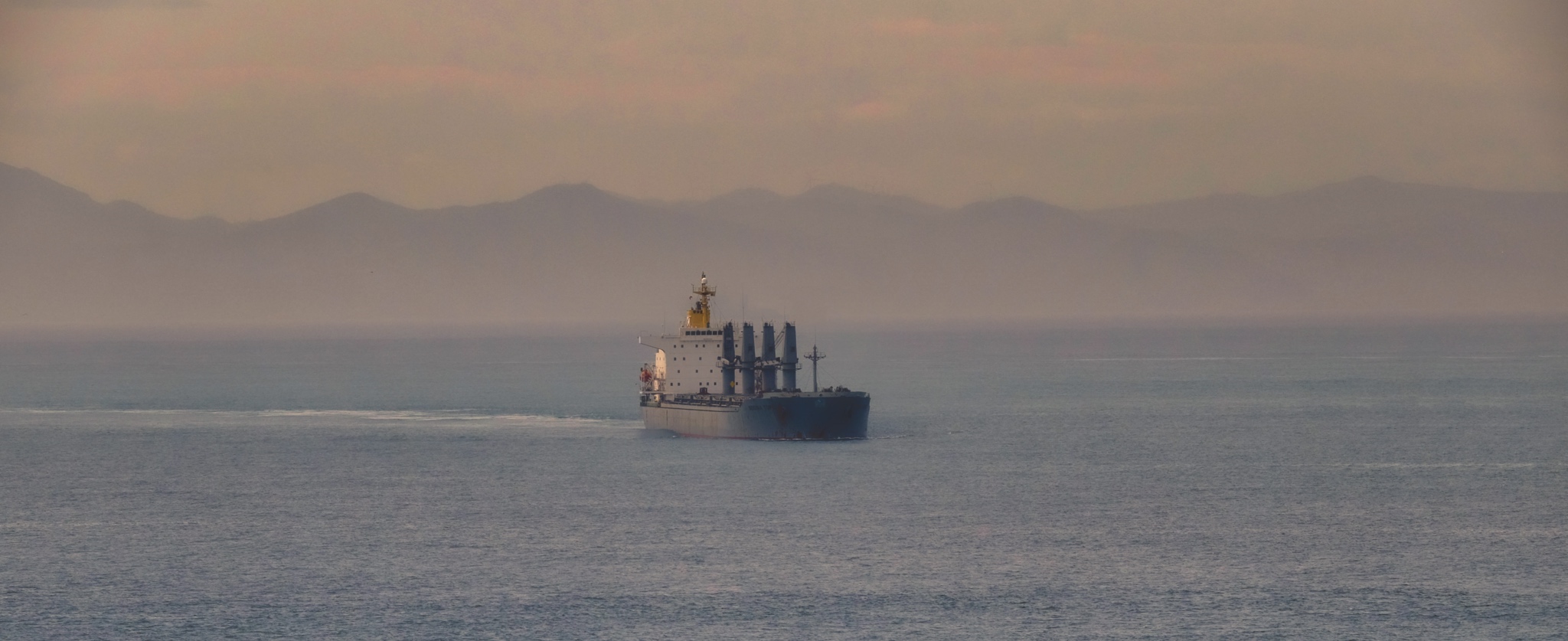 Gibraltar sits near the southern tip of Spain at the northern side of the Straight of Gibraltar. All ships that pass from the Mediterranean Sea to the Atlantic Ocean must pass through here. The North African coast can be seen across the Straight of Gibraltar.
Gibraltar sits near the southern tip of Spain at the northern side of the Straight of Gibraltar. All ships that pass from the Mediterranean Sea to the Atlantic Ocean must pass through here. The North African coast can be seen across the Straight of Gibraltar.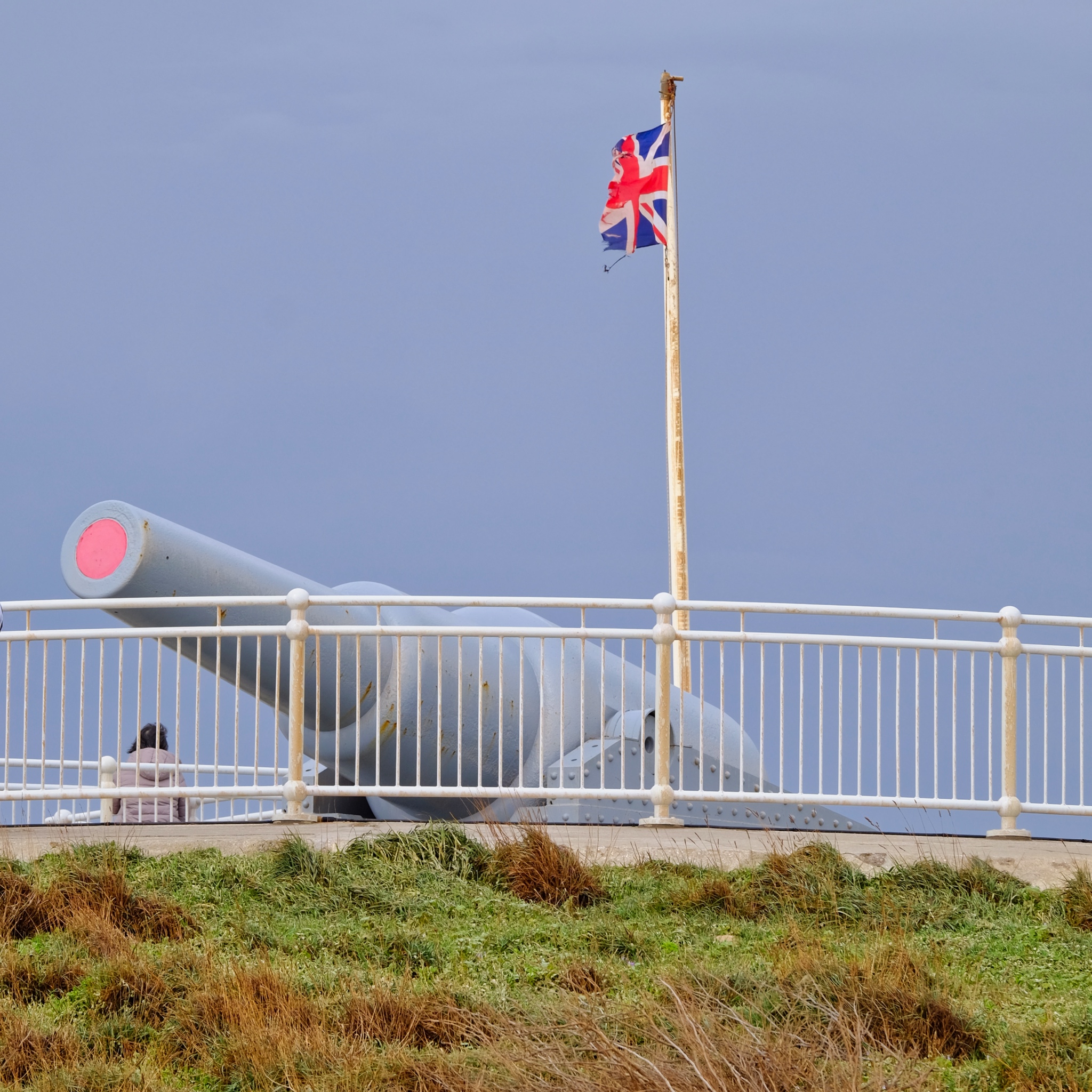 Gibraltar is a British territory . . . The residents recently voted 96% in favor of staying within the UK and not joining Spain . . . of course, they also voted 96% to stay within the EU during the Brexit vote!
Gibraltar is a British territory . . . The residents recently voted 96% in favor of staying within the UK and not joining Spain . . . of course, they also voted 96% to stay within the EU during the Brexit vote!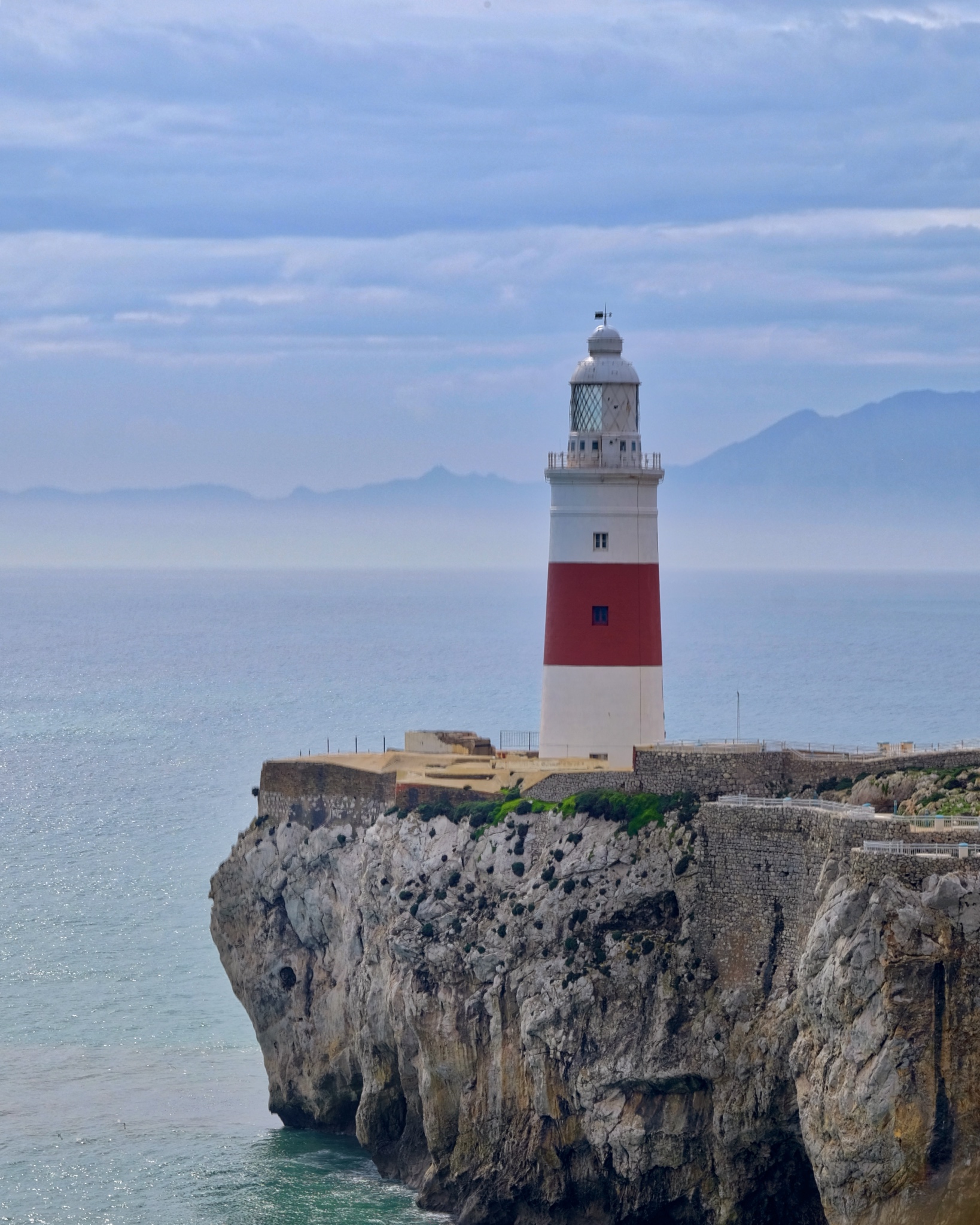 The lighthouse at the tip Gibraltar . . . this straight is also known as the Pillars of Hercules by the Greeks.
The lighthouse at the tip Gibraltar . . . this straight is also known as the Pillars of Hercules by the Greeks.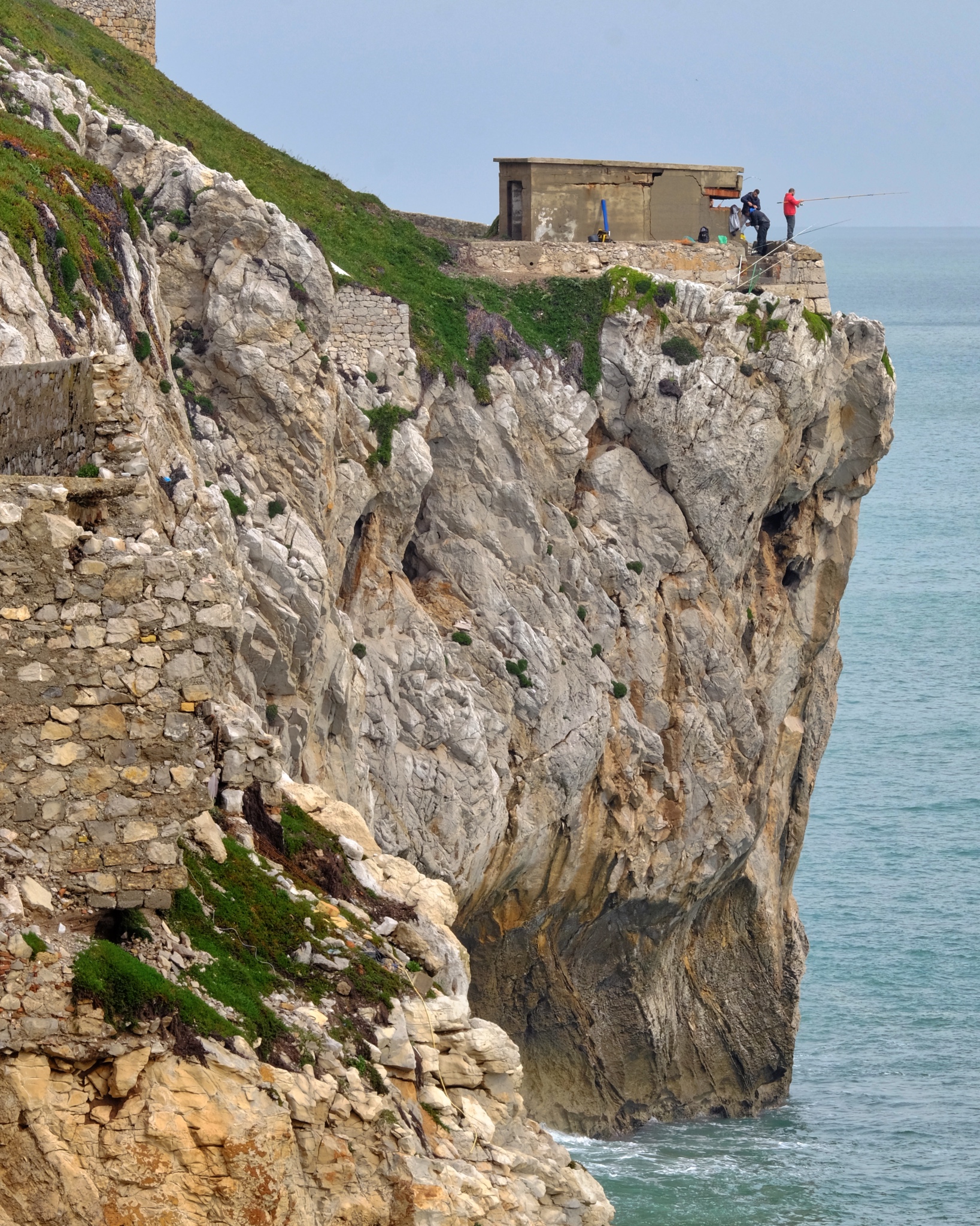 The 'rock' of Gibraltar falls directly into the Mediterranean Sea on the eastern side. Fishermen find good use of an old war pill box.
The 'rock' of Gibraltar falls directly into the Mediterranean Sea on the eastern side. Fishermen find good use of an old war pill box.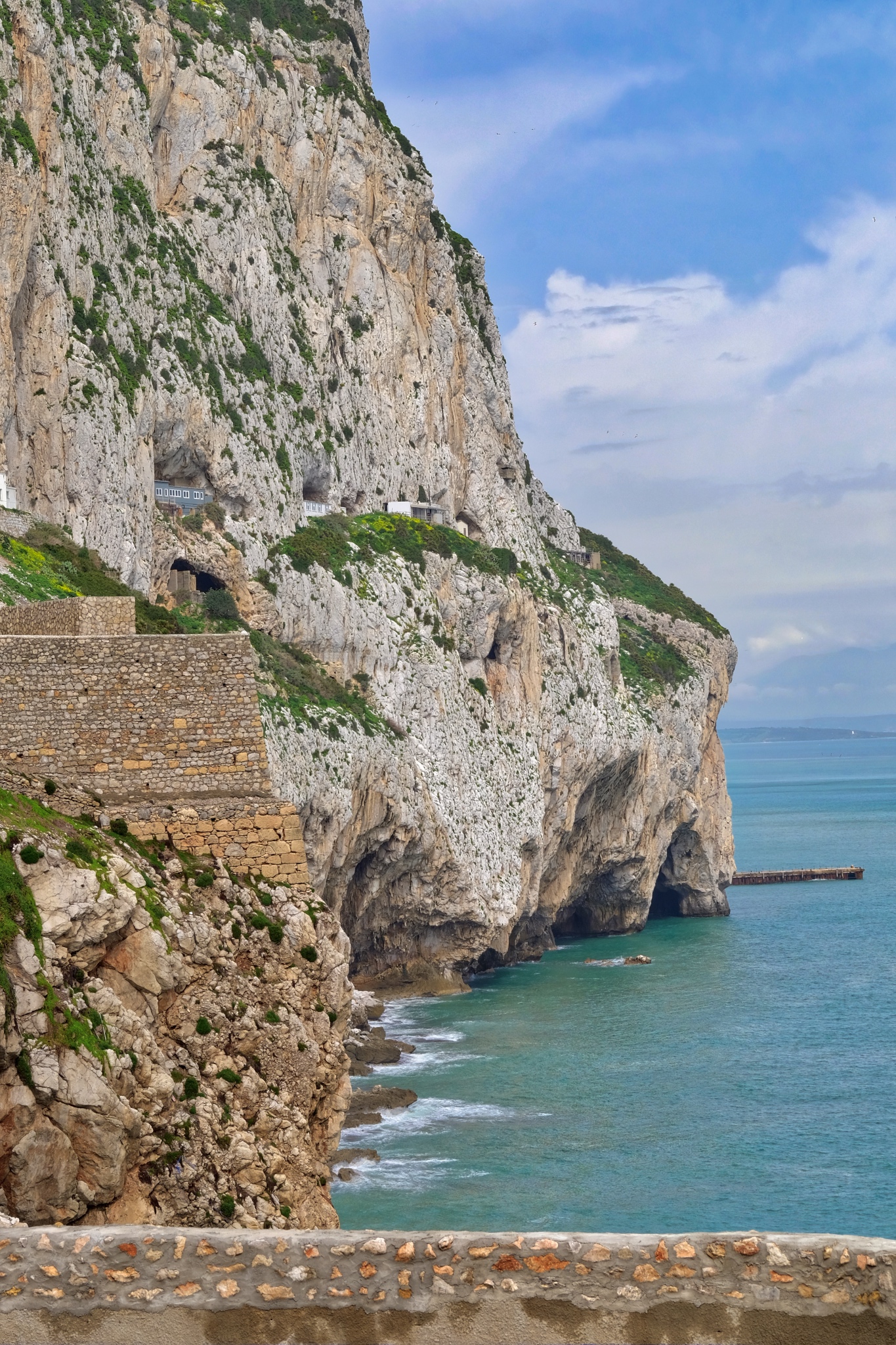 The cliffs of Gibraltar are compelling: their sheer size . . . and the remnants of structures left behind by the many former occupants over the millennia, draws the eye.
The cliffs of Gibraltar are compelling: their sheer size . . . and the remnants of structures left behind by the many former occupants over the millennia, draws the eye.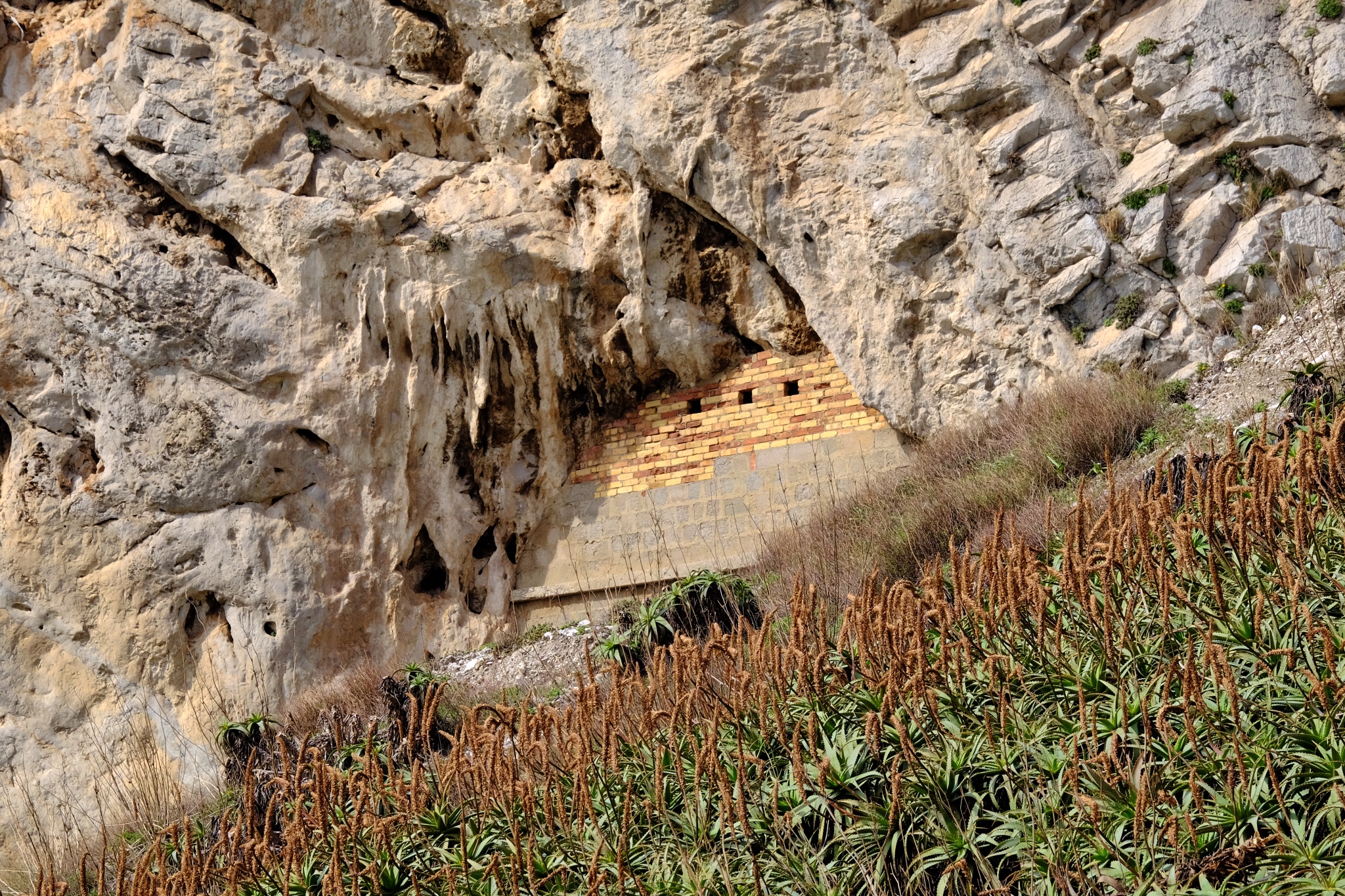 The whole of the rock is riddled with passages and tunnels used as fortified defensive emplacements.
The whole of the rock is riddled with passages and tunnels used as fortified defensive emplacements.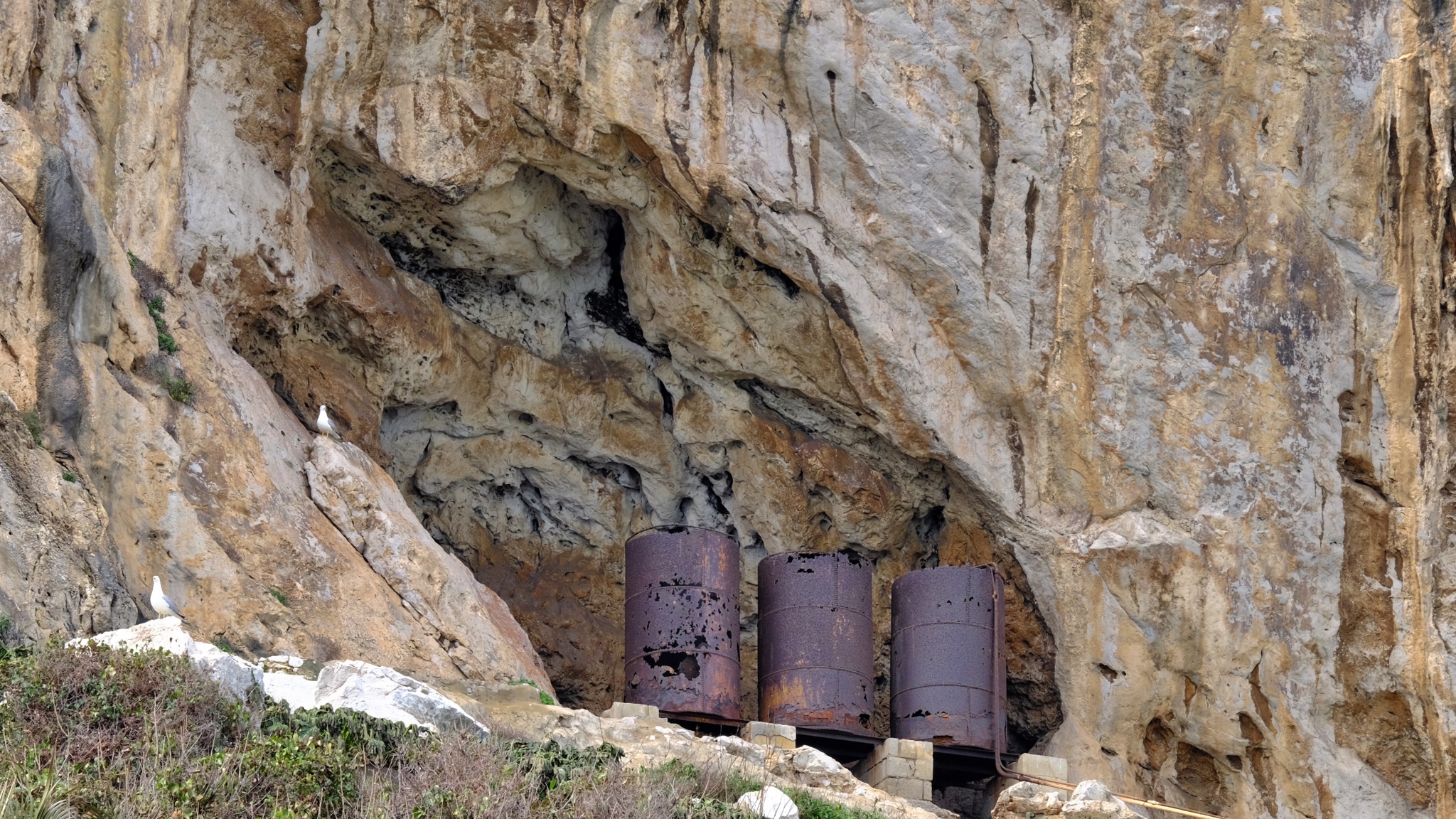 Some very old infrastructure left behind by a long forgotten project.
Some very old infrastructure left behind by a long forgotten project.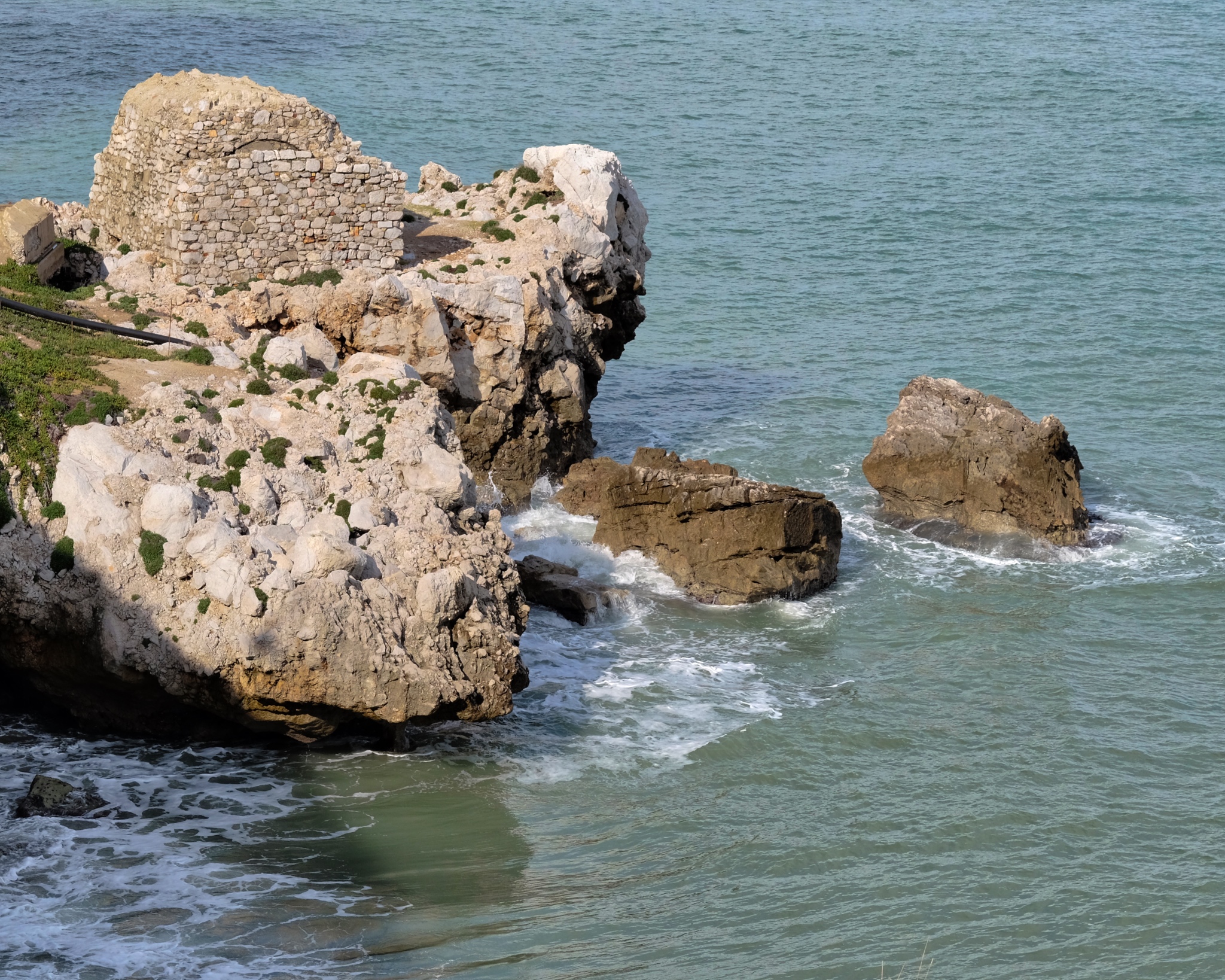 Everywhere a remnant of some previous occupier . . . Moorish?
Everywhere a remnant of some previous occupier . . . Moorish?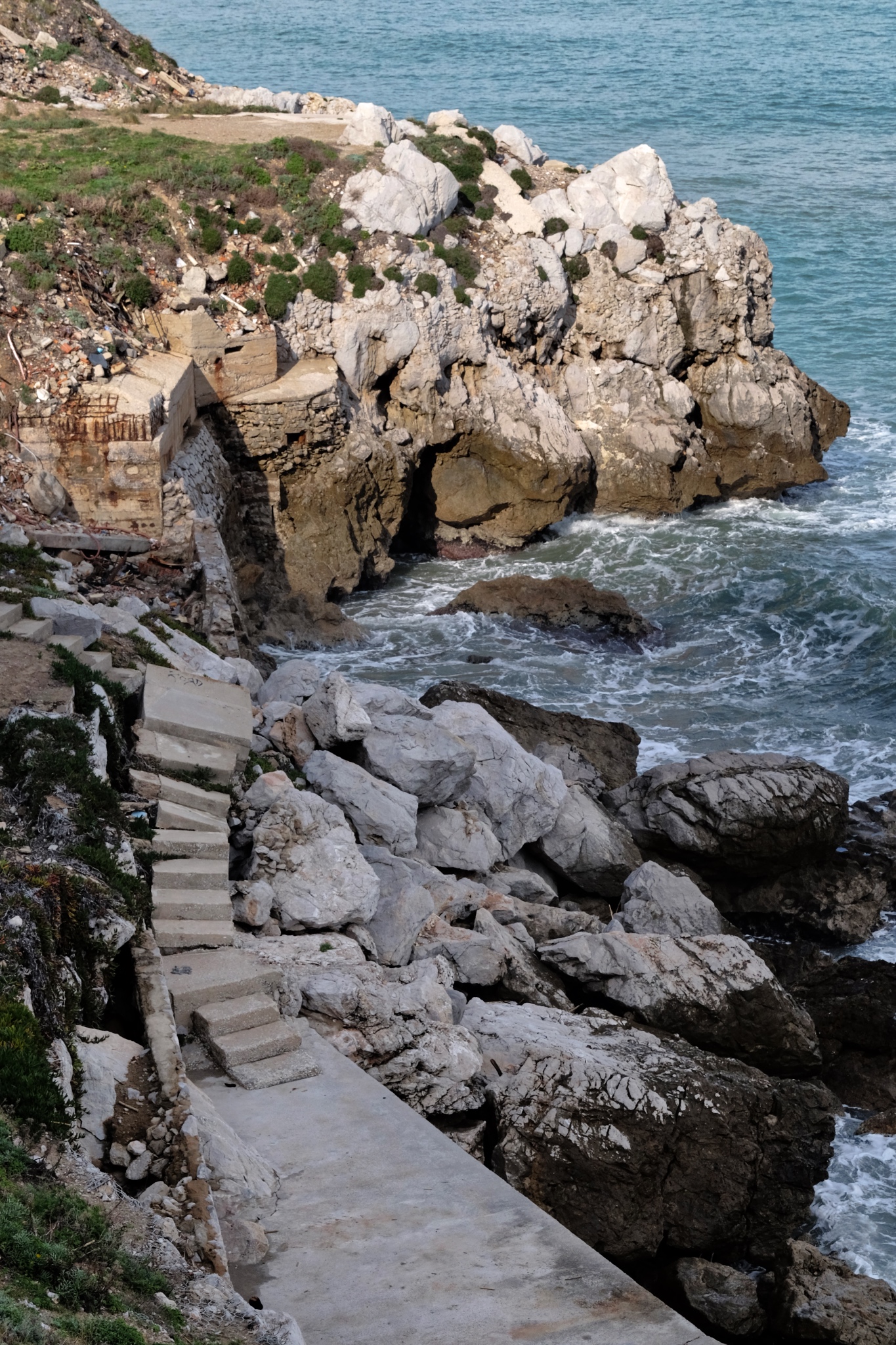 Many different building traces from many different eras all overlapping . . . . Gibraltar was occupied, at various times from 950BC, by the Phoneticians, Greeks, Carthaginians, Romans, Vandals, Goths, Visigoths, Moors, Nasrids, Medinas, Dutch, Spanish, and ultimately, the British.
Many different building traces from many different eras all overlapping . . . . Gibraltar was occupied, at various times from 950BC, by the Phoneticians, Greeks, Carthaginians, Romans, Vandals, Goths, Visigoths, Moors, Nasrids, Medinas, Dutch, Spanish, and ultimately, the British.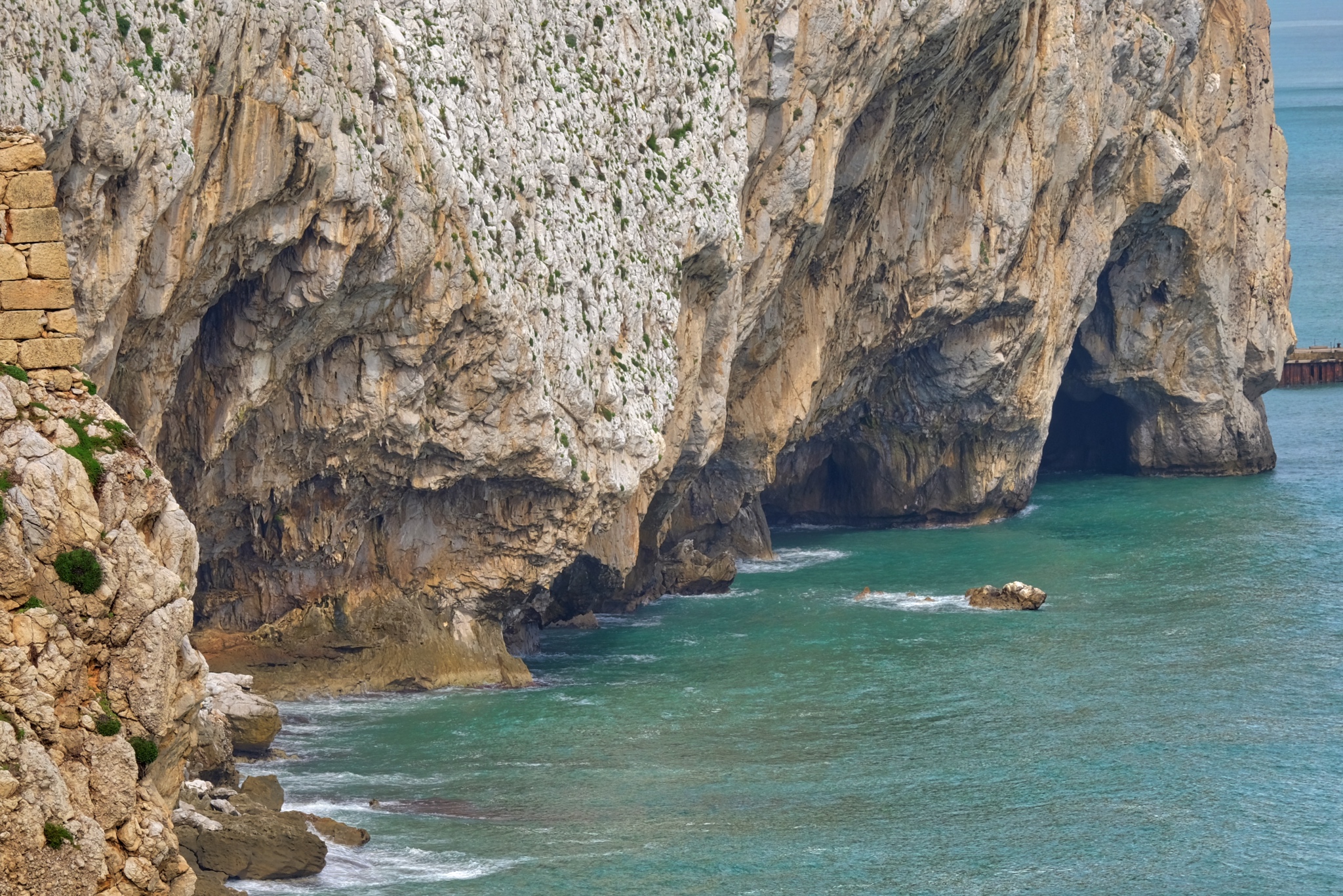 Near here, in Gorham's Cave, Neanderthal remains were found dating to 55,000 years ago.
Near here, in Gorham's Cave, Neanderthal remains were found dating to 55,000 years ago.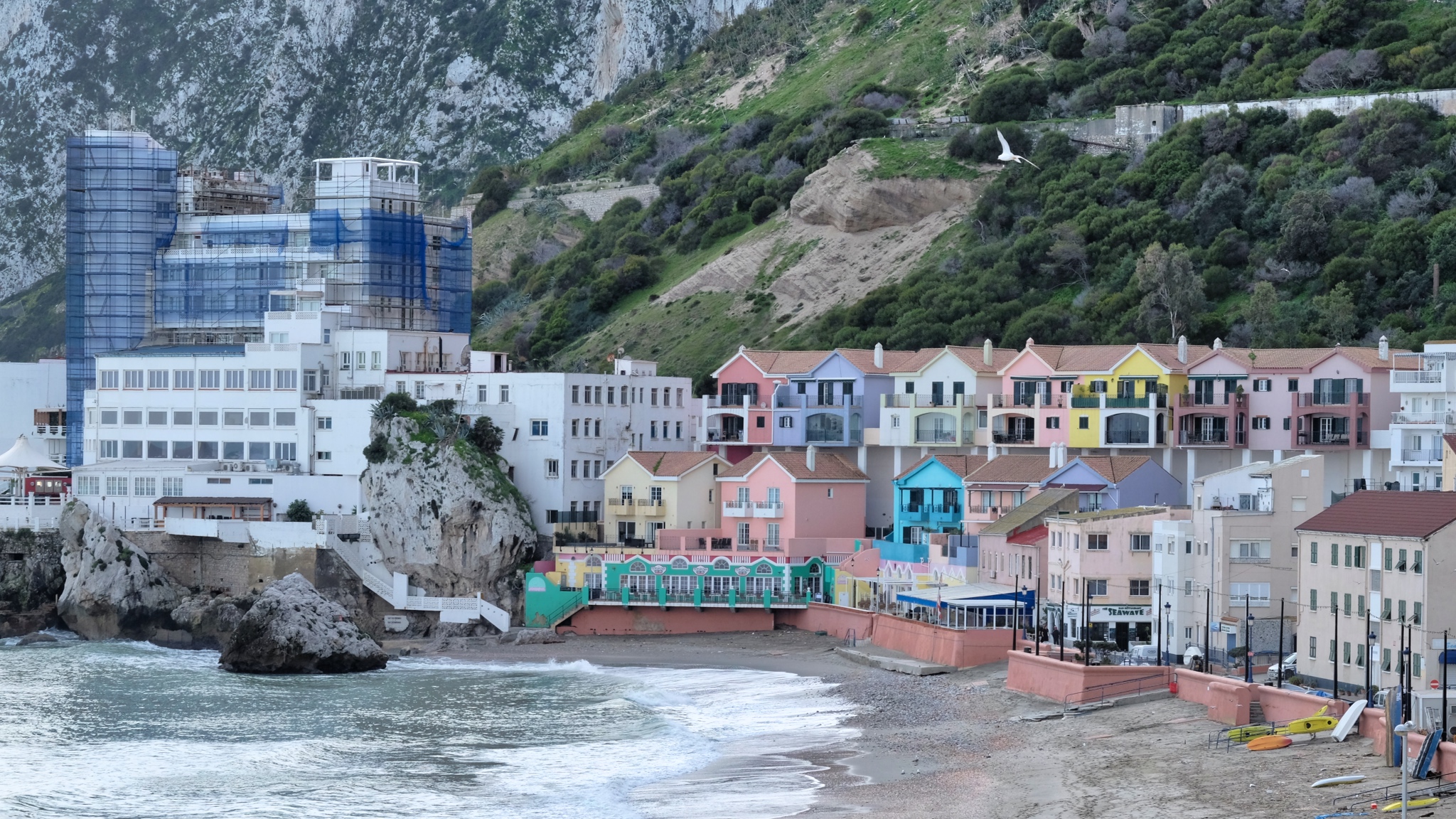 Today, Gibraltar is a Mecca for Mediterranean cruise ships and British retirees (pensioners).
Today, Gibraltar is a Mecca for Mediterranean cruise ships and British retirees (pensioners).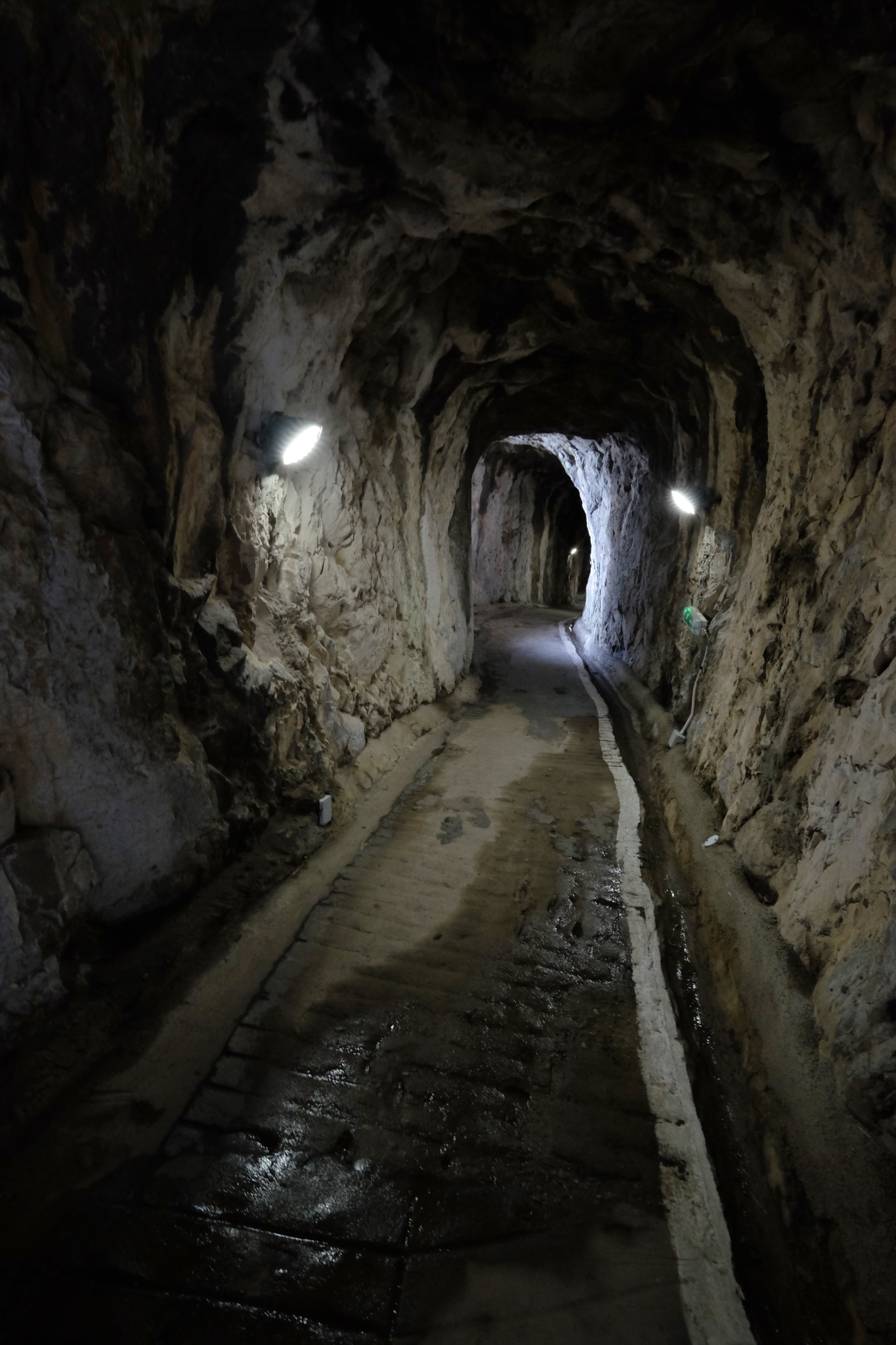 The Rock of Gibraltar is as riddled with caves and tunnels as a block of Swiss cheese. The massive rock was the ideal place to build hardened shelters during times of war, particularly during WWI and WWII. These tunnels date to even before those times when the British and the Spanish were at constant conflict.
The Rock of Gibraltar is as riddled with caves and tunnels as a block of Swiss cheese. The massive rock was the ideal place to build hardened shelters during times of war, particularly during WWI and WWII. These tunnels date to even before those times when the British and the Spanish were at constant conflict.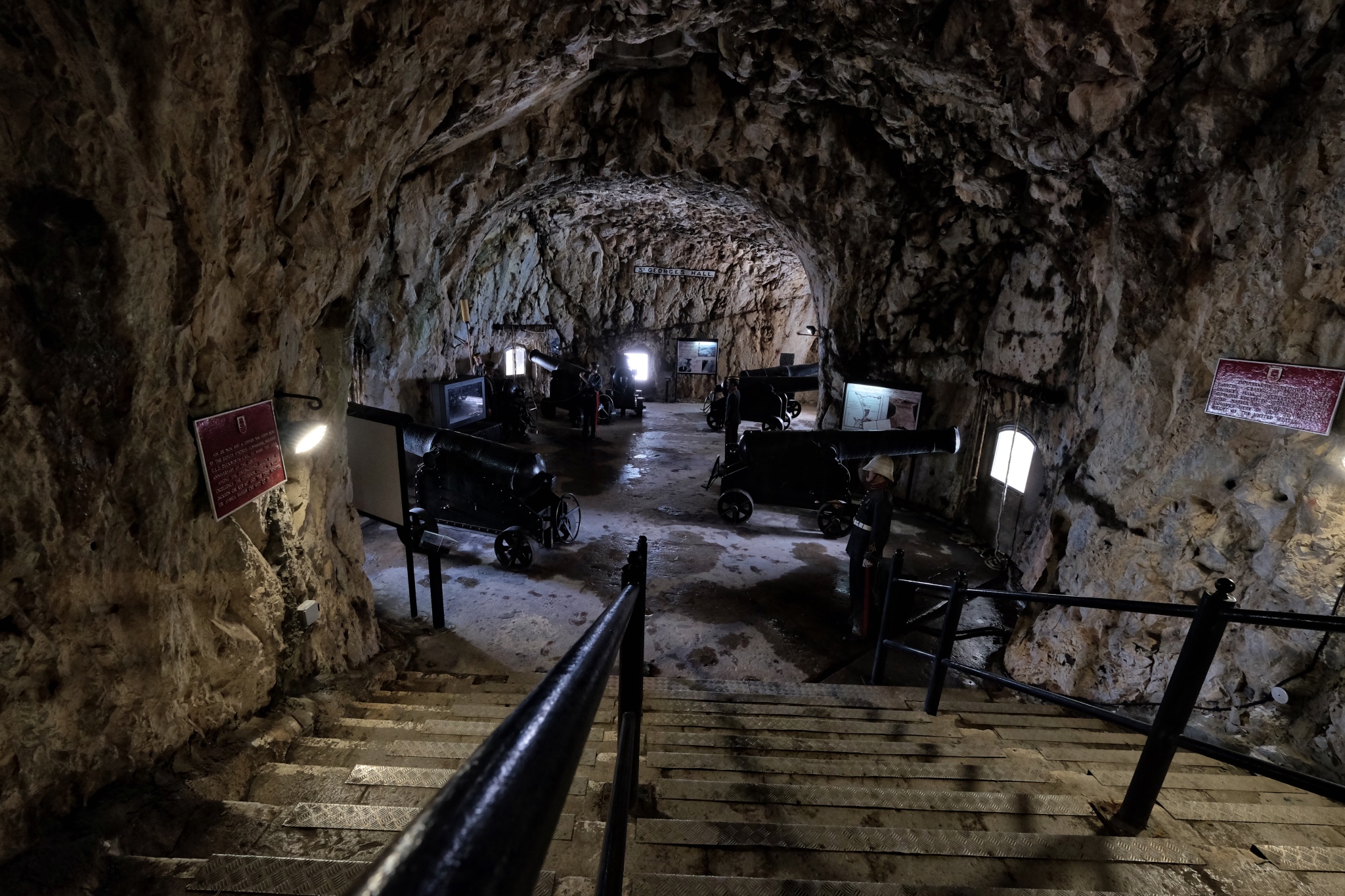 The St. George Tunnel is still equipped with the original cannon from the era.
The St. George Tunnel is still equipped with the original cannon from the era.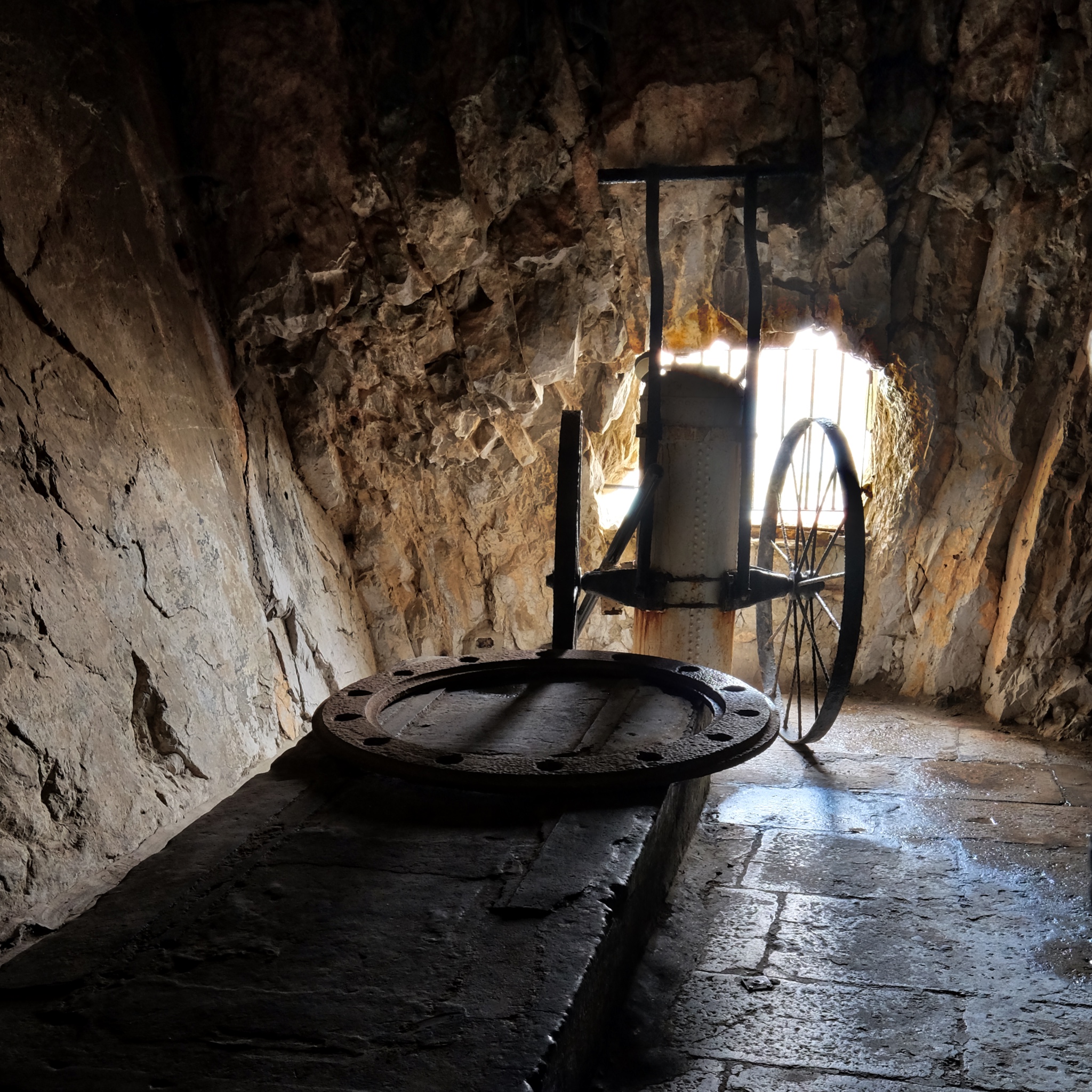 Although the cannon is missing, the turret and fire safety cart remains.
Although the cannon is missing, the turret and fire safety cart remains.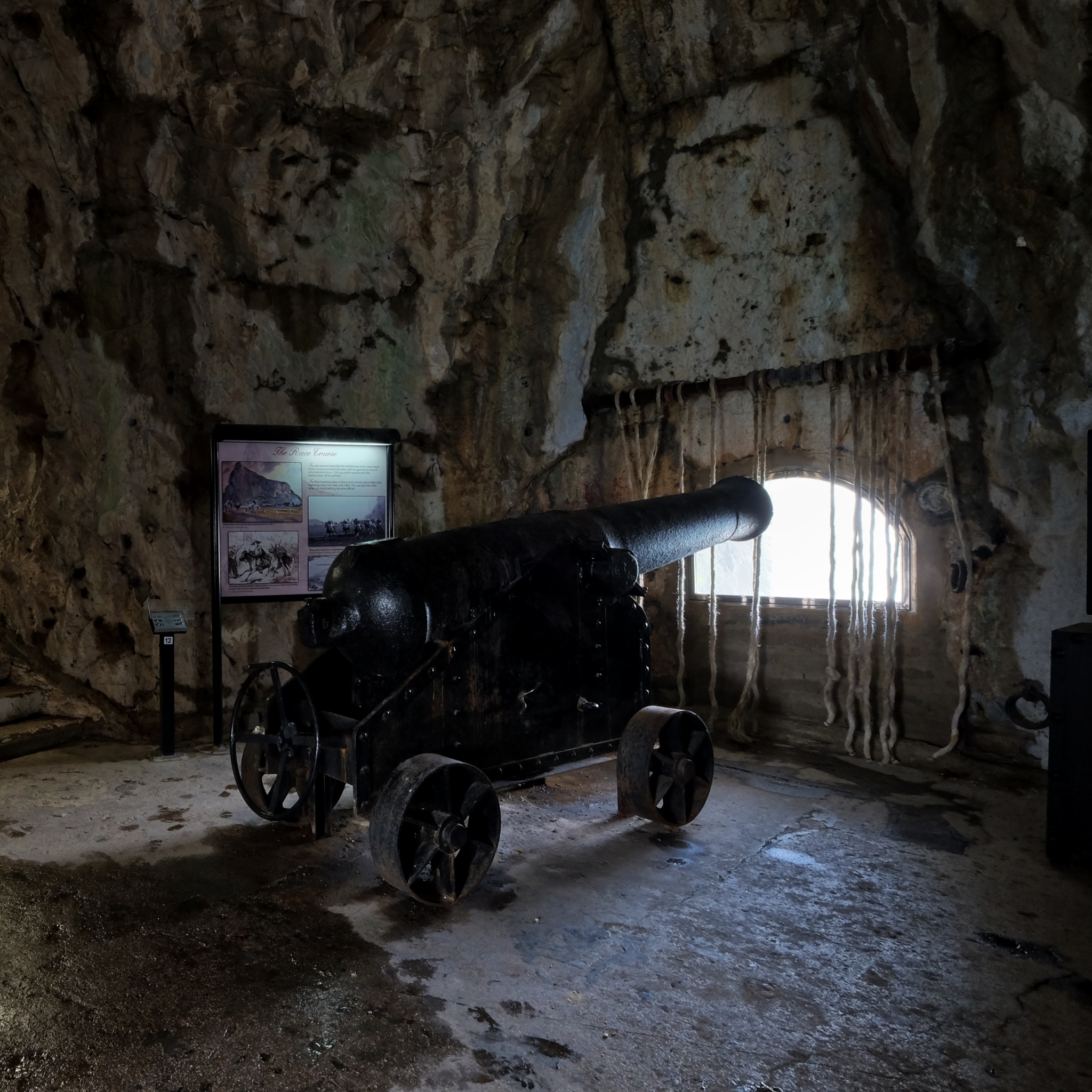 The historical placards were very informative and made the tunnel visit very interesting.
The historical placards were very informative and made the tunnel visit very interesting.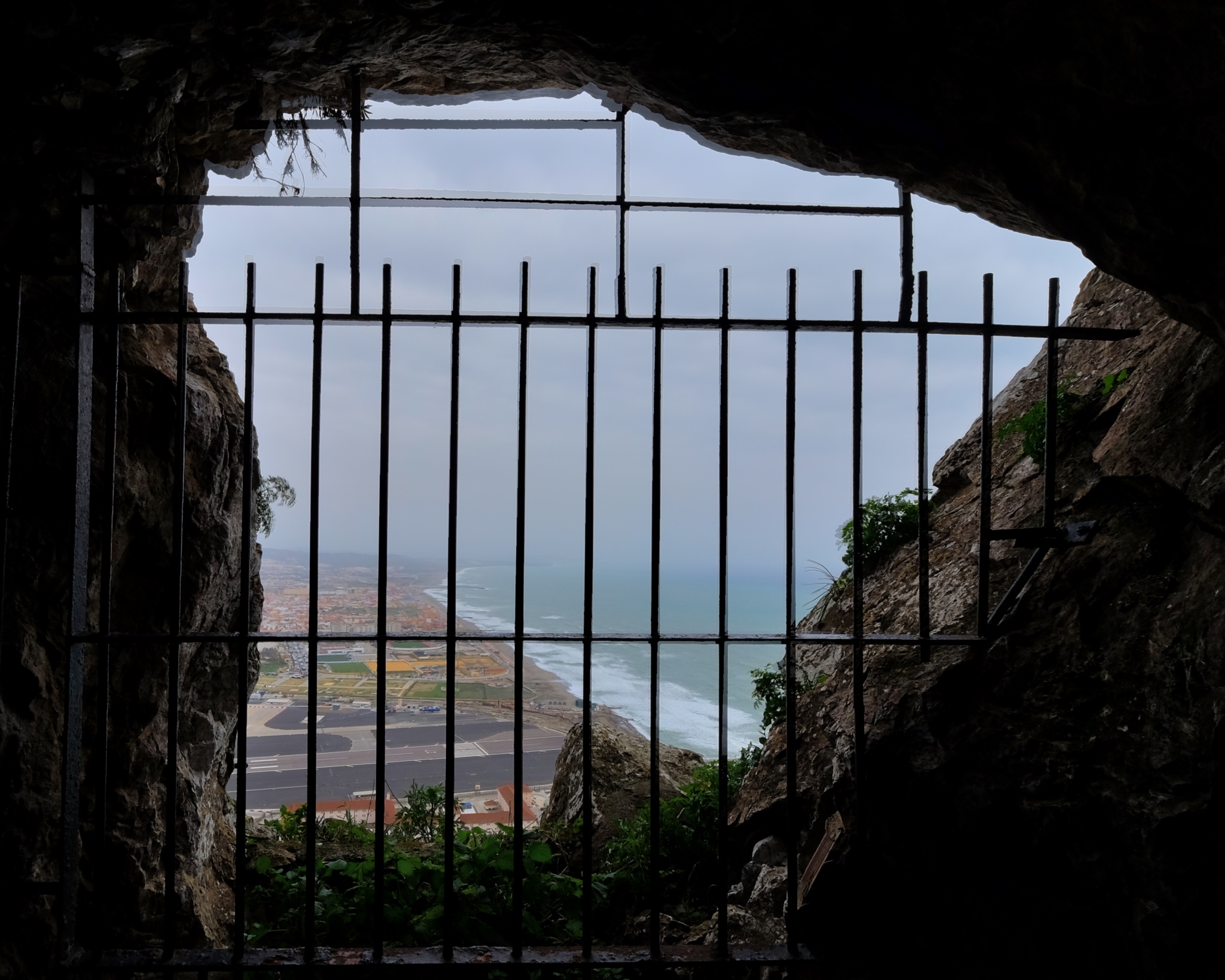 This view from a cannon emplacement is testimony to the strategic importance of these tunnels.
This view from a cannon emplacement is testimony to the strategic importance of these tunnels.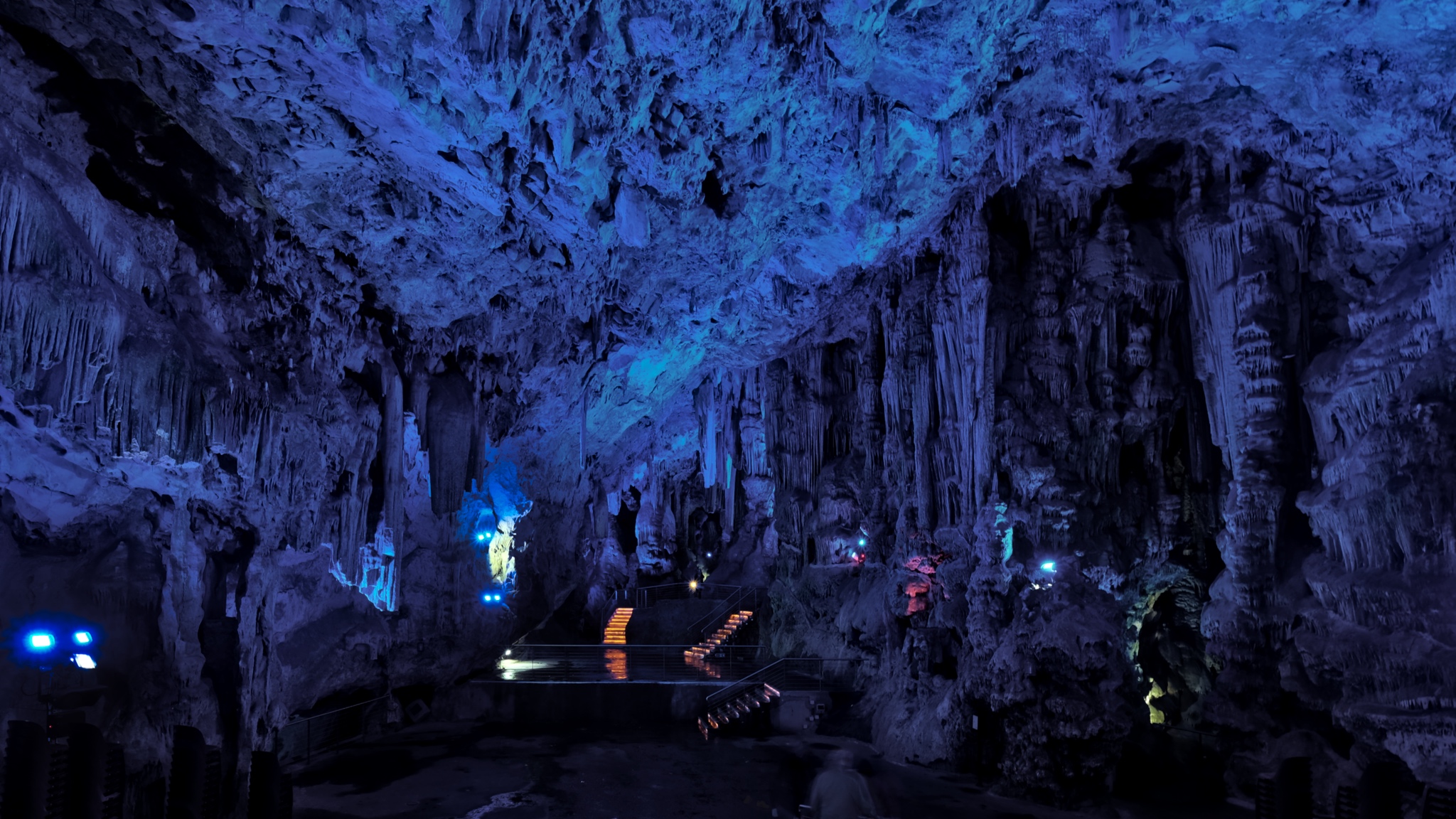 In addition to the military tunnels, there are also natural caves in the Rock of Gibraltar. For a nominal fee, you were treated to giant caverns lit by an ever-changing Xmas tree light.
In addition to the military tunnels, there are also natural caves in the Rock of Gibraltar. For a nominal fee, you were treated to giant caverns lit by an ever-changing Xmas tree light.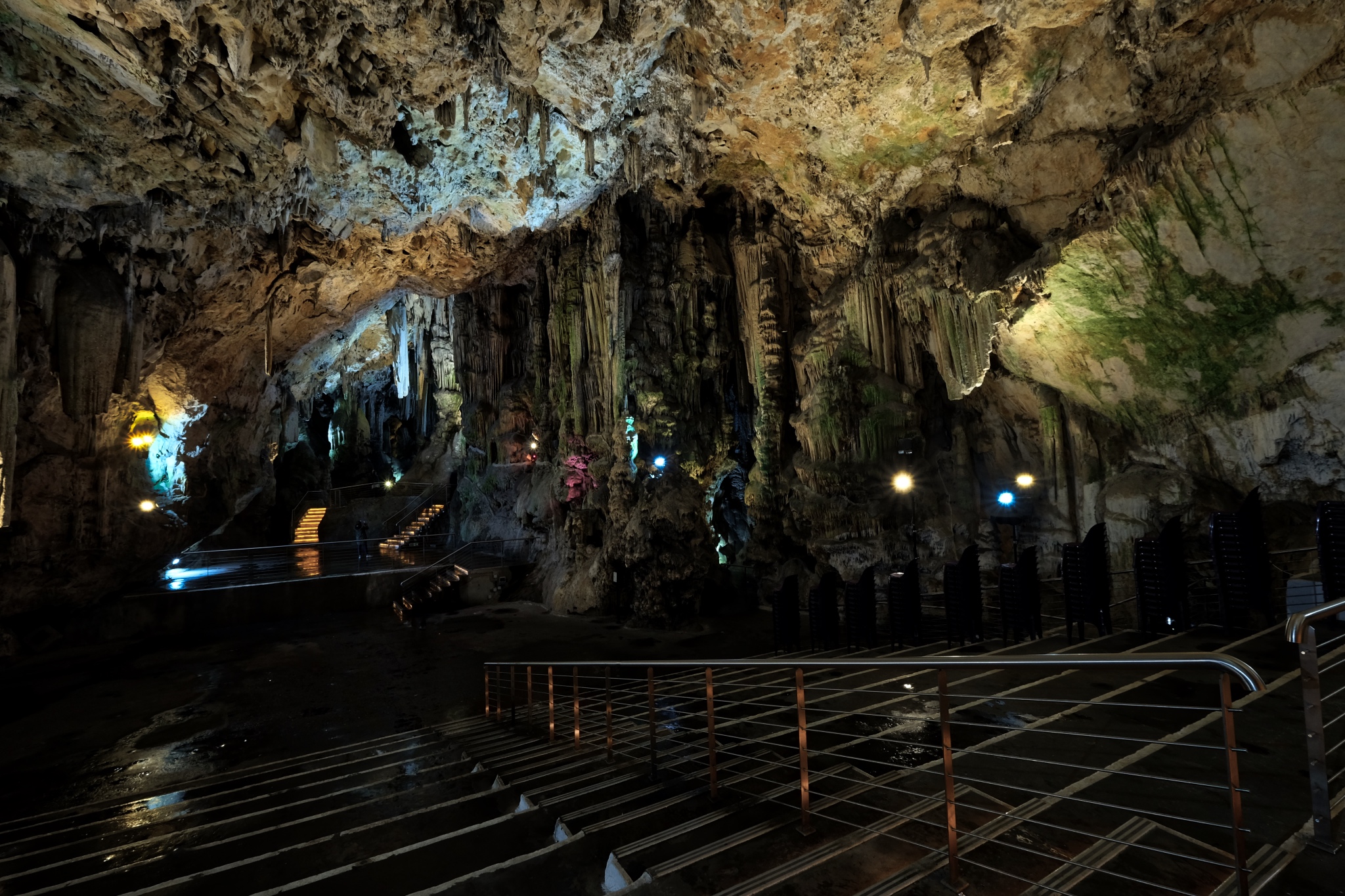 It appeared that they must hold musical events inside the cavern from time to time.
It appeared that they must hold musical events inside the cavern from time to time.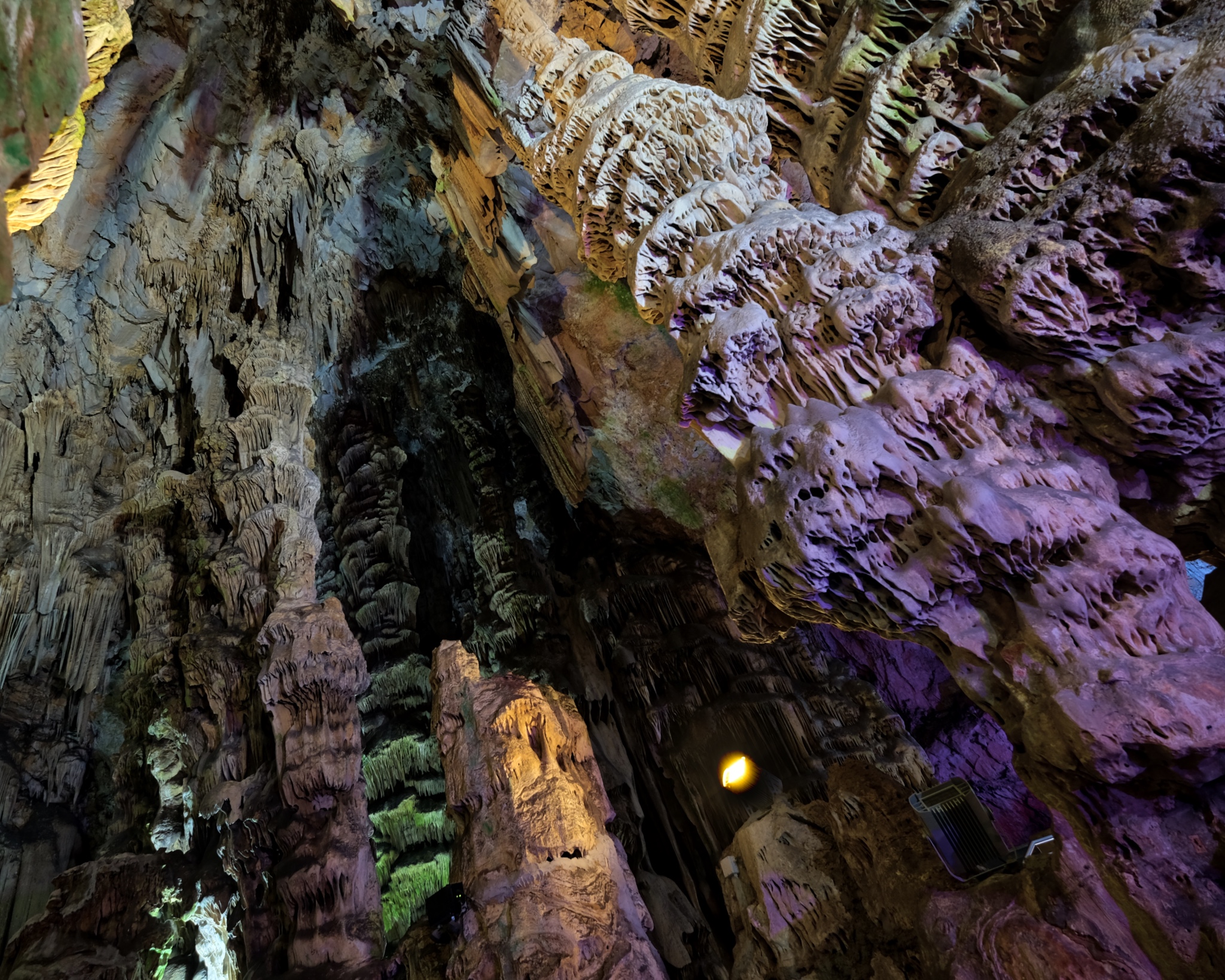 A very beautiful place indeed.
A very beautiful place indeed.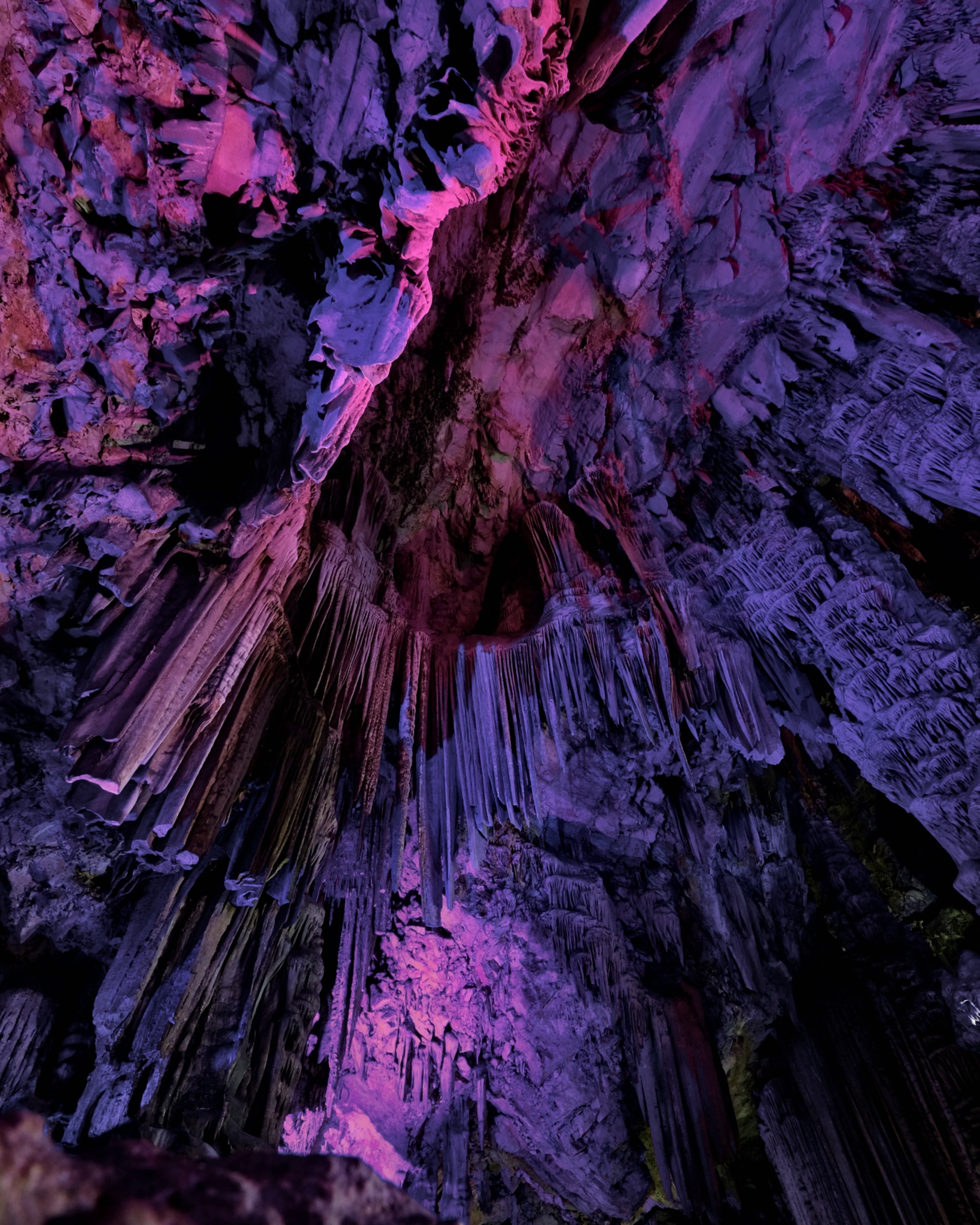 The colored lights grew on you after a while.
The colored lights grew on you after a while.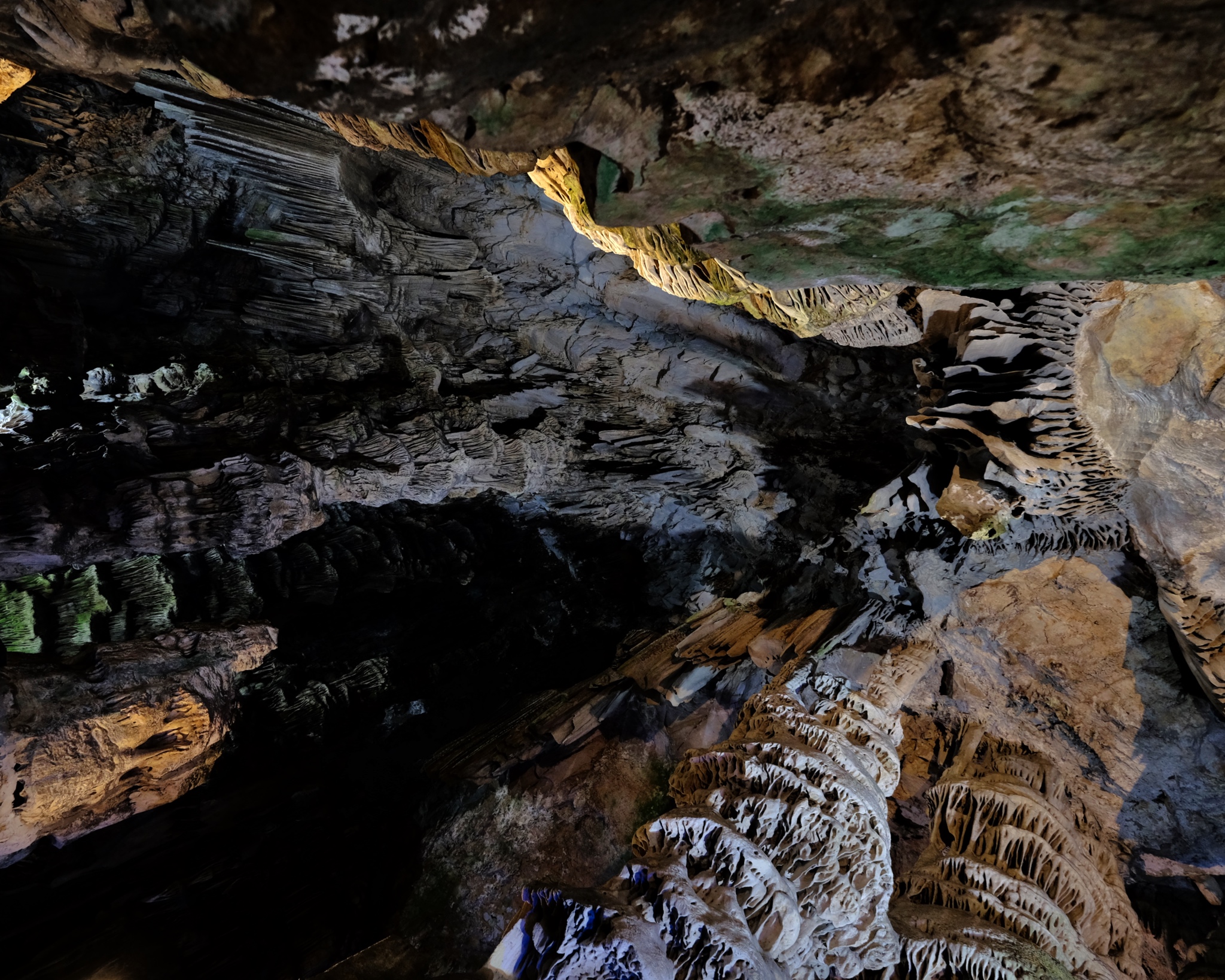 We enjoyed our walk-through of the caves. When we emerged were greeted by . . .
We enjoyed our walk-through of the caves. When we emerged were greeted by . . .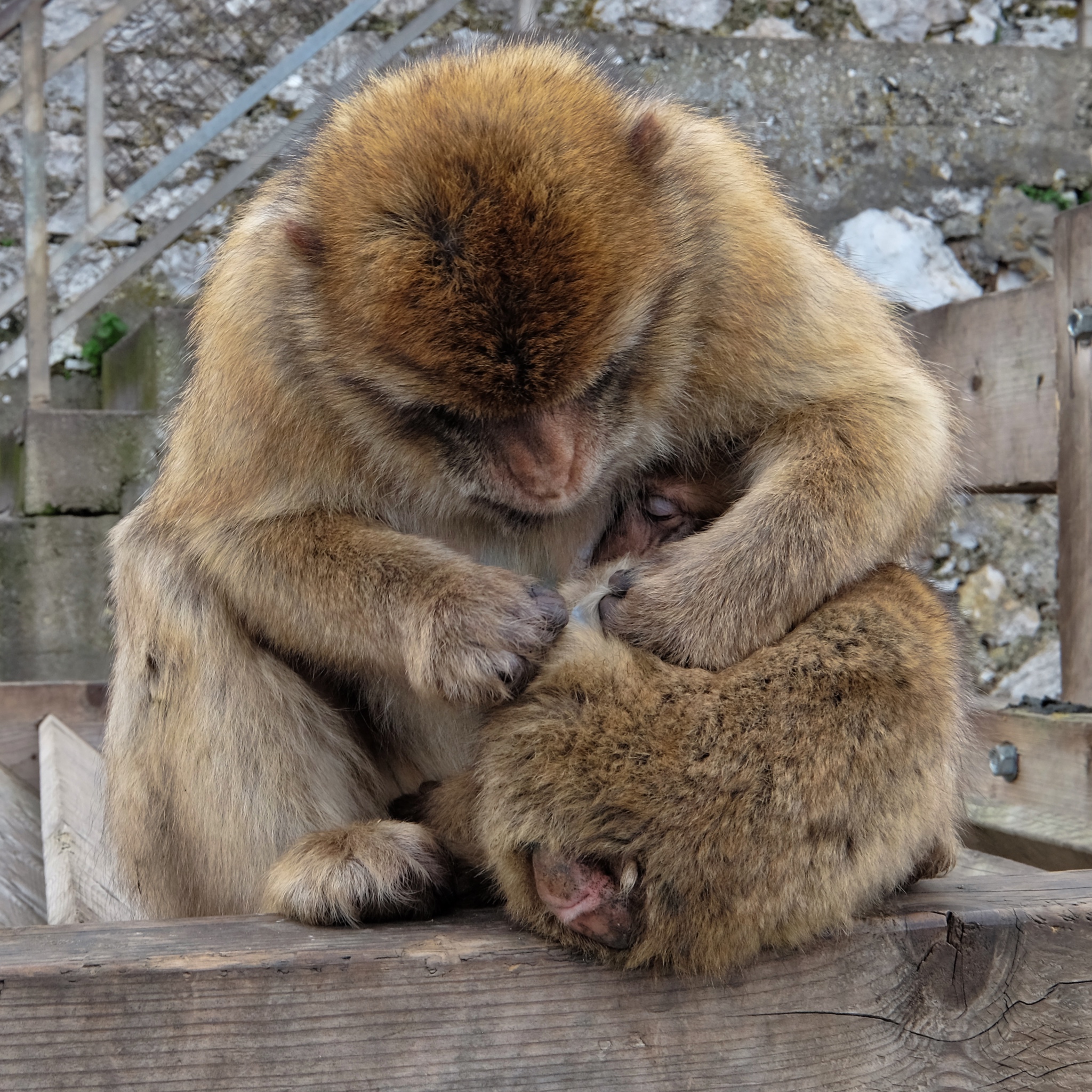 Monkeys! Lots of monkeys! We were warned about the monkeys . . . that they were little pickpockets! One does not associate monkeys with Europe . . . but there you are!
Monkeys! Lots of monkeys! We were warned about the monkeys . . . that they were little pickpockets! One does not associate monkeys with Europe . . . but there you are!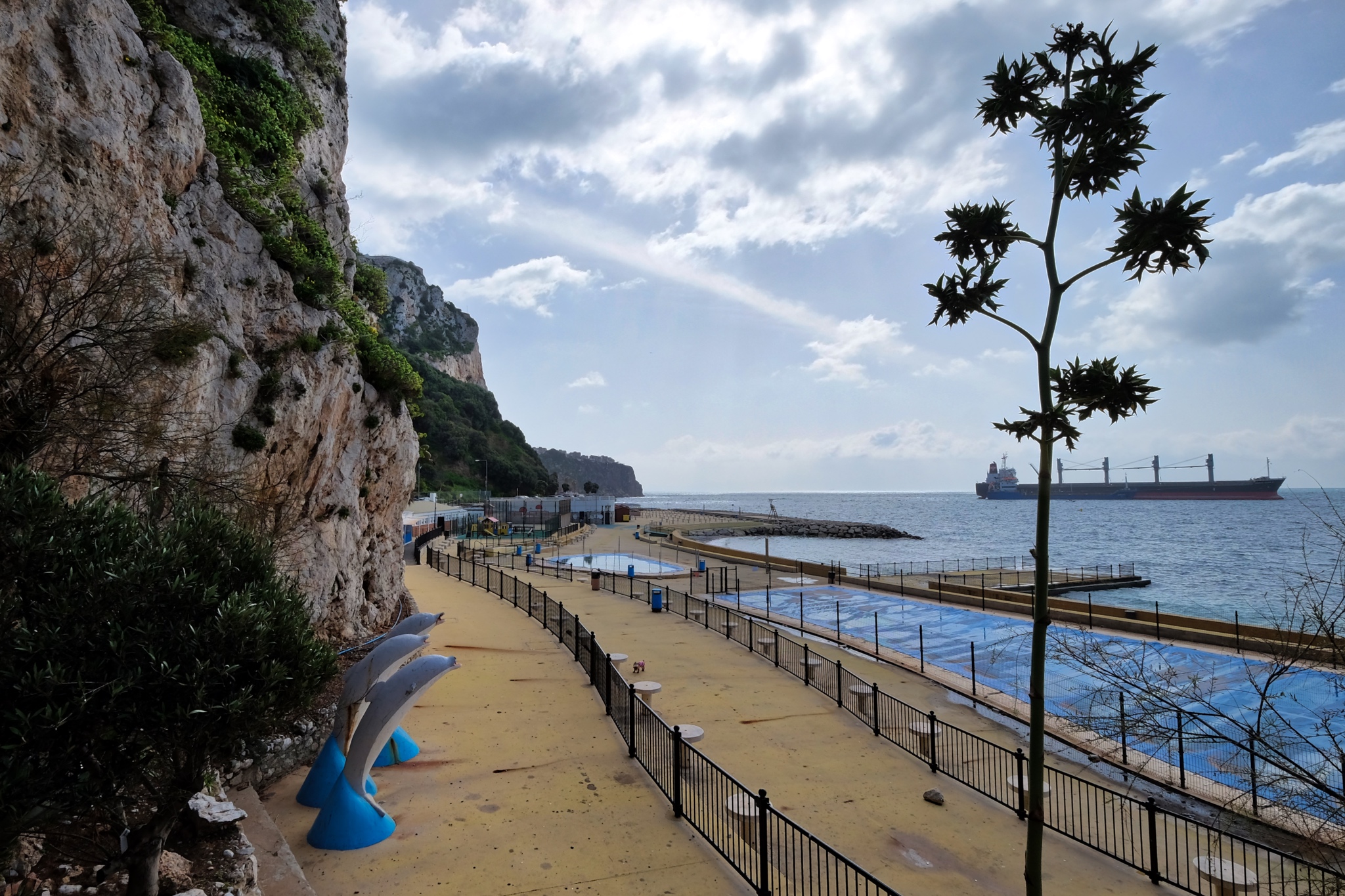
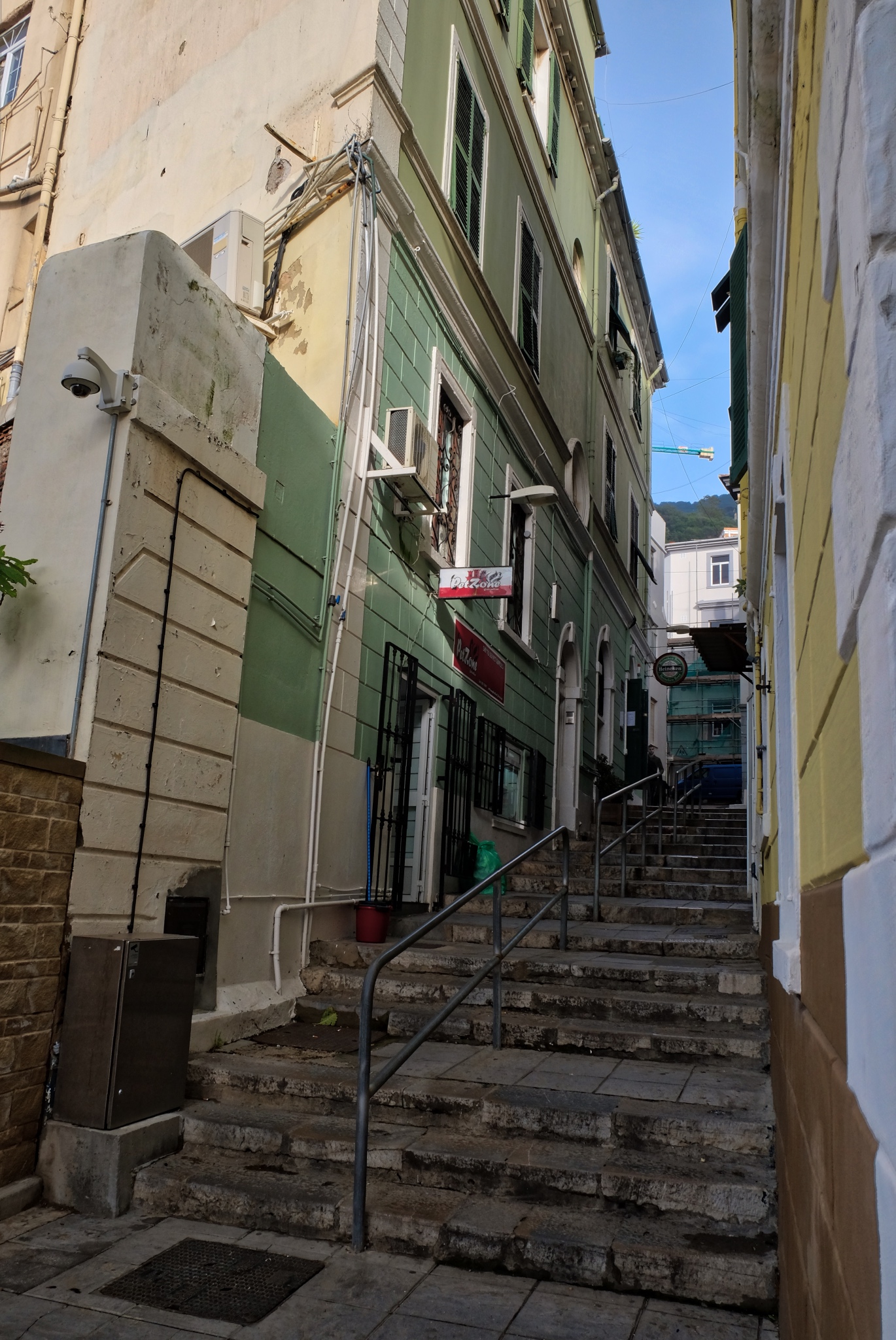 Gibraltar is, of course, built on the side of a big rock with little flat ground. As such, the streets and alleys are often just steep stairs.
Gibraltar is, of course, built on the side of a big rock with little flat ground. As such, the streets and alleys are often just steep stairs.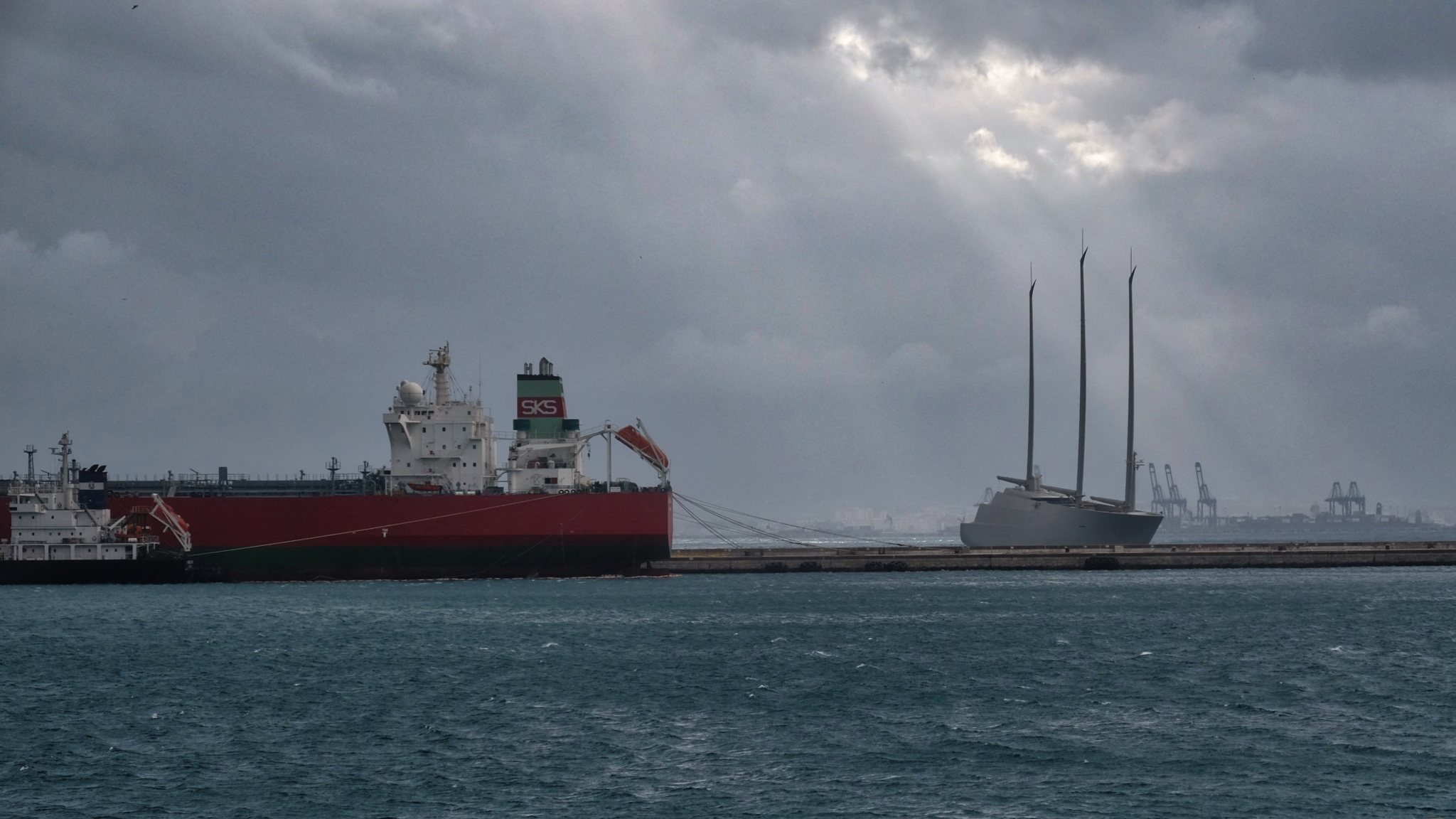 Gibraltar is also a port city . . . and a place for a 'mystery Russian' to came and try for sea trials and licensing of a stealth sailing ship. This Dark Boat was the talk of the town's permanent residents. It was gone in the morning.
Gibraltar is also a port city . . . and a place for a 'mystery Russian' to came and try for sea trials and licensing of a stealth sailing ship. This Dark Boat was the talk of the town's permanent residents. It was gone in the morning.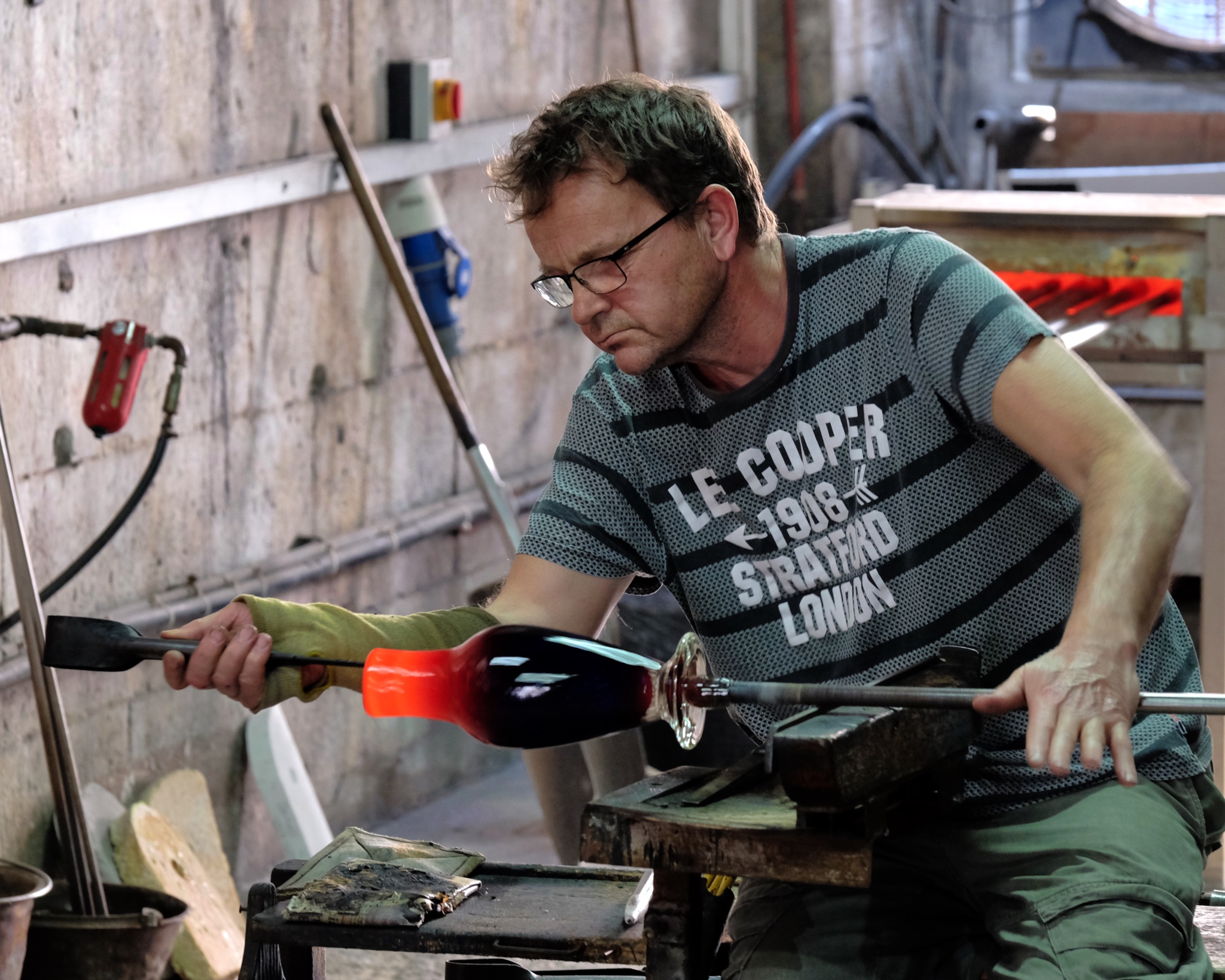 There are craft shops open to the public. Here a famous glassblower plys his trade.
There are craft shops open to the public. Here a famous glassblower plys his trade.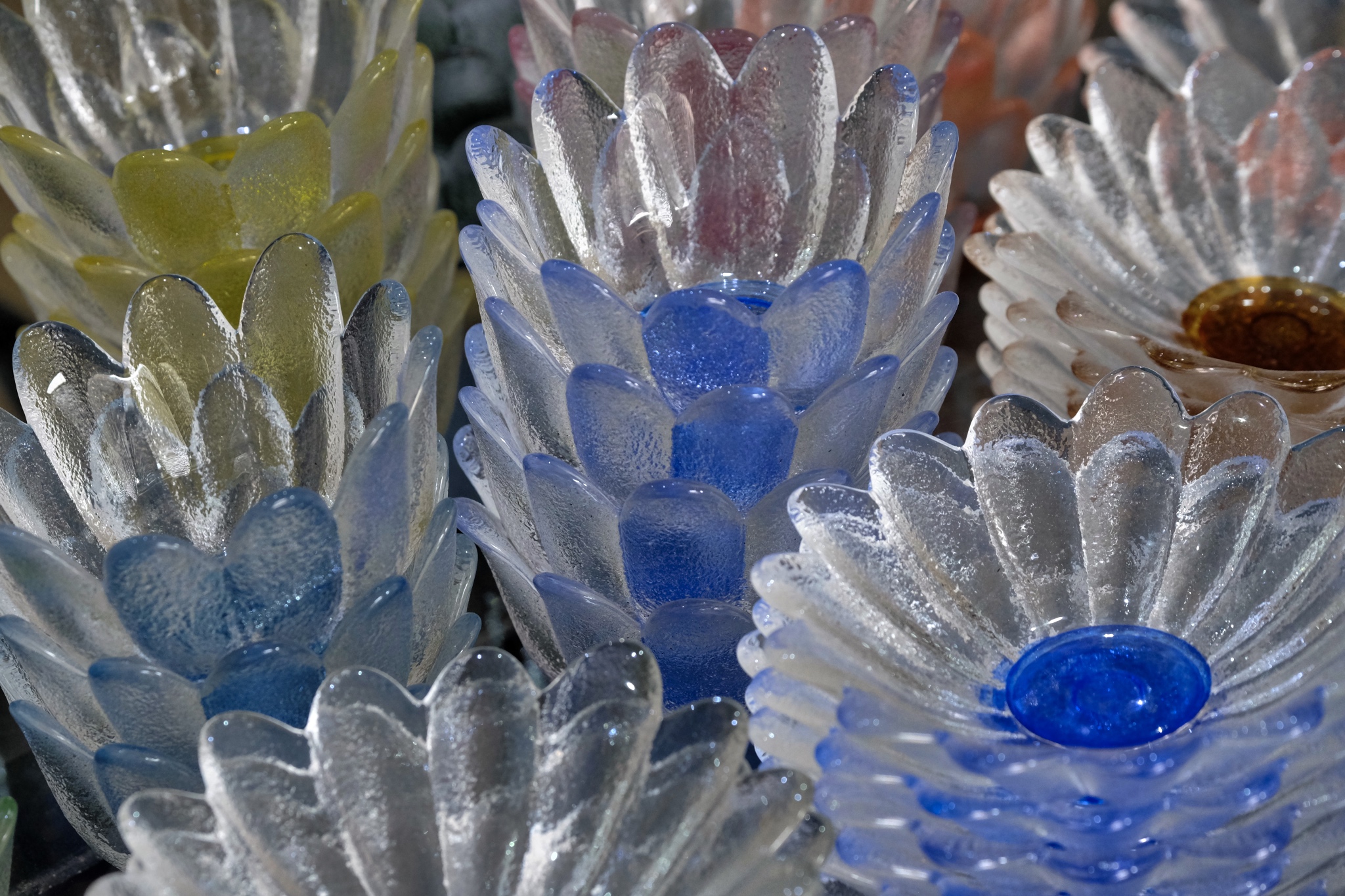 Beautiful work too . . .
Beautiful work too . . .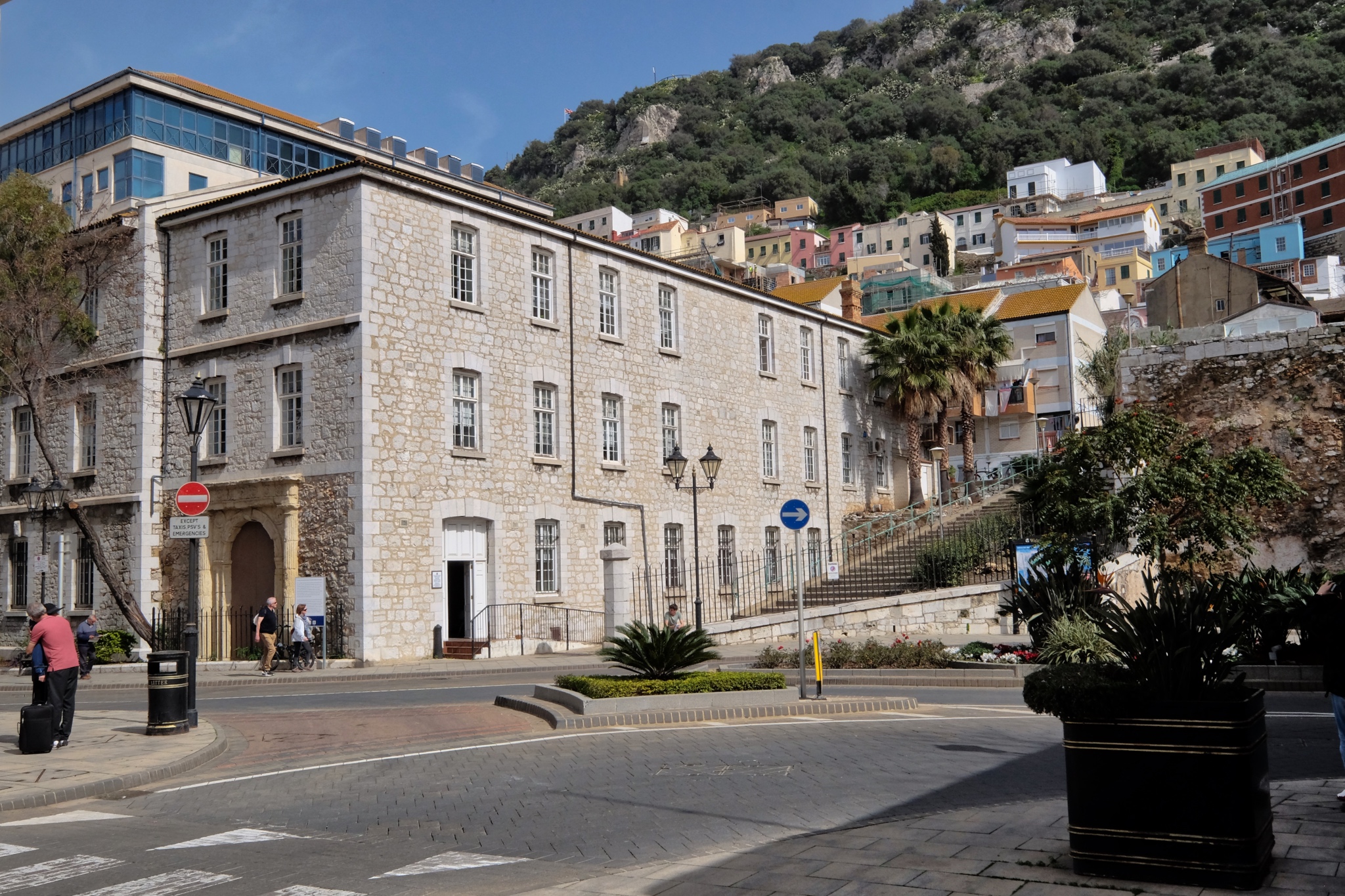 Gibraltar town sits fast against the famous 'Rock.'
Gibraltar town sits fast against the famous 'Rock.'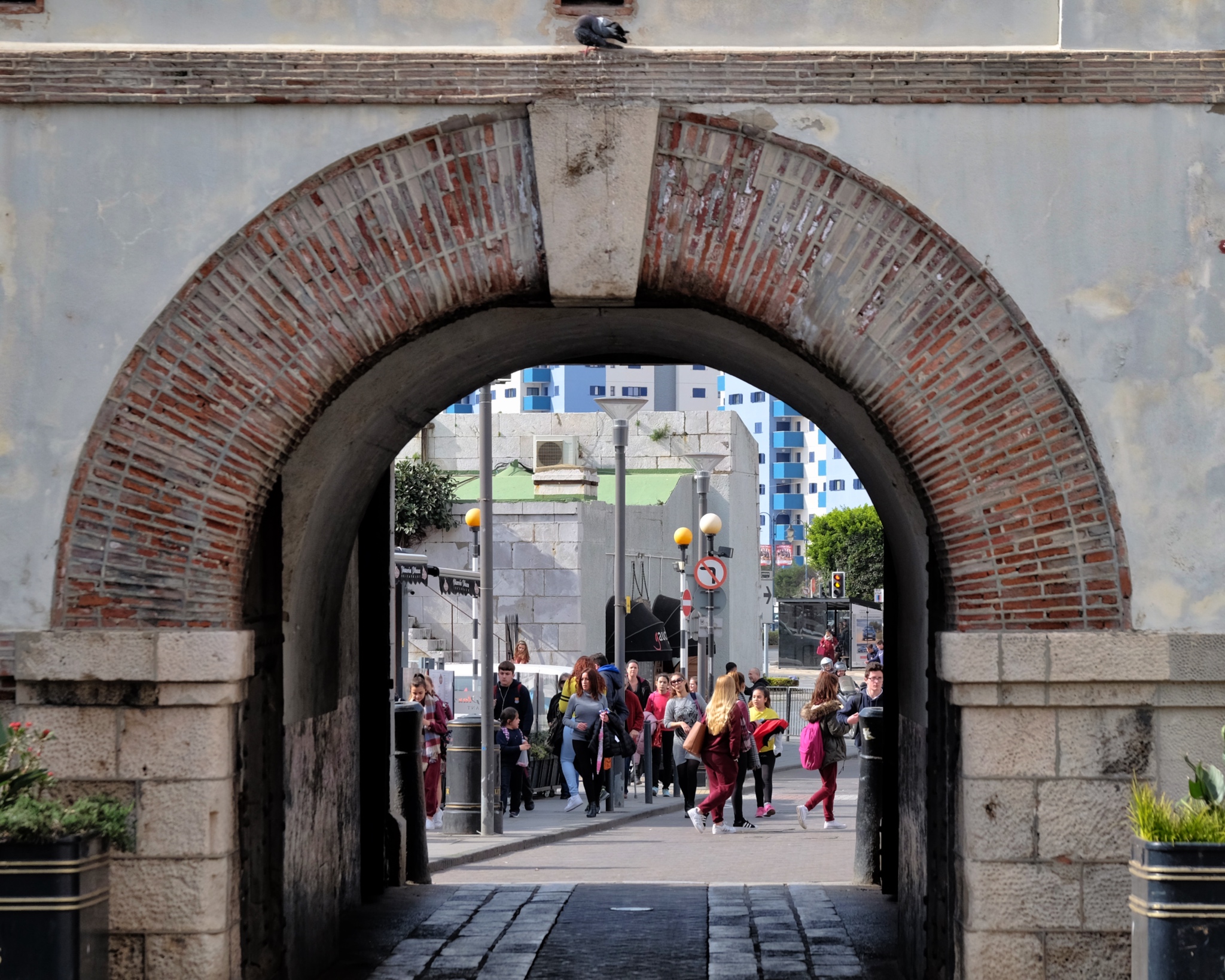 The south city gate . . . already a few tourists mixed in with the locals . . .
The south city gate . . . already a few tourists mixed in with the locals . . .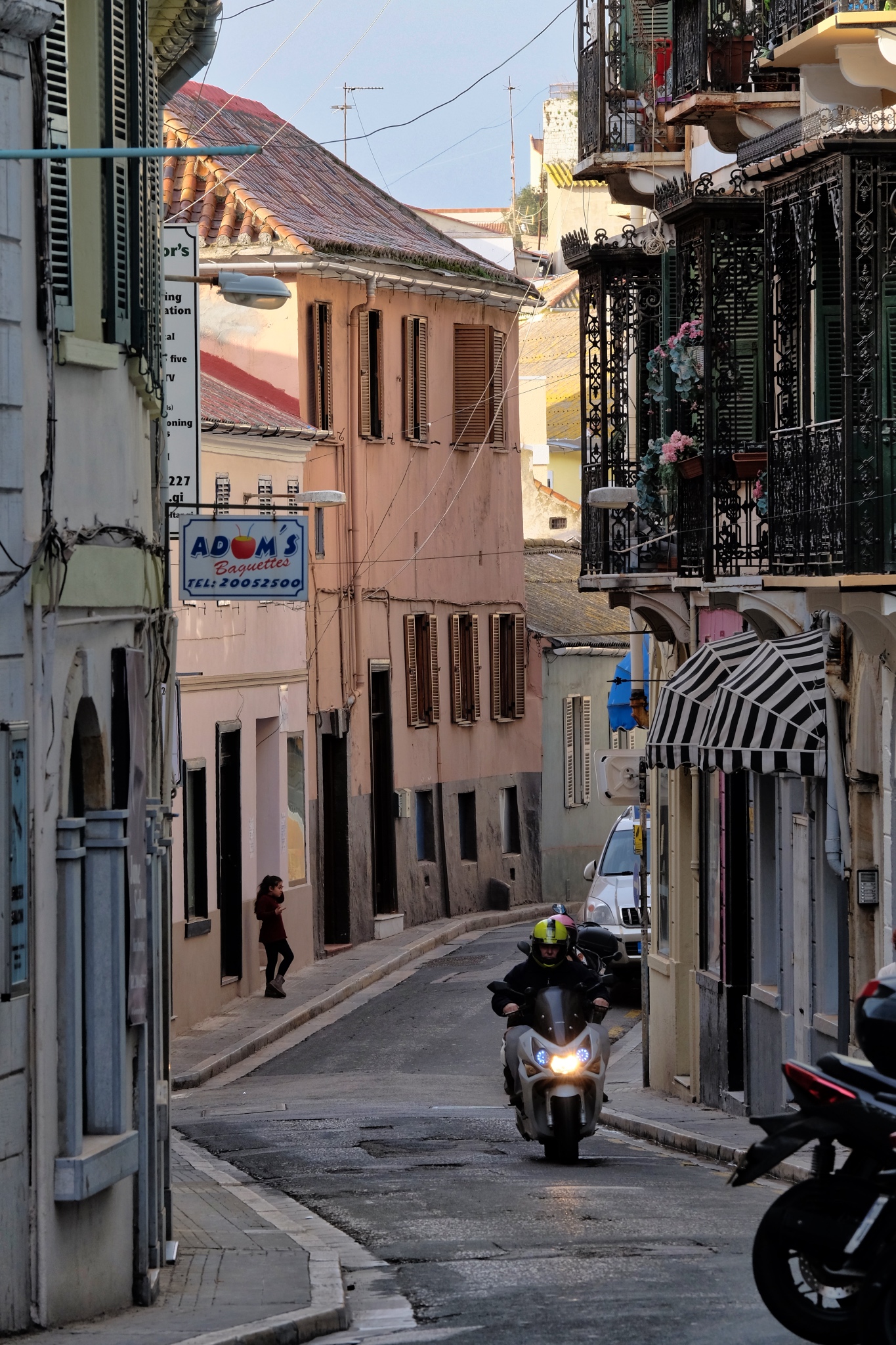 There are some beautiful curving streets through the old town.
There are some beautiful curving streets through the old town.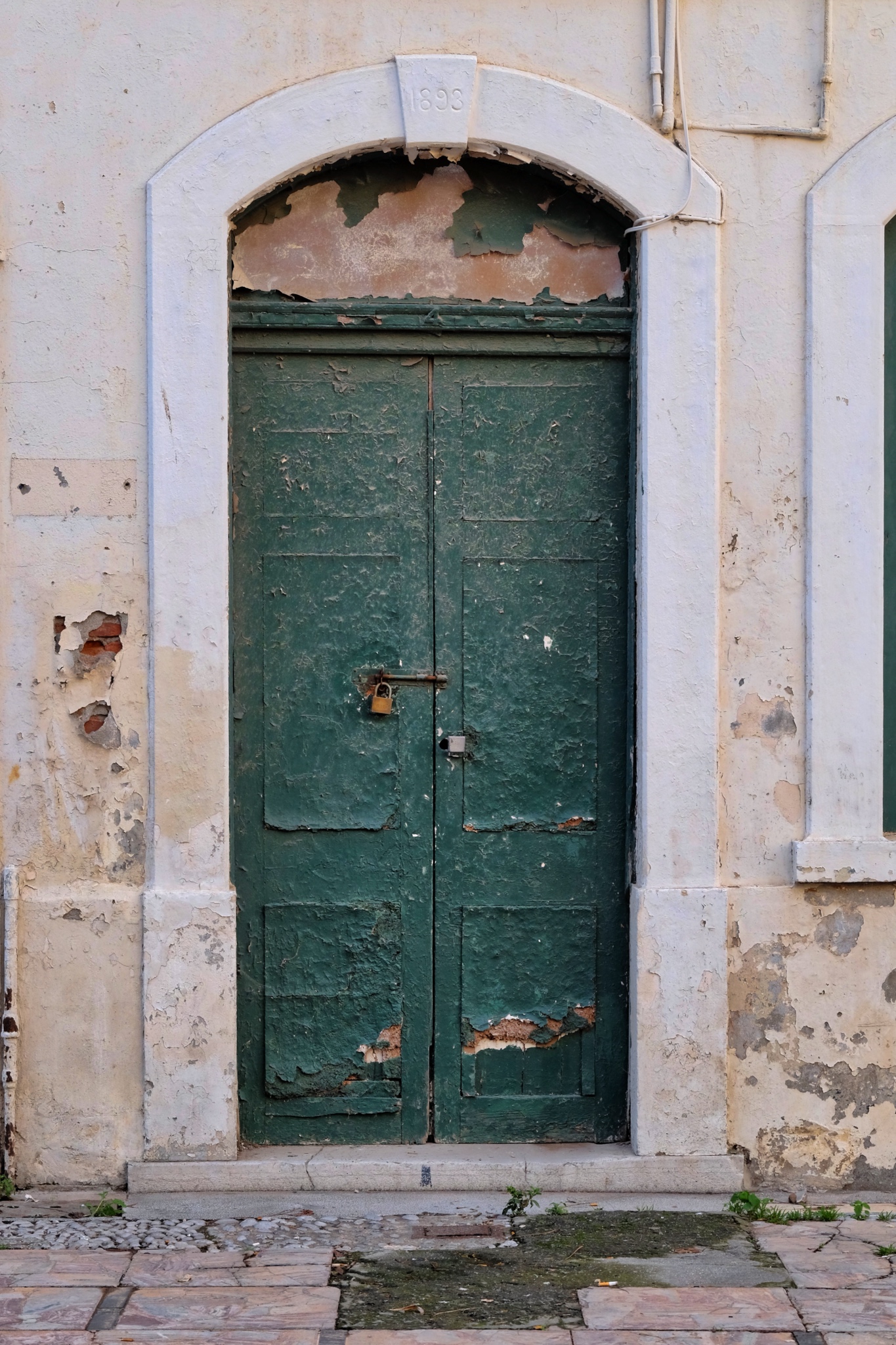 My Old Door Photo Fetish (ODPF) was completely satisfied in Gibraltar!
My Old Door Photo Fetish (ODPF) was completely satisfied in Gibraltar!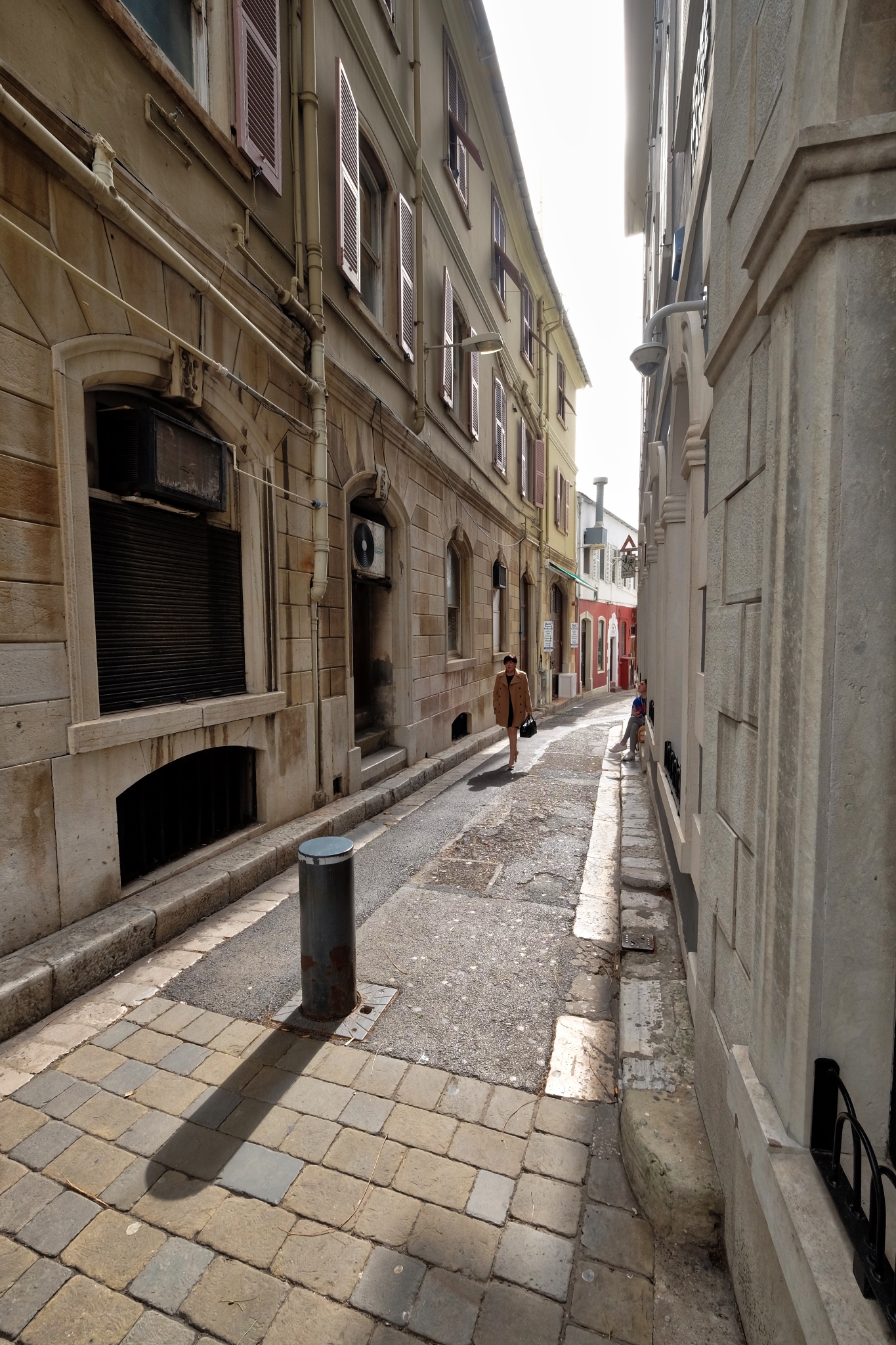 A pleasant place to stroll around . . . before the throngs of tourists arrived, the locals told us.
A pleasant place to stroll around . . . before the throngs of tourists arrived, the locals told us.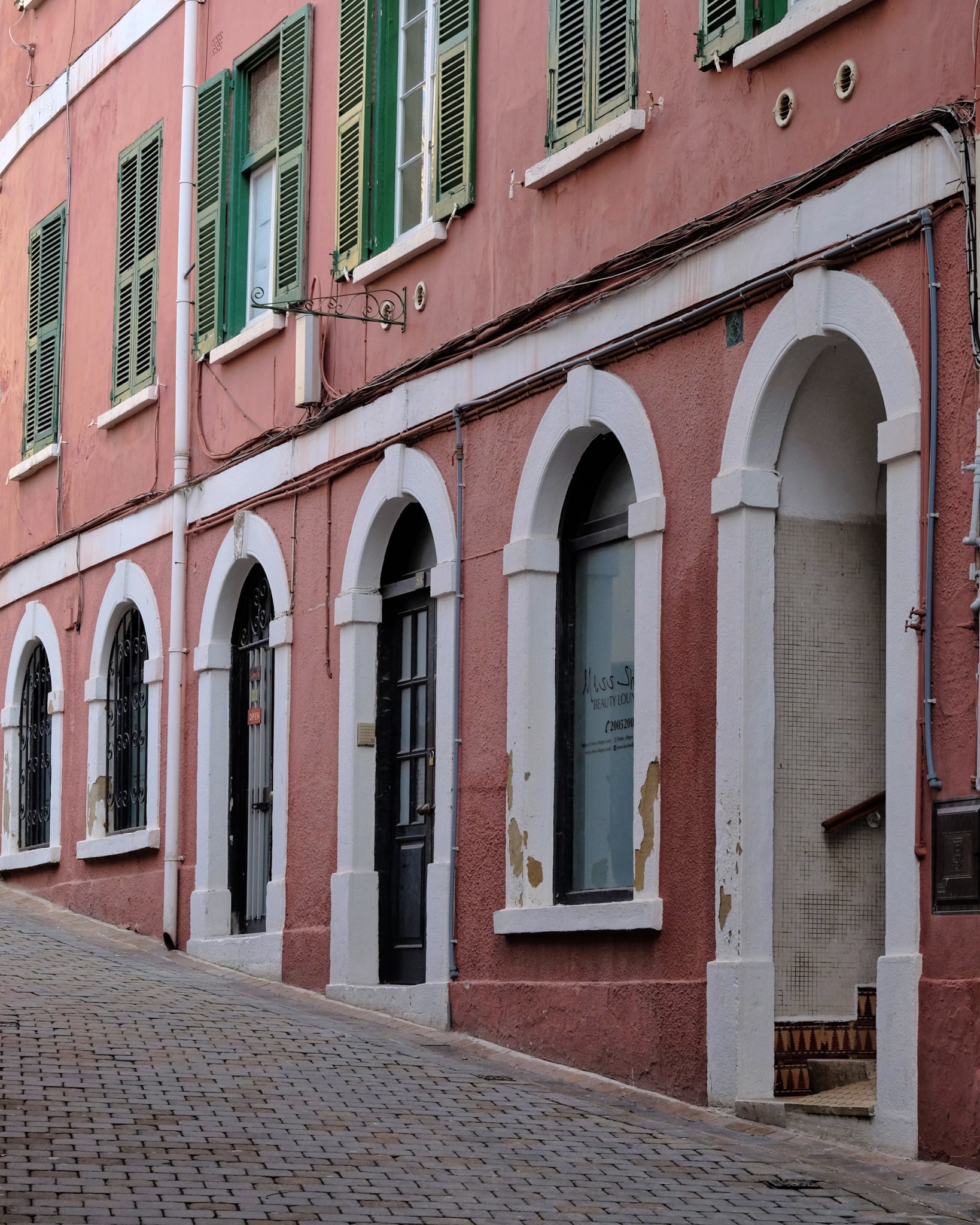 Steep streets . . . .
Steep streets . . . .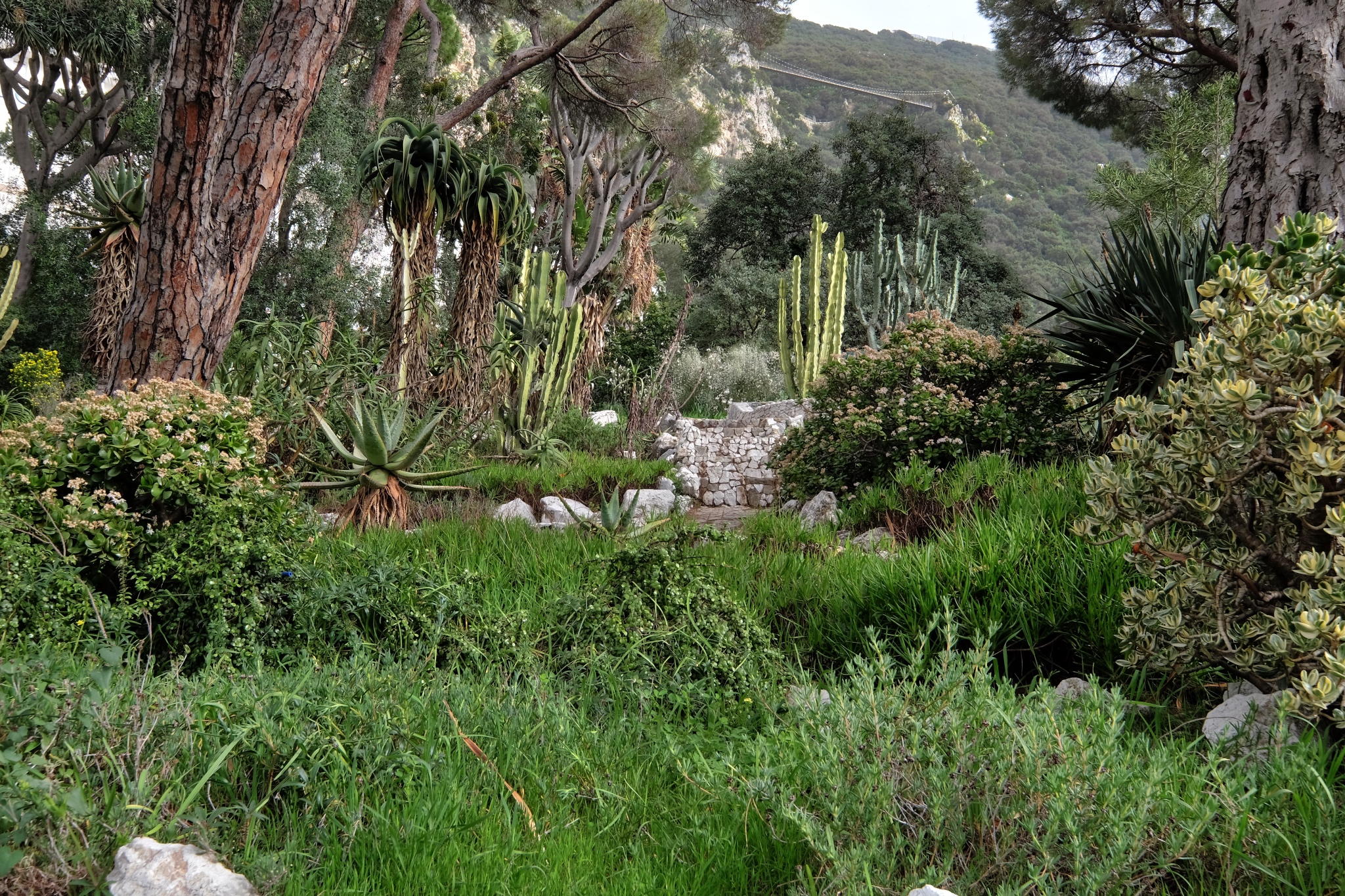 Gibraltar has a fine Botanical Garden . . . a favorite place to visit on all my travels.
Gibraltar has a fine Botanical Garden . . . a favorite place to visit on all my travels.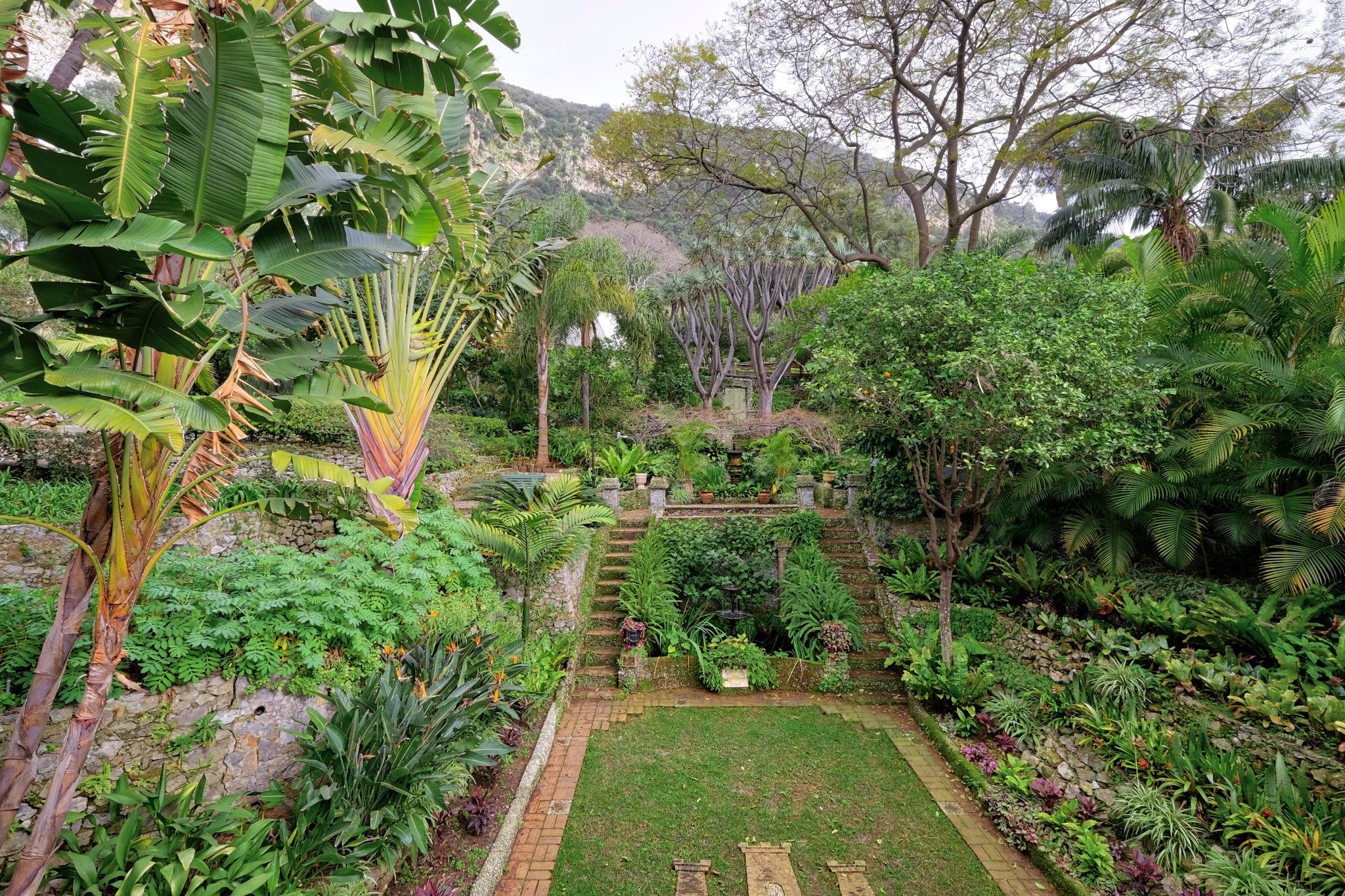 There is hardly any unused land on Gibraltar, so it was nice to see they valued their botanical garden enough to not build on it or pave it over.
There is hardly any unused land on Gibraltar, so it was nice to see they valued their botanical garden enough to not build on it or pave it over.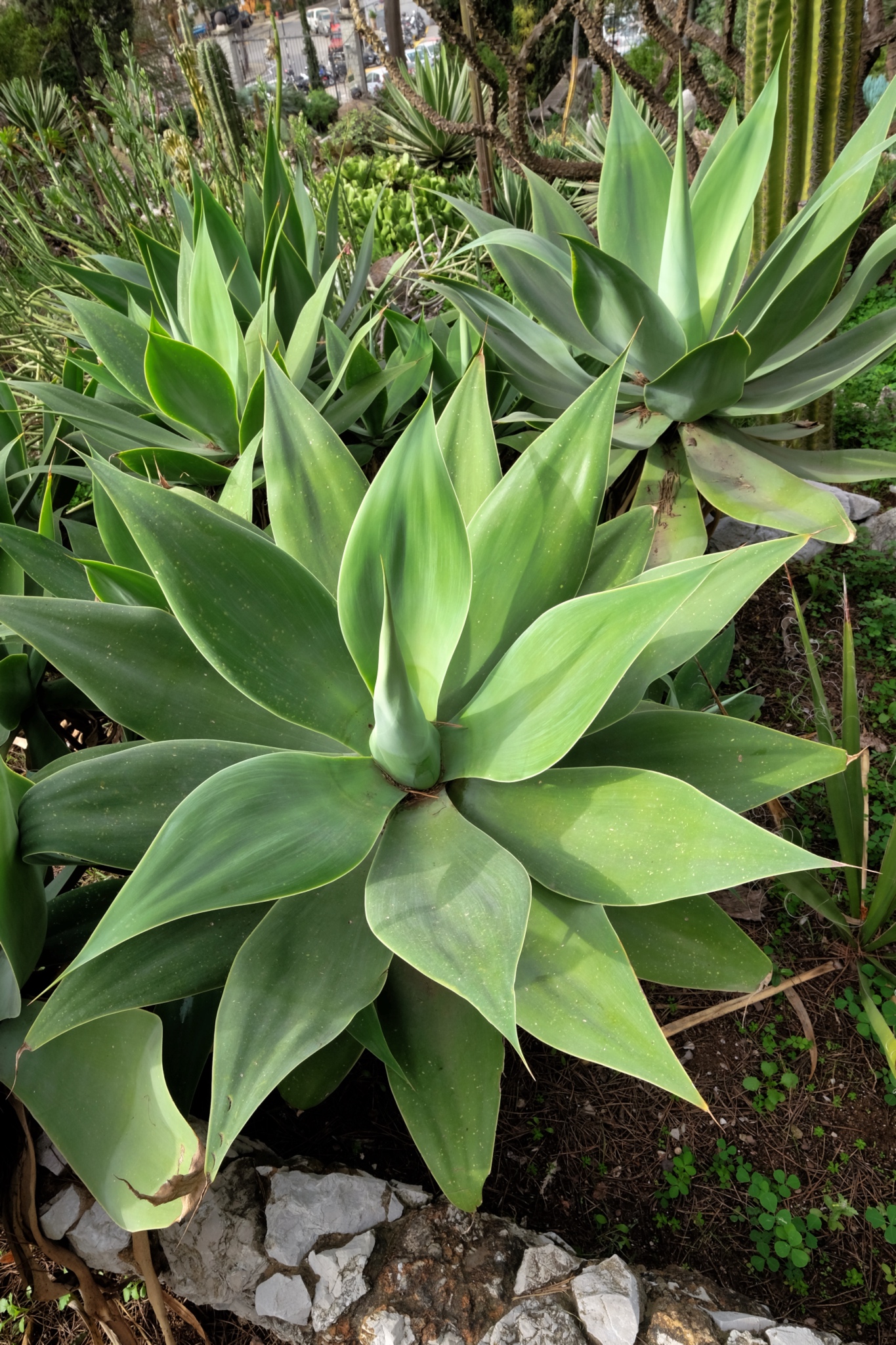 Being on the southern to of Spain, the climate is very mild. Many kinds of semi-tropical plants grow very well here.
Being on the southern to of Spain, the climate is very mild. Many kinds of semi-tropical plants grow very well here.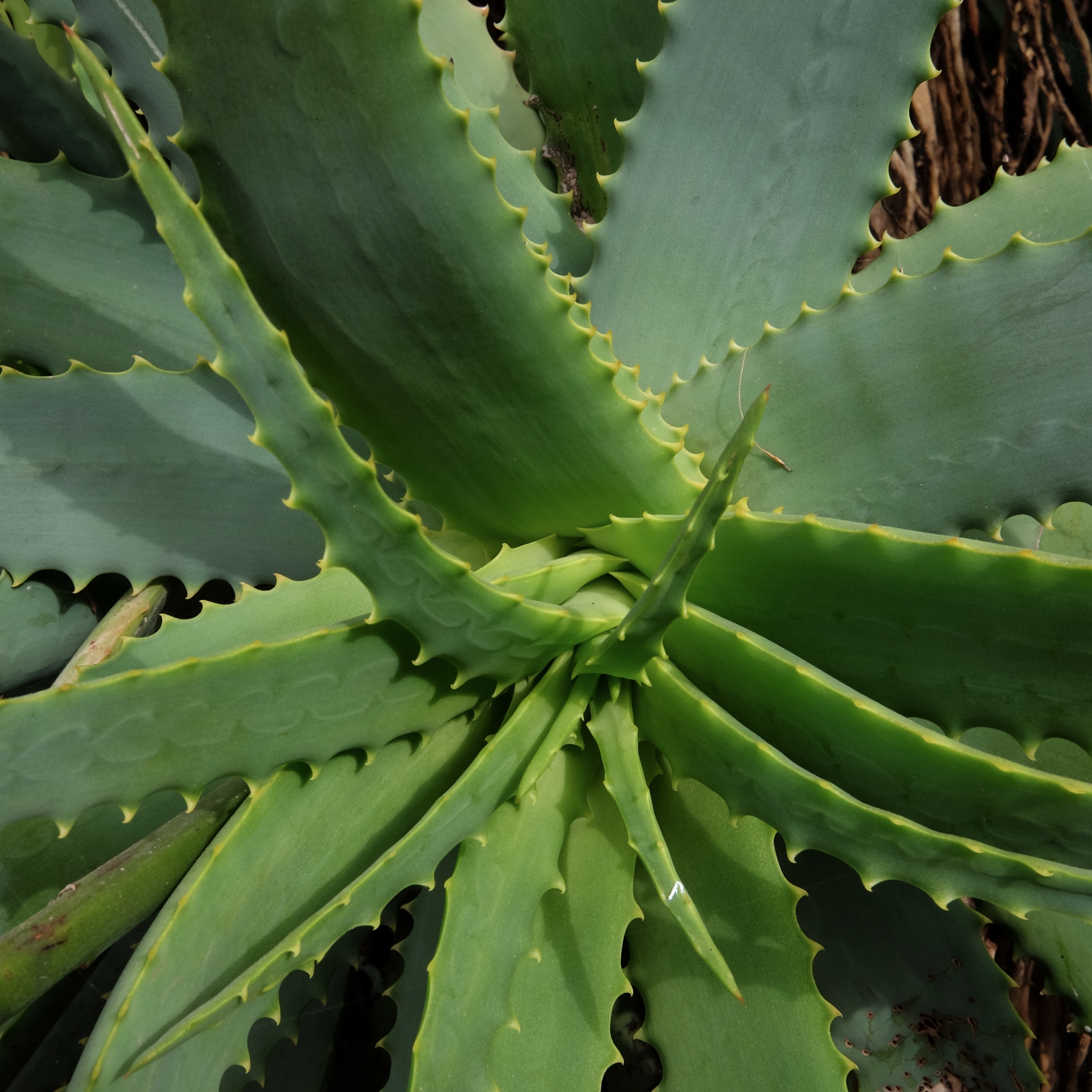 Aloe grew everywhere.
Aloe grew everywhere.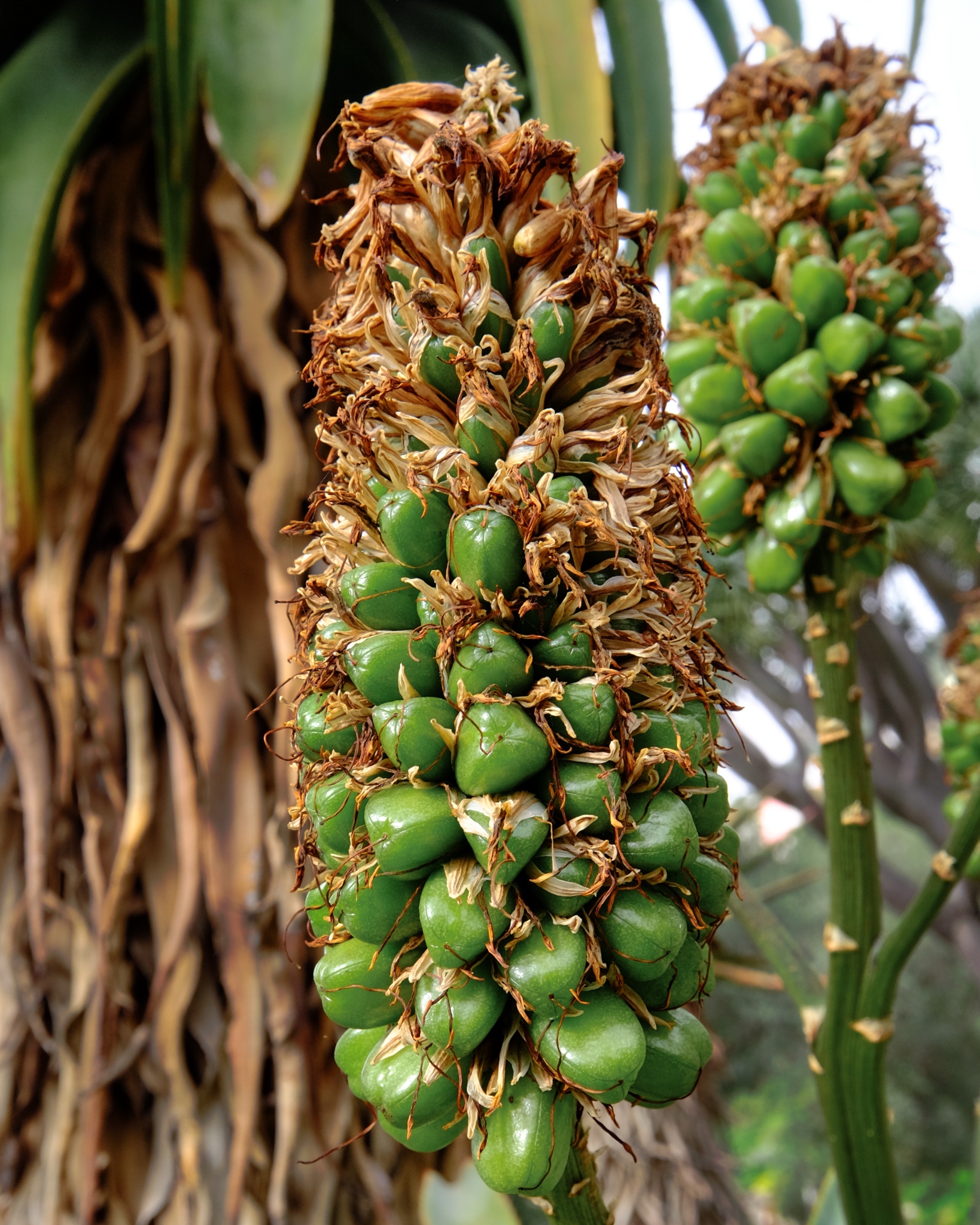 A few of the tropical plants were in flower or bud.
A few of the tropical plants were in flower or bud.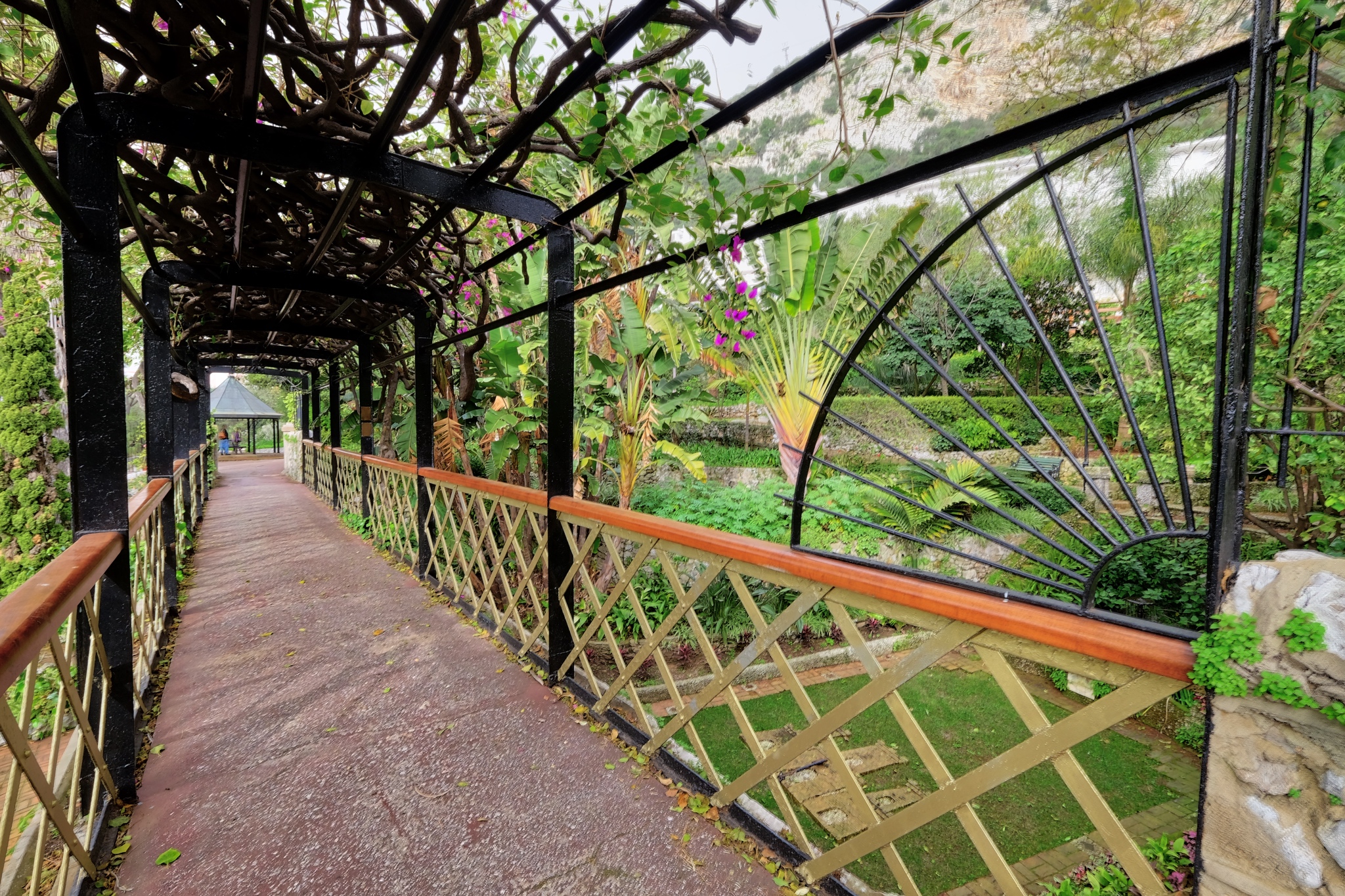 We spent art of a wonderful afternoon here . . .
We spent art of a wonderful afternoon here . . .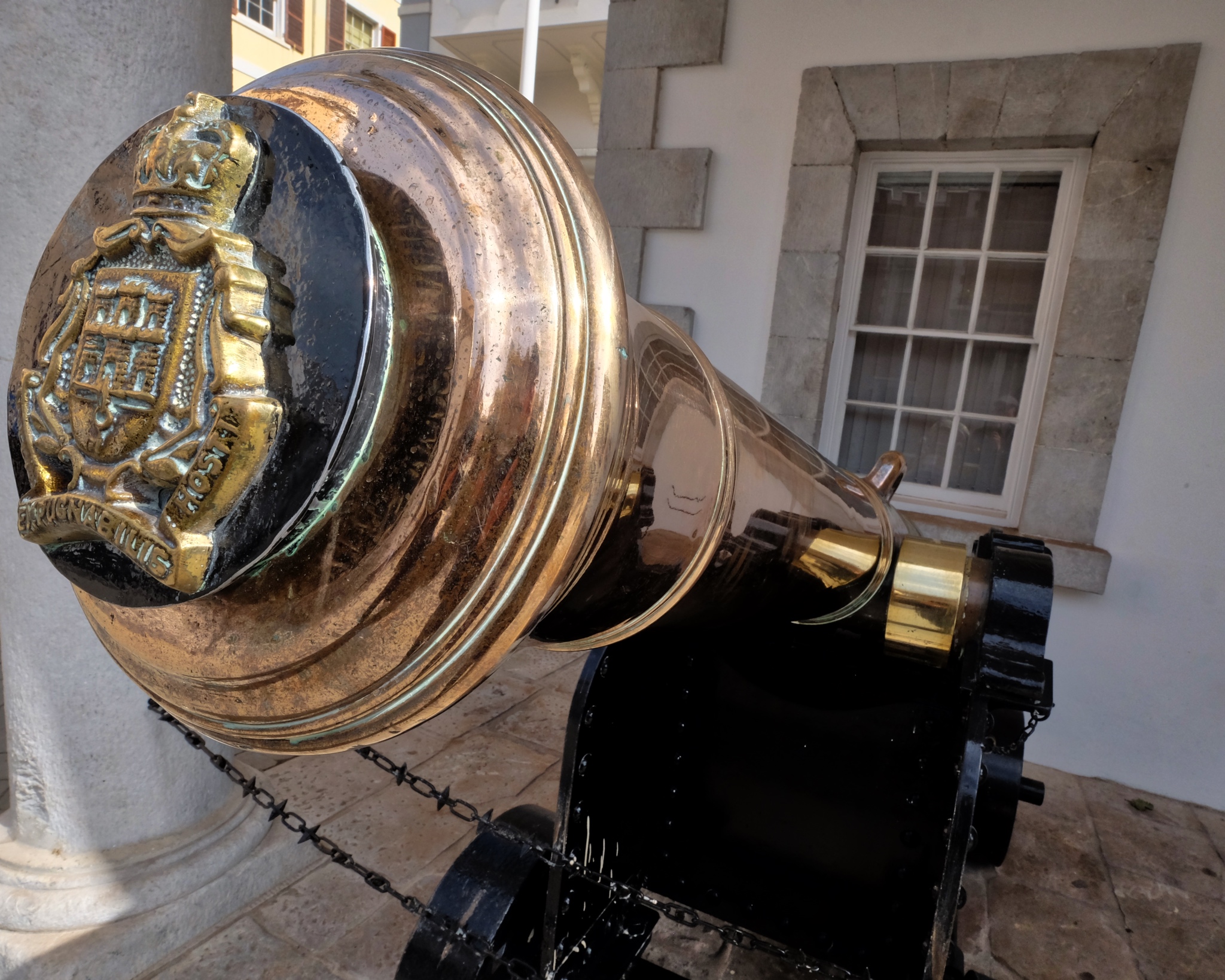 There is still a British military garrison on Gibraltar . . . complete with daily-polished brass cannon.
There is still a British military garrison on Gibraltar . . . complete with daily-polished brass cannon.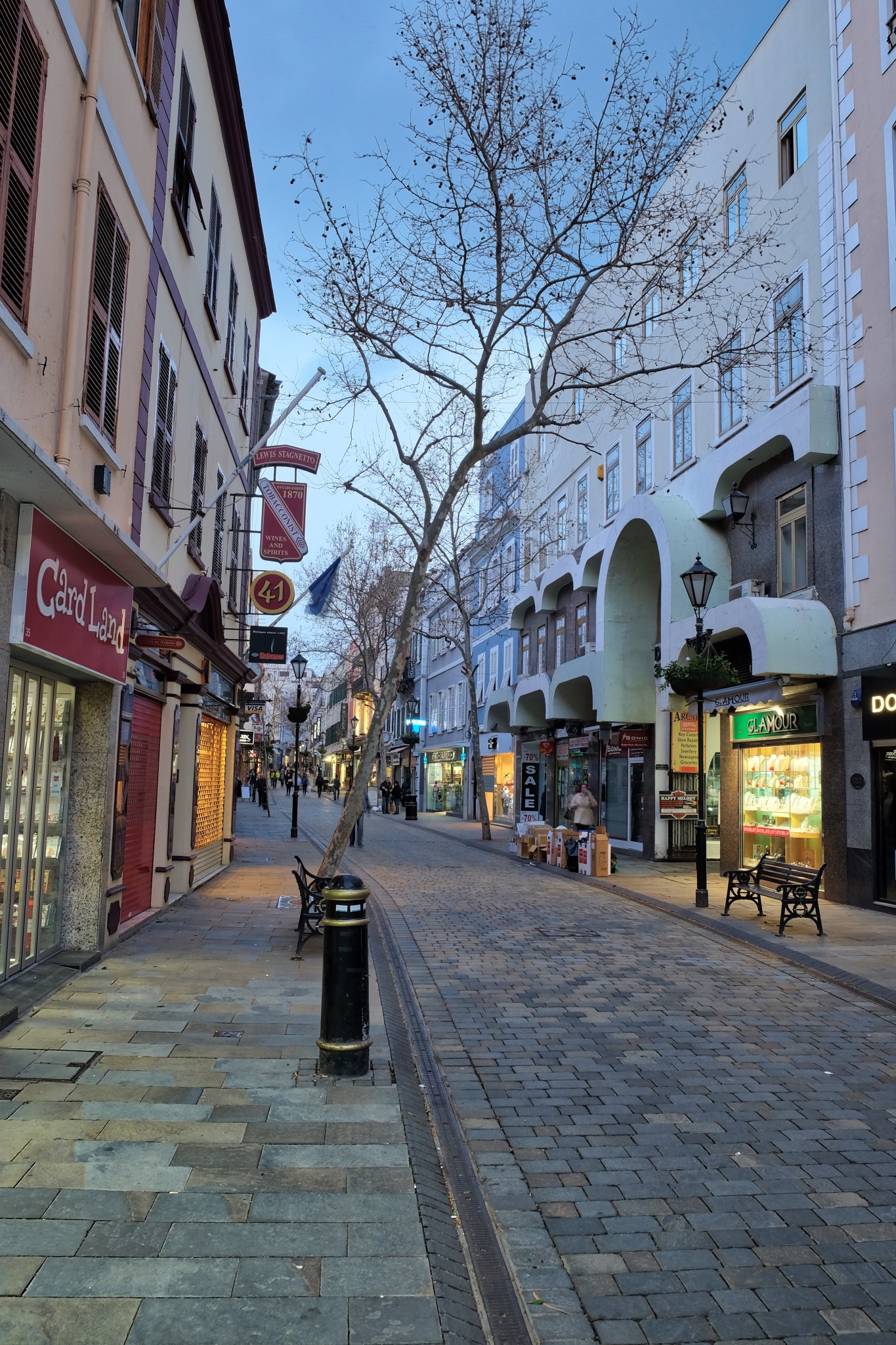 The central walking street is the focus of the town and the only developed commercial area. There are sweet cafes, bakeries, and shops all along here . . . as well as tawdry tourist curios shops where I bought a refrigerator magnet.
The central walking street is the focus of the town and the only developed commercial area. There are sweet cafes, bakeries, and shops all along here . . . as well as tawdry tourist curios shops where I bought a refrigerator magnet.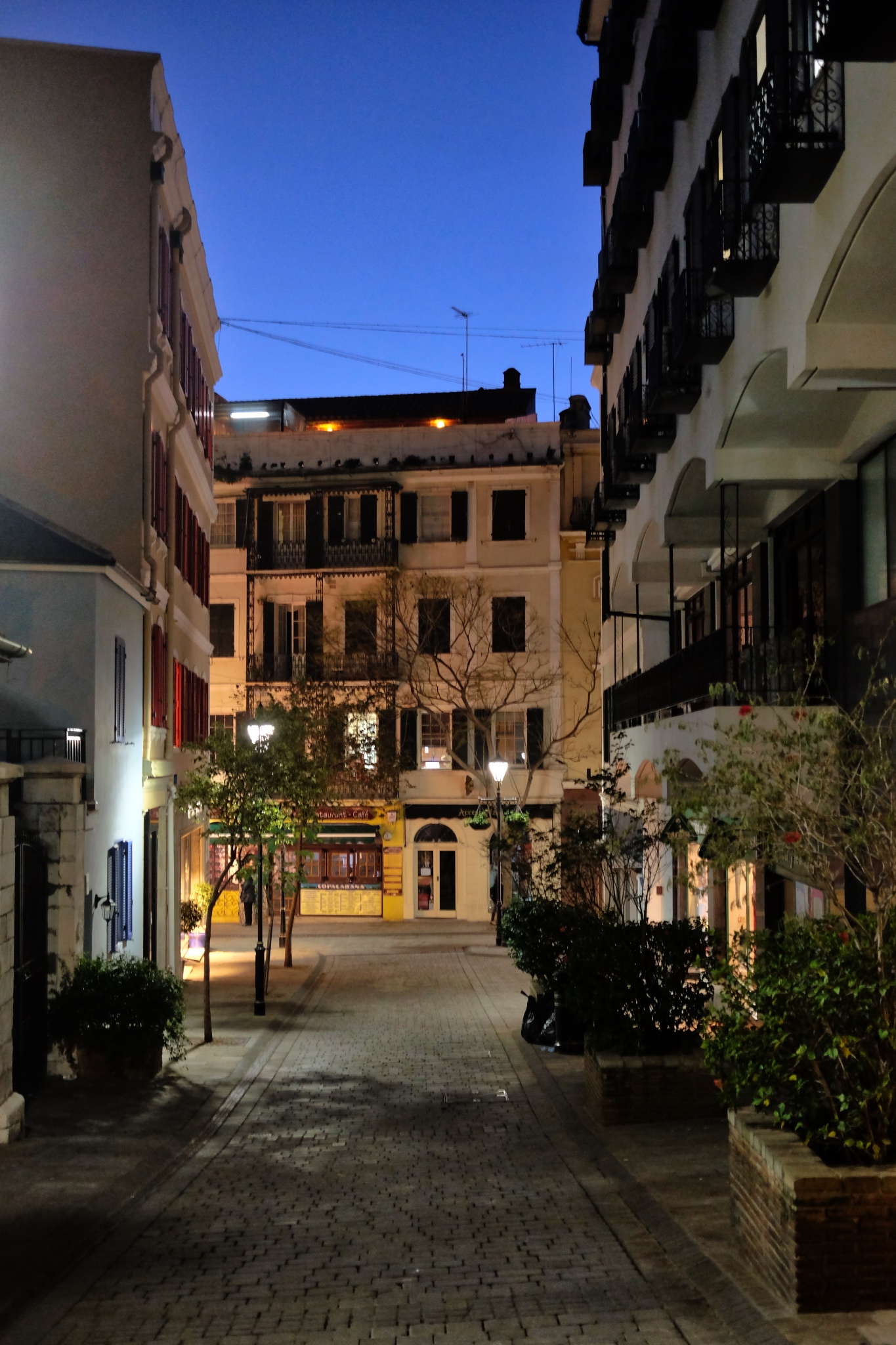 In my opinion, Gibraltar becomes even more interesting, and beautiful, when the sun sets.
In my opinion, Gibraltar becomes even more interesting, and beautiful, when the sun sets.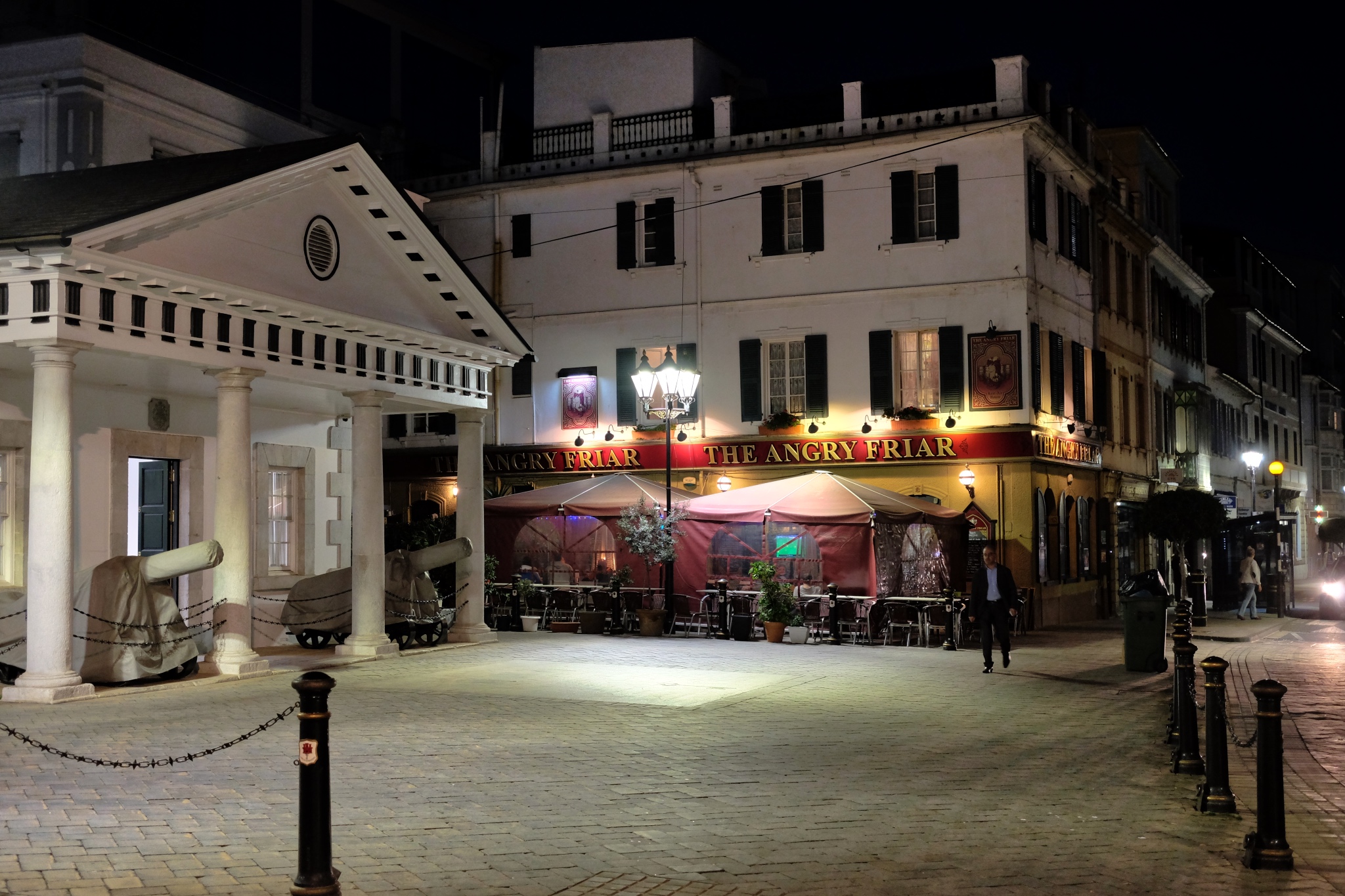 At night the squares are lit and the old government buildings stand out in all their old glory.
At night the squares are lit and the old government buildings stand out in all their old glory.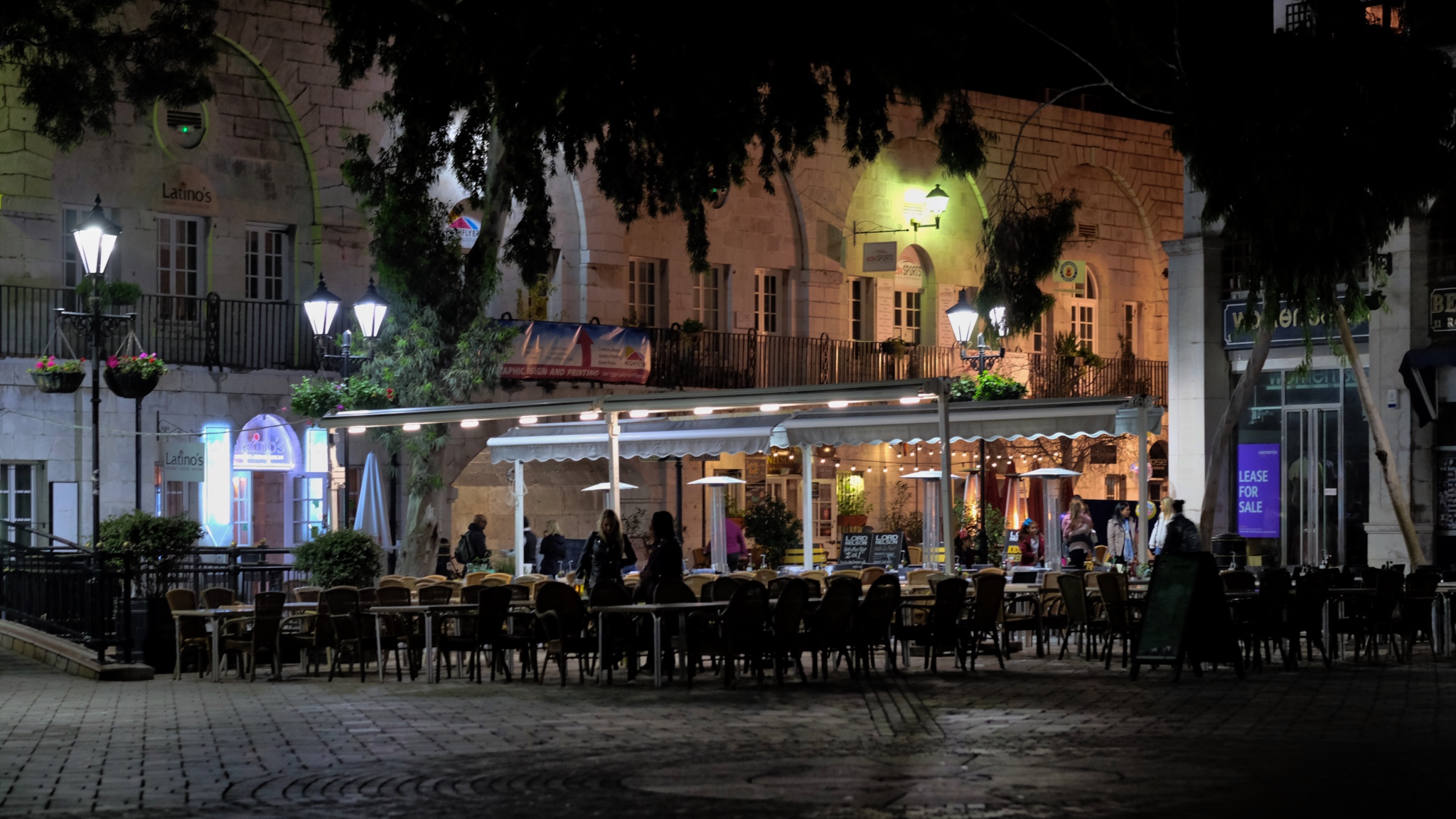 In the evening people, tourists and locals, come out to the cafes in Casement Square. One can imagine this space filled with thousands of cruise ship passengers later in the summer.
In the evening people, tourists and locals, come out to the cafes in Casement Square. One can imagine this space filled with thousands of cruise ship passengers later in the summer.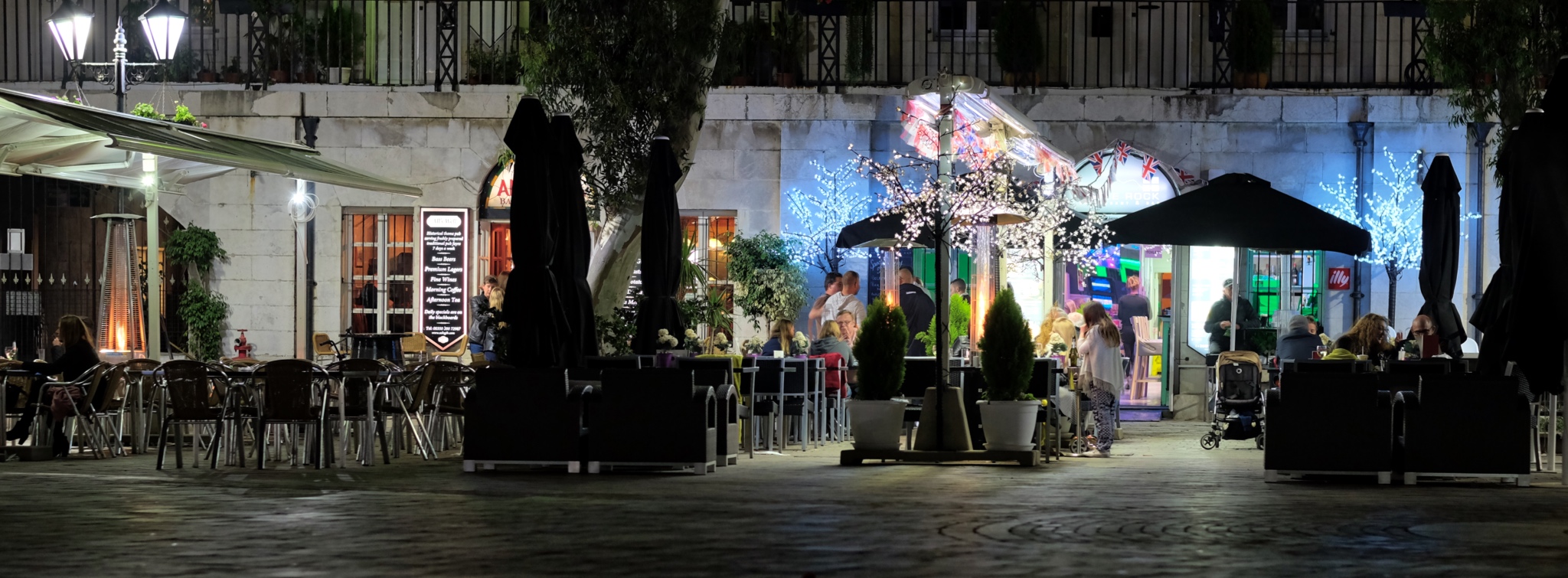
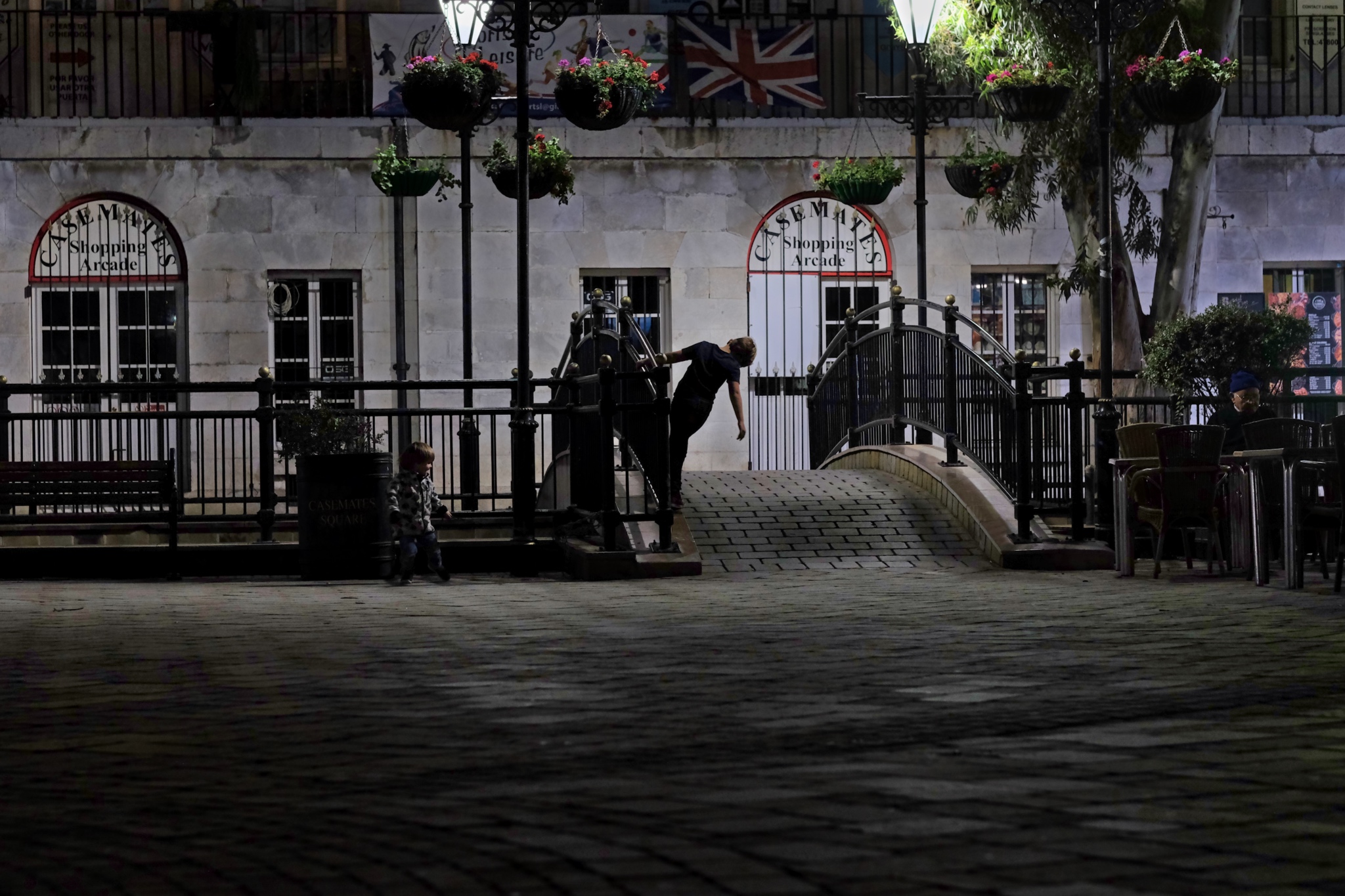 The children wandered free around the square as the adults conversed over wine.
The children wandered free around the square as the adults conversed over wine. A happy girl skipped into my photo . . .
A happy girl skipped into my photo . . .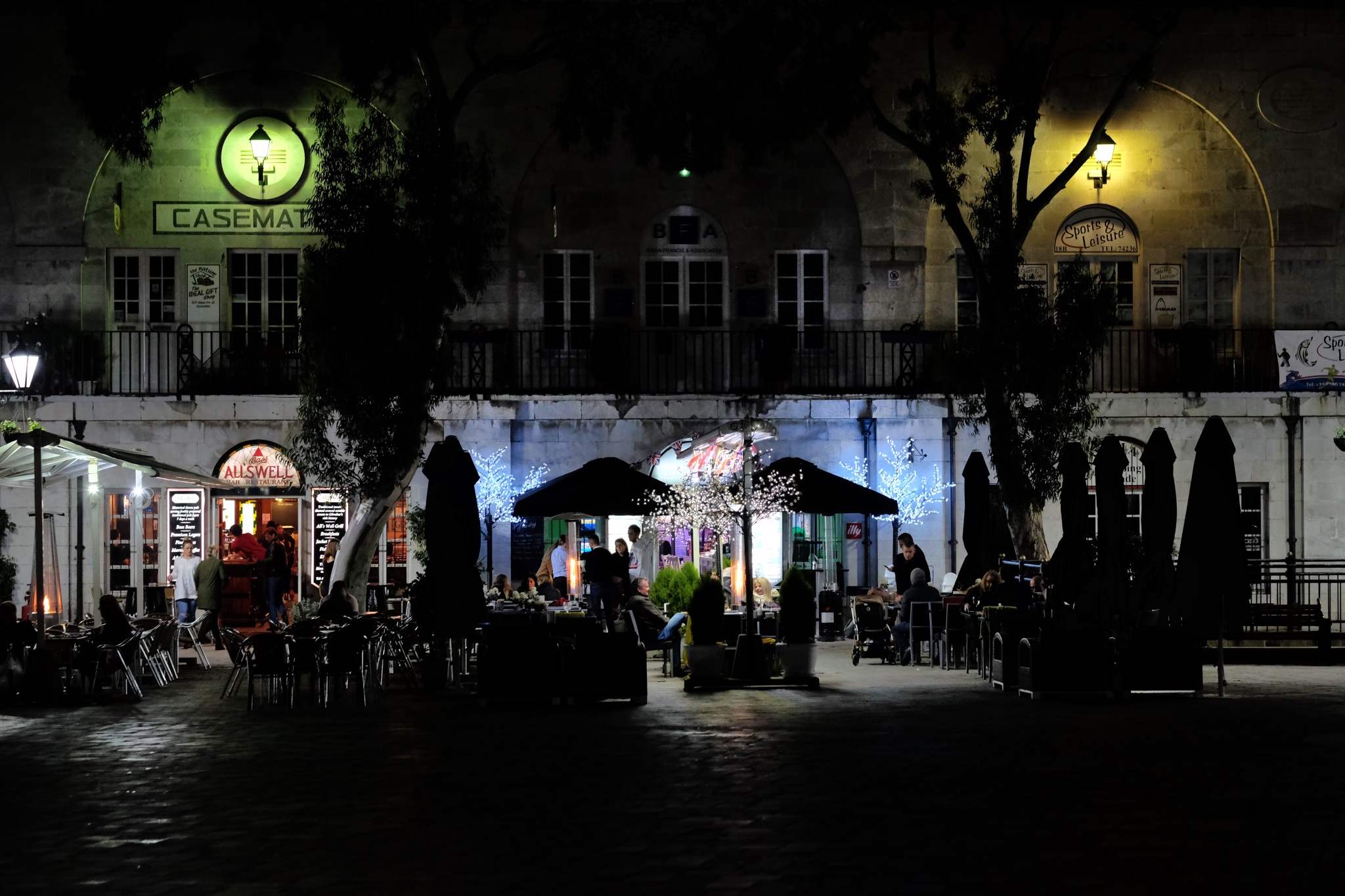 Casement Square.
Casement Square.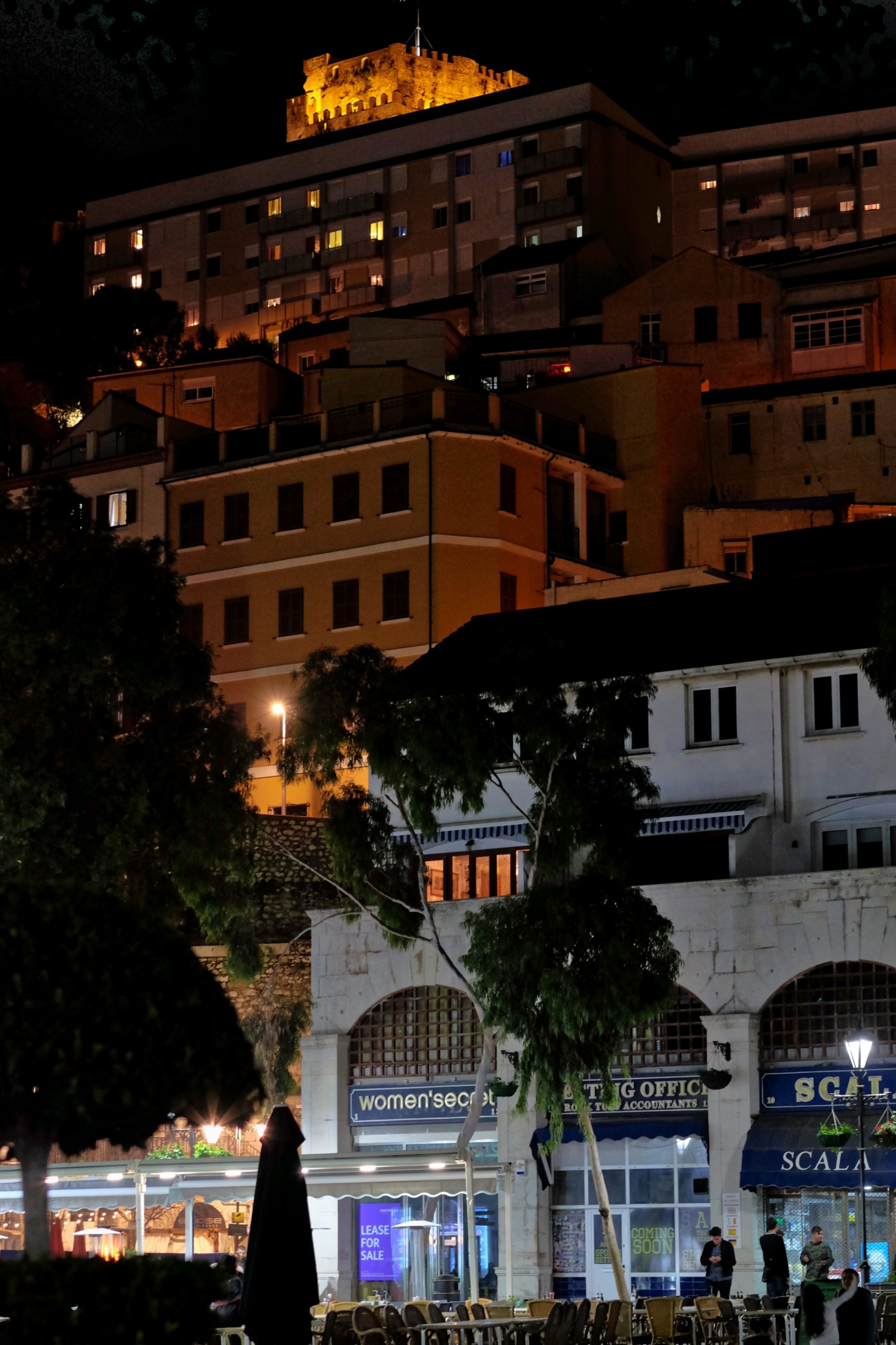 High above Casement Square, a Moorish castle looks on . . . .
High above Casement Square, a Moorish castle looks on . . . .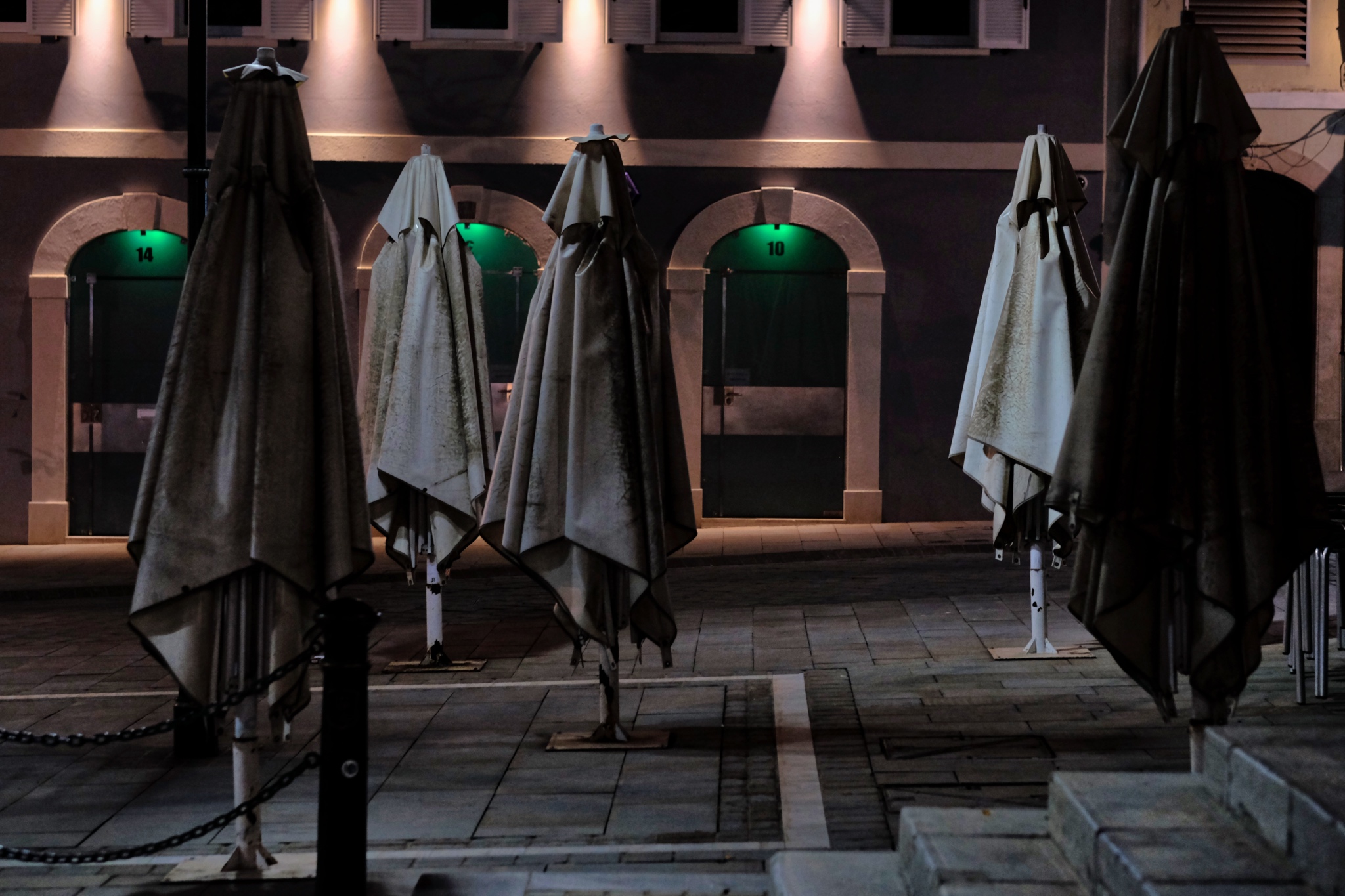 Later in the evening, the restaurants and cafes closed up . . . leaving their umbrellas like forlorn soldiers in a strange night.
Later in the evening, the restaurants and cafes closed up . . . leaving their umbrellas like forlorn soldiers in a strange night.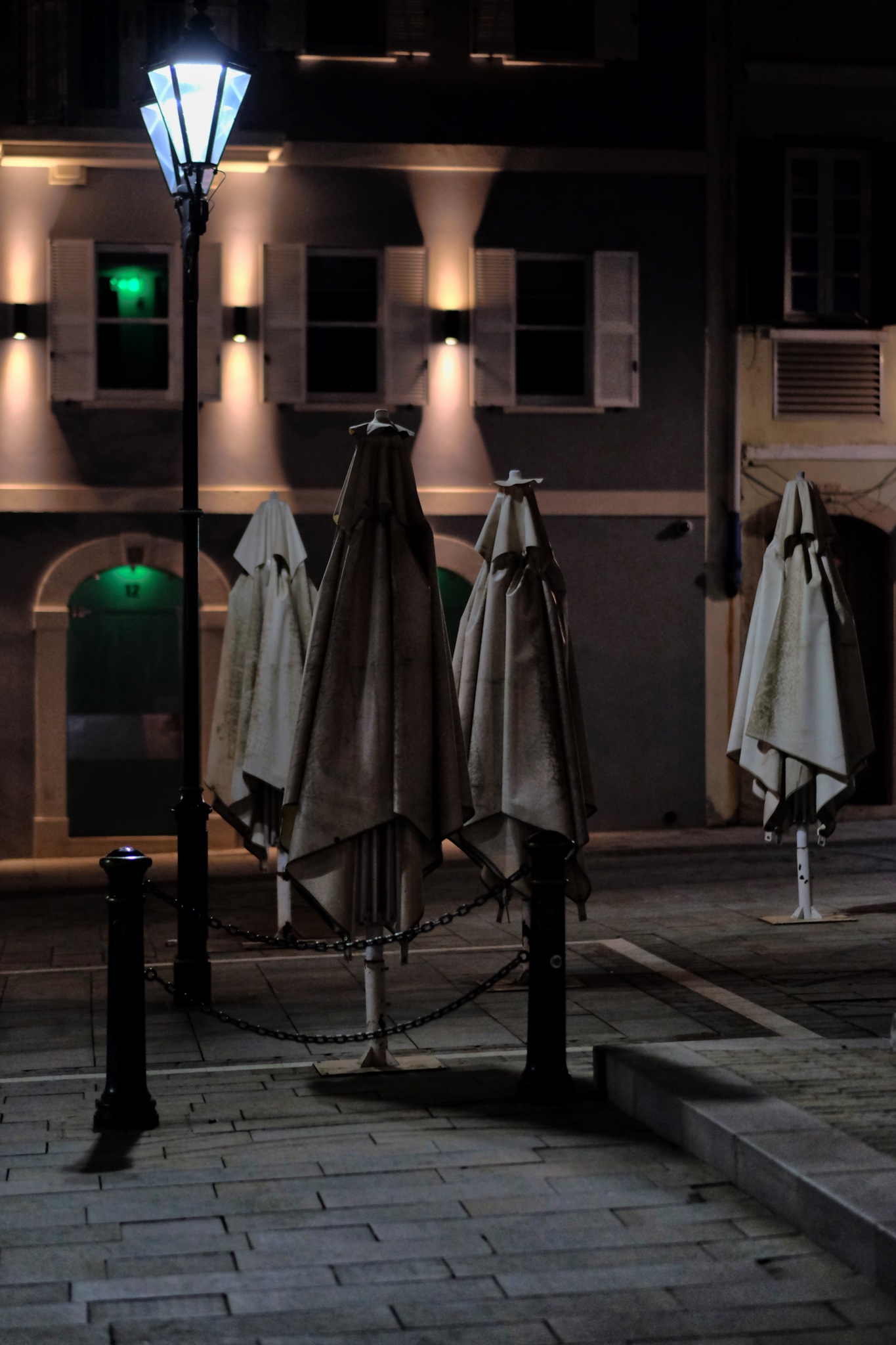 I was startled when I first saw these visages of another world!
I was startled when I first saw these visages of another world!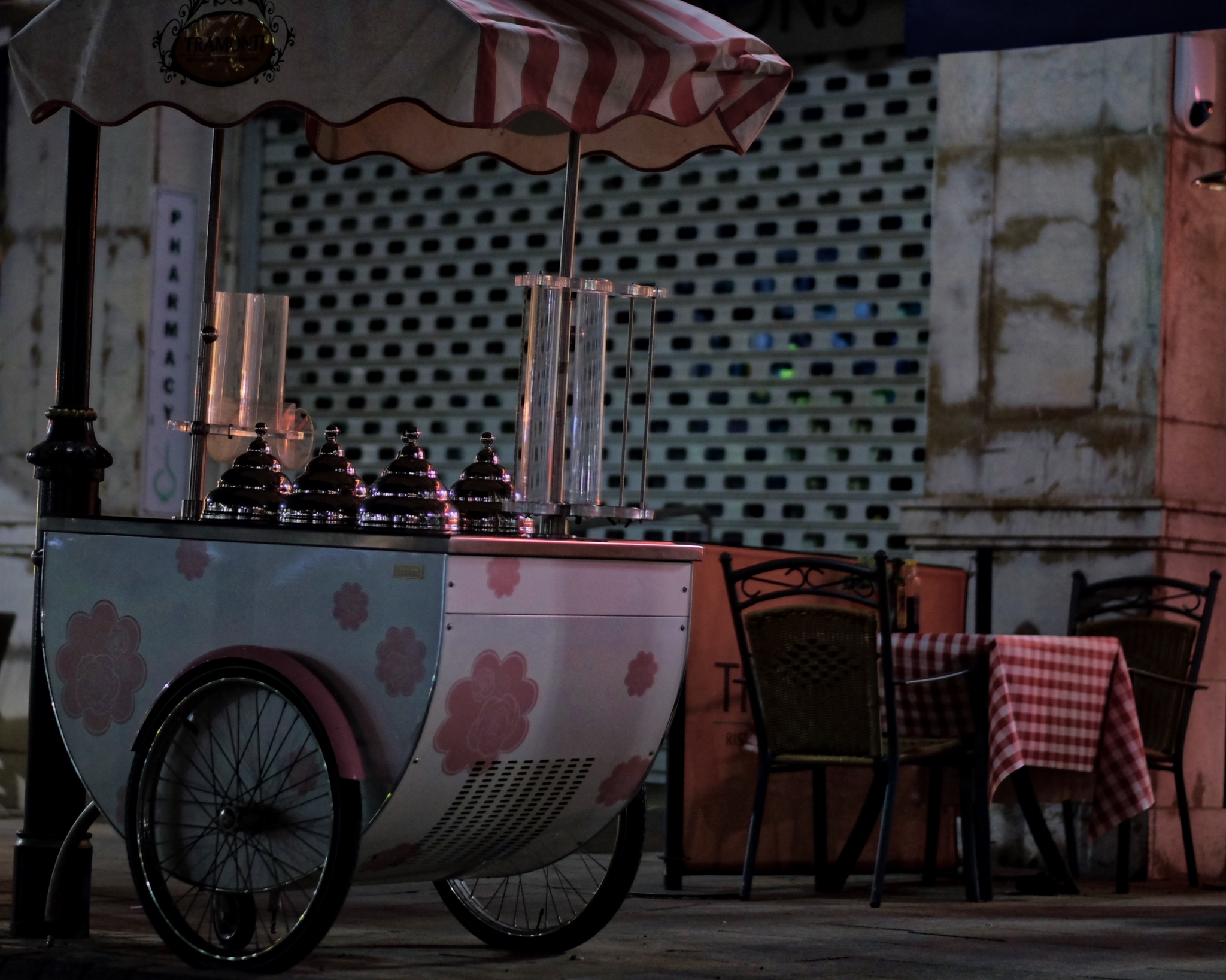 My other photographic subject obsession are push carts of all kinds. This ice cream cart waiting for another day was just fantastic.
My other photographic subject obsession are push carts of all kinds. This ice cream cart waiting for another day was just fantastic.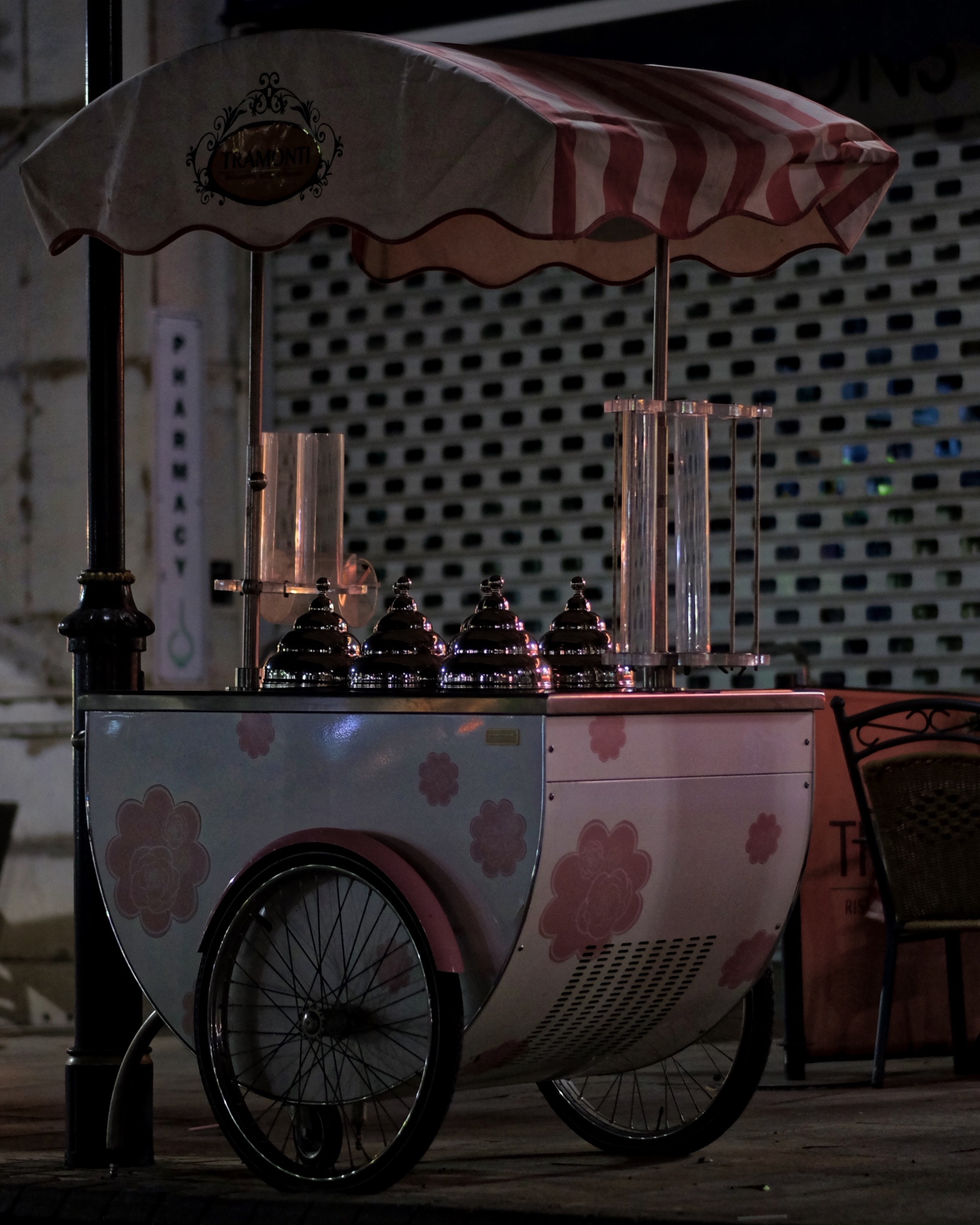
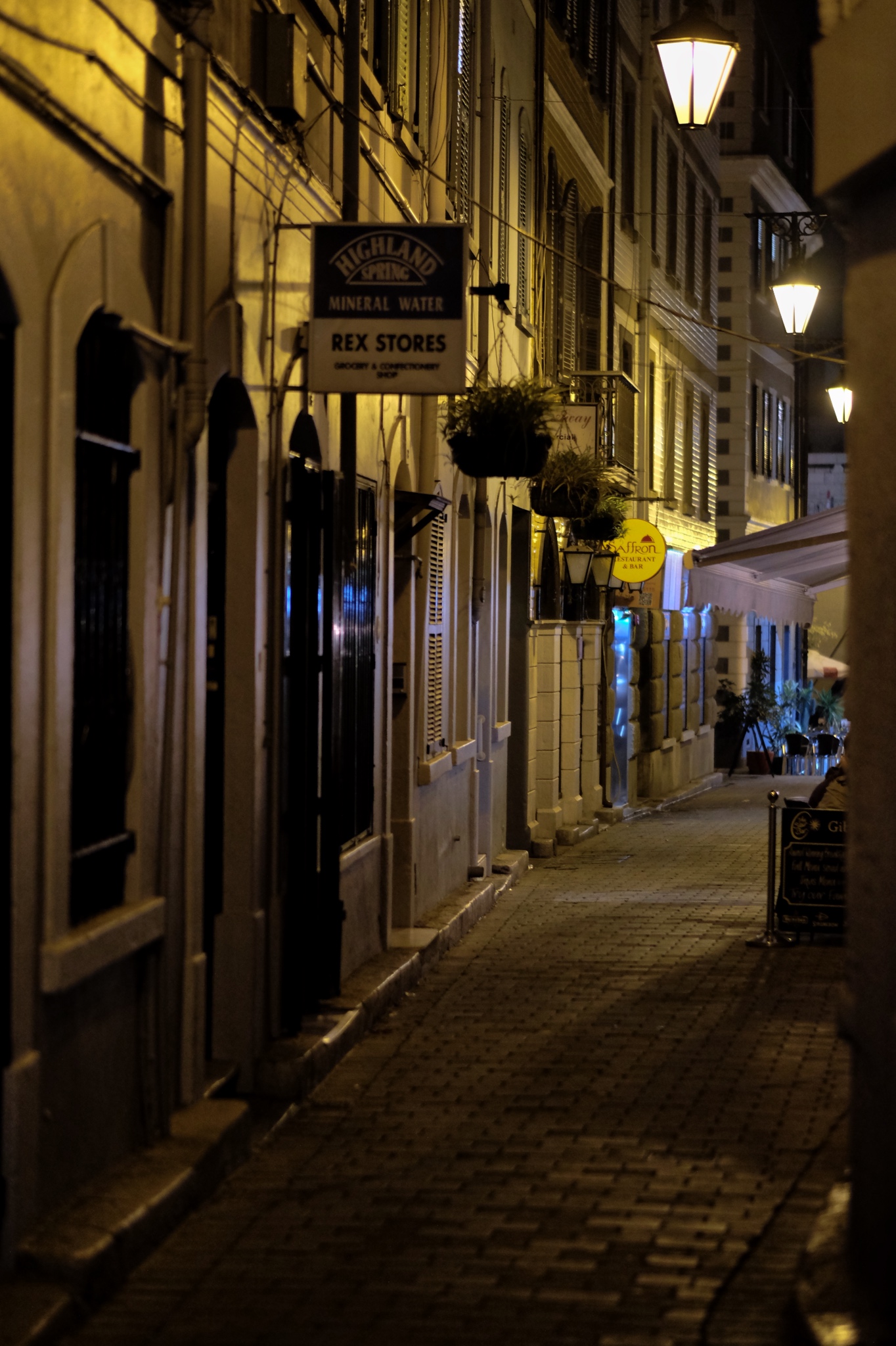 One evening (of the three) I went back out of the hotel late at night . . . to capture the abandoned streets and alleys.
One evening (of the three) I went back out of the hotel late at night . . . to capture the abandoned streets and alleys.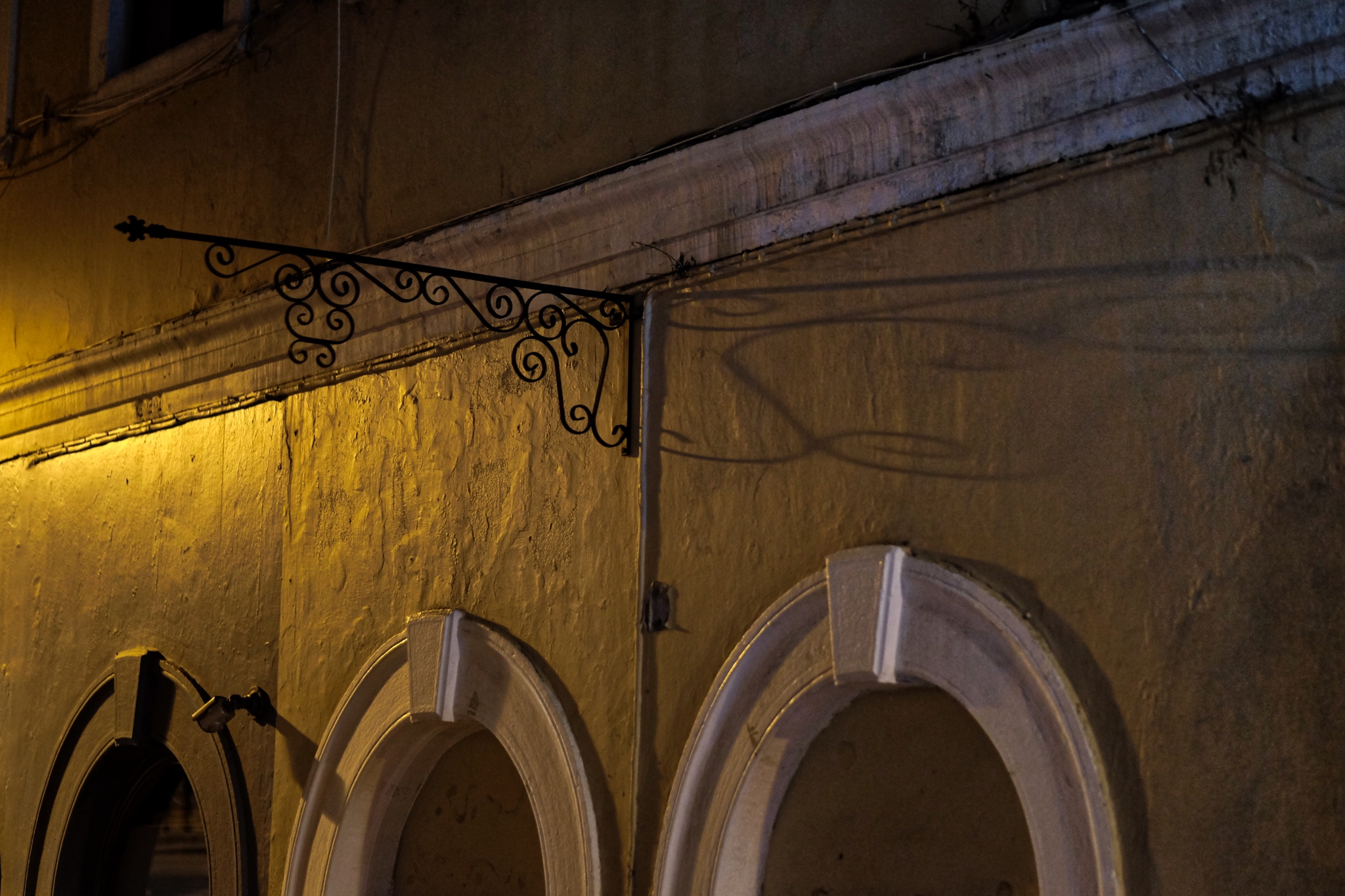 Light, textured surfaces, shadow, arches, color . . . wonderful.
Light, textured surfaces, shadow, arches, color . . . wonderful.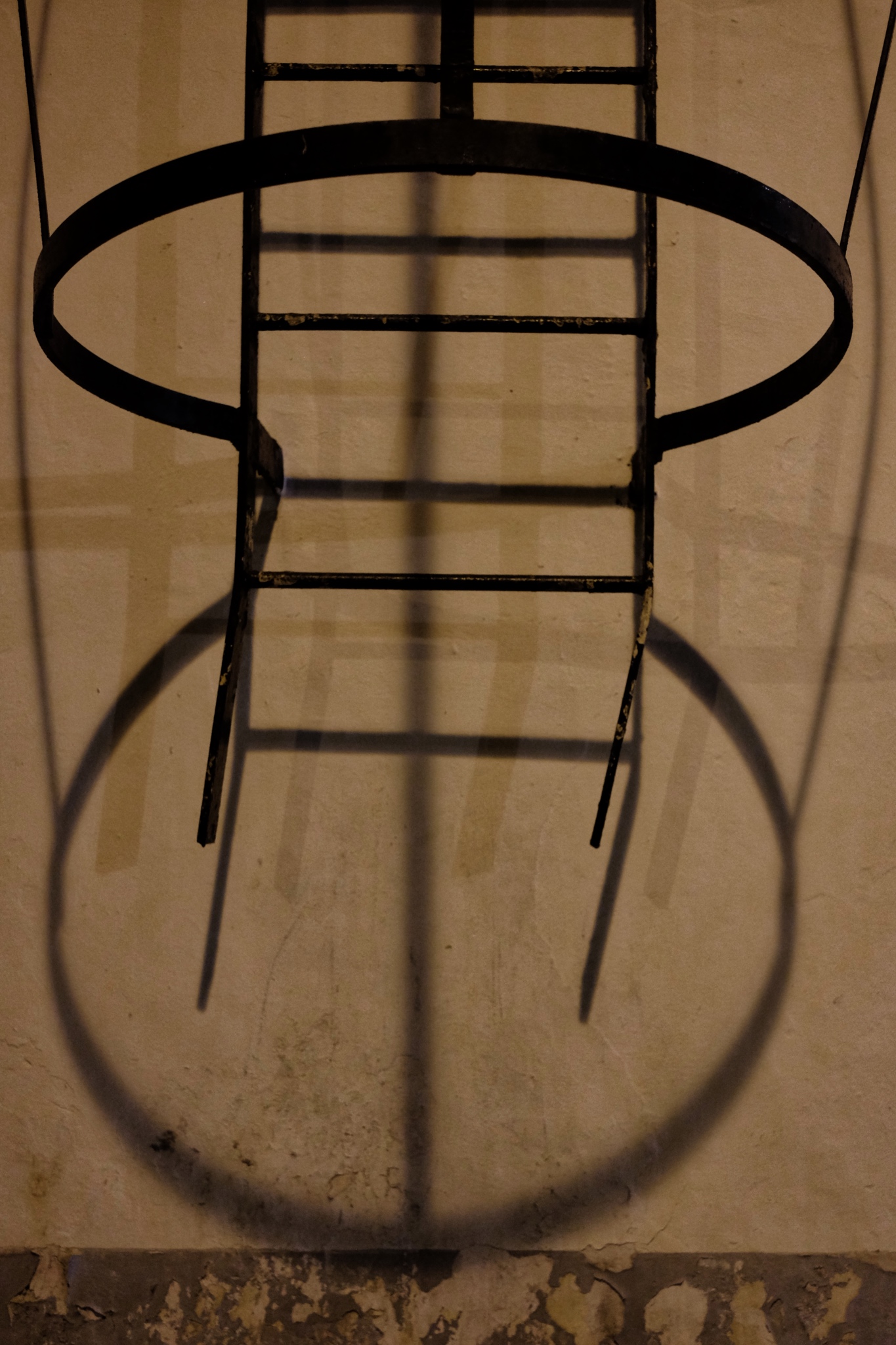 Ladder, light, shadow, and wall!
Ladder, light, shadow, and wall!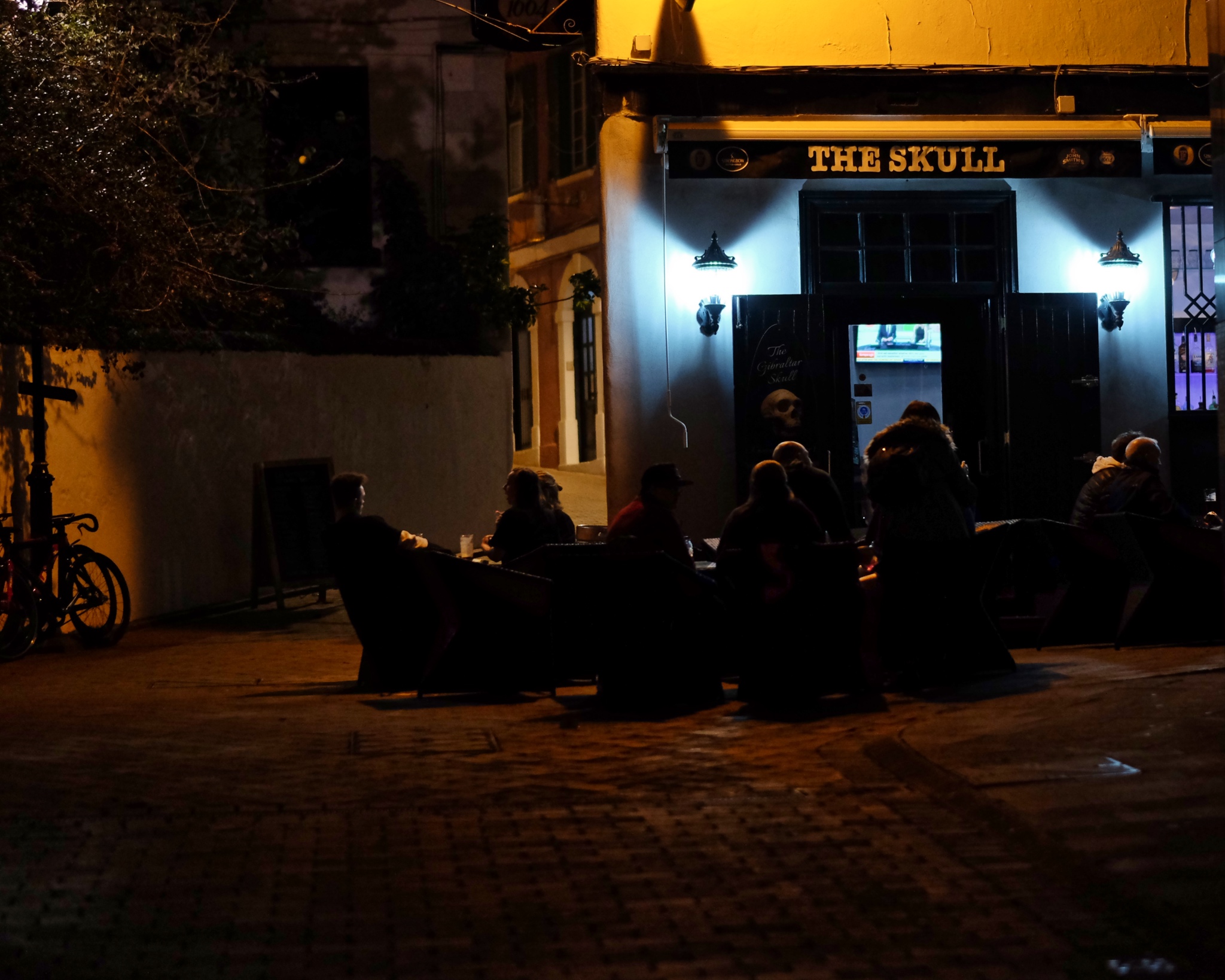 If the conversation is good, why go home? Well after midnight in Gibraltar.
If the conversation is good, why go home? Well after midnight in Gibraltar.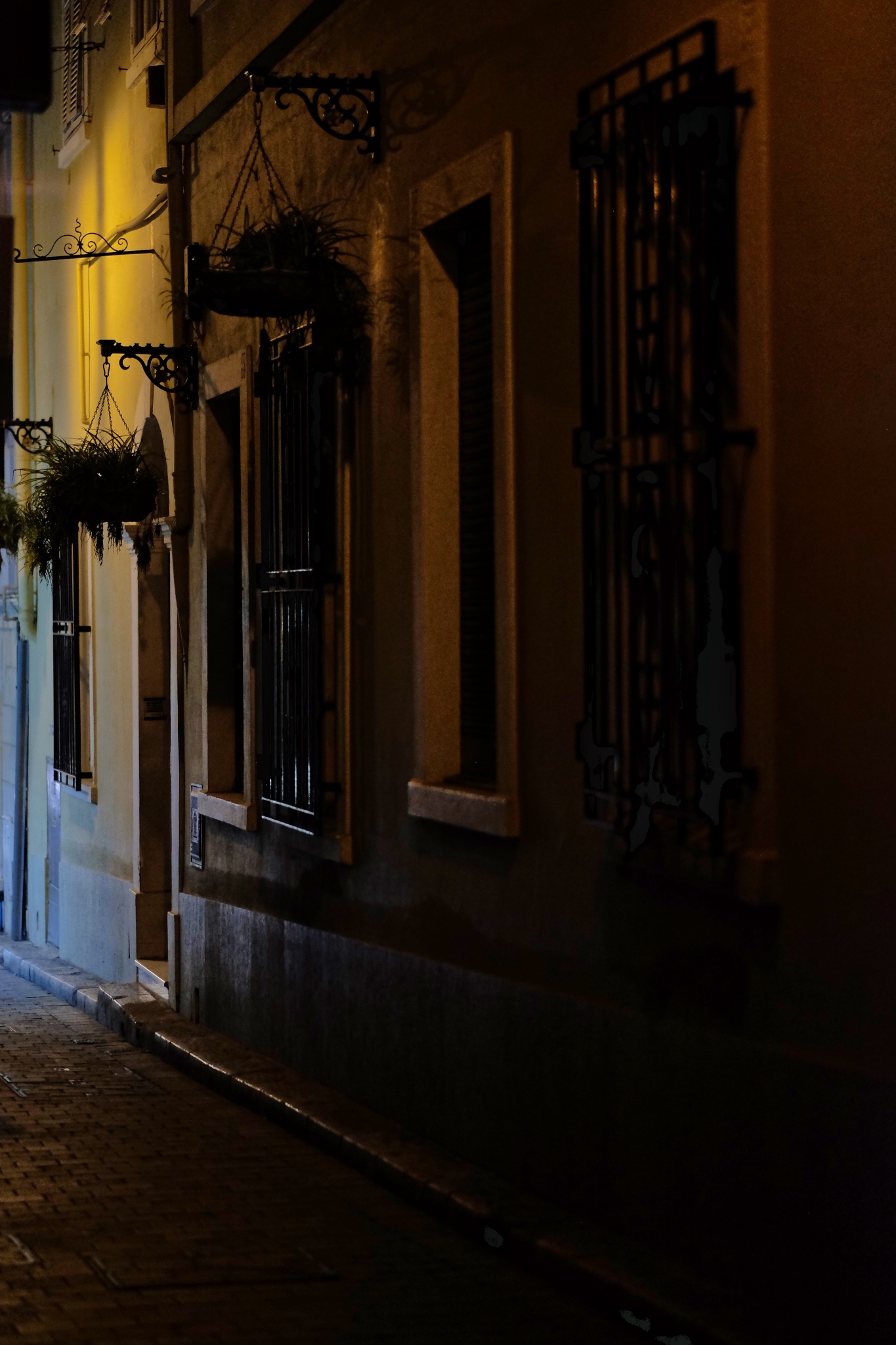 The dark streets where the only sounds were my footsteps.
The dark streets where the only sounds were my footsteps.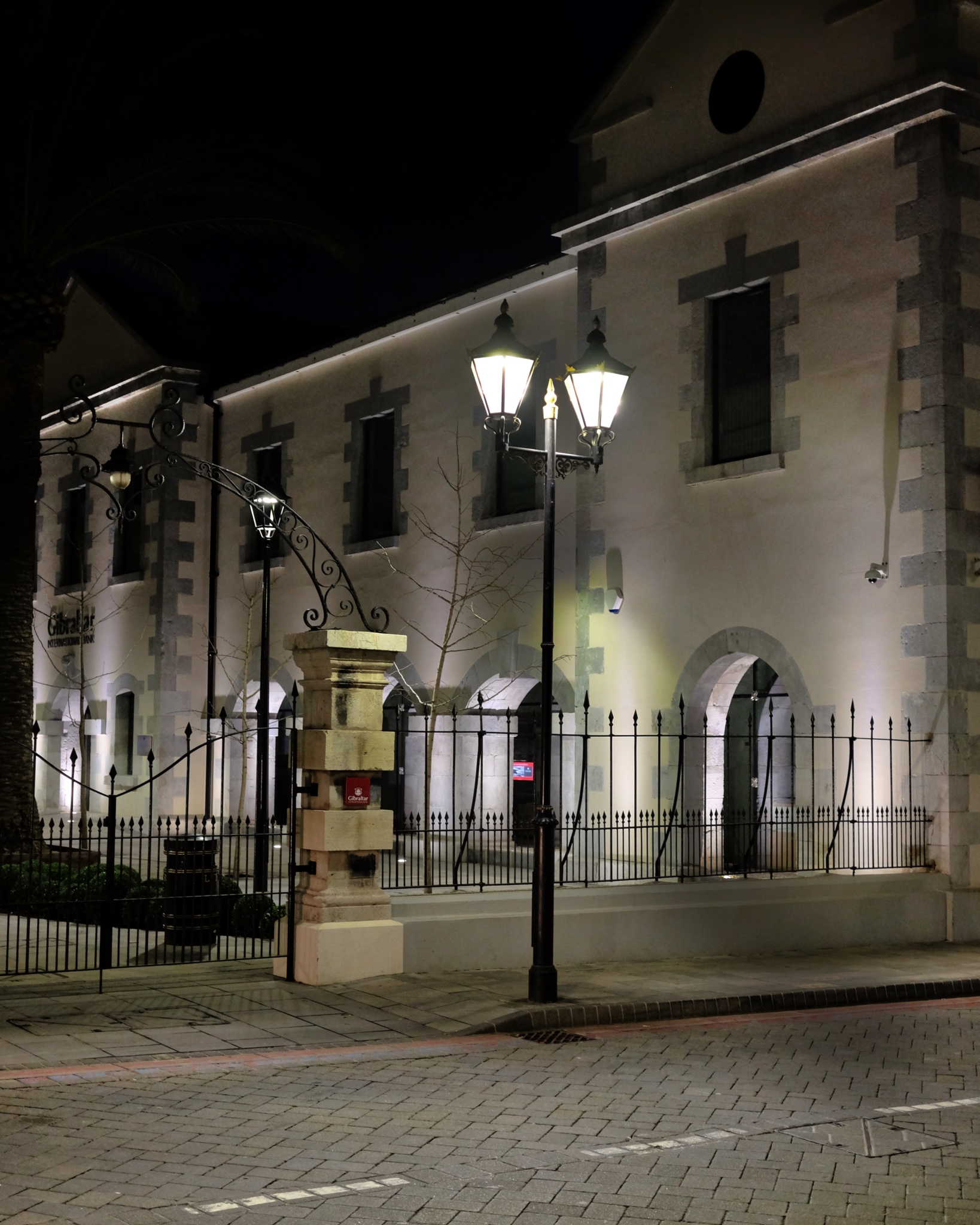 The historic government buildings were closed. Not a soul around.
The historic government buildings were closed. Not a soul around.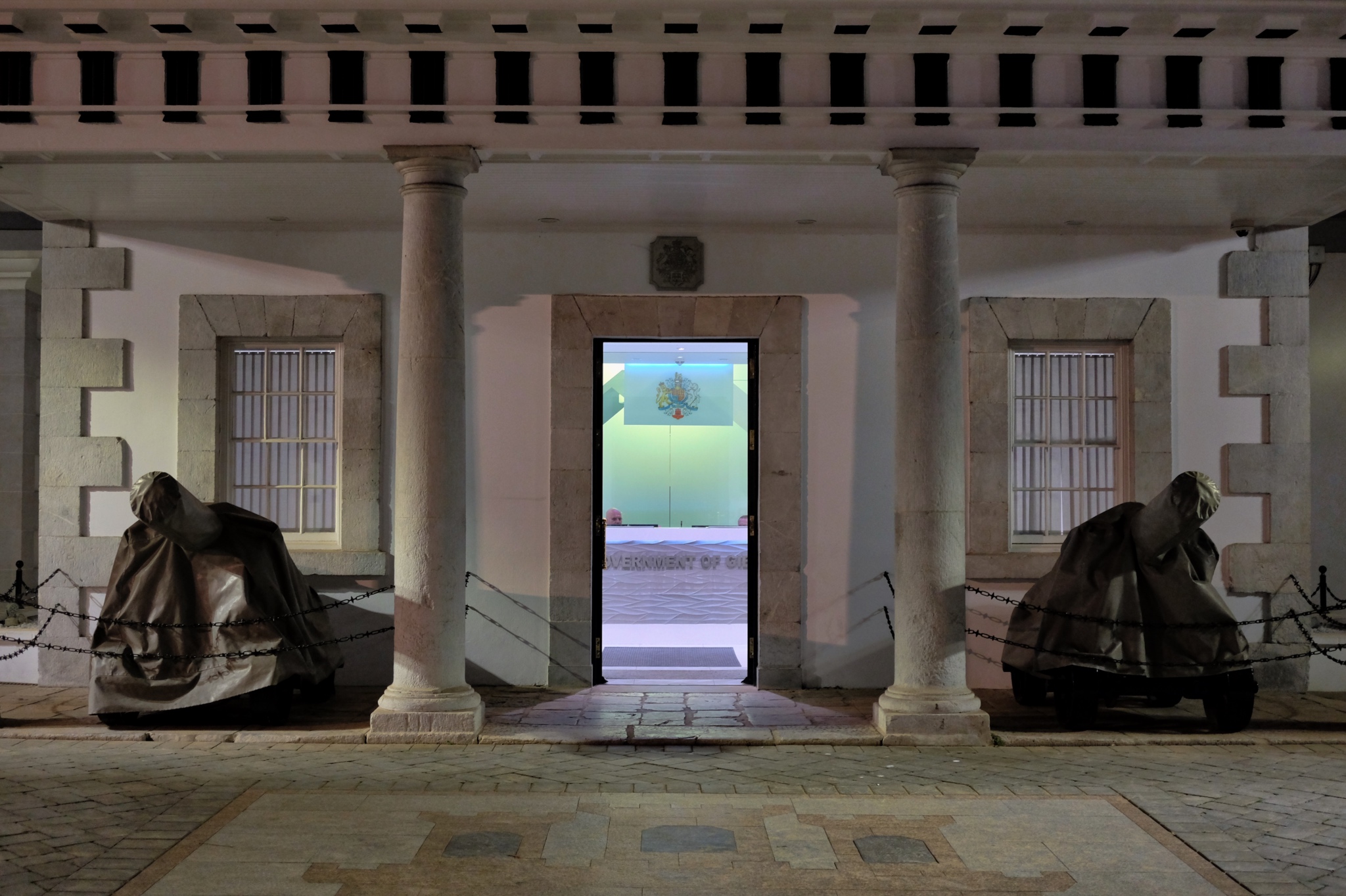 The "Government Of" . . . something or other at 01:00. Wonderful lighting . . . and only me there to see it. This must have been the police station; otherwise why were there still two men sitting behind the counter at that late hour?
The "Government Of" . . . something or other at 01:00. Wonderful lighting . . . and only me there to see it. This must have been the police station; otherwise why were there still two men sitting behind the counter at that late hour?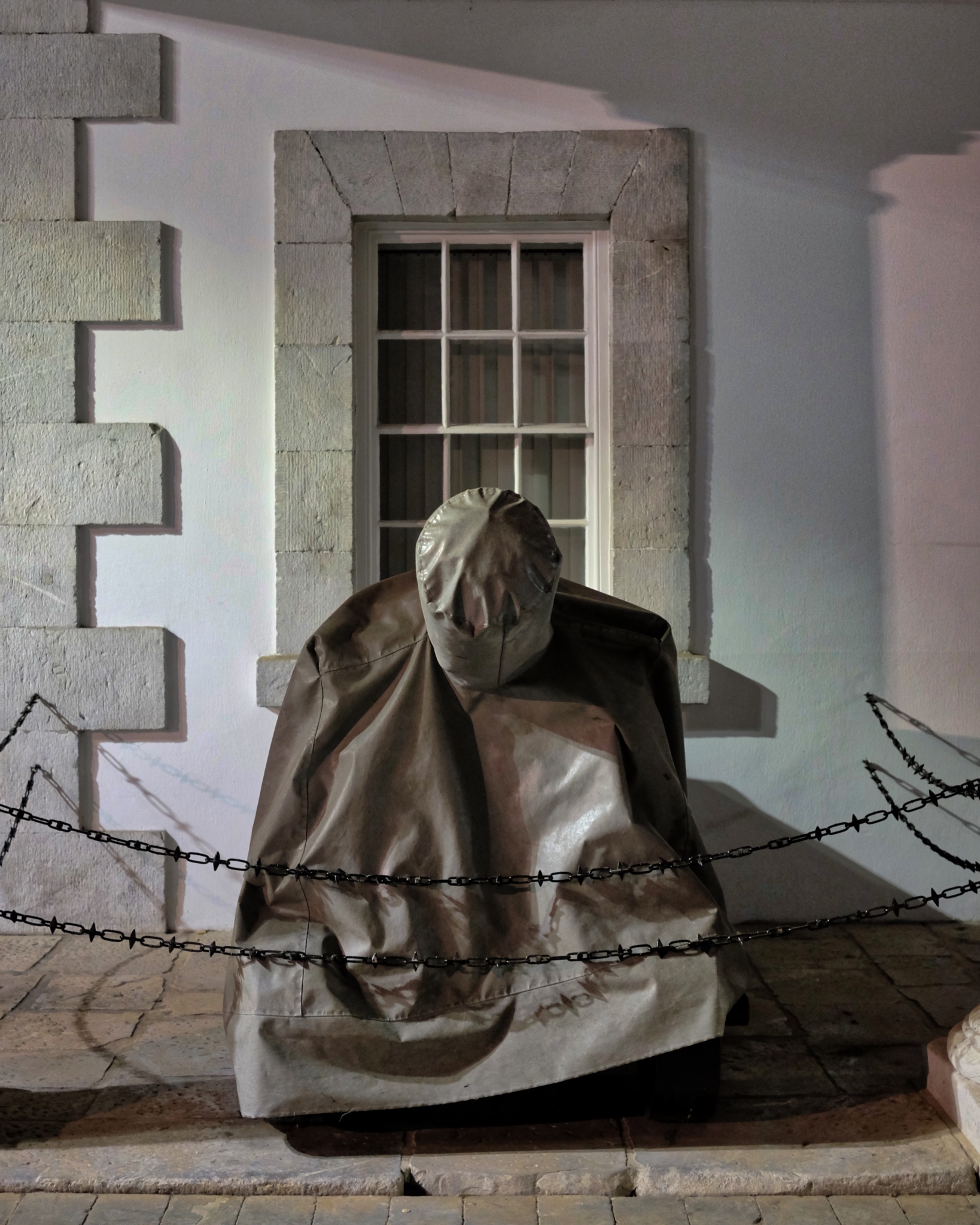 Such scrumptious shapes, line, color, shadow, and light.
Such scrumptious shapes, line, color, shadow, and light.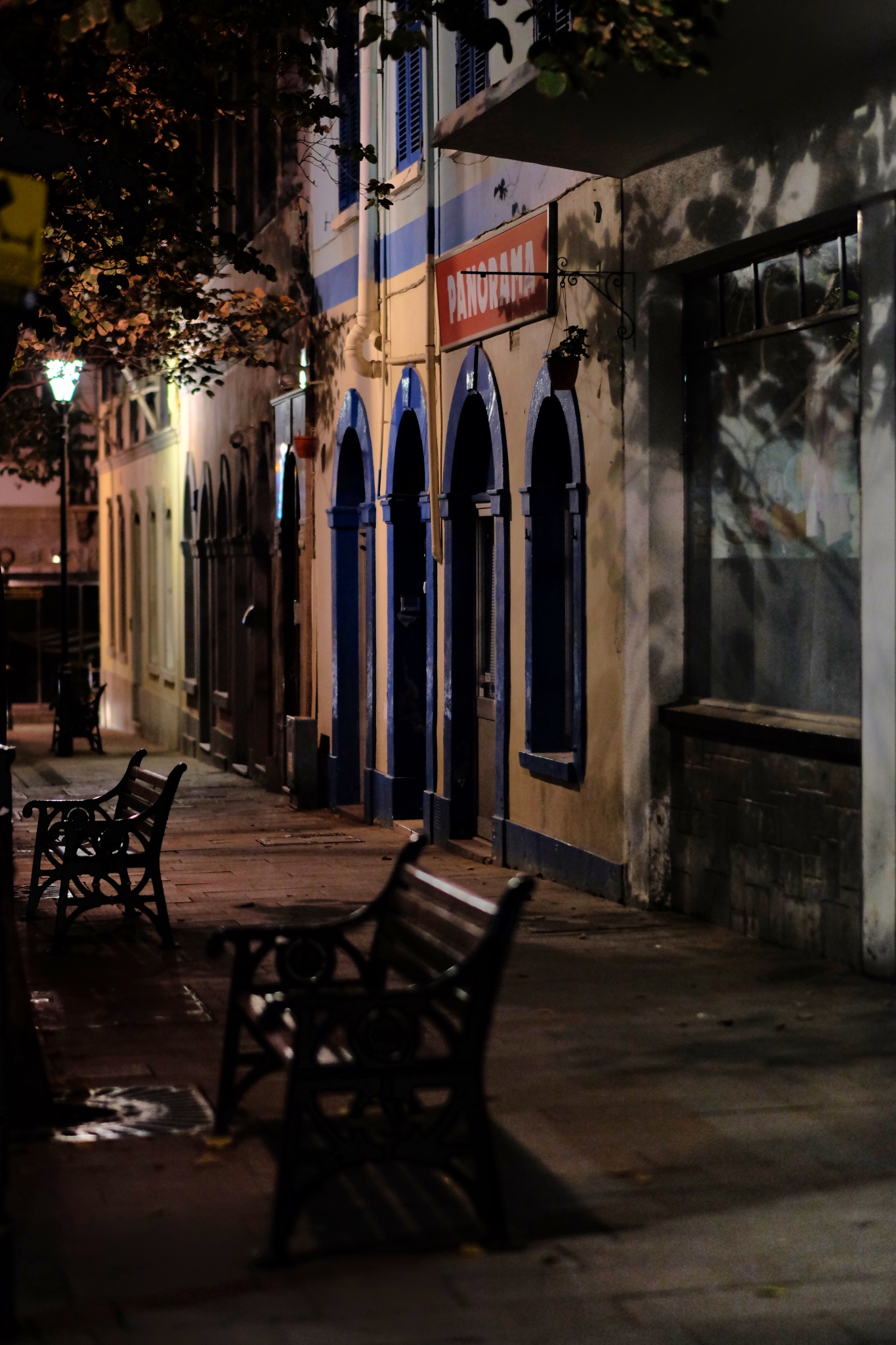 I walked through these same streets several times during the day without really noticing the relationships between shapes and structures . . .
I walked through these same streets several times during the day without really noticing the relationships between shapes and structures . . .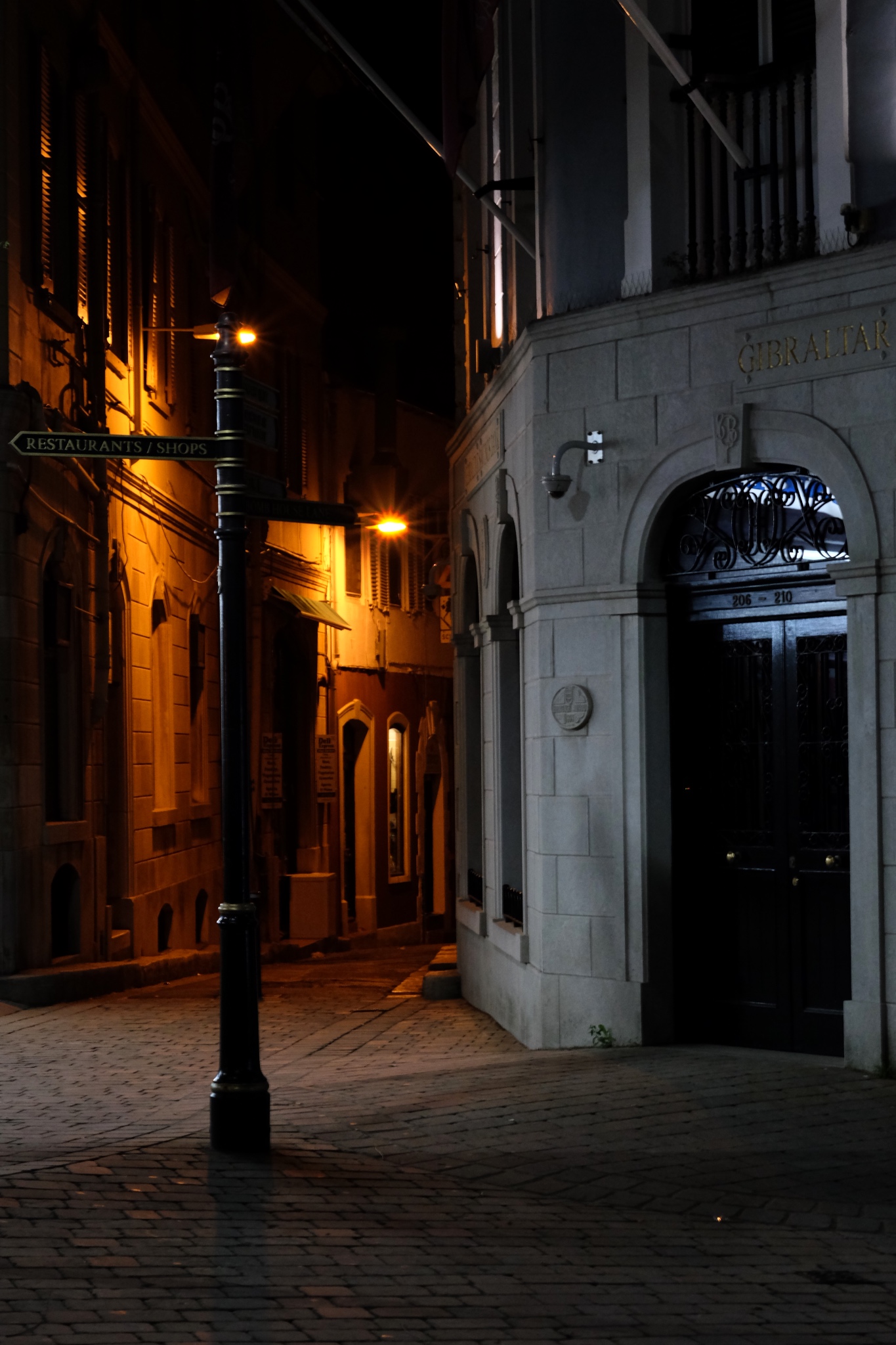 An inviting passage to . . . . who knows where.
An inviting passage to . . . . who knows where.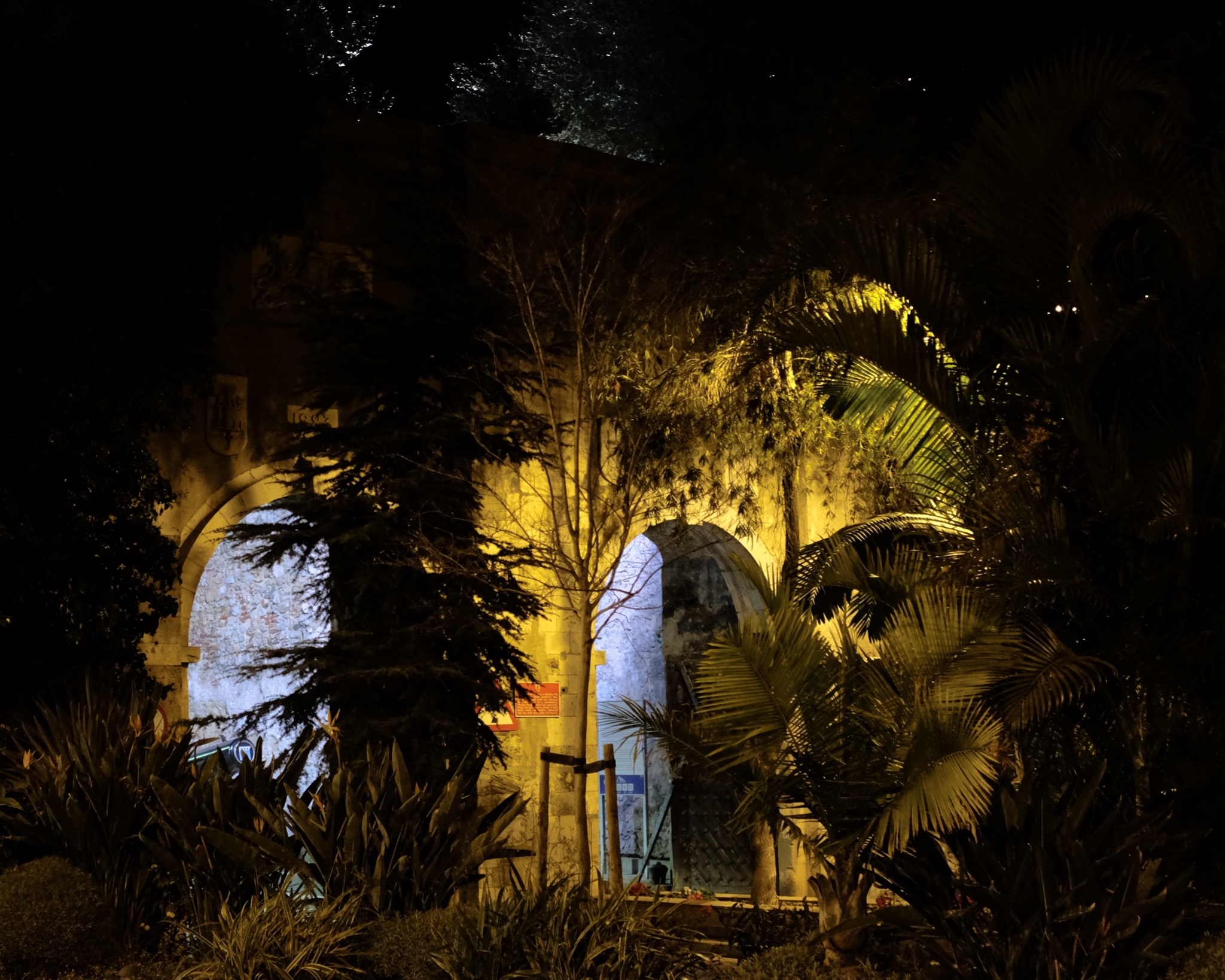 I literally walked from one end of the town to the other in only two hours . . . back out the southern city gate . . .
I literally walked from one end of the town to the other in only two hours . . . back out the southern city gate . . .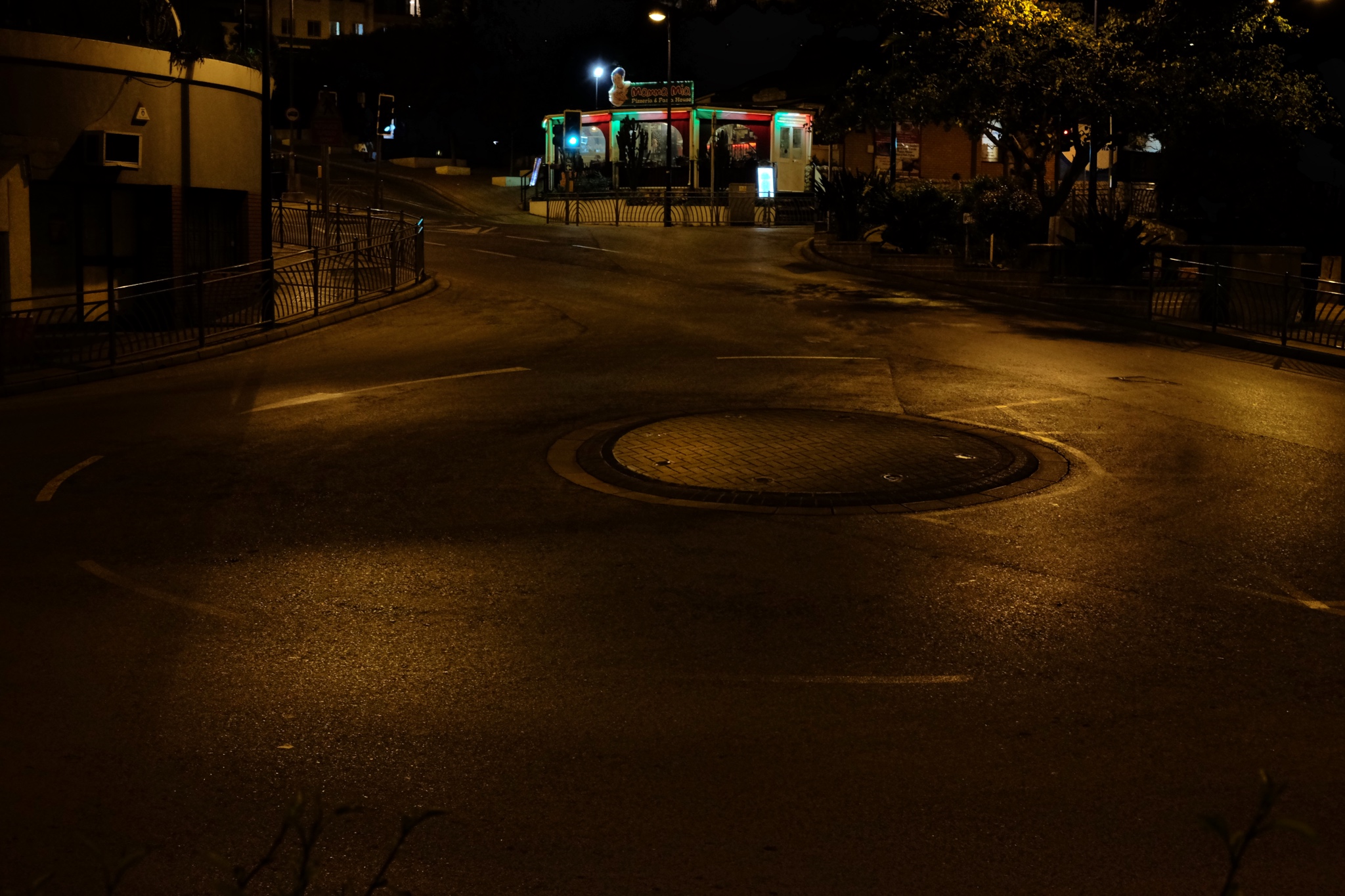 I walked all the eay back an abandoned traffic circle . . . and then back to my nearby hotel. I had had such an inspiring walkabout in the night streets of Gibraltar.
I walked all the eay back an abandoned traffic circle . . . and then back to my nearby hotel. I had had such an inspiring walkabout in the night streets of Gibraltar.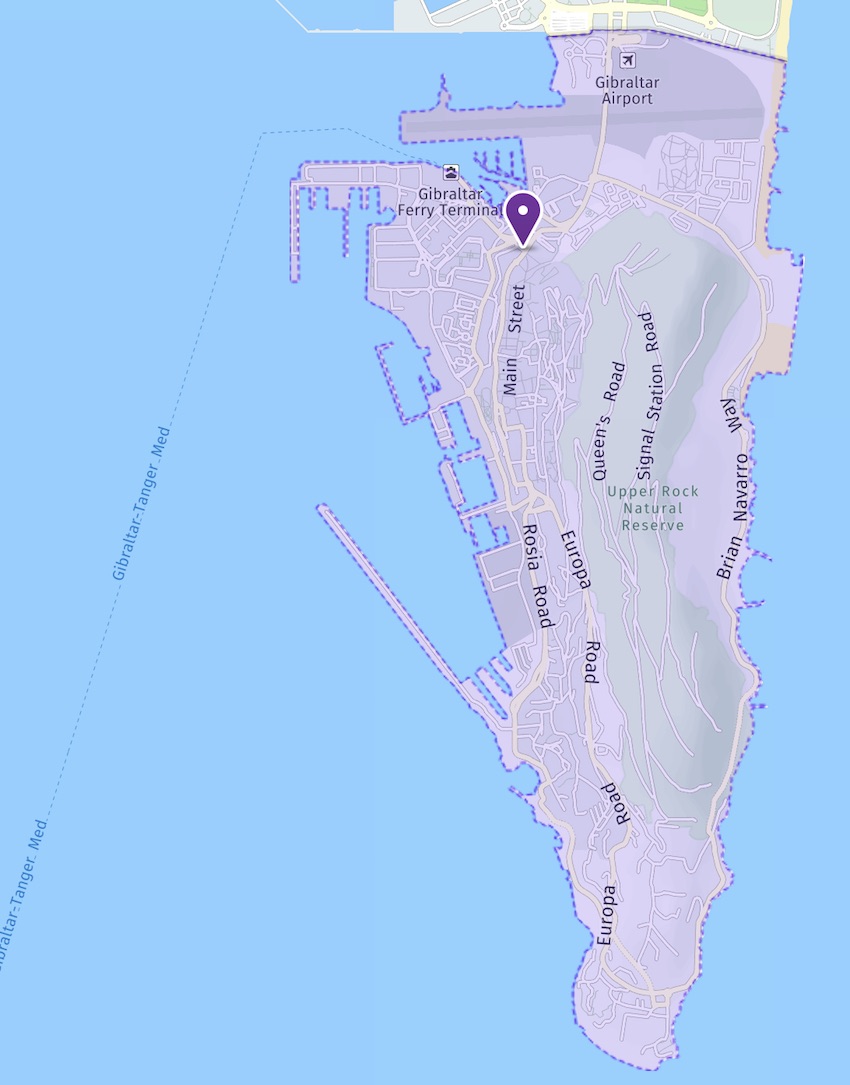
In The Garden: Earliest Spring in the Pacific Northwest
 Monday, April 16, 2018 at 7:14AM
Monday, April 16, 2018 at 7:14AM  The earliest days, misty and damp. The end of a long, wet winter in the Pacific Northwest. This is the garden as it begins to awaken.
The earliest days, misty and damp. The end of a long, wet winter in the Pacific Northwest. This is the garden as it begins to awaken. Lat years glory subdues . . . but awakening.
Lat years glory subdues . . . but awakening.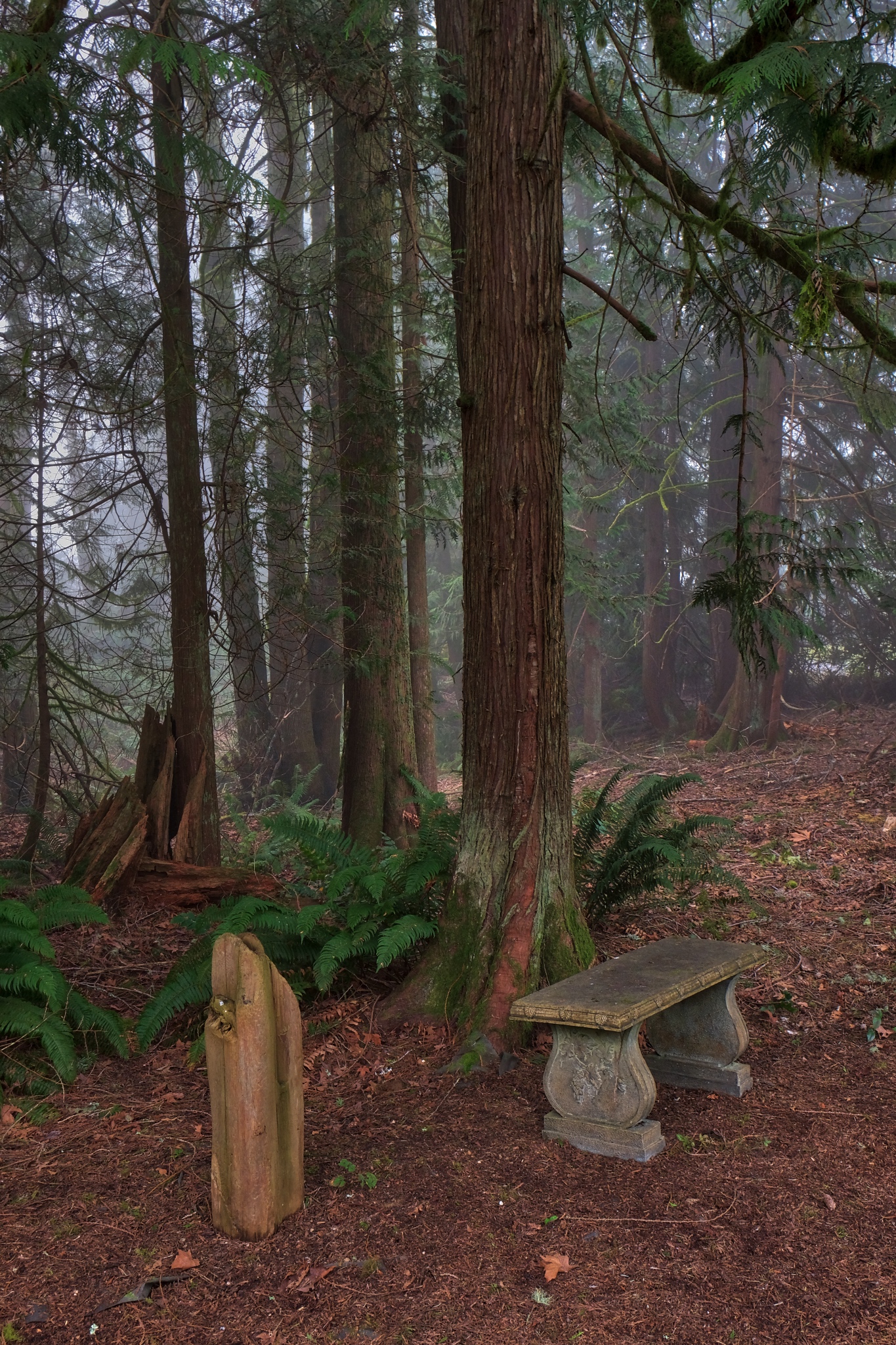 The misty forest that surrounds the house is beginning to stir.
The misty forest that surrounds the house is beginning to stir.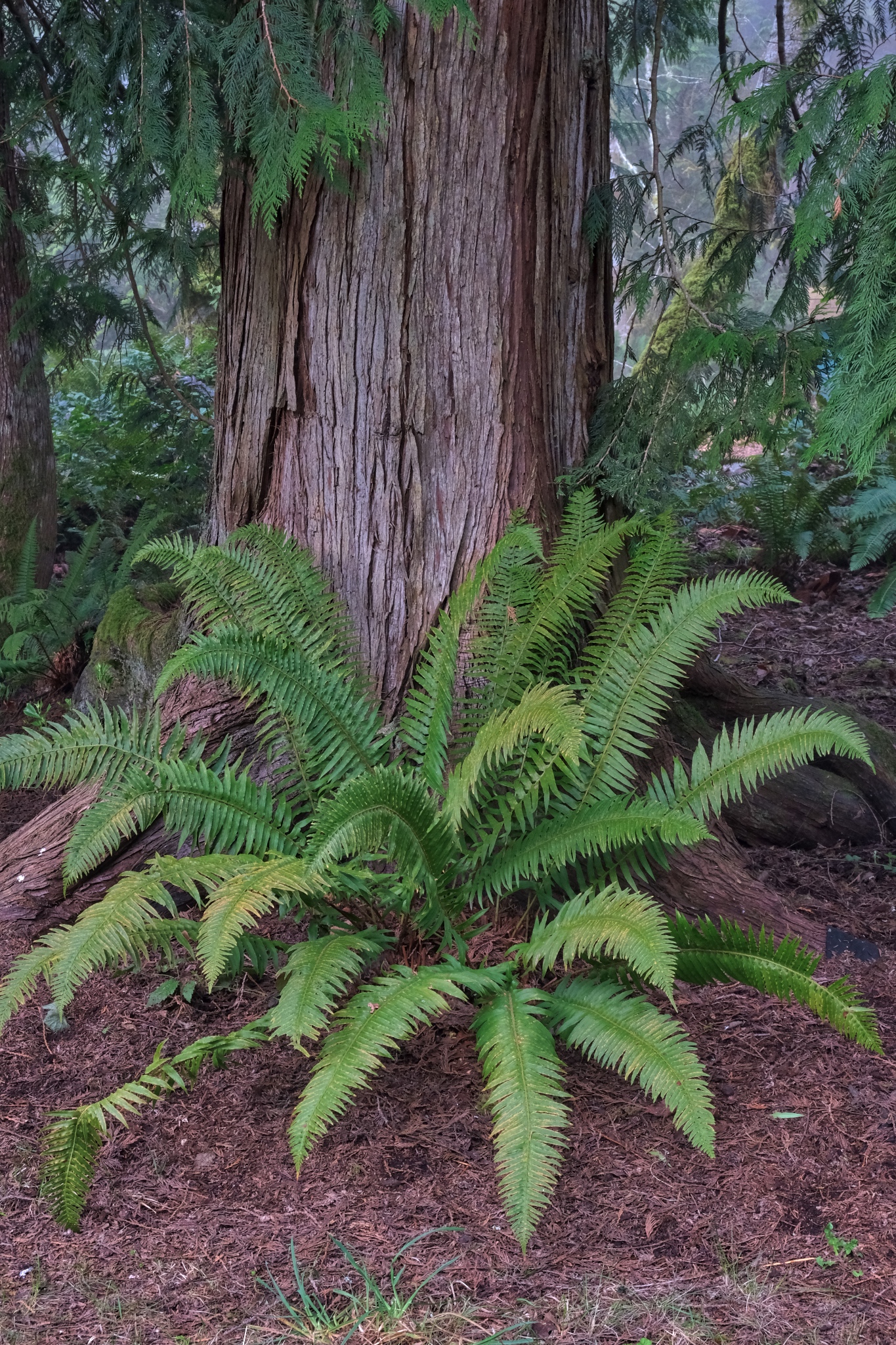 The sheltered ferns made it through the cold snaps.
The sheltered ferns made it through the cold snaps.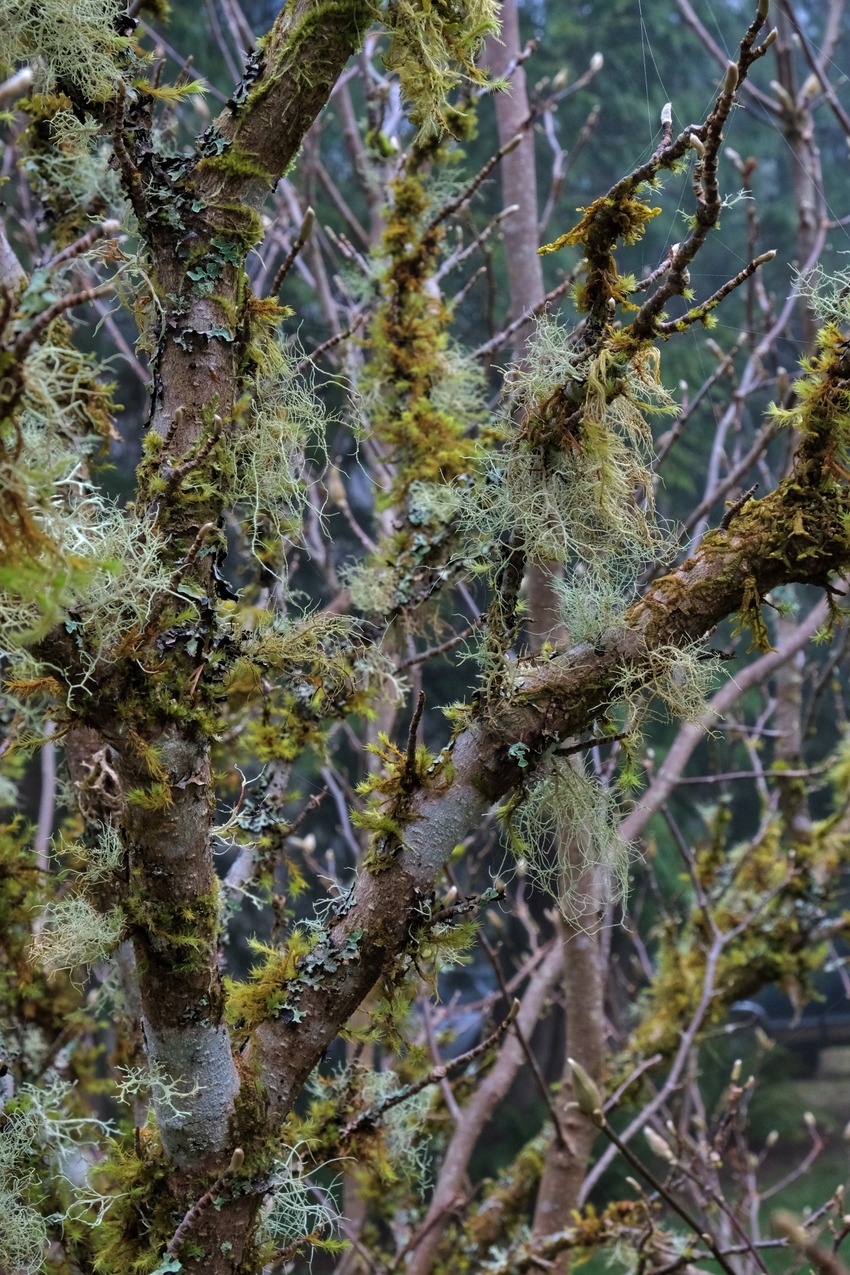 The mosses and lichens are adapted to thrive through the winter . . . when all the leaves have fallen from the trees.
The mosses and lichens are adapted to thrive through the winter . . . when all the leaves have fallen from the trees.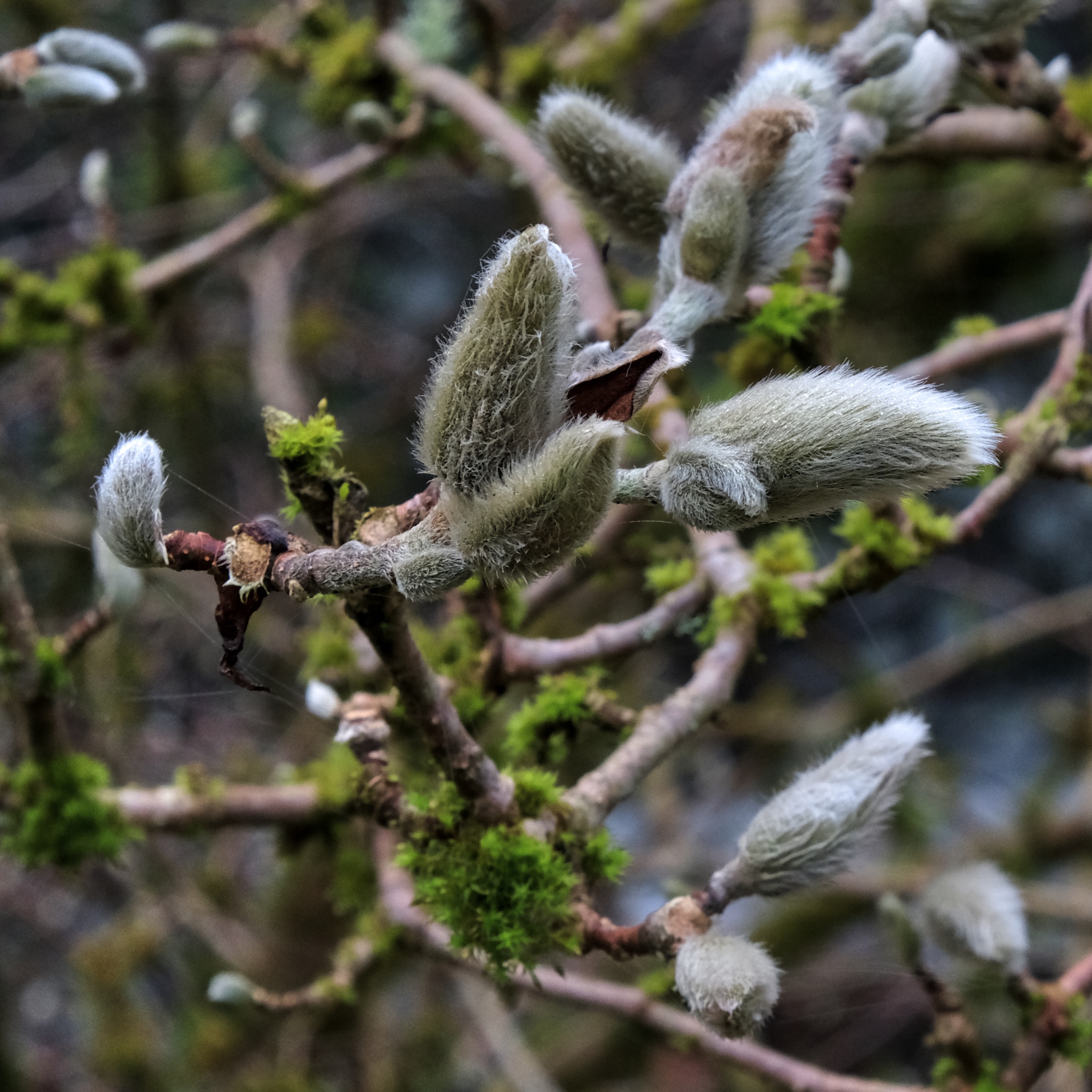 Here and there buds are starting to appear.
Here and there buds are starting to appear.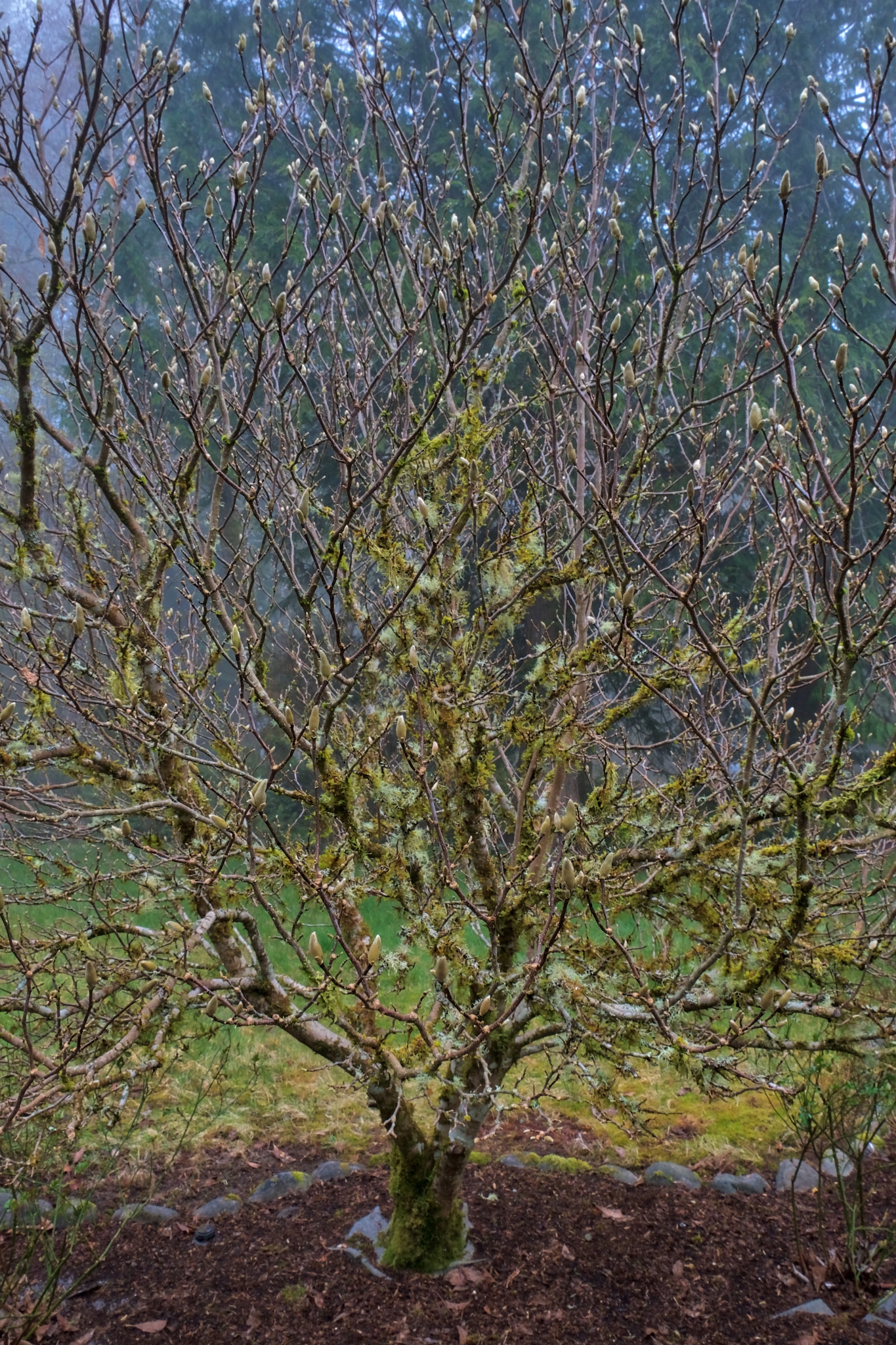 The front yard Magnolia flashes it's first promise of wild flowering . . .
The front yard Magnolia flashes it's first promise of wild flowering . . .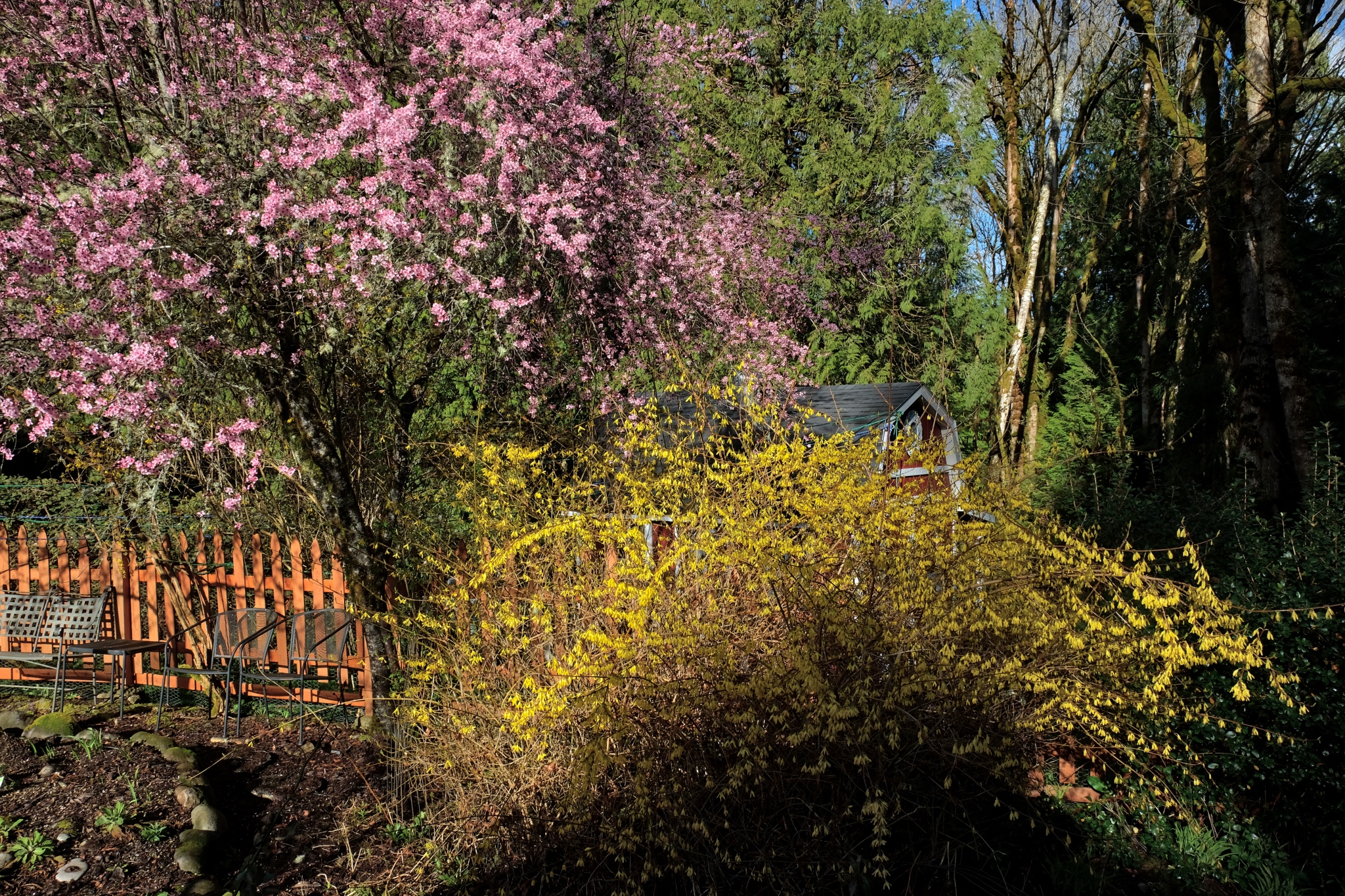 A week later . . . and the sun broke through for an afternoon of amazing light and color!
A week later . . . and the sun broke through for an afternoon of amazing light and color!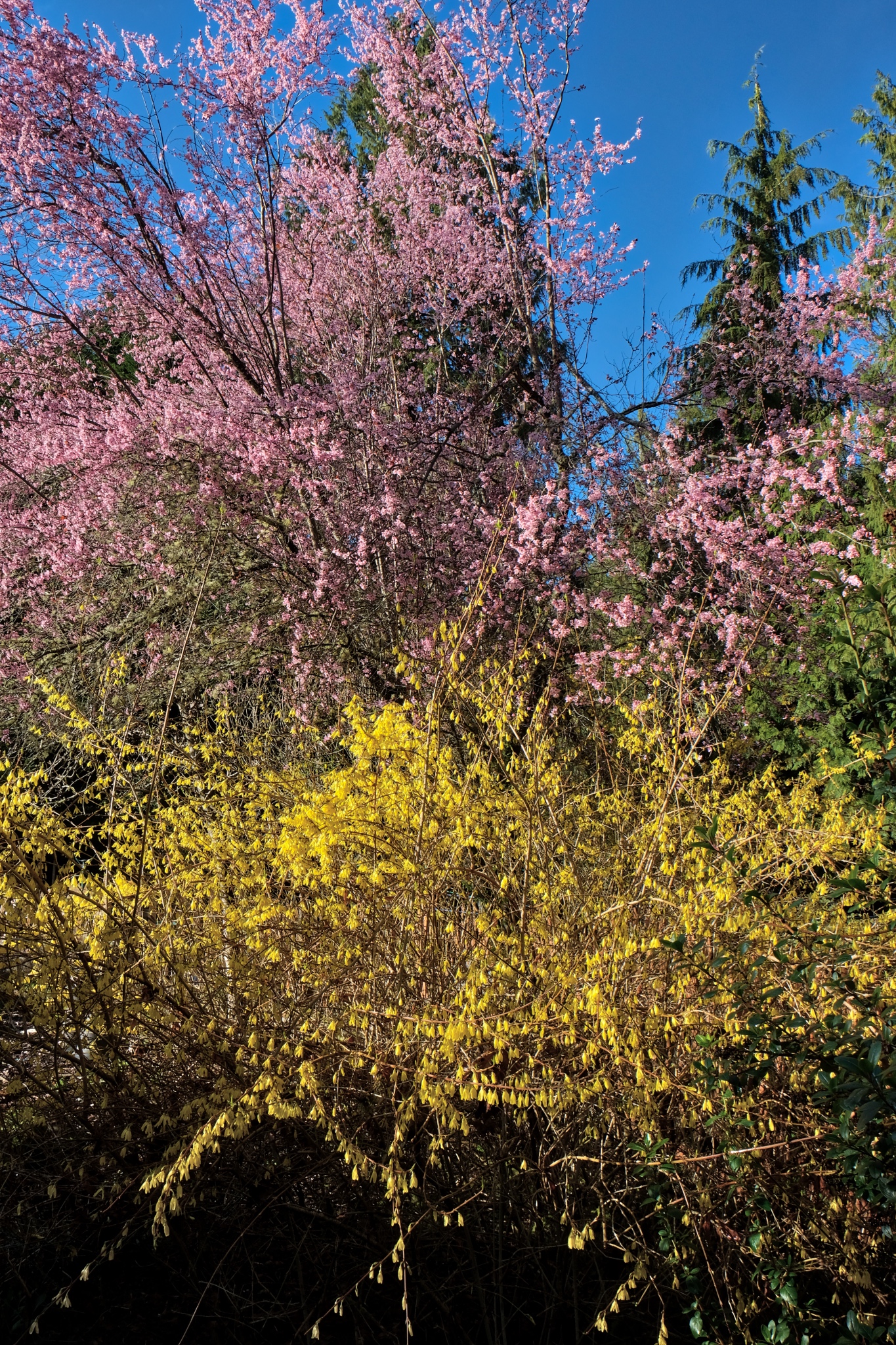 The bold blossoms of the Forsythia and Oriental Plum dominate the garden.
The bold blossoms of the Forsythia and Oriental Plum dominate the garden.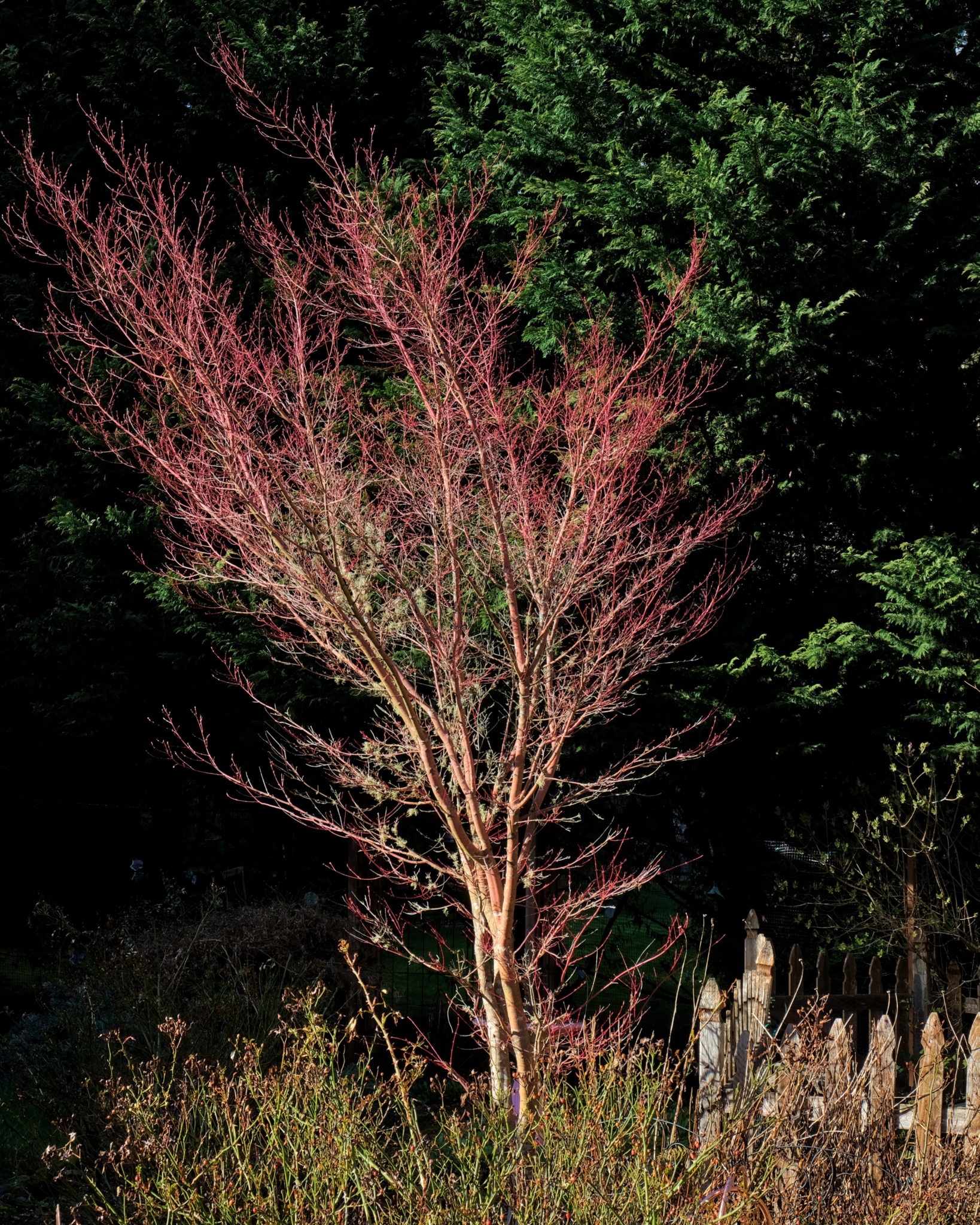 You can almost hear the trunks and branches stretch under the turgor rising from the roots.
You can almost hear the trunks and branches stretch under the turgor rising from the roots.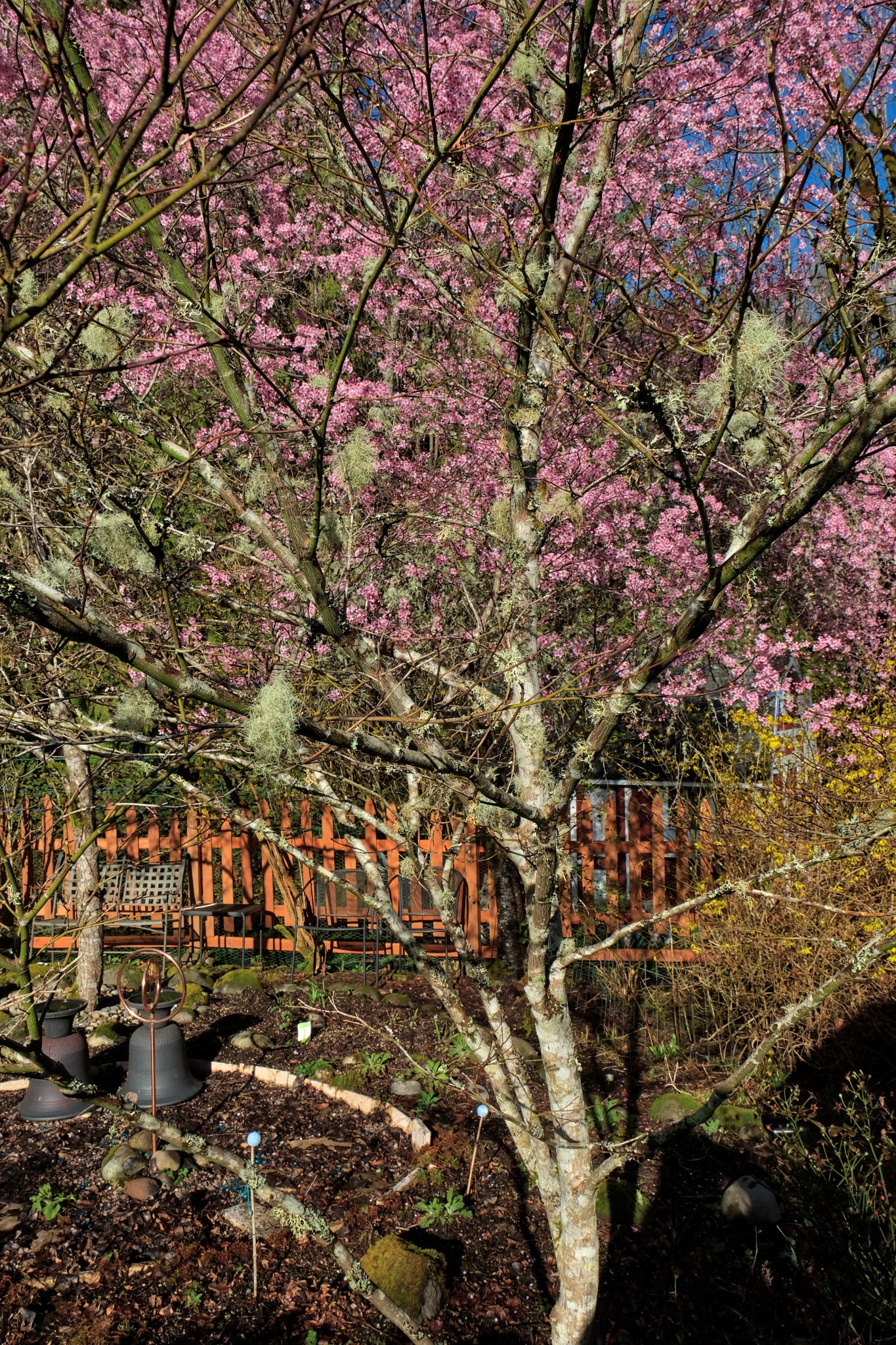 Promises of what is to come in the garden.
Promises of what is to come in the garden.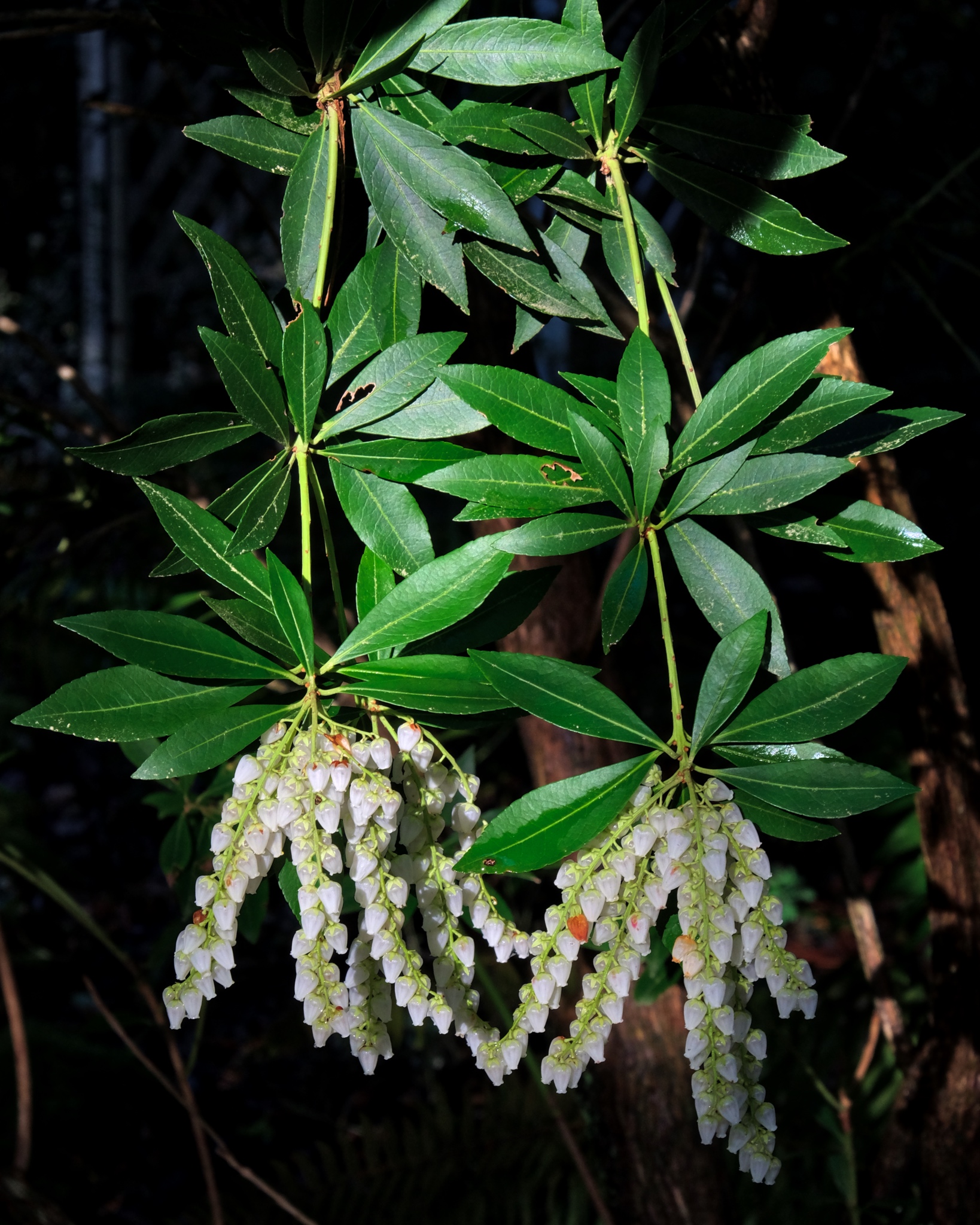 A few brave blossoms gambling against a late frost.
A few brave blossoms gambling against a late frost.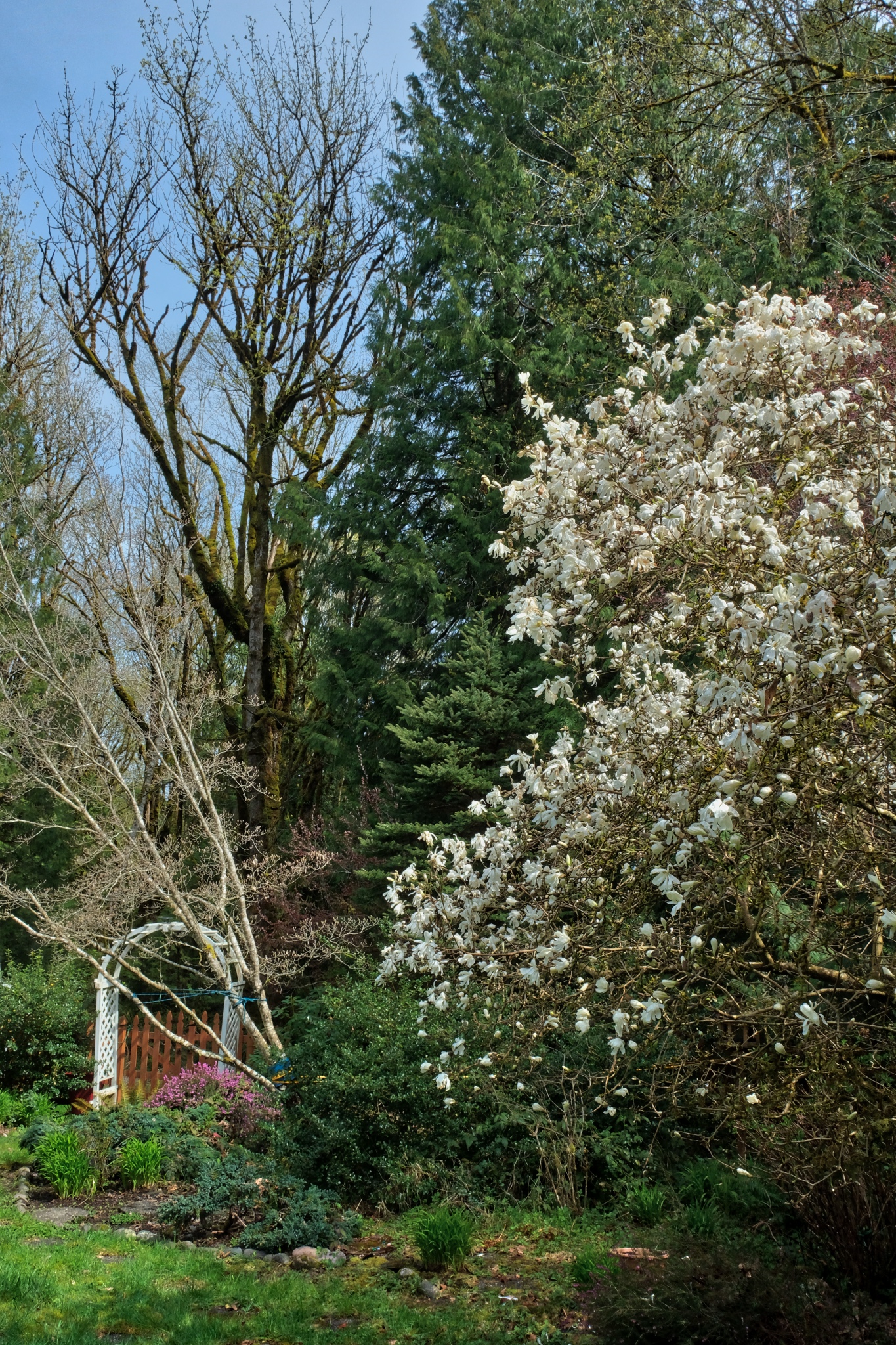 A sunny day one week later . . . and the whit Magnolia has burst out in a constellation of white flowers.
A sunny day one week later . . . and the whit Magnolia has burst out in a constellation of white flowers.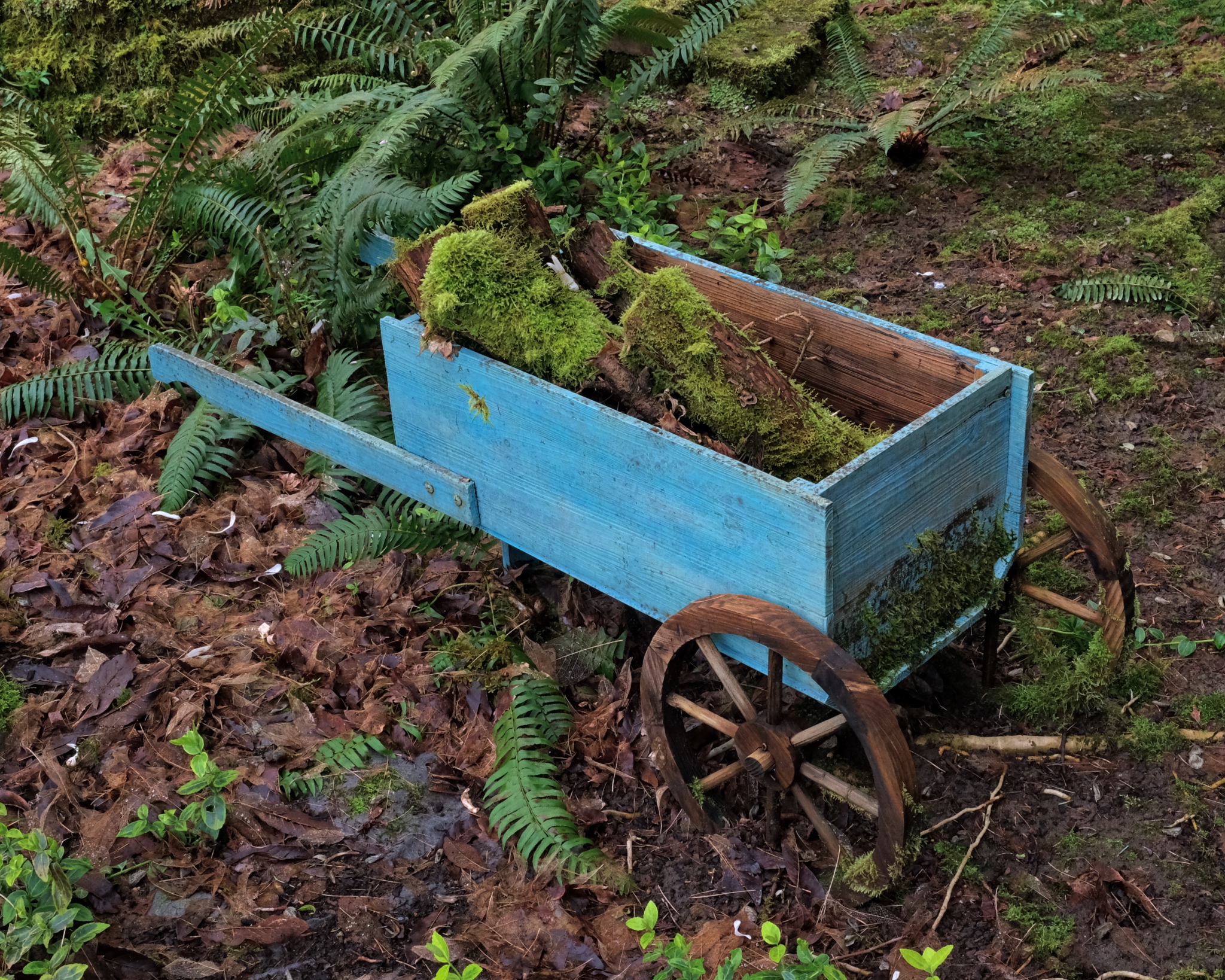 A sunny blue garden wheelbarrow . . .
A sunny blue garden wheelbarrow . . . 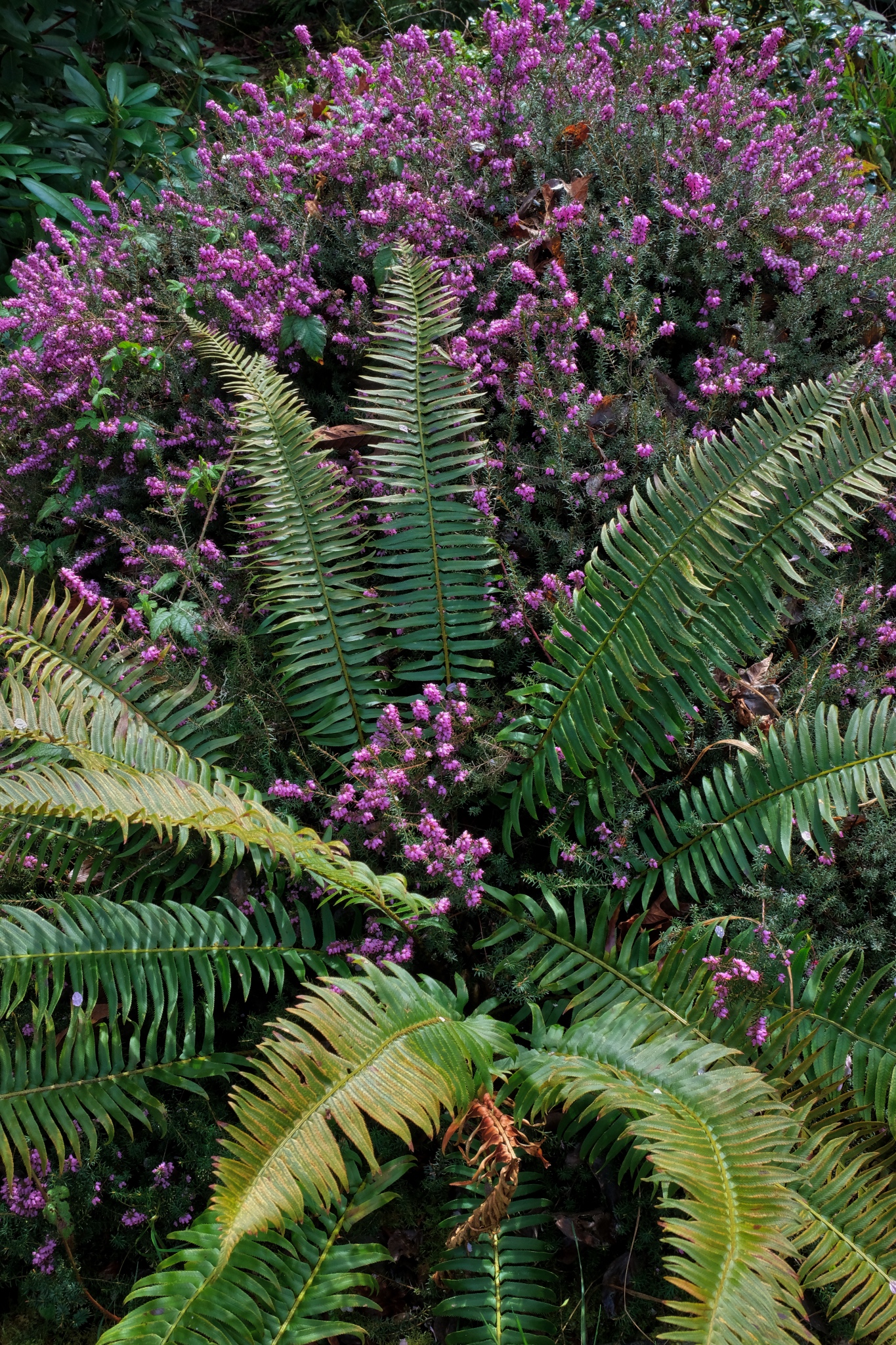 New flowering everywhere!
New flowering everywhere!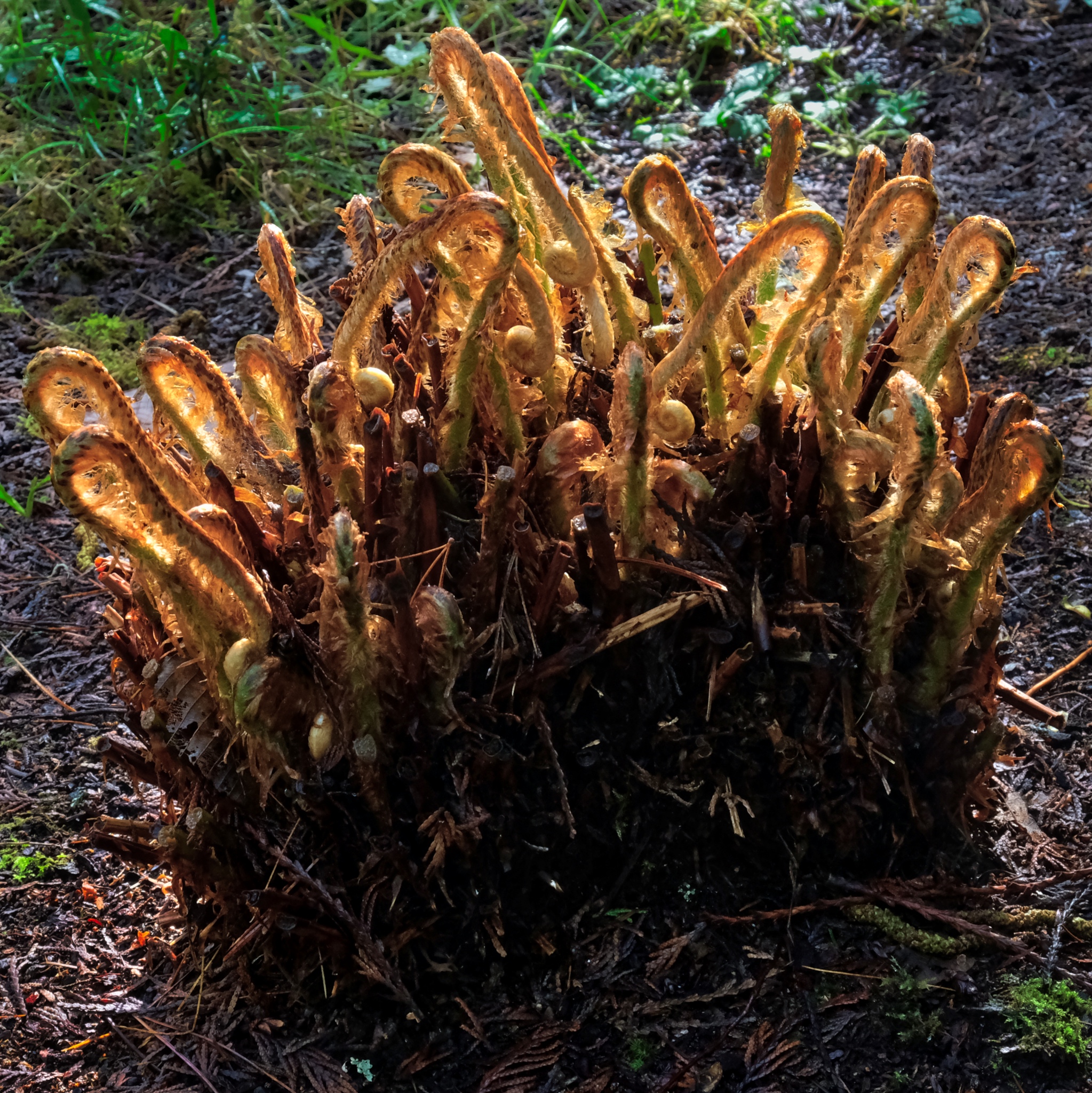 The ferns seem to be exploding out of the ground!
The ferns seem to be exploding out of the ground!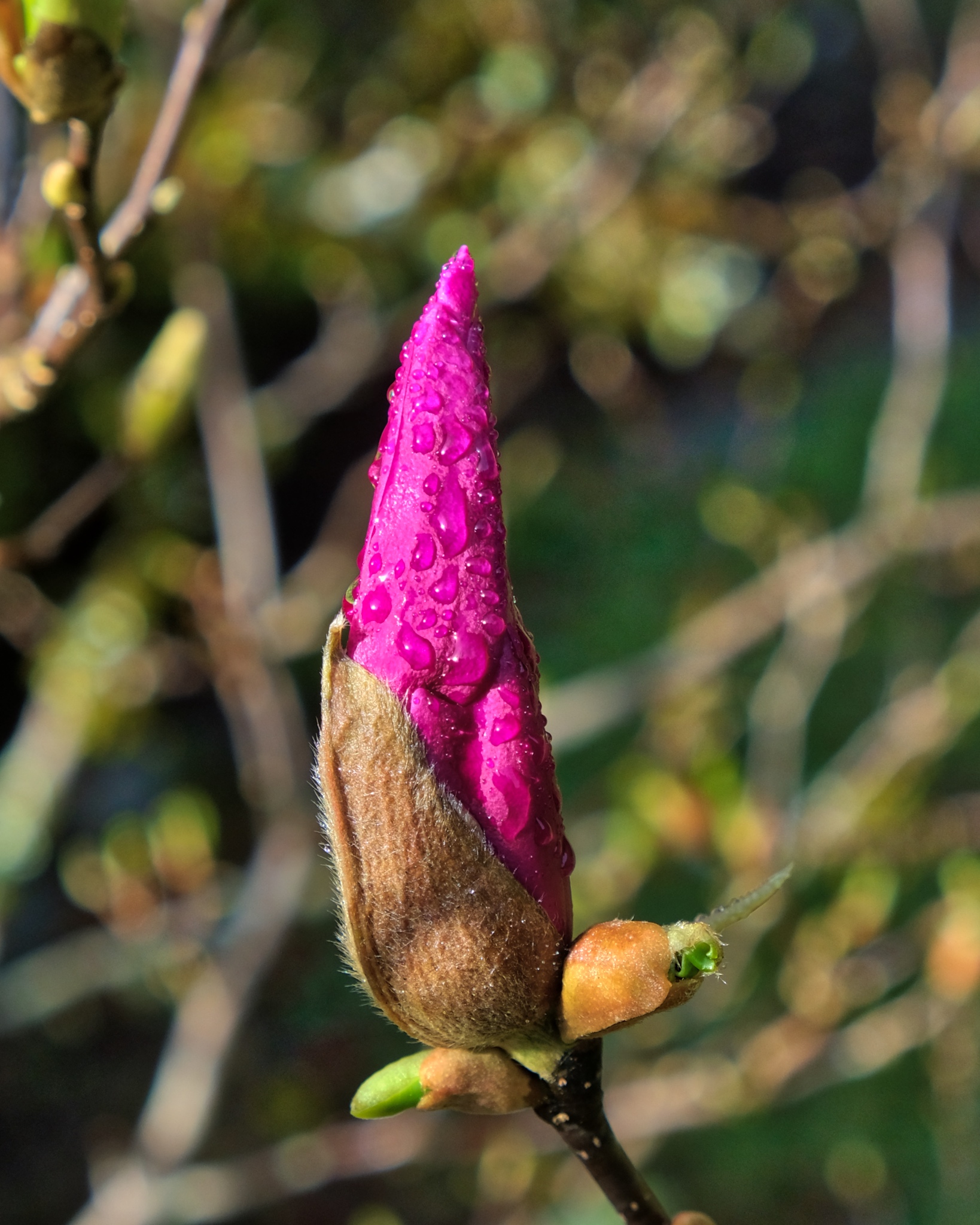 The purple Magnolia is beginning to show color in its buds.
The purple Magnolia is beginning to show color in its buds.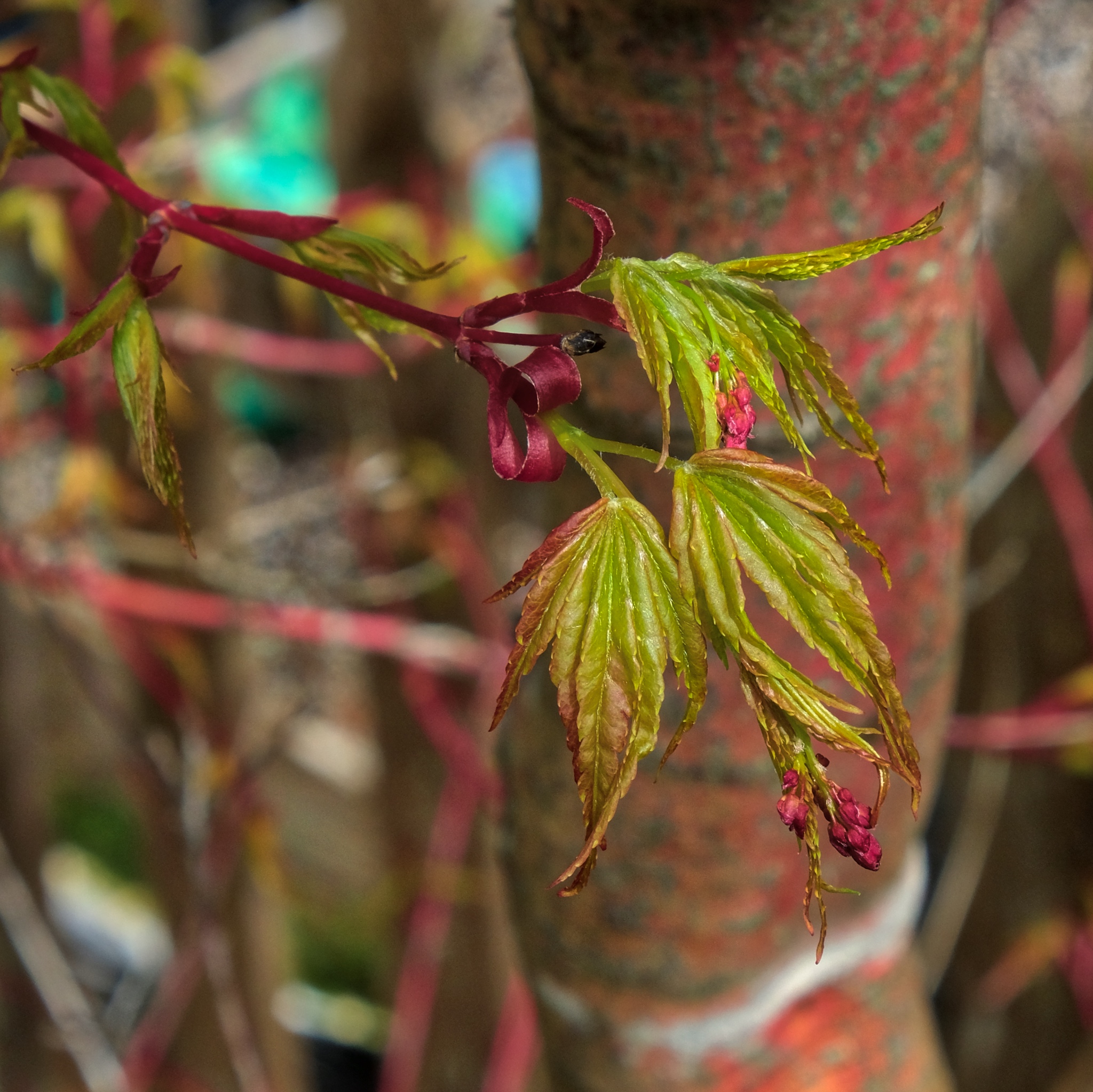 Leafing . . . right before your eyes.
Leafing . . . right before your eyes.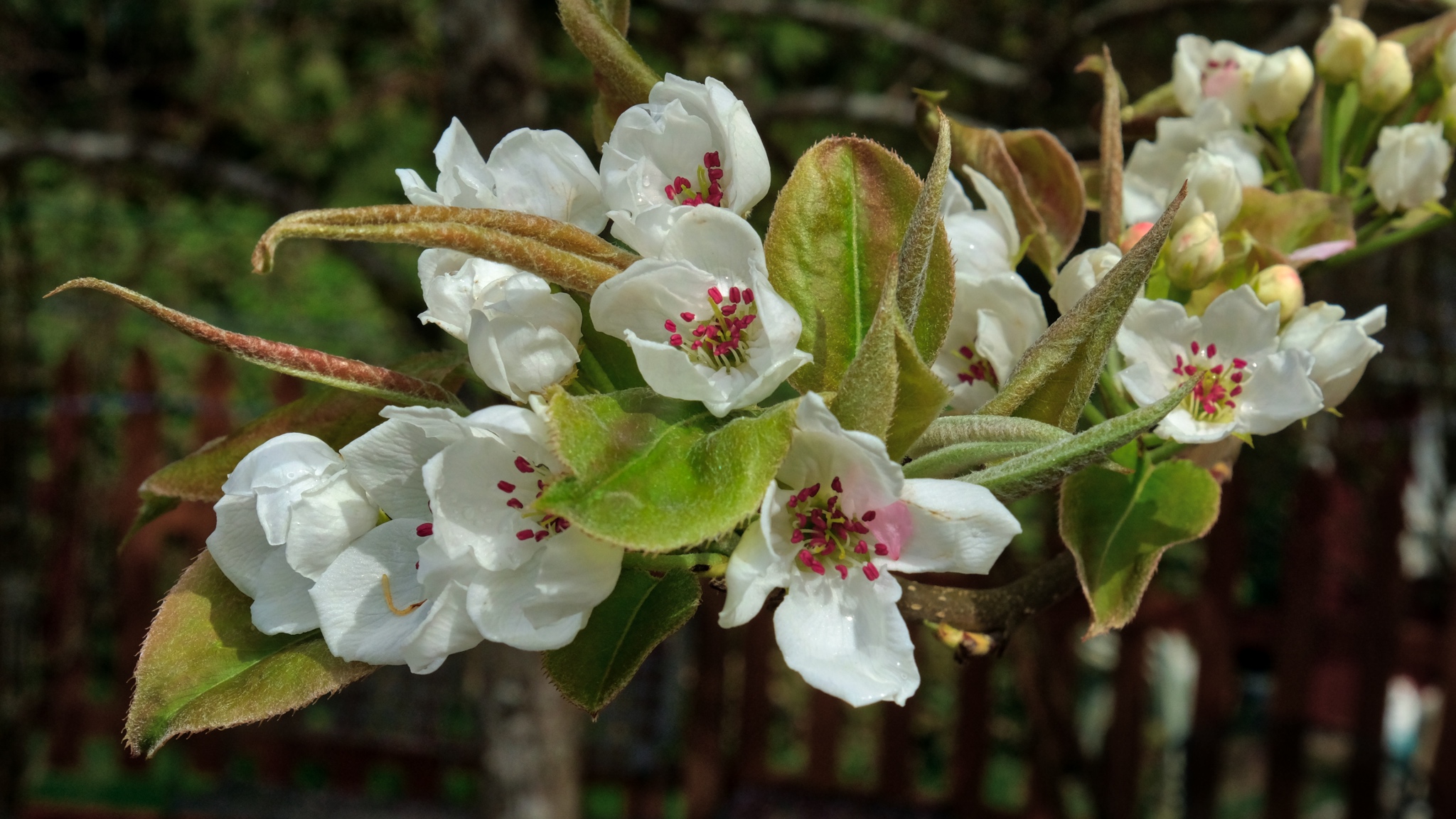 The Japanese Pear blossoms seemed to appear overnight!
The Japanese Pear blossoms seemed to appear overnight!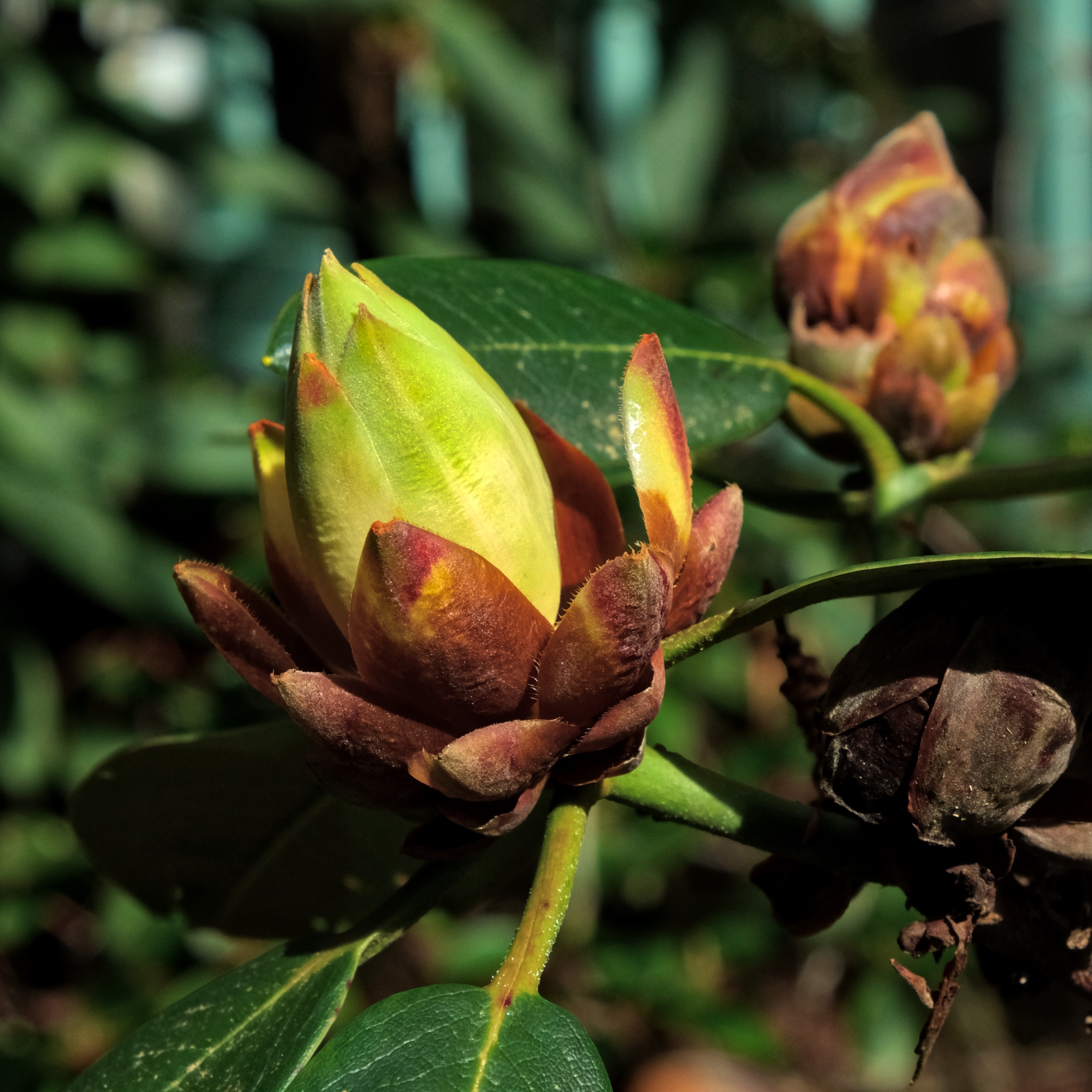 The rhododendron buds continue to swell . . .
The rhododendron buds continue to swell . . .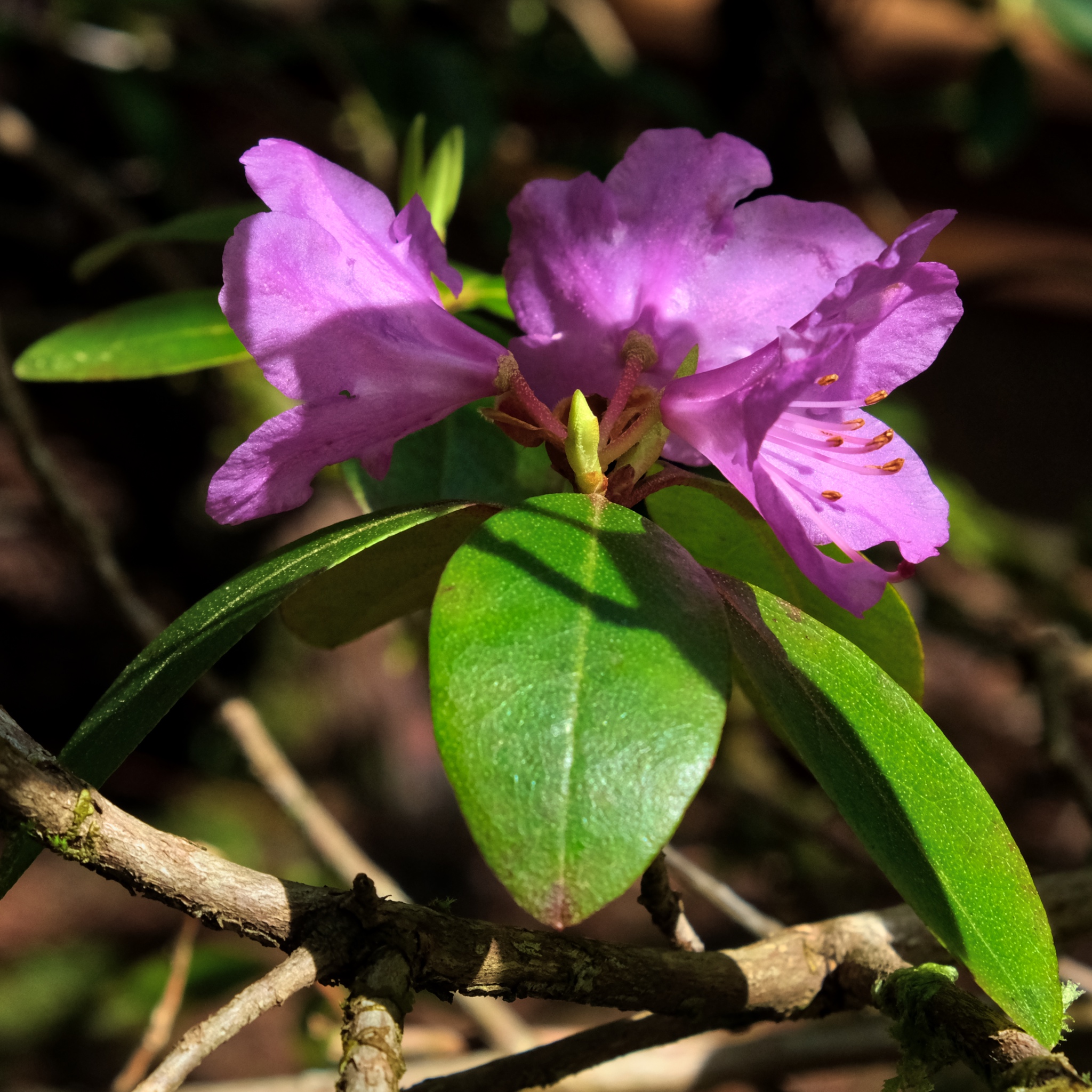 Down under the rhododendrons, a small violet flower blooms.
Down under the rhododendrons, a small violet flower blooms.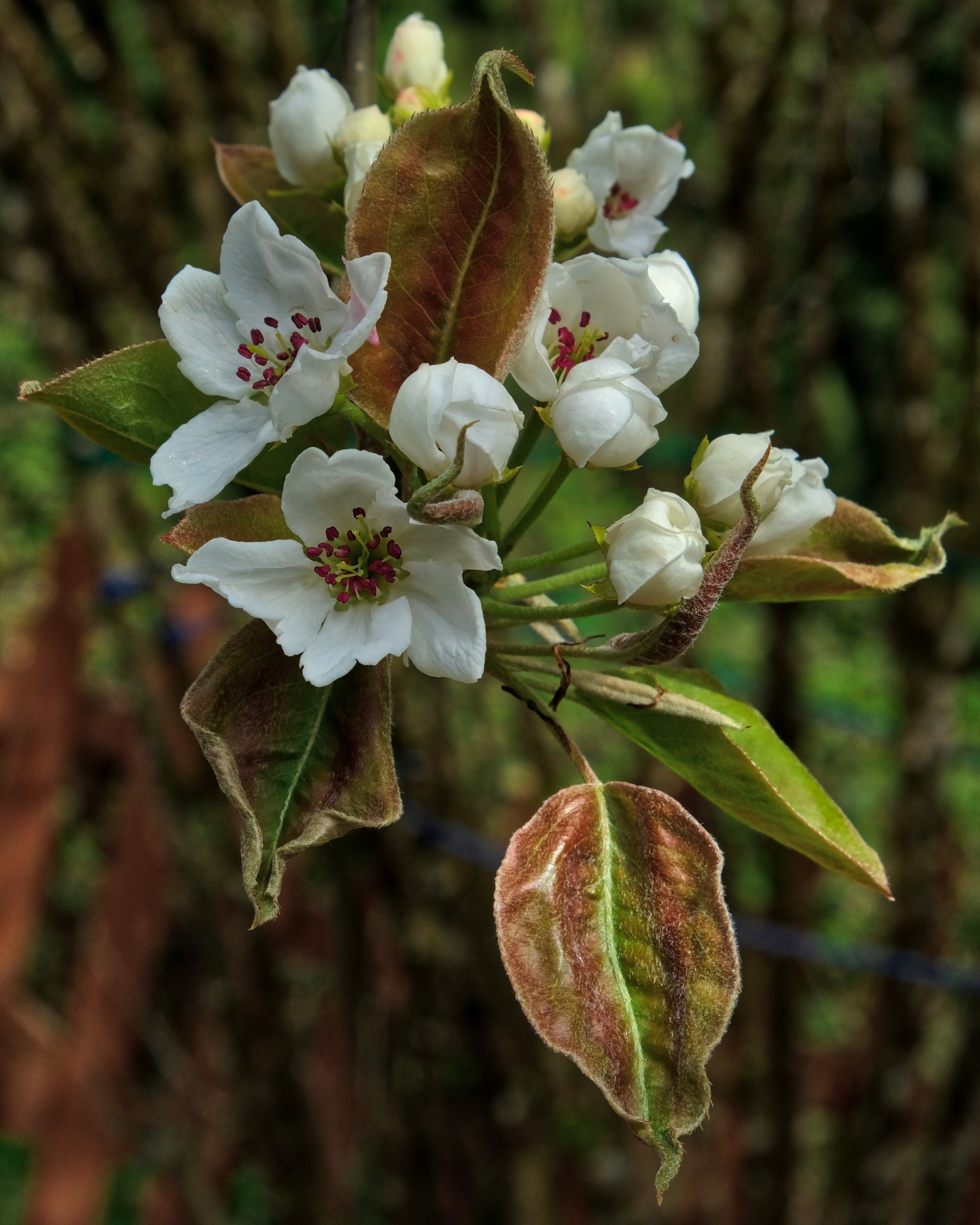 Like an arrangement from a florist . . .
Like an arrangement from a florist . . .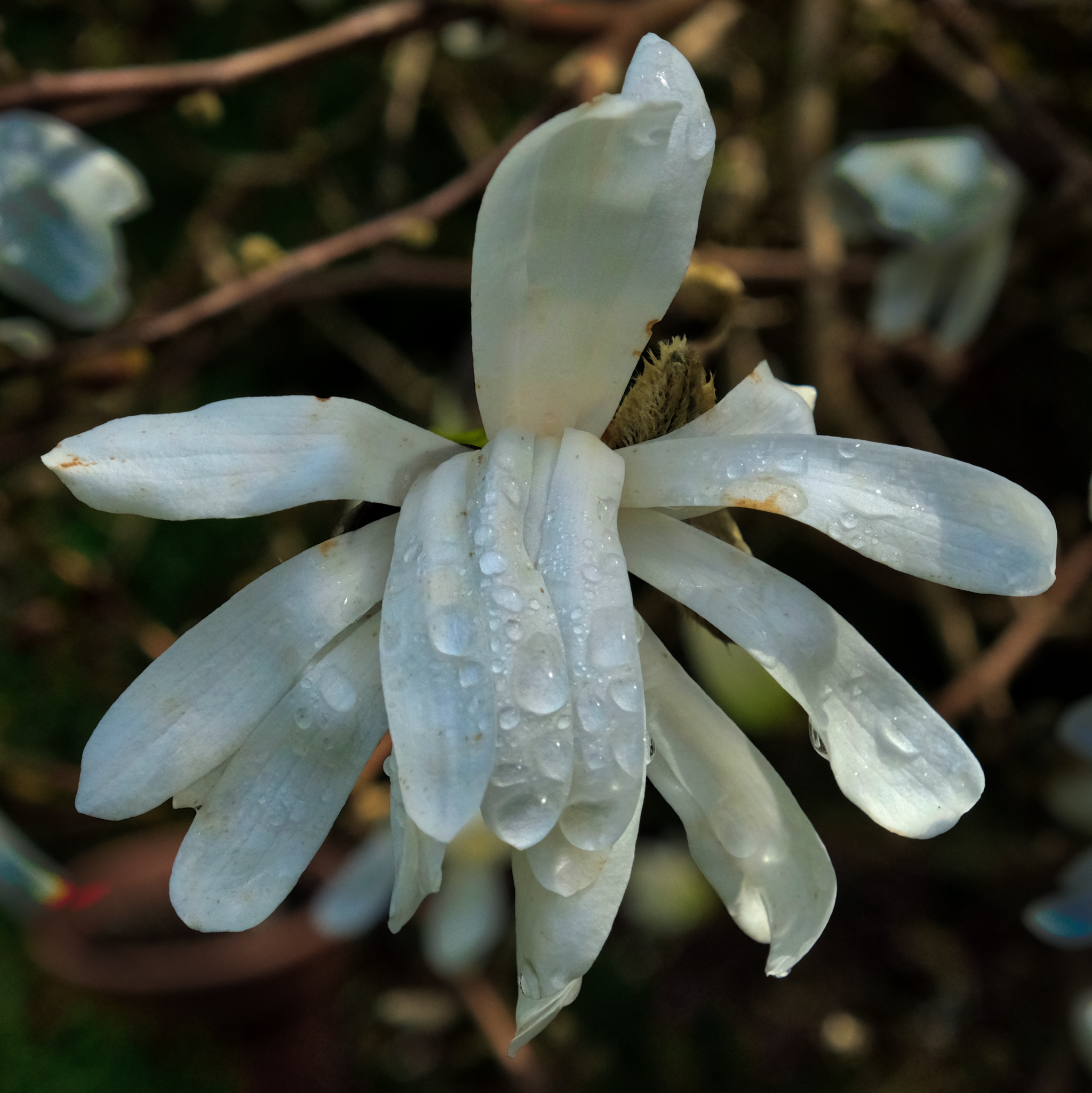 White Magnolia.
White Magnolia.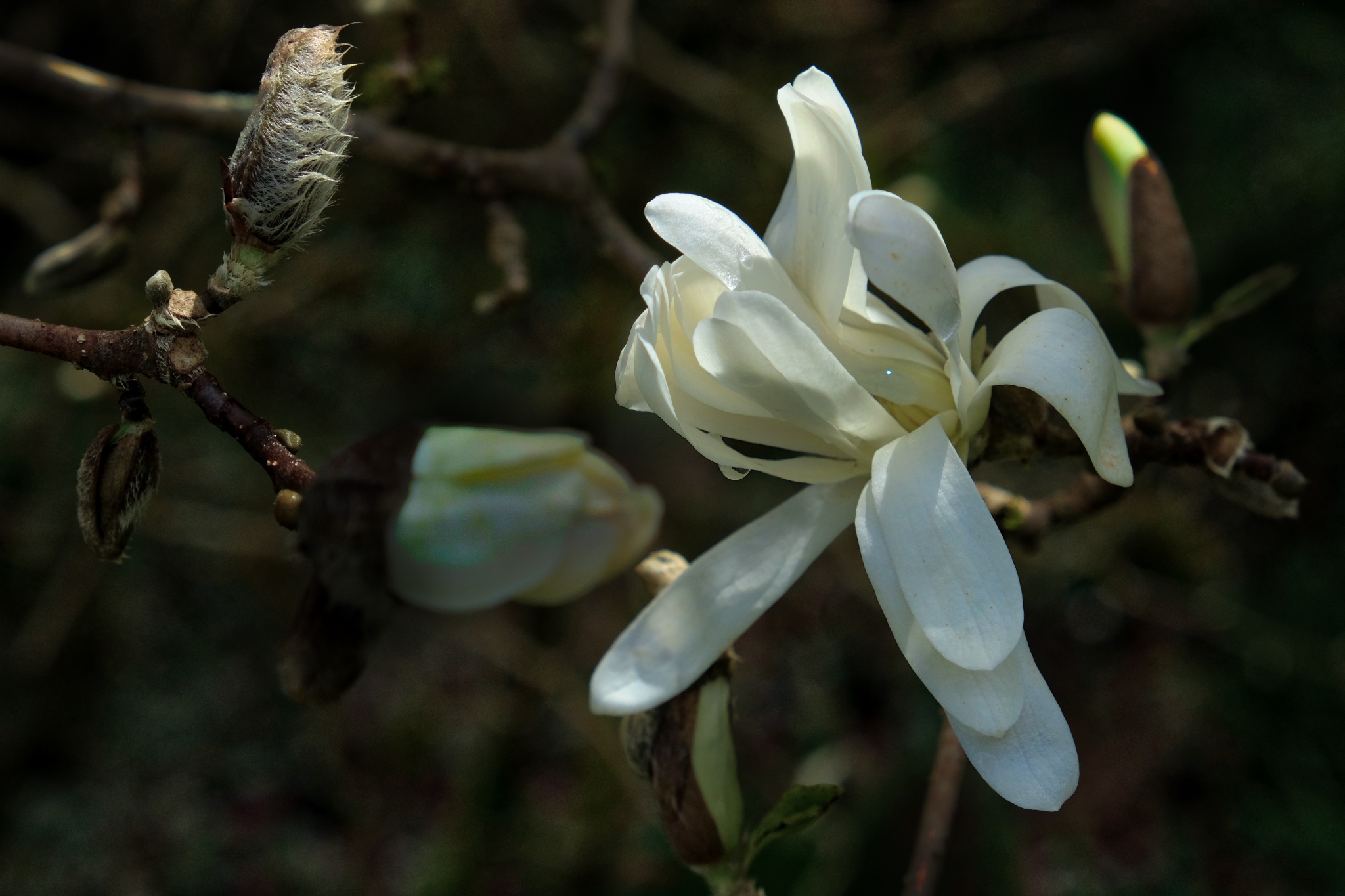 Delicate beauty.
Delicate beauty.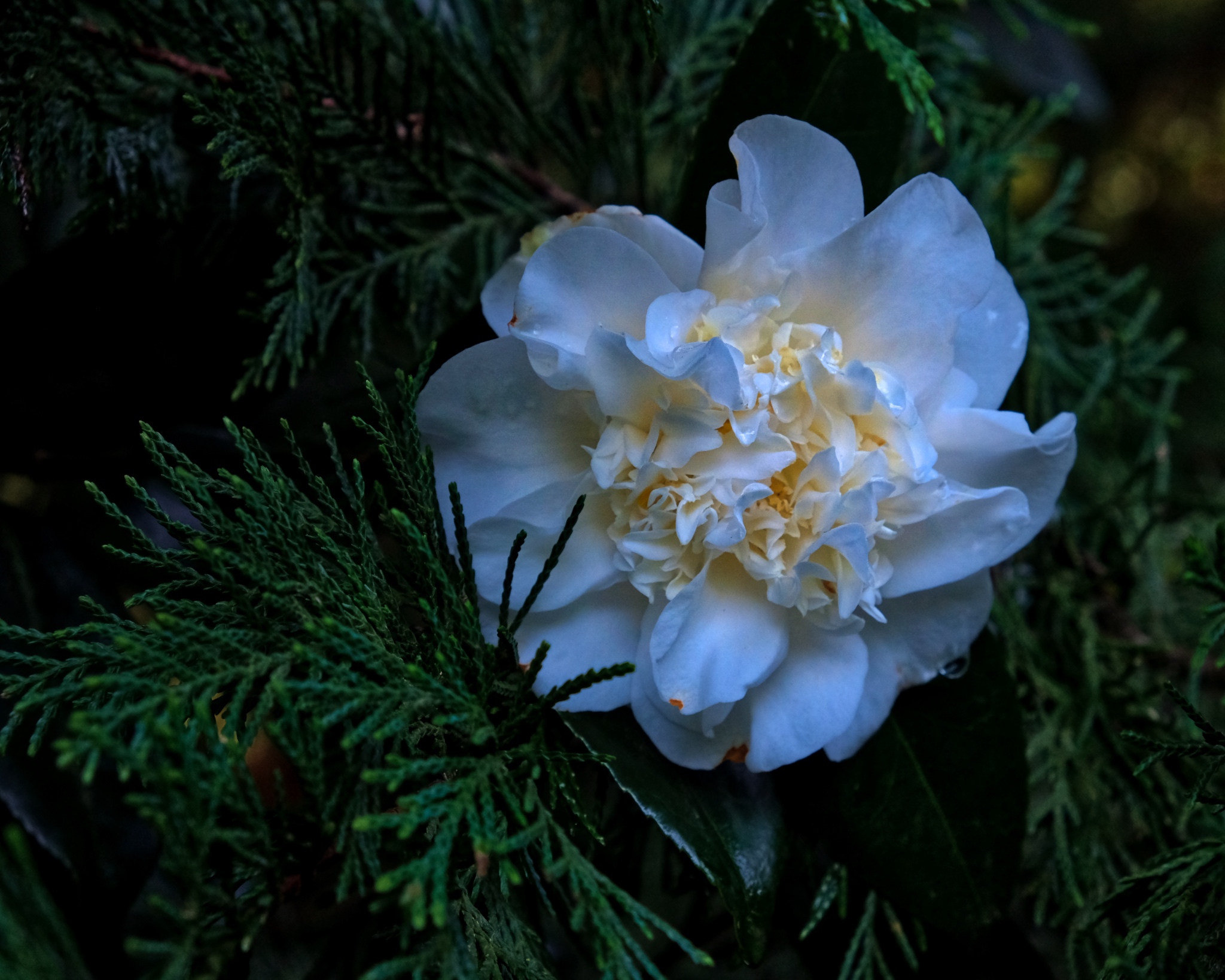 Hidden in the dark shadows at the edge of the garden . . .
Hidden in the dark shadows at the edge of the garden . . .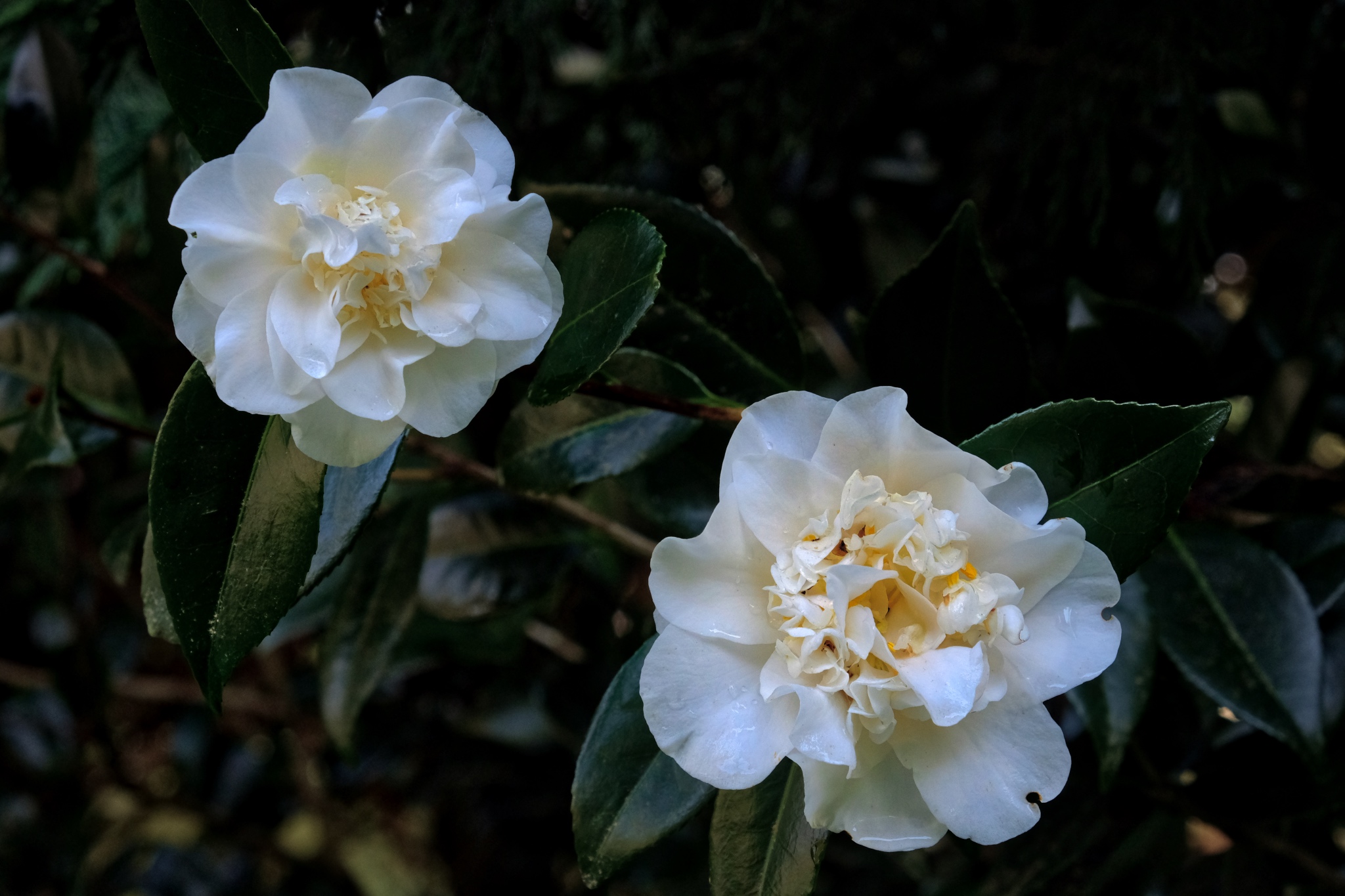 These gave off a wonderful aroma.
These gave off a wonderful aroma.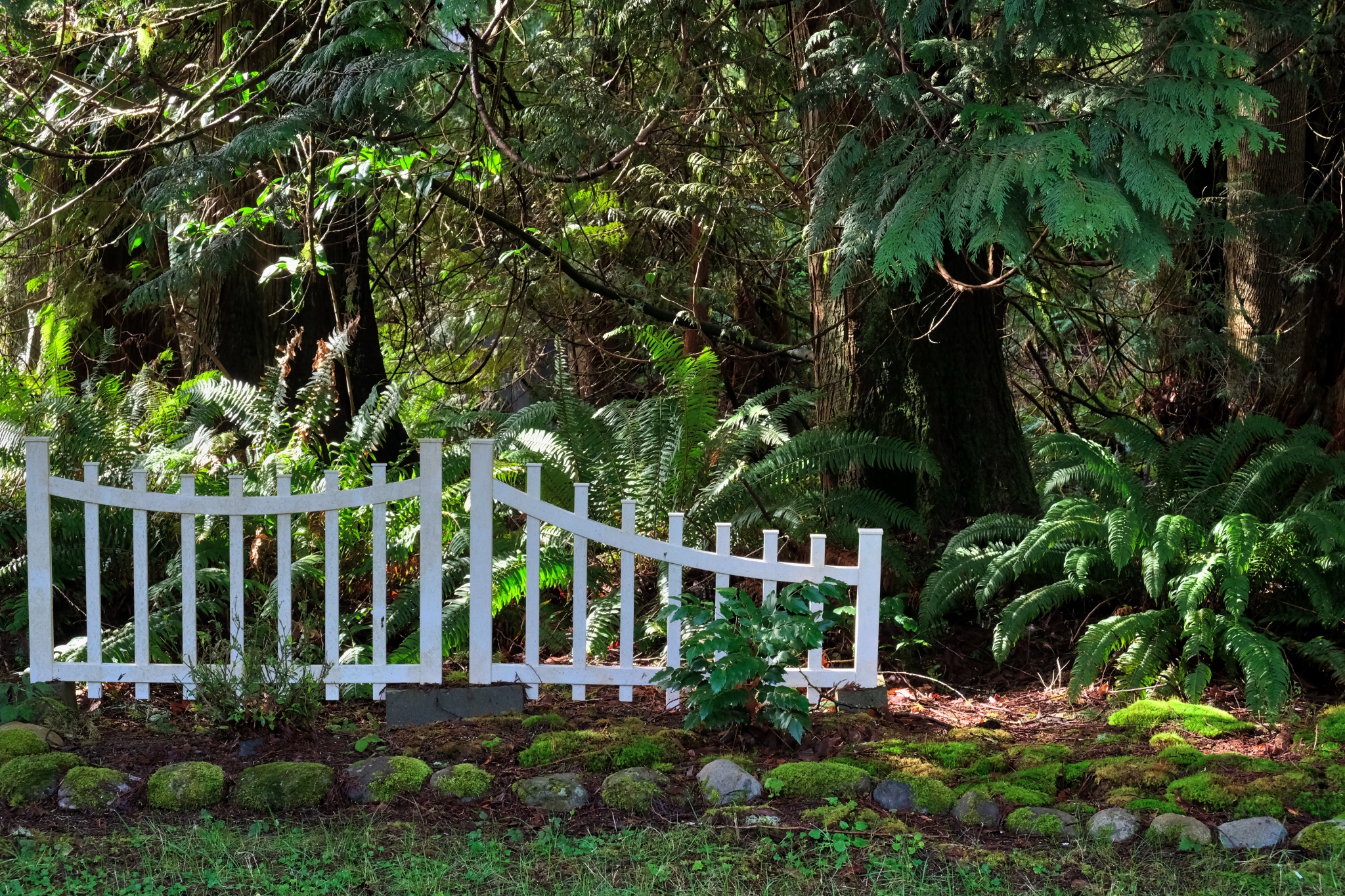 A (rare) wonderful sunny day in the great Northwest.
A (rare) wonderful sunny day in the great Northwest.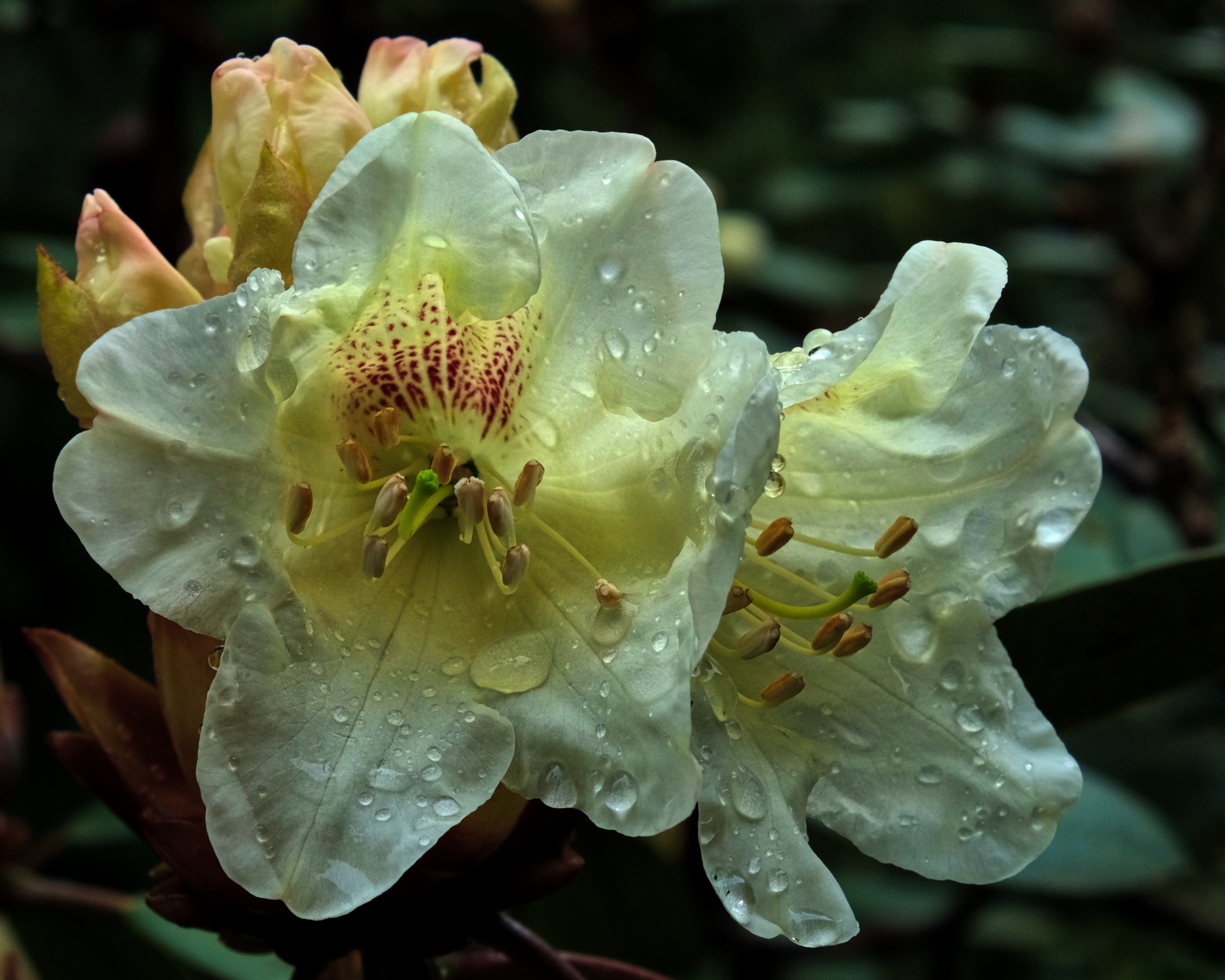
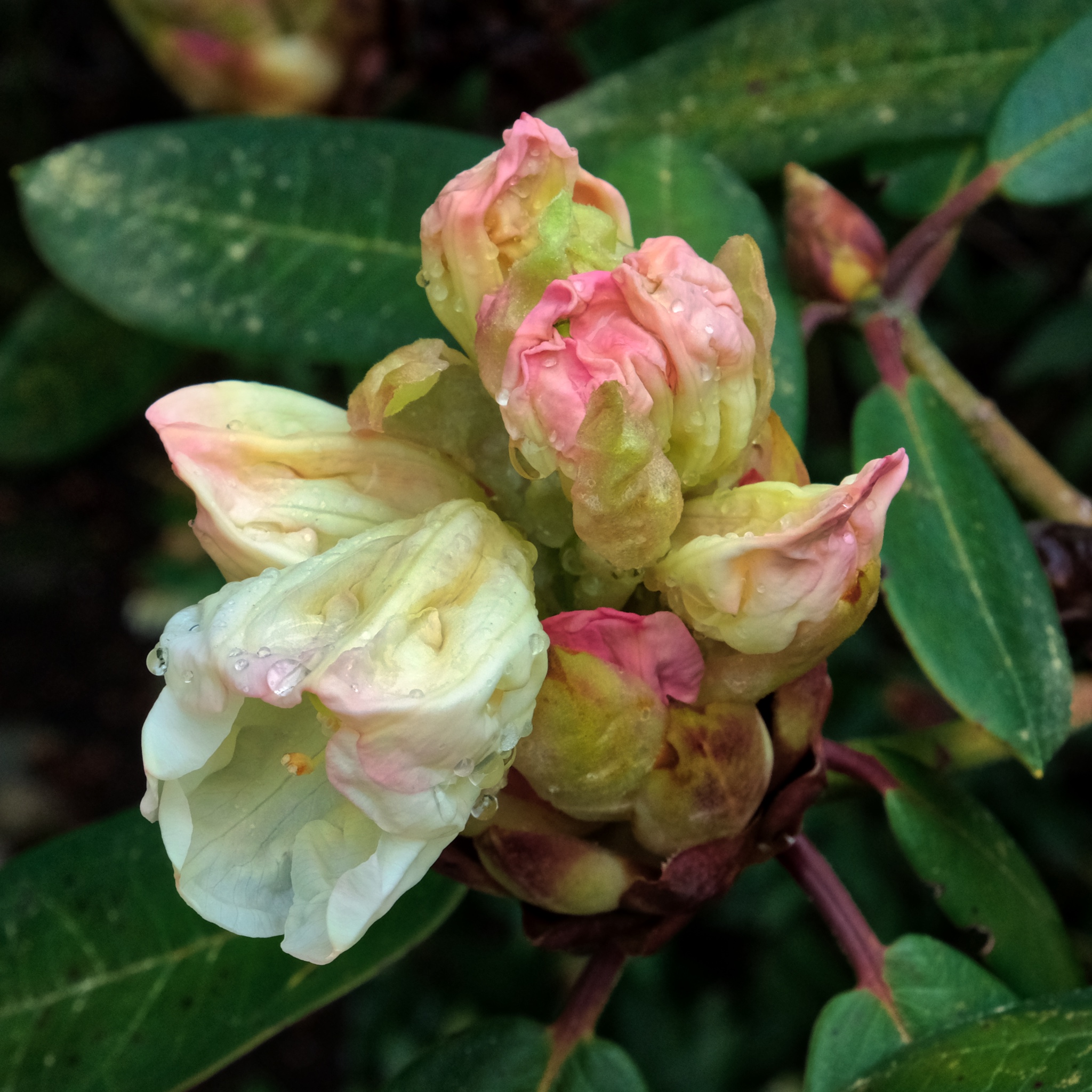 The Rhododendron are just now beginning to emerge from the tight buds.
The Rhododendron are just now beginning to emerge from the tight buds.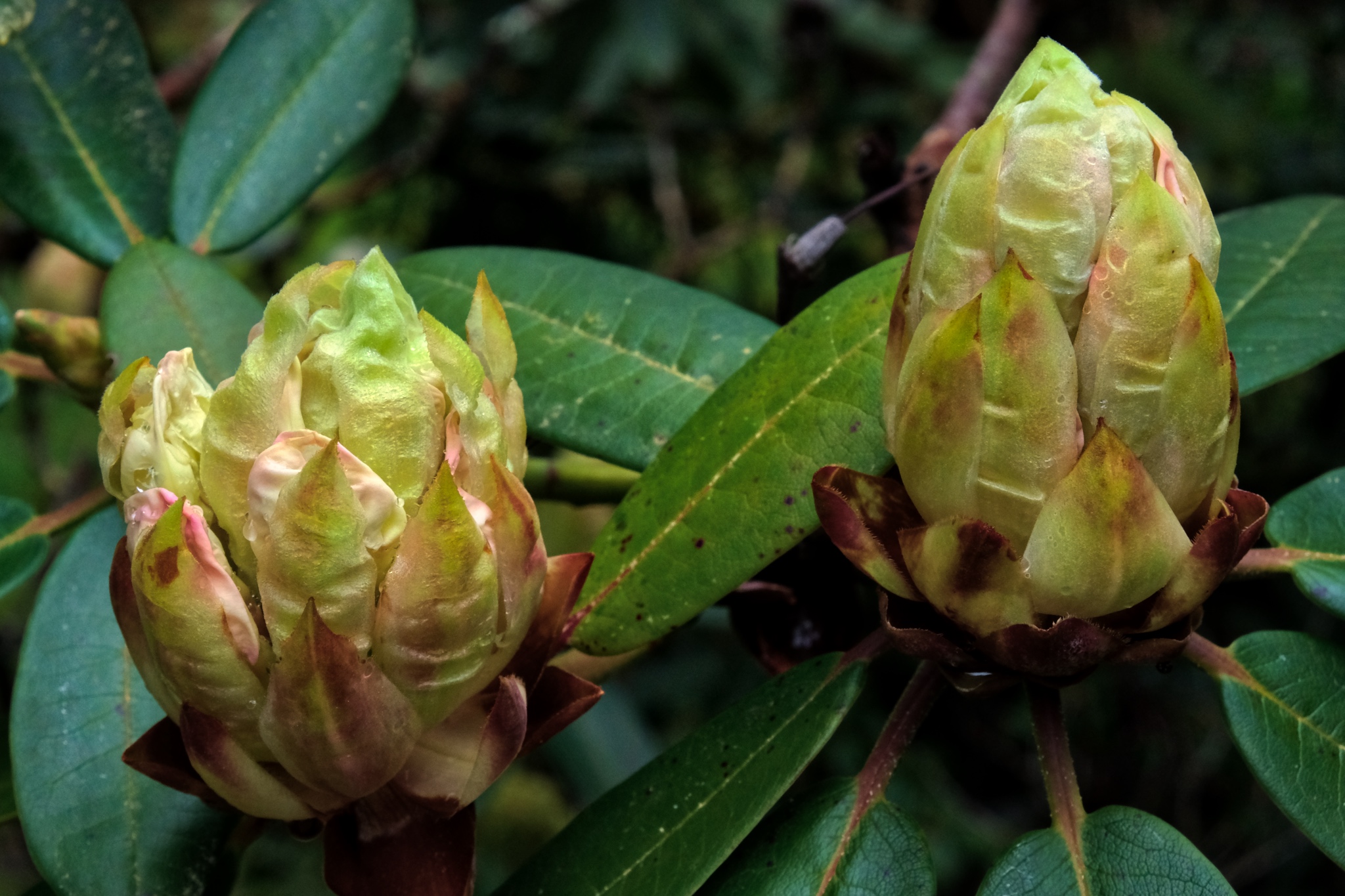 New buds . . . fraught with beauty.
New buds . . . fraught with beauty.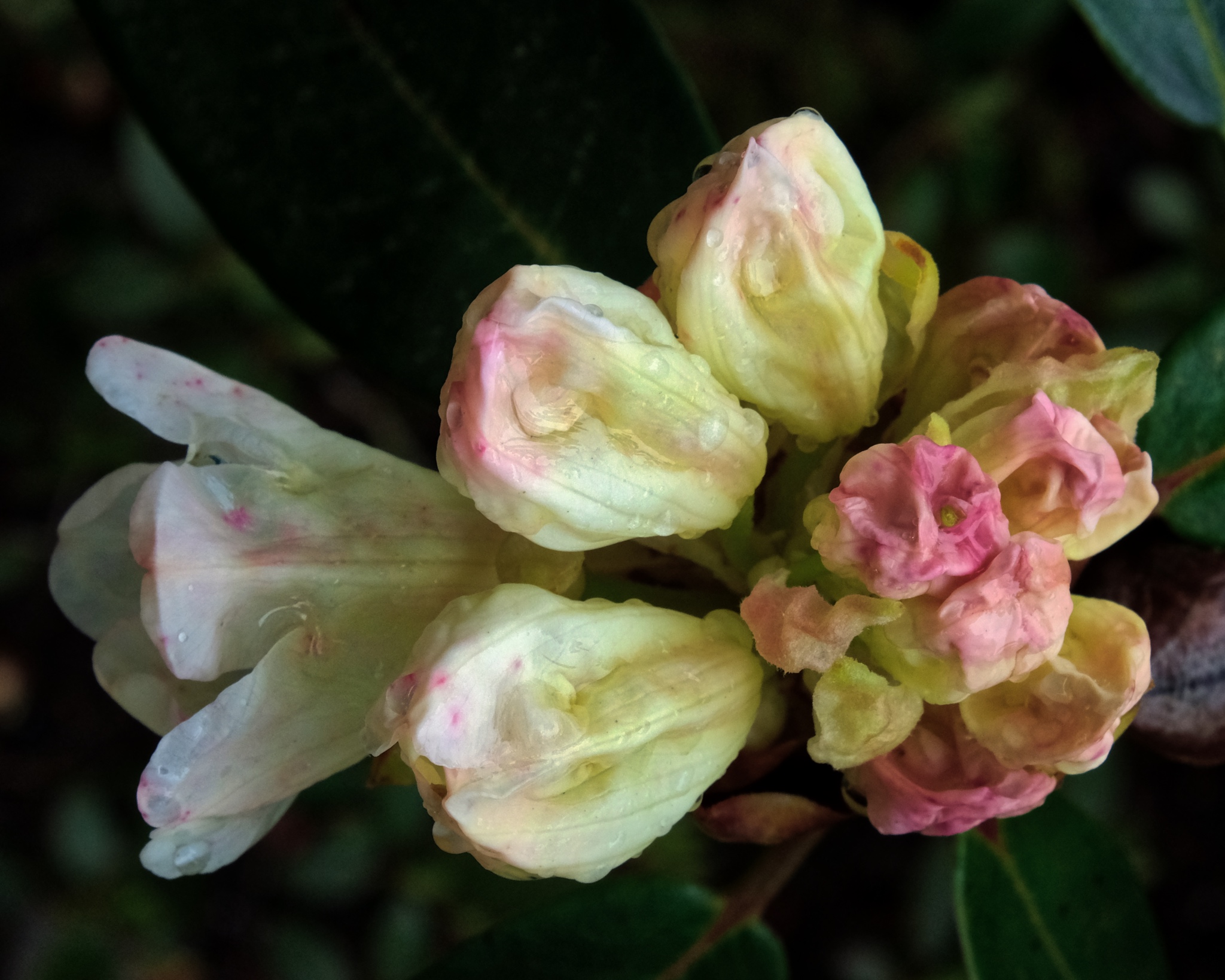 Warped and twisted as they unfurl their beauty . . .
Warped and twisted as they unfurl their beauty . . .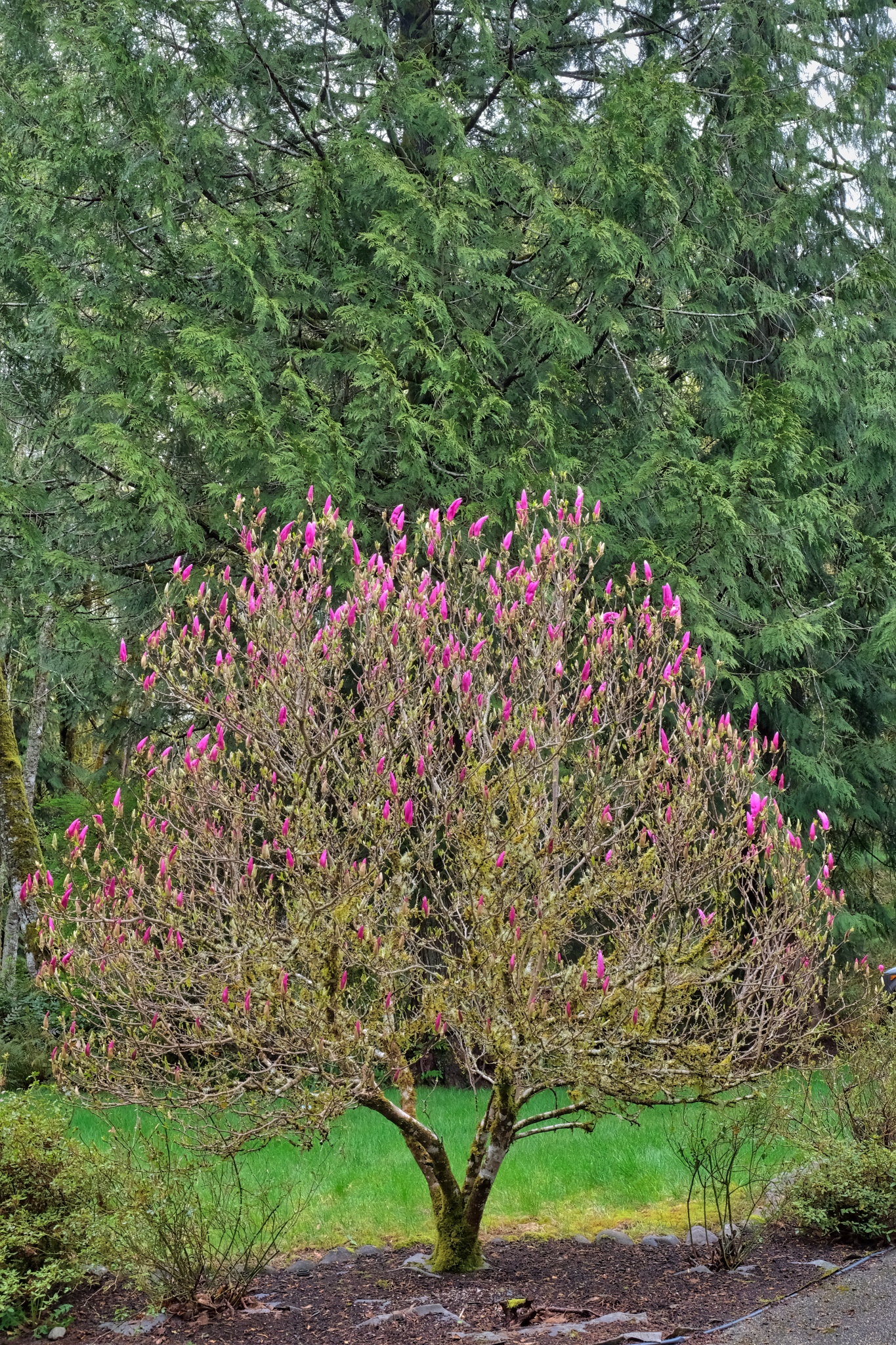 The magnolia in the front yard is beginning to show purple.
The magnolia in the front yard is beginning to show purple.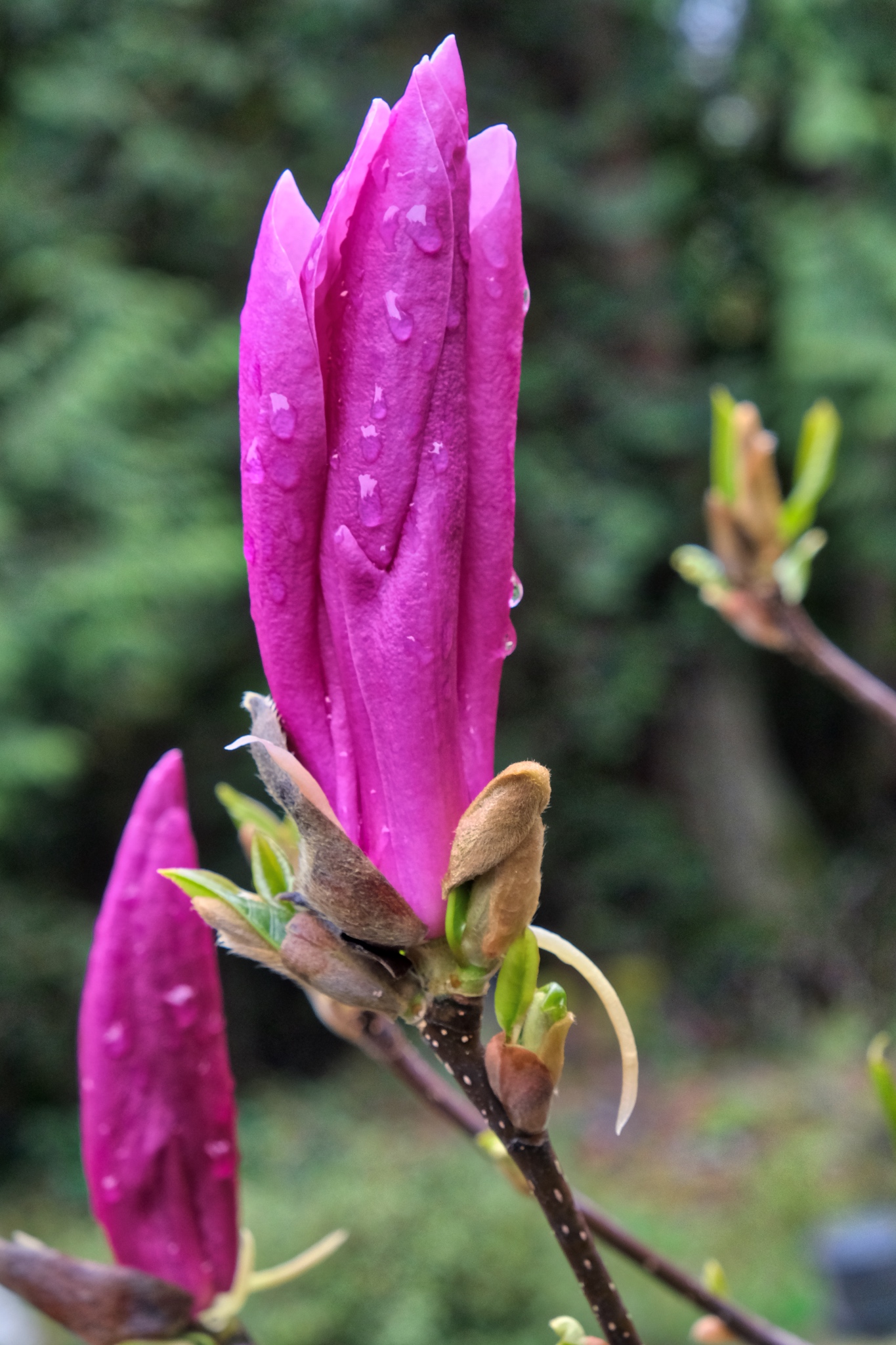 The purple Magnolia only budding, lagging behind their white neighbors.
The purple Magnolia only budding, lagging behind their white neighbors.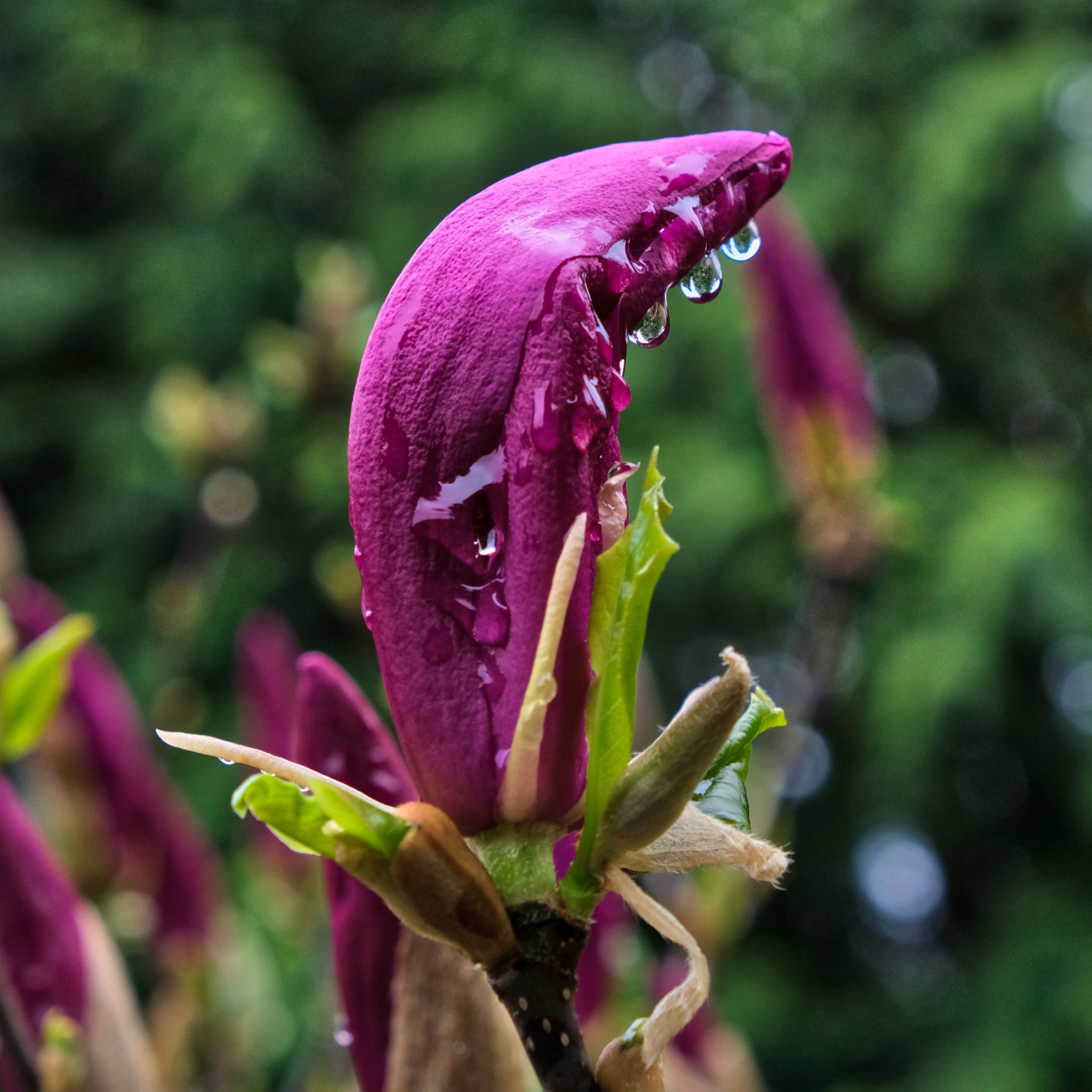
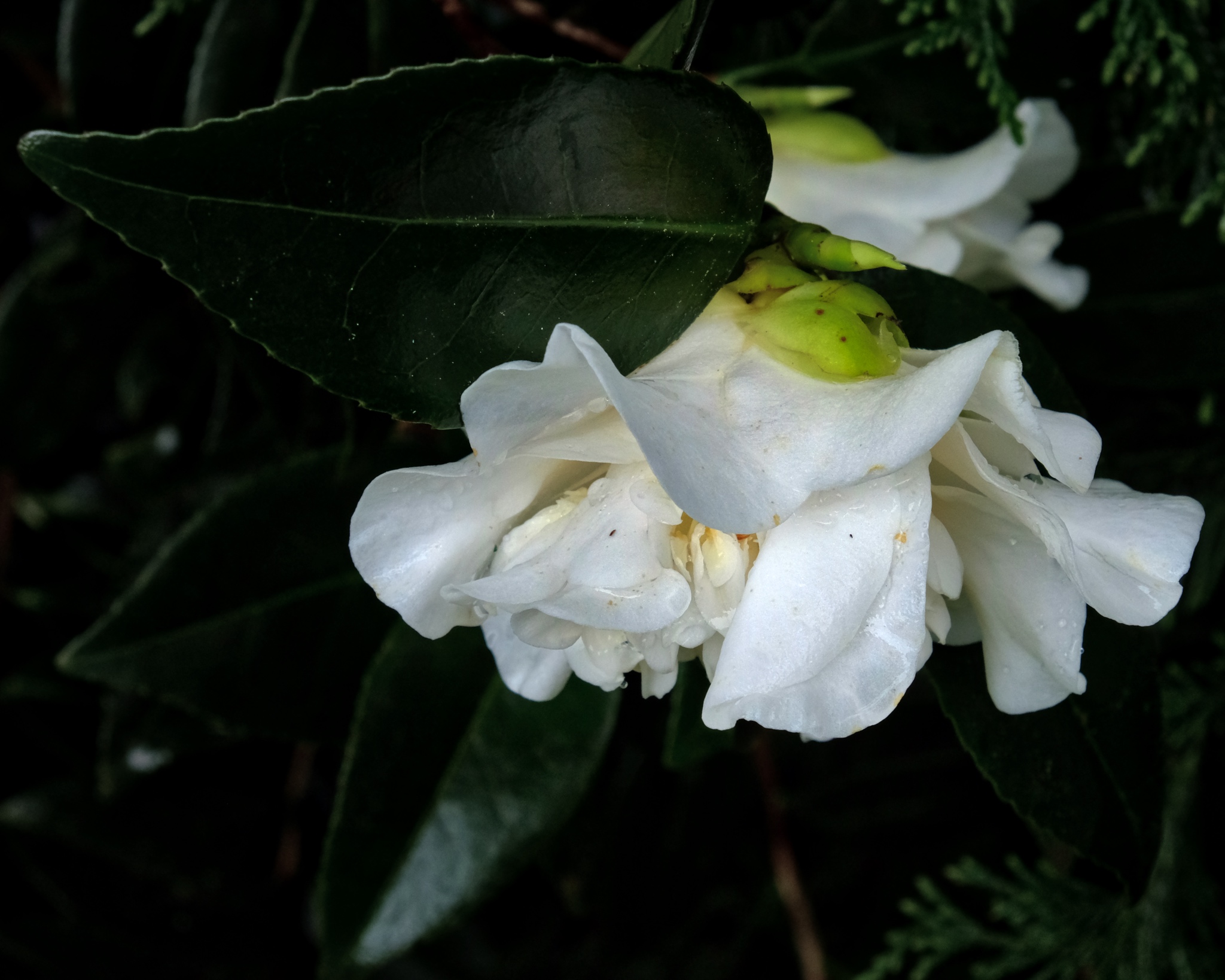 A white Magnolia in bloom deep in the dark bushes . . .
A white Magnolia in bloom deep in the dark bushes . . .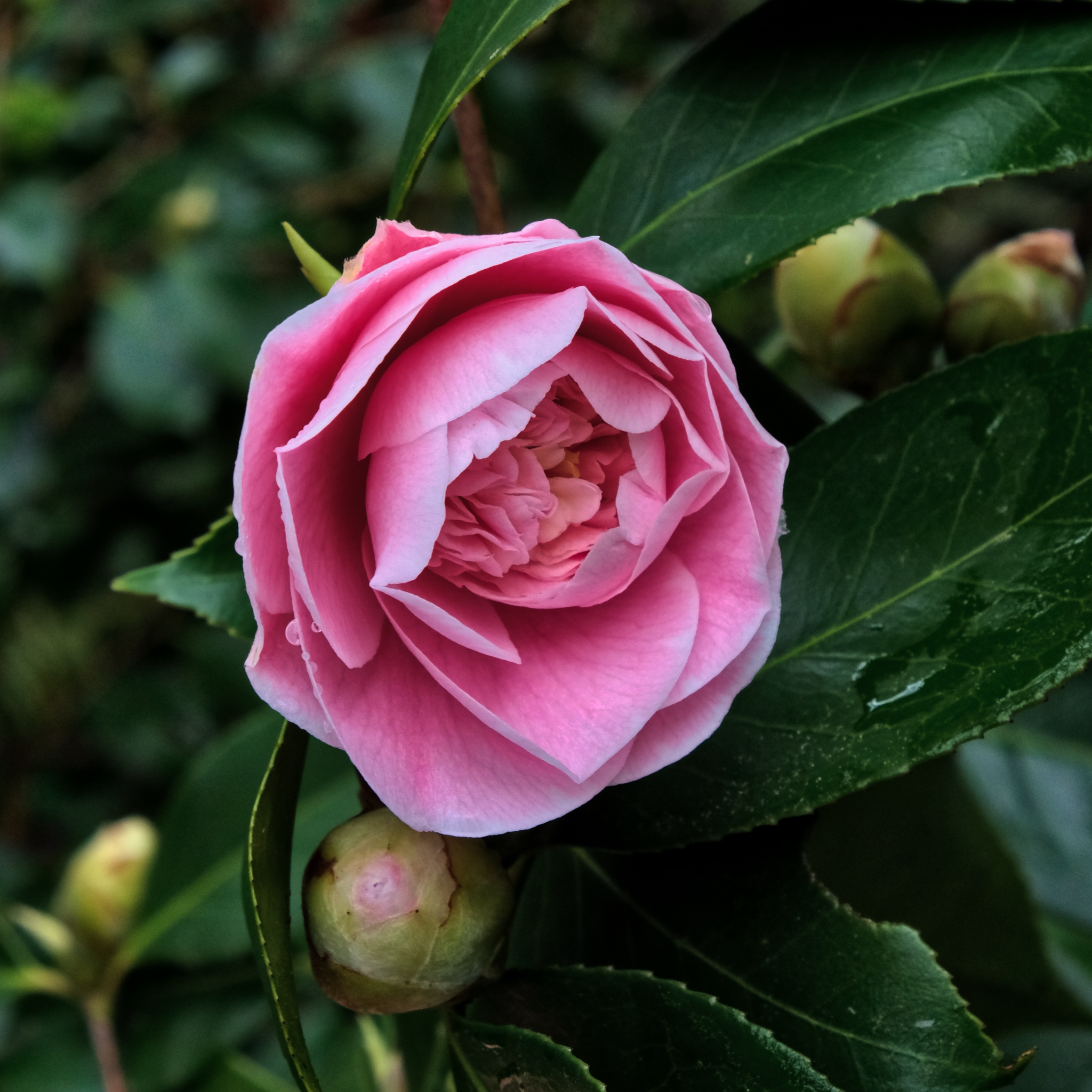 Buds and pink blooms . . . everywhere you look.
Buds and pink blooms . . . everywhere you look.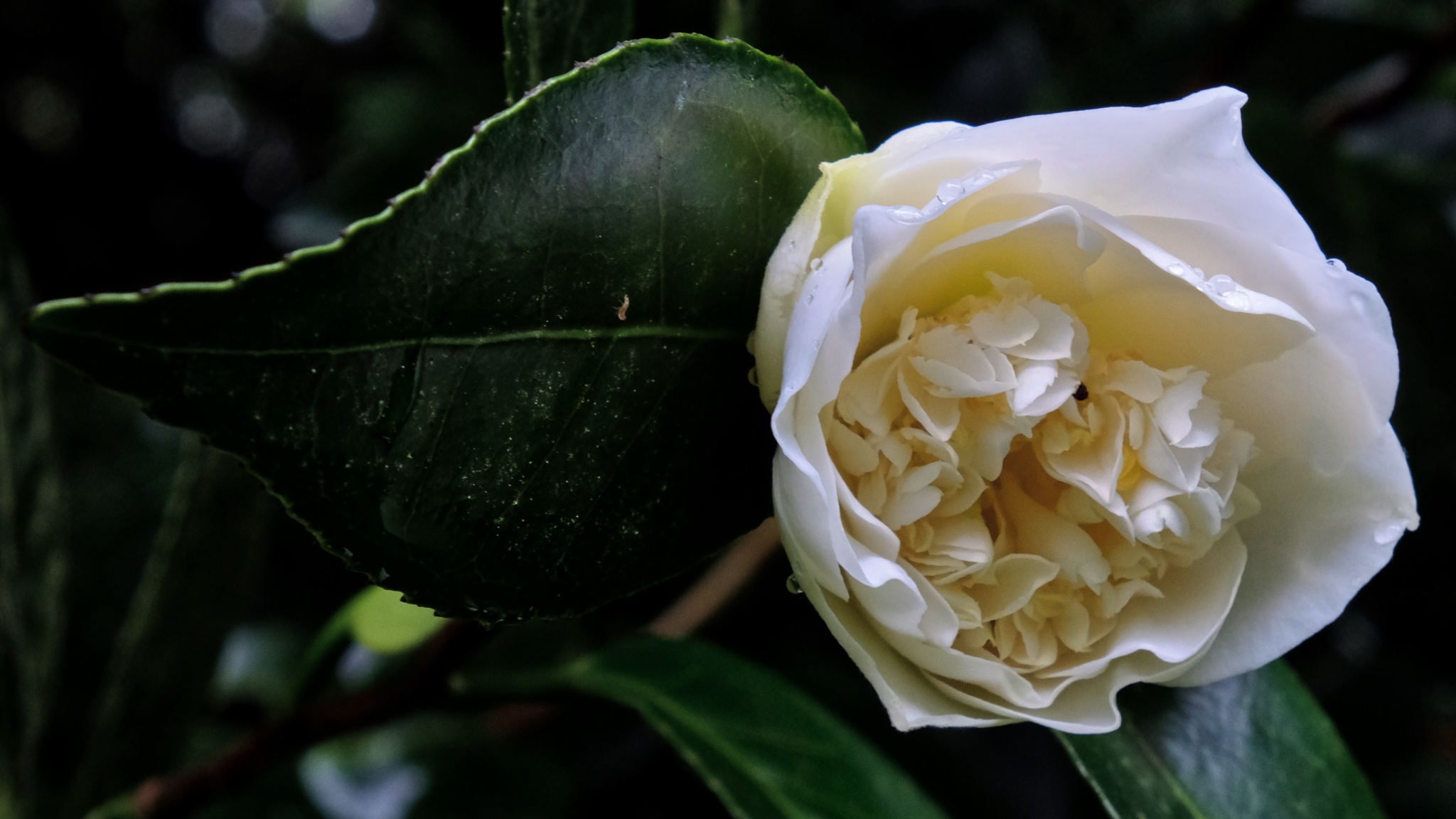 A new splash of beauty emerges.
A new splash of beauty emerges. Perfect.
Perfect.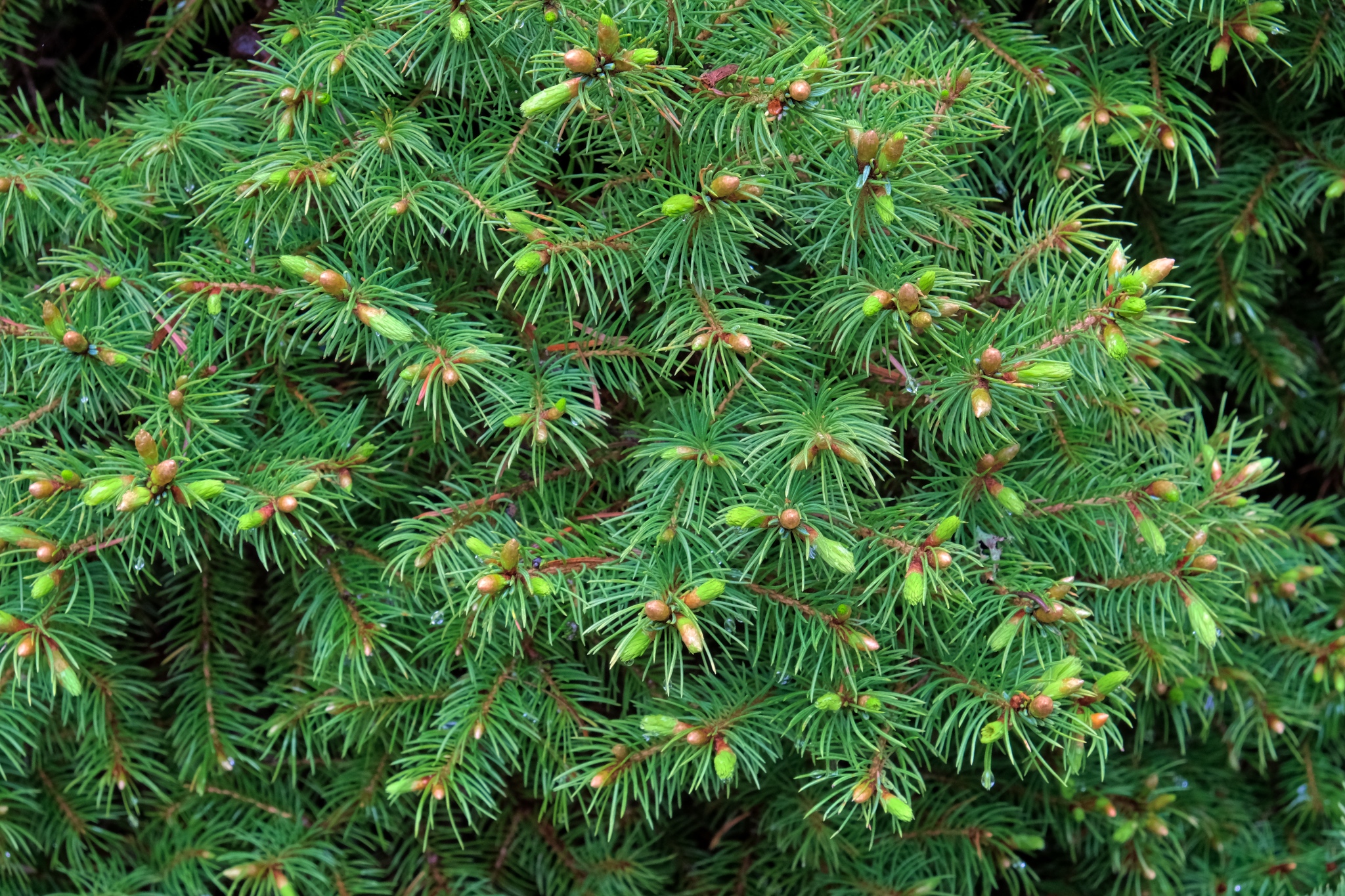 Everything is showing new growth . . . Winter is at last receding.
Everything is showing new growth . . . Winter is at last receding.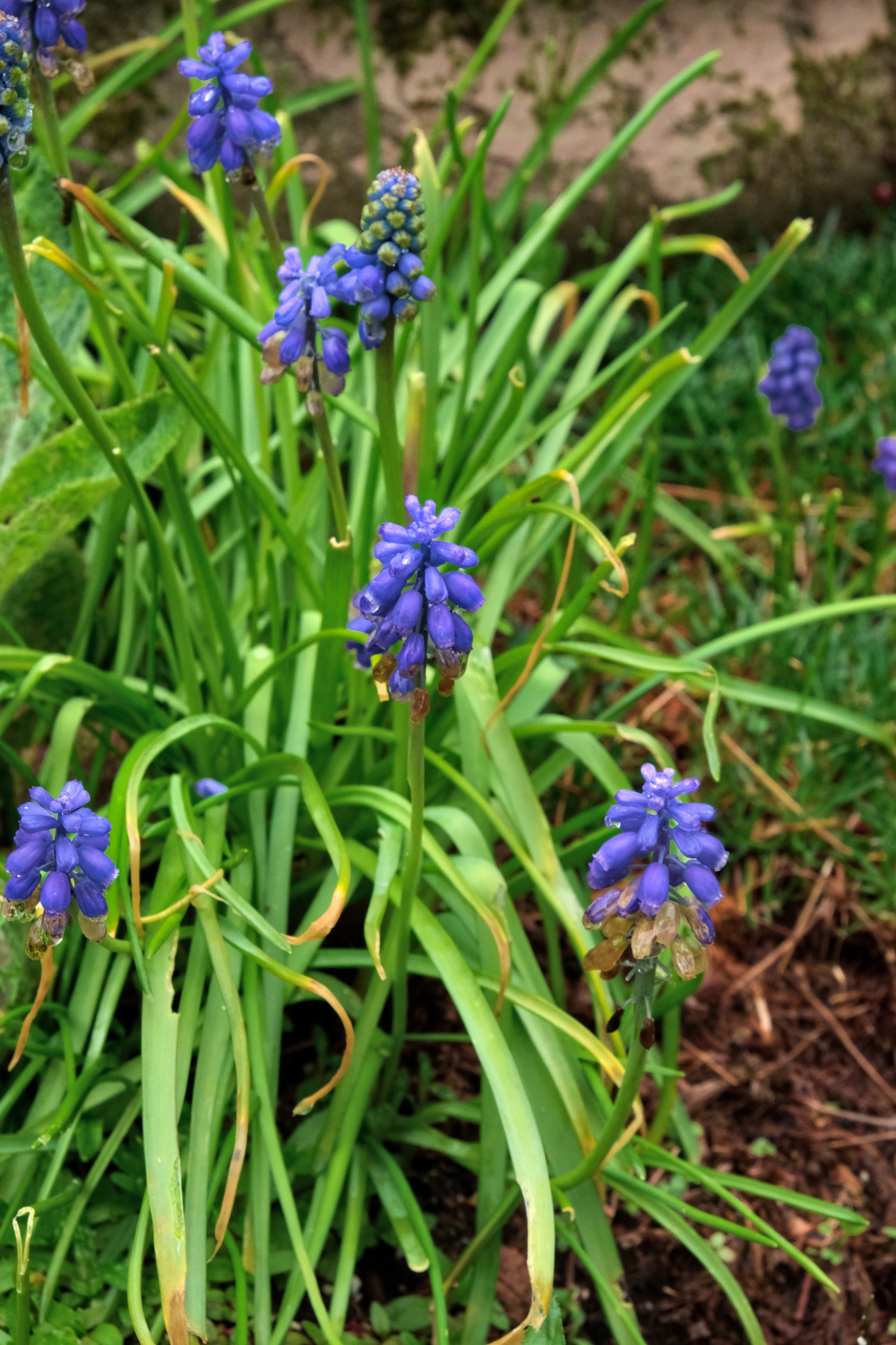 Every day sees a new kind of flower appearing.
Every day sees a new kind of flower appearing.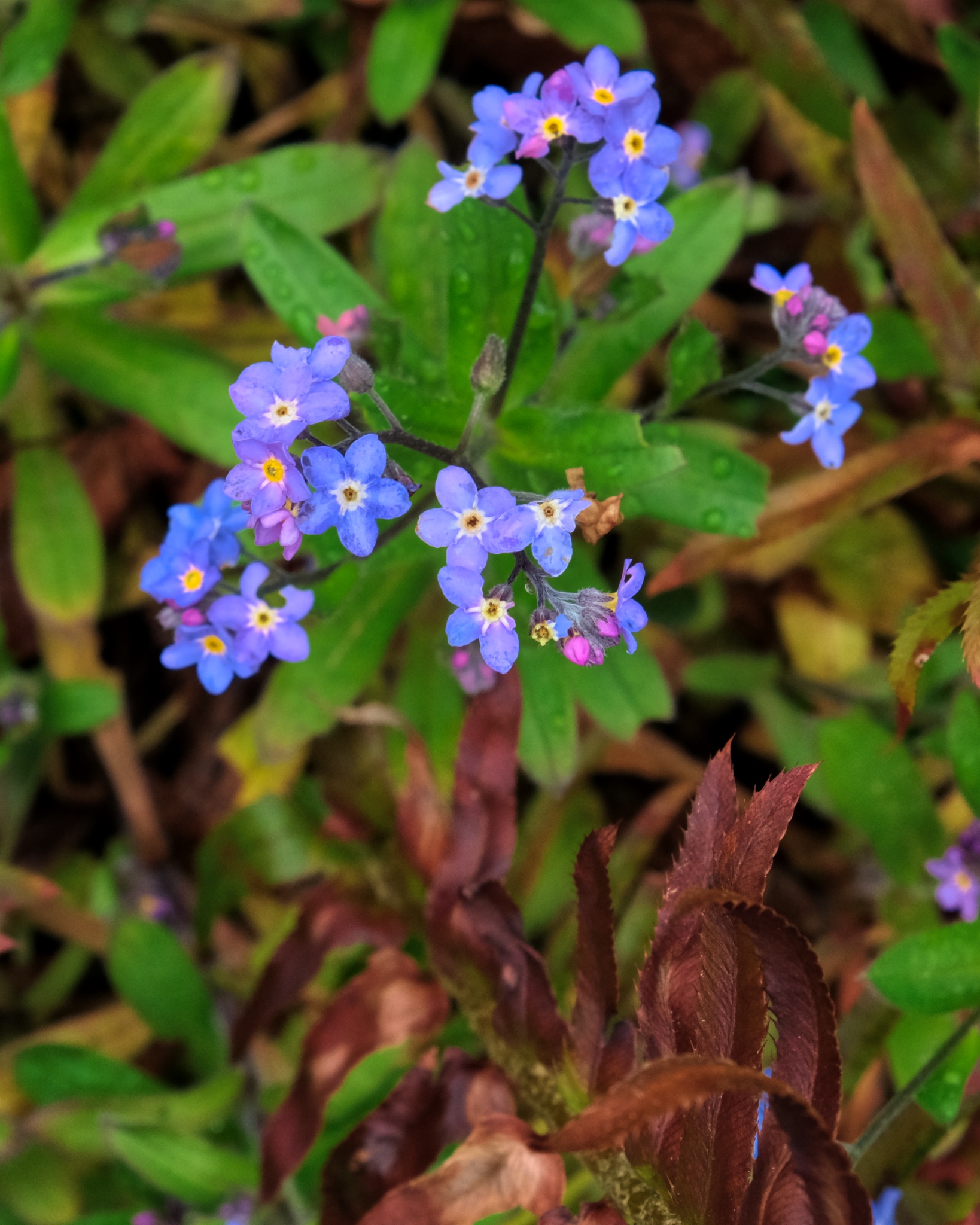 Tiny flowers hidden deep within the foliage.
Tiny flowers hidden deep within the foliage.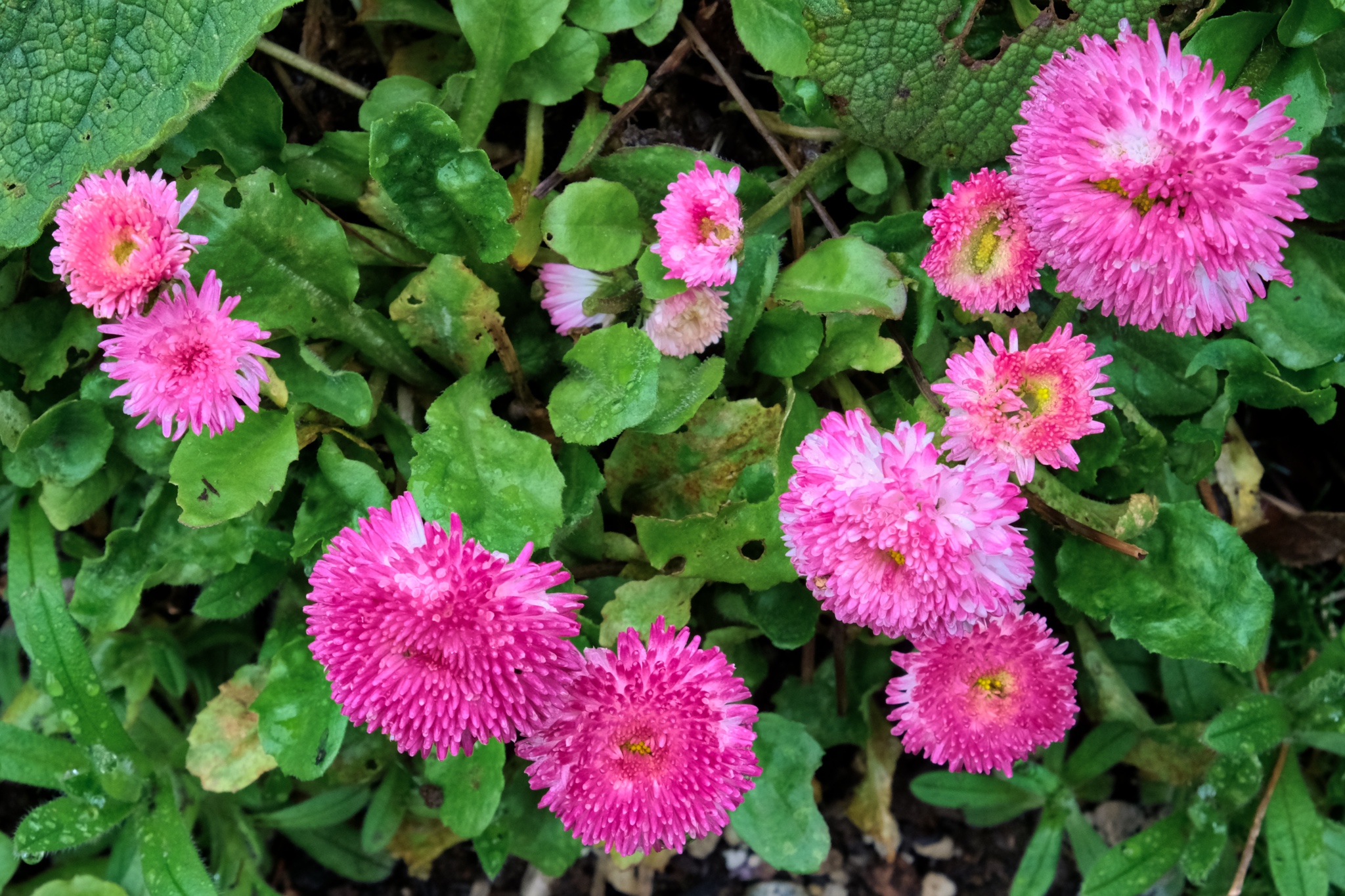
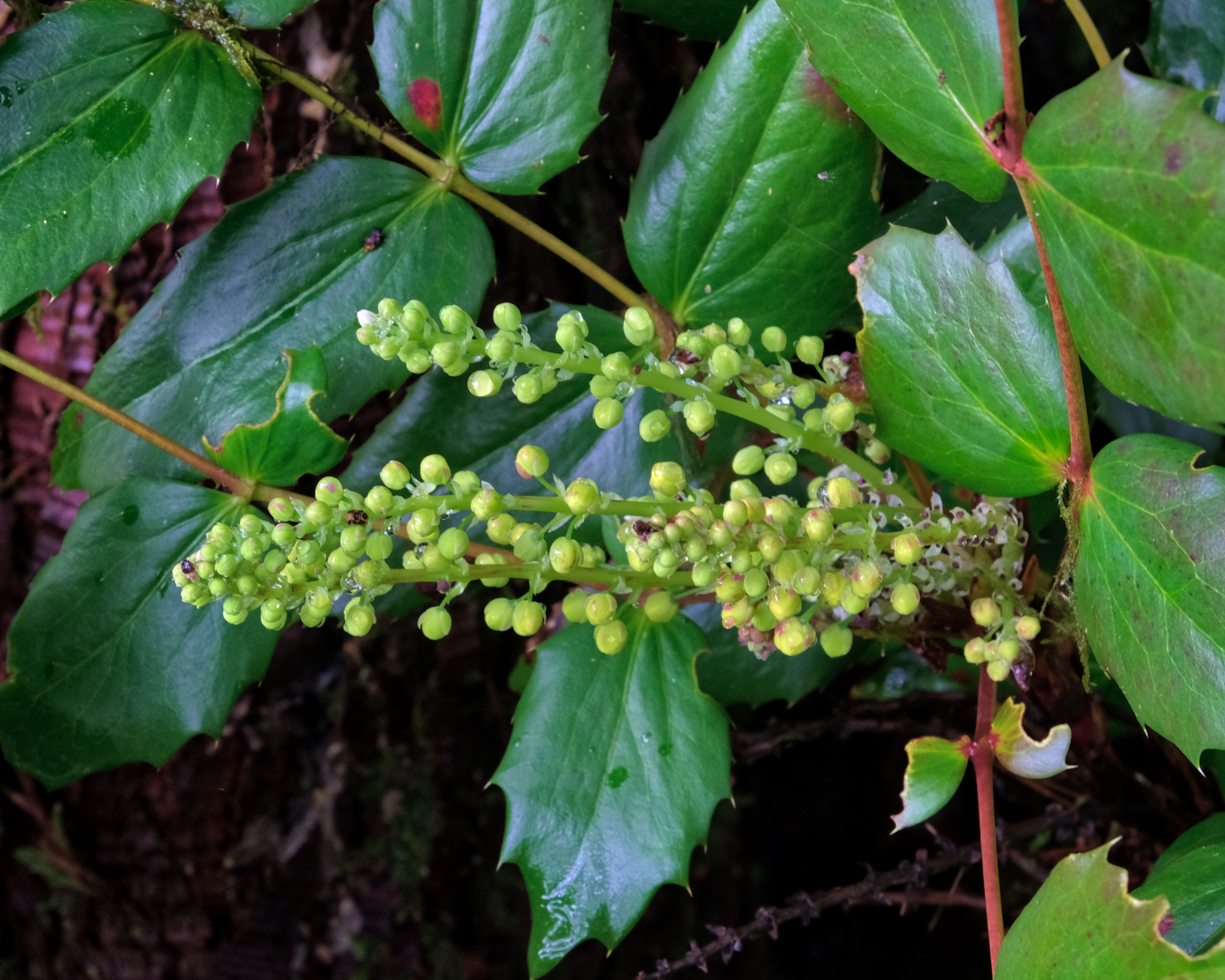
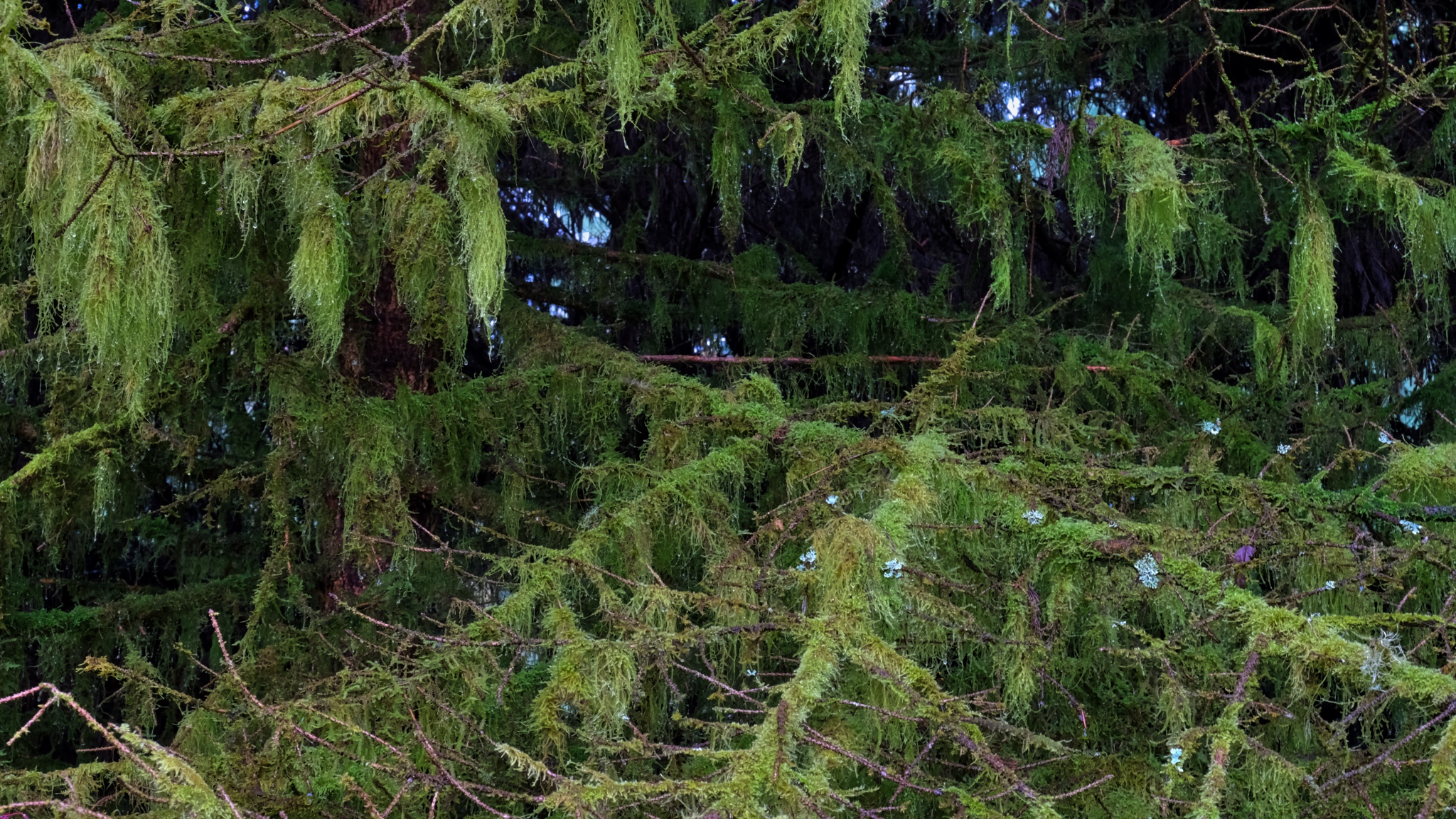 This part of Washington State sees extreme amounts of rainfall. The trees are covered in moss.
This part of Washington State sees extreme amounts of rainfall. The trees are covered in moss.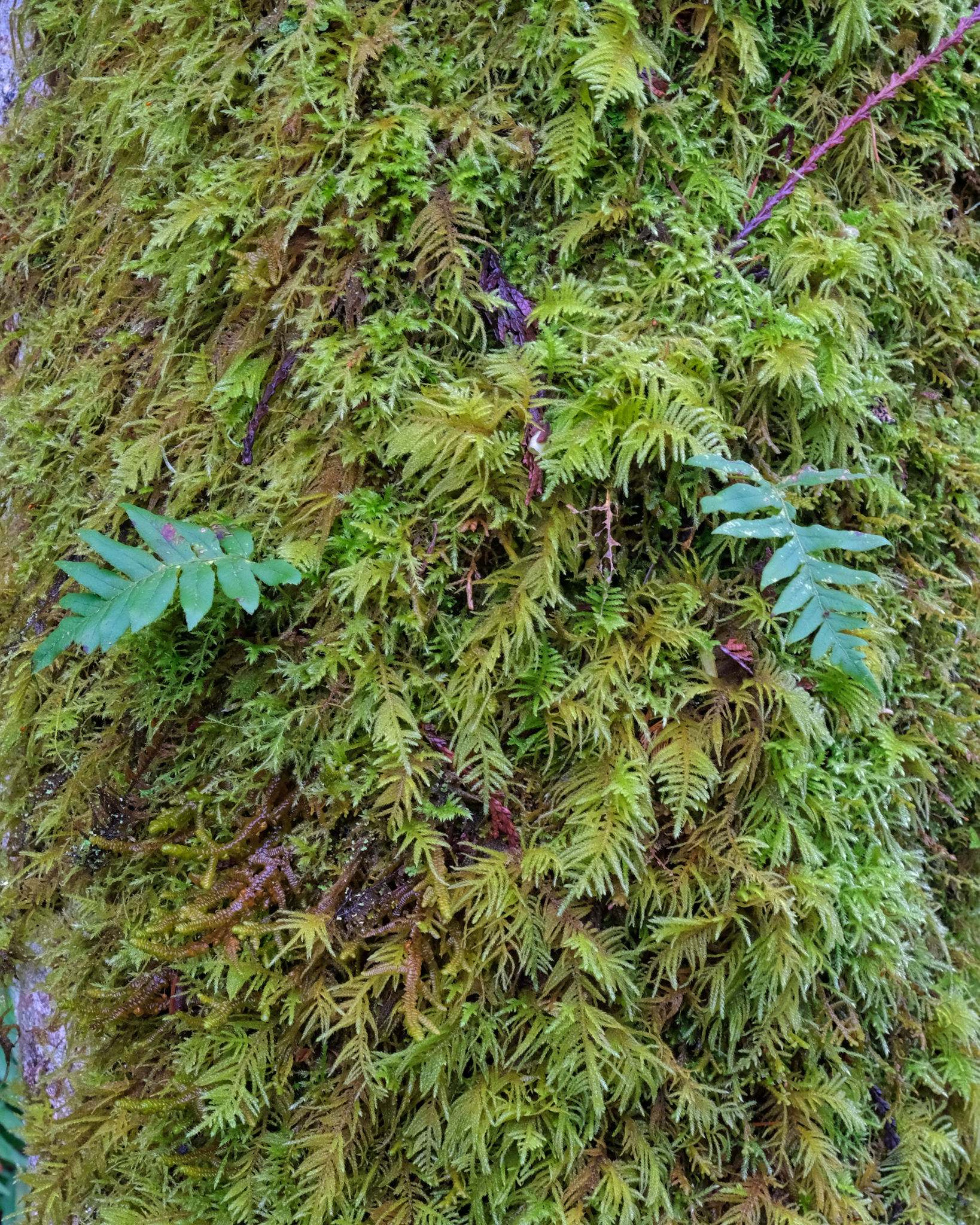 Fresh, wet moss everywhere.
Fresh, wet moss everywhere.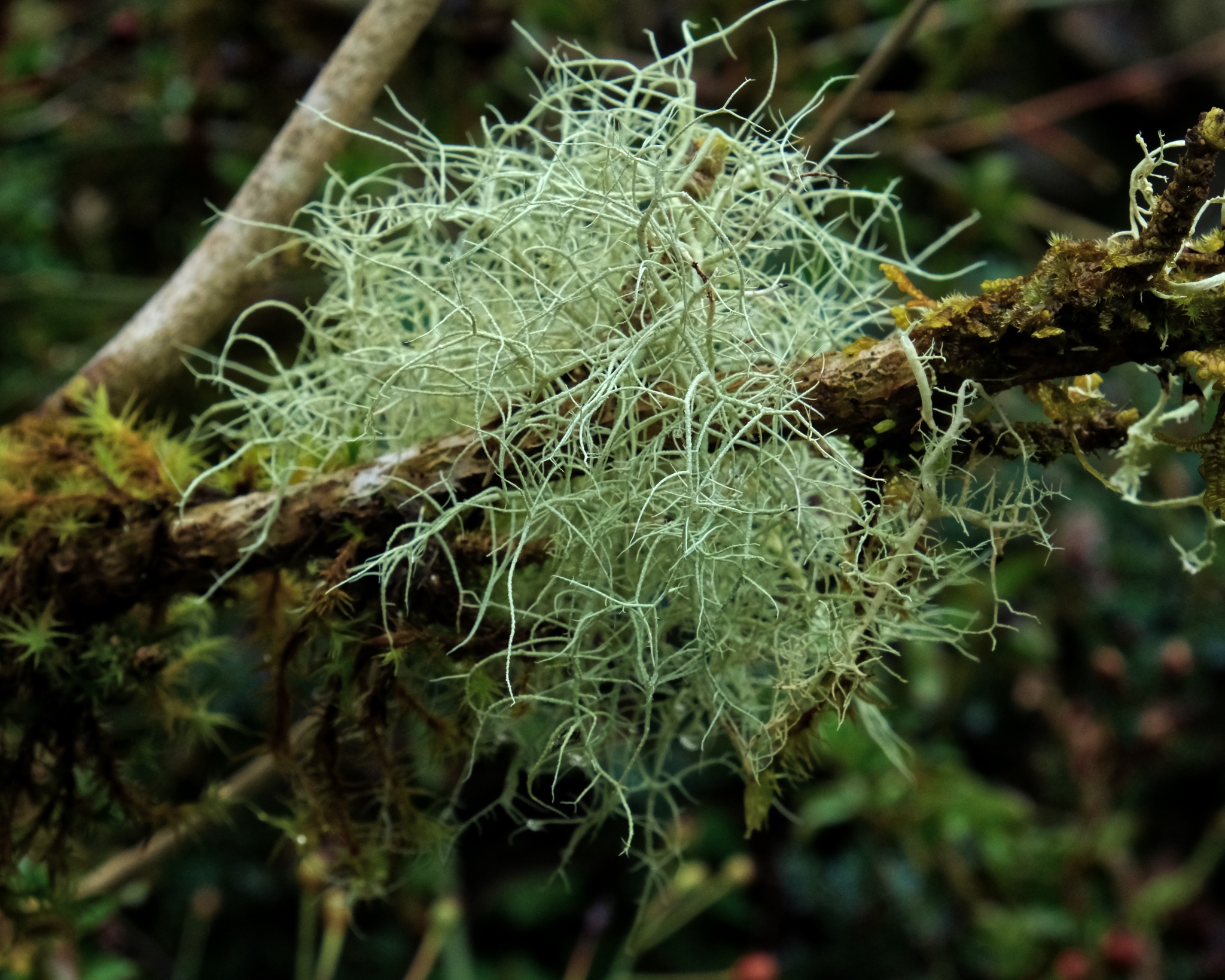
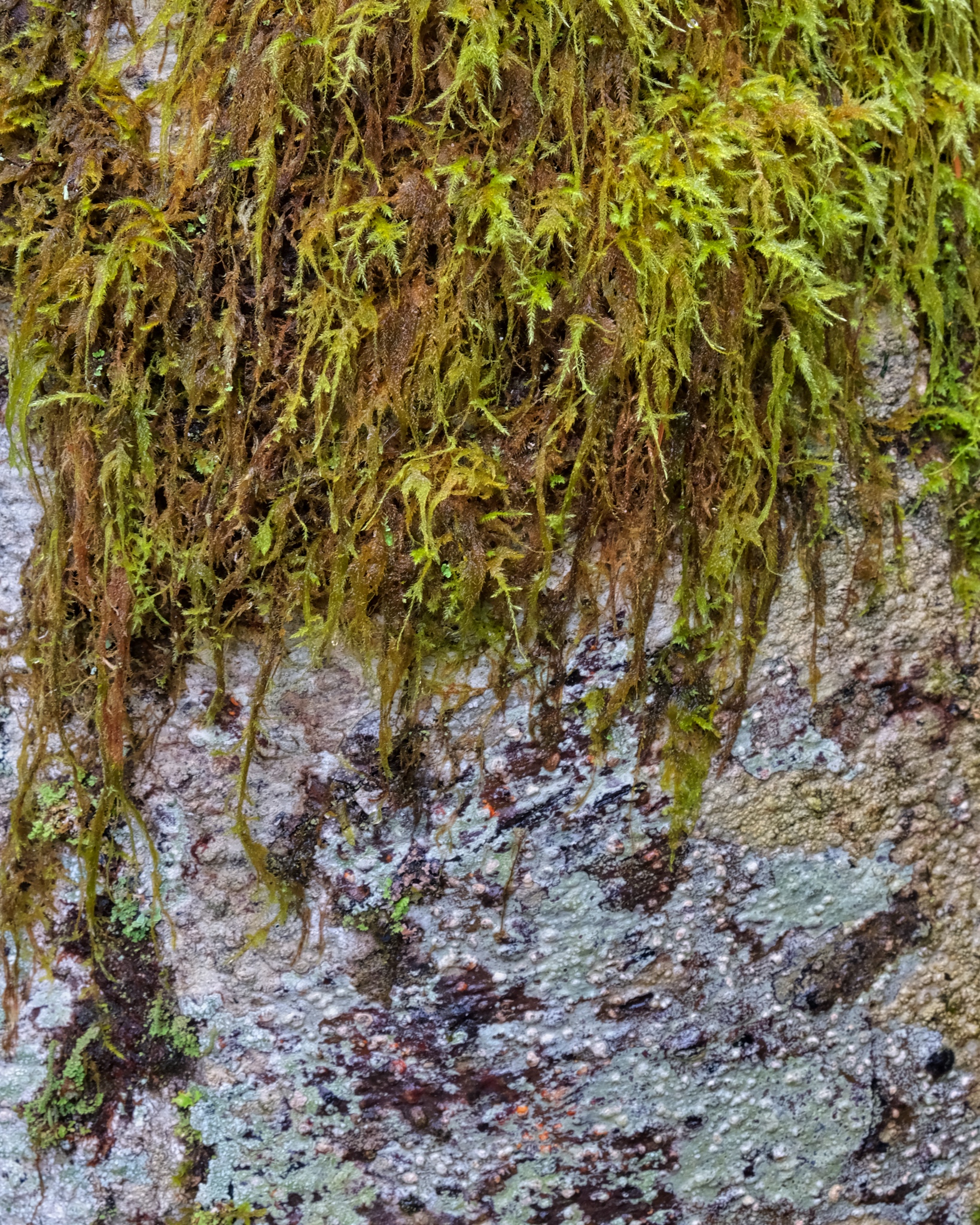
Suphanburi Province: A Day Trip Northwest Of Bangkok
 Wednesday, March 14, 2018 at 8:31AM
Wednesday, March 14, 2018 at 8:31AM A RAMBLE IN FOUR PARTS
Part Three: Thai Farm Museum and Lemon Temple
My friend John Stiles and I set off in my old truck up the road to the rural province of Suphanburi, to the northwest of Bangkok. As usual, we had a vague idea, from a tertiary Google search, of what we wanted to see, but no particular plan: we would ramble. We would eventually see several amazing Buddhist temple complexes, a Buffalo park, and a Farm Museum. We never 'found' the actual town of Suphanburi, but we didn't care: we had a grand adventure rambling about the rural Thai countryside.
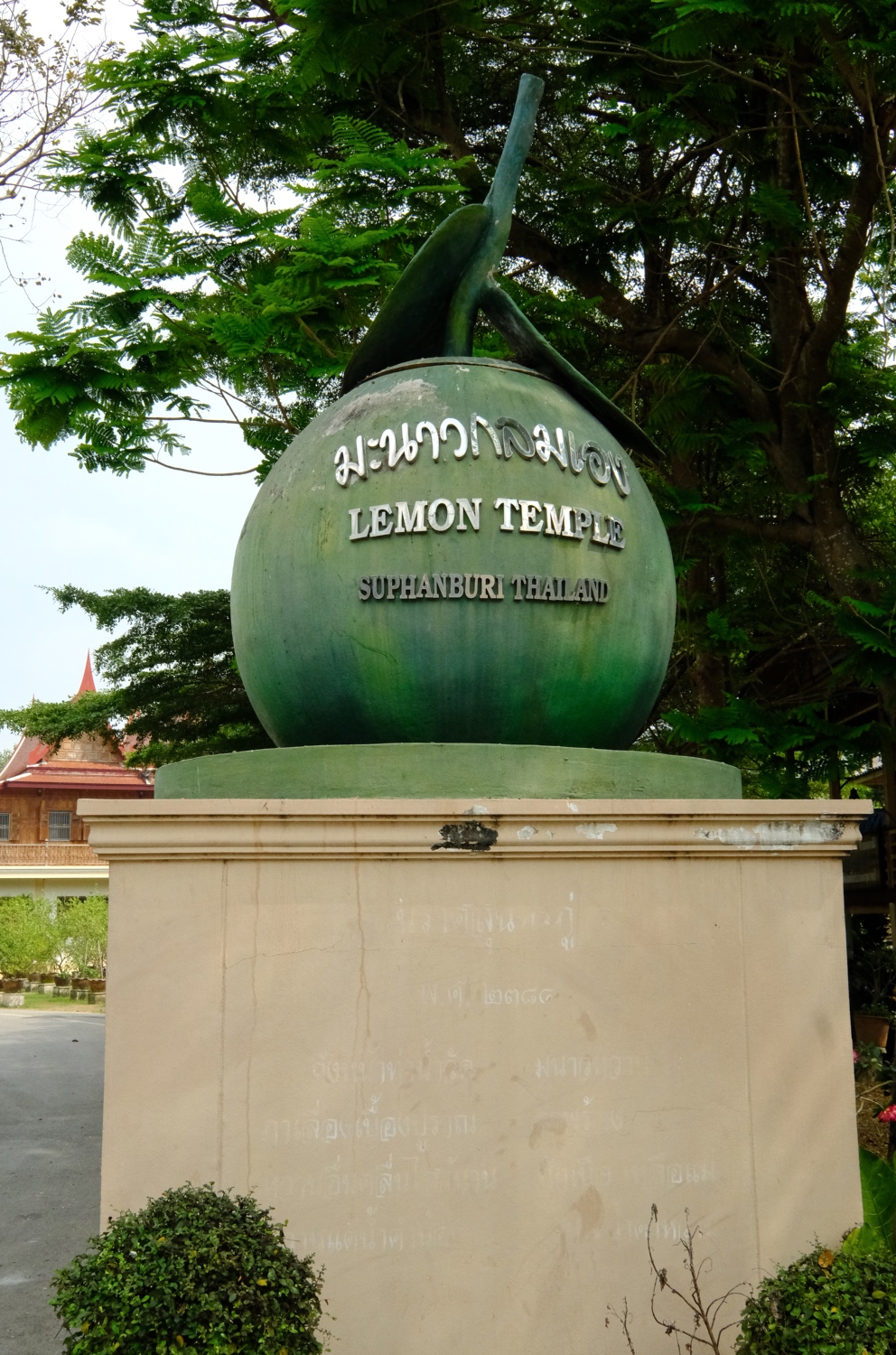 Never trust your GPS completely. After a wonderful stop at a river Wat we decided we wanted to see the Farm Museum, so we punched it into the GPS and took off. 20 minutes later we arrived at the spot on the GPS map and found the Lemon Temple instead. Where is the Farm Museum, we thought?
Never trust your GPS completely. After a wonderful stop at a river Wat we decided we wanted to see the Farm Museum, so we punched it into the GPS and took off. 20 minutes later we arrived at the spot on the GPS map and found the Lemon Temple instead. Where is the Farm Museum, we thought?
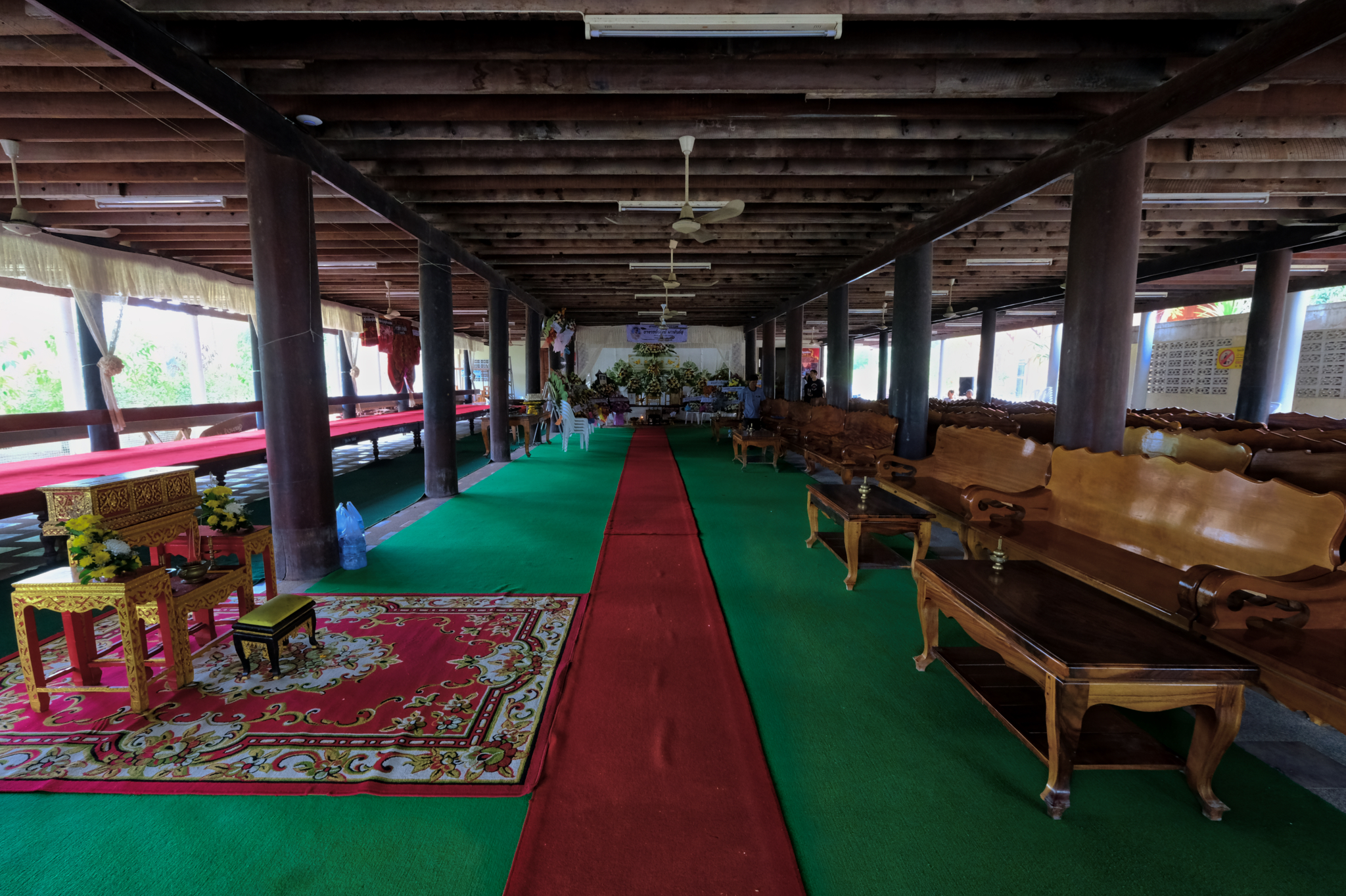 We walked around a little and could not find anything like a Farm Museum. Instead we found an interesting 'spiritual center' - a kind of Buddhist temple - and walked in to ask where the Farm Museum was.
We walked around a little and could not find anything like a Farm Museum. Instead we found an interesting 'spiritual center' - a kind of Buddhist temple - and walked in to ask where the Farm Museum was.
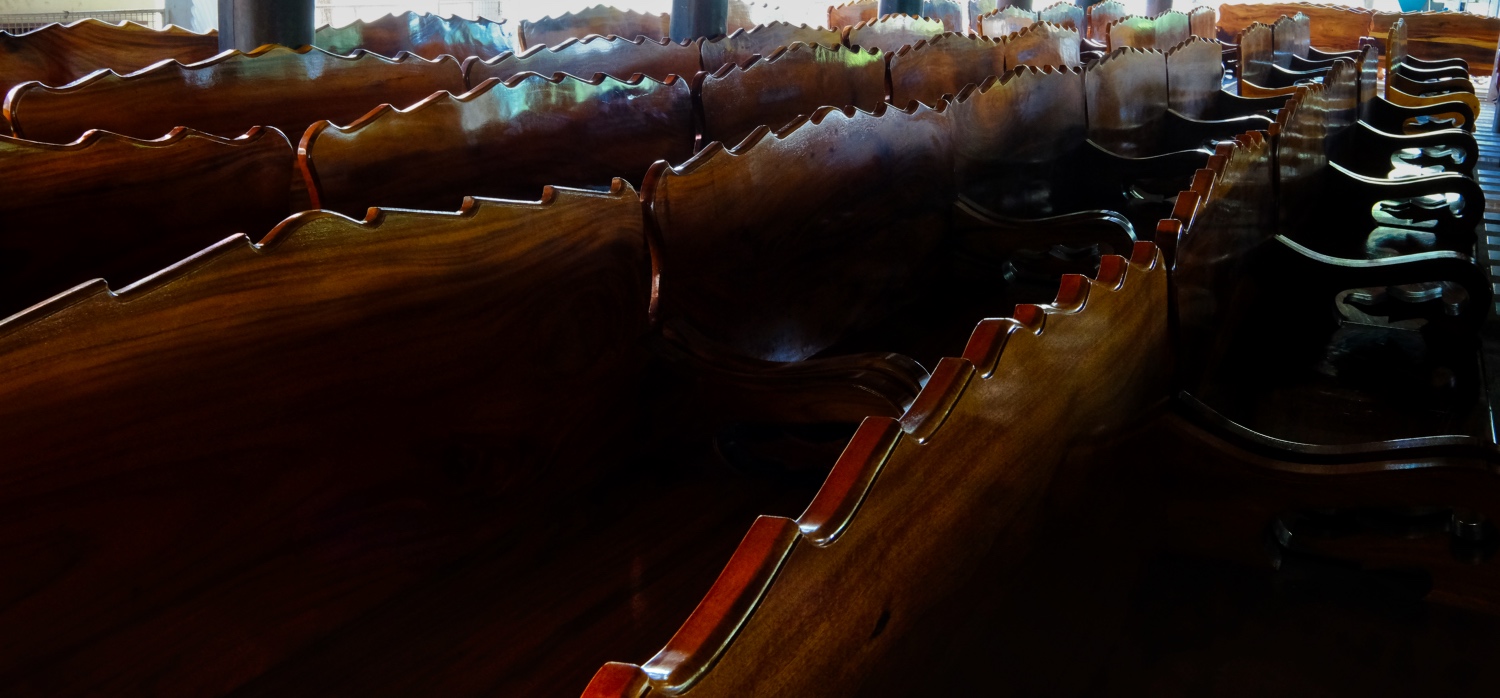 Whoever is making donations to this temple must be expecting large crowds. Beautiful wooden pews. John found someone to ask . . . they said we were about 20K from the Farm Museum. Oops! Wrong place . . . but still interesting.
Whoever is making donations to this temple must be expecting large crowds. Beautiful wooden pews. John found someone to ask . . . they said we were about 20K from the Farm Museum. Oops! Wrong place . . . but still interesting.
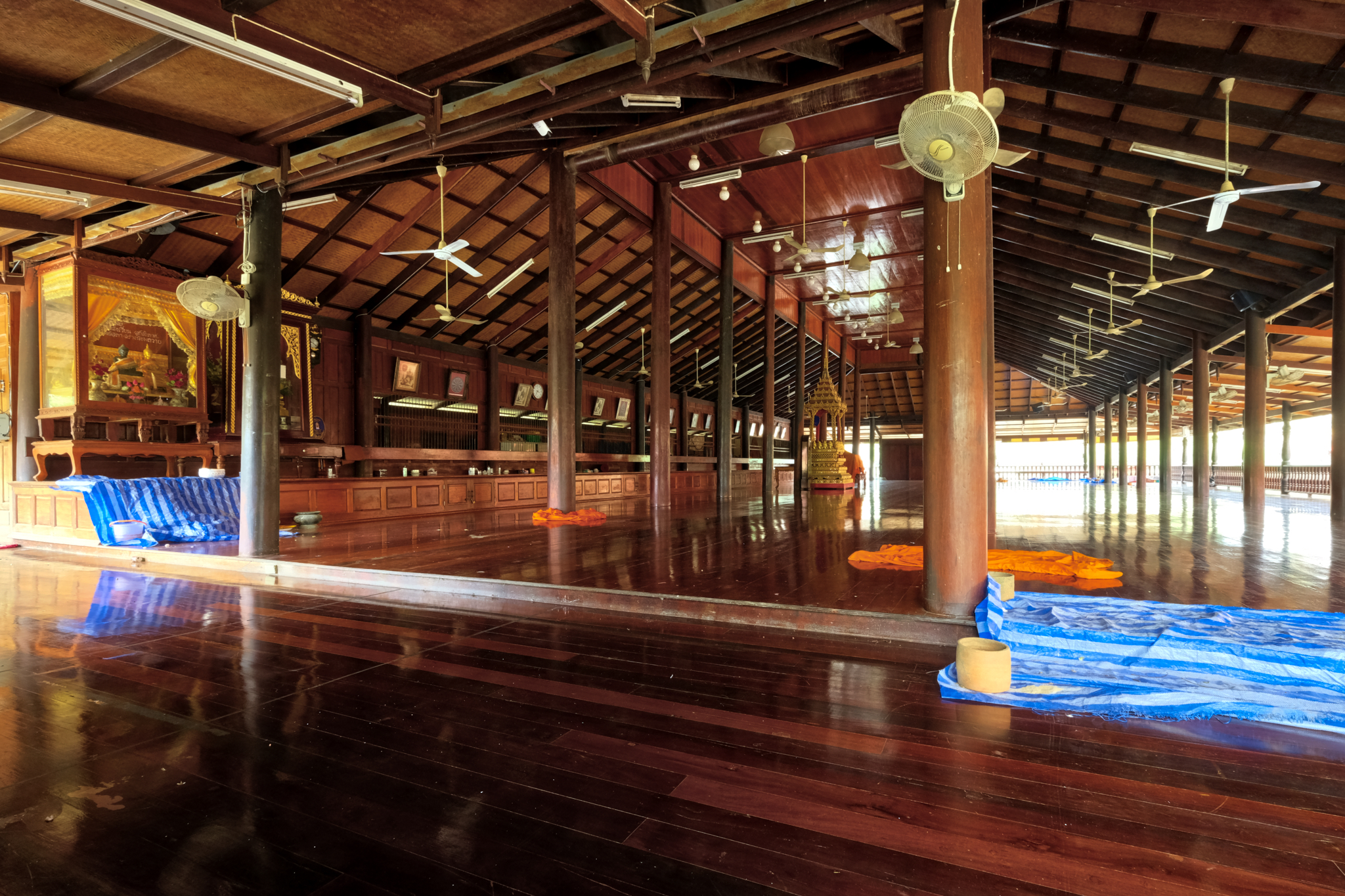 I walked around a bit and went up some stairs to find a locked door. Fortunately there was a window I could rest my camera on to take this HDR shot of the temple upper floor. The raised platform to the left is where the monks would sit and chant.
I walked around a bit and went up some stairs to find a locked door. Fortunately there was a window I could rest my camera on to take this HDR shot of the temple upper floor. The raised platform to the left is where the monks would sit and chant.
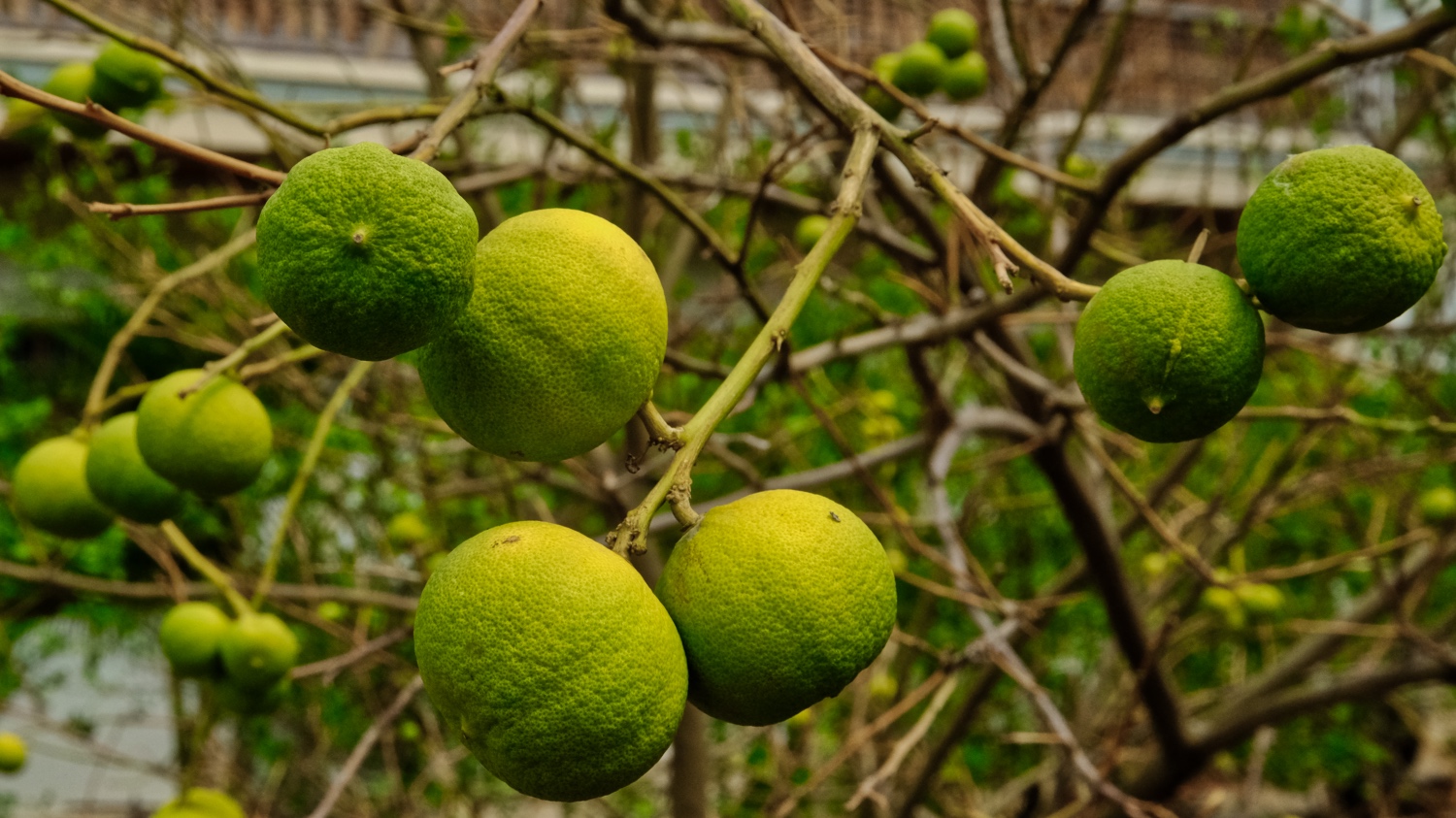 We spent 10 minutes at the Lemon Temple, found the lemon bushes, and left for Farm Museum.
We spent 10 minutes at the Lemon Temple, found the lemon bushes, and left for Farm Museum.
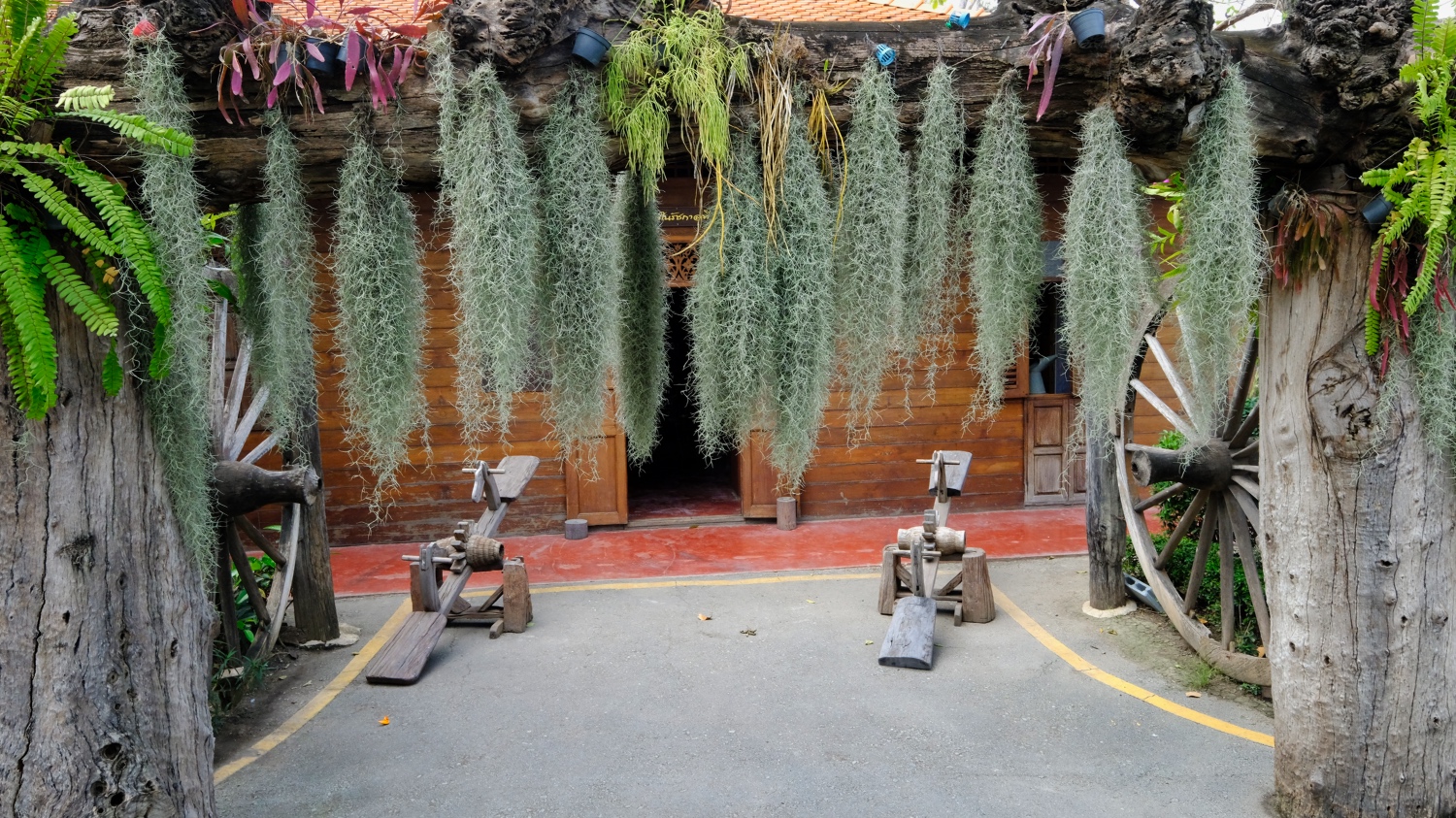 The entrance to the Lifestyle and Spirit of Thai Farmers Learning Center looked promising. And we were hungry.
The entrance to the Lifestyle and Spirit of Thai Farmers Learning Center looked promising. And we were hungry.
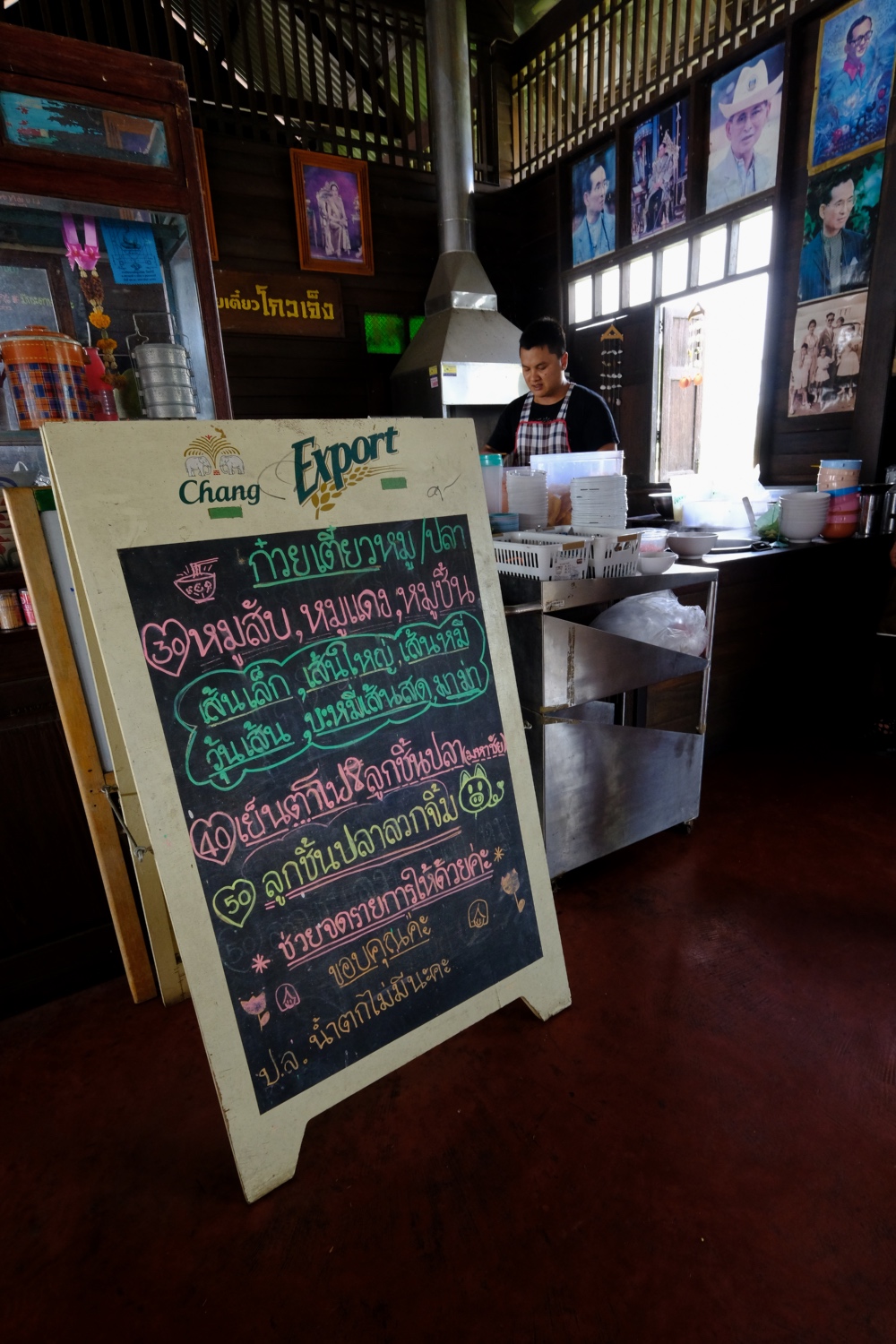 Fortunately they had an eatery where we could get a bowl of noodle soup. They also had a cafe where we had a fine cup of coffee.
Fortunately they had an eatery where we could get a bowl of noodle soup. They also had a cafe where we had a fine cup of coffee.
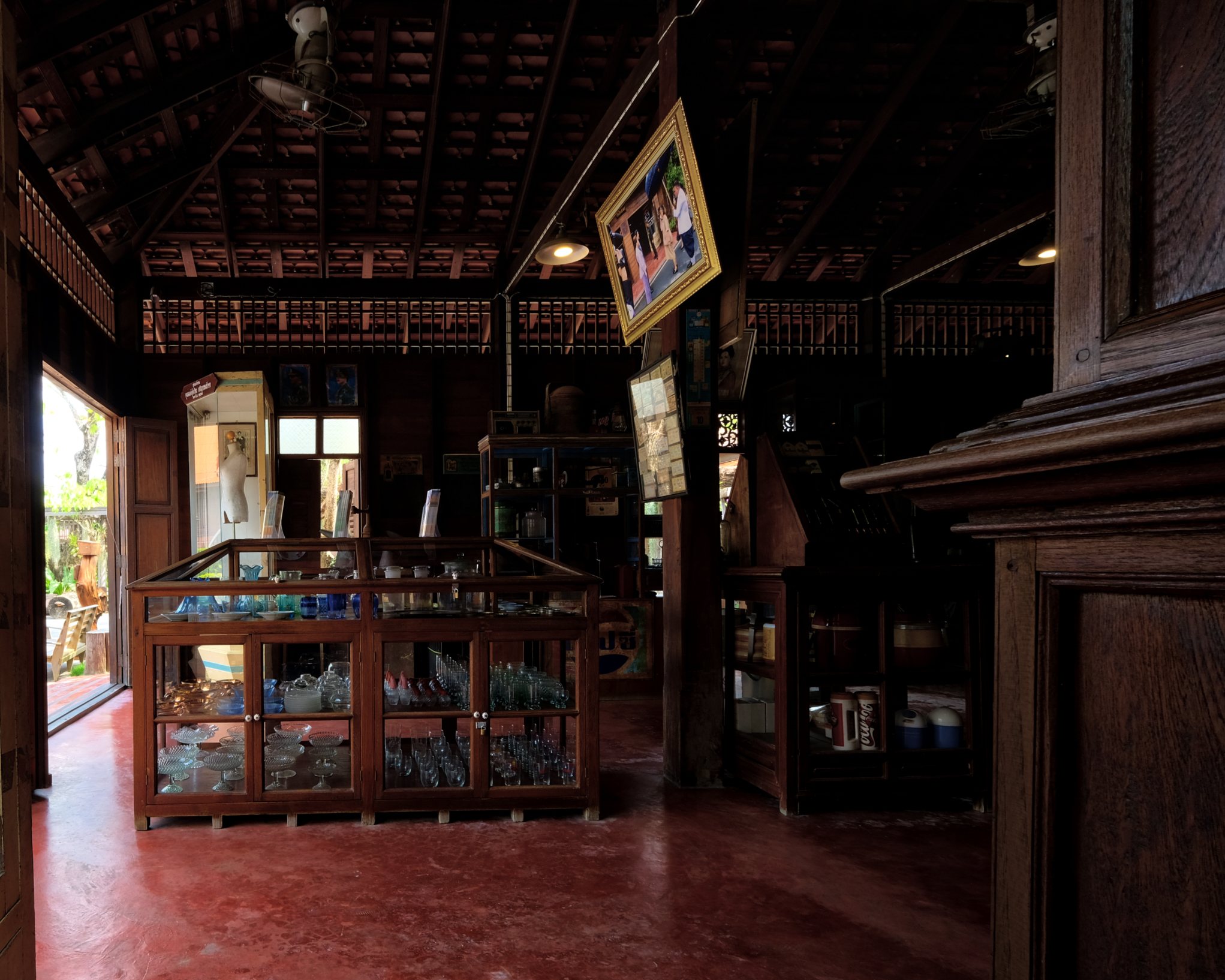 The museum had a fine recreated historical rural shop.
The museum had a fine recreated historical rural shop.
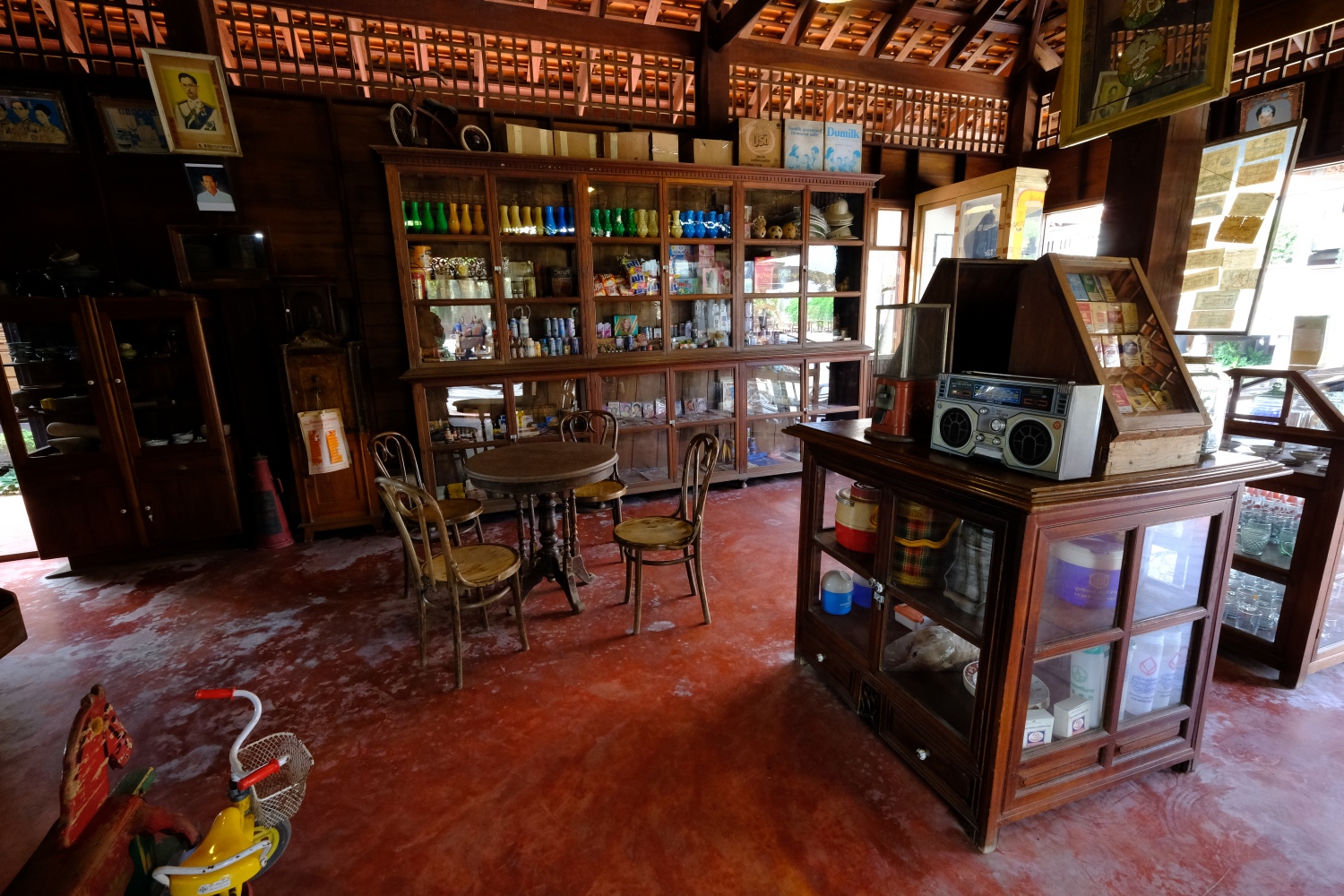 Historical store.
Historical store.
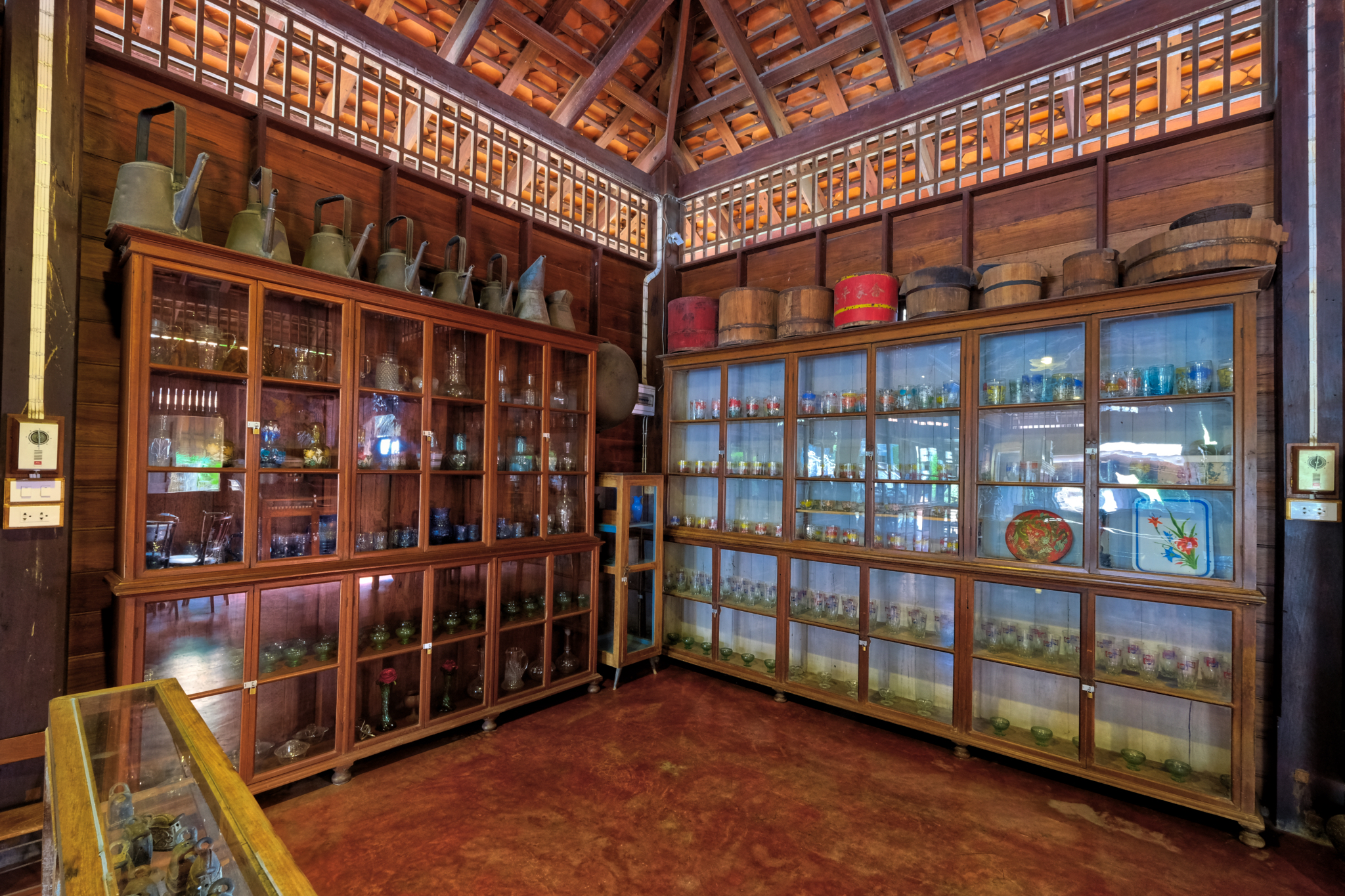 A very beautiful space.
A very beautiful space.
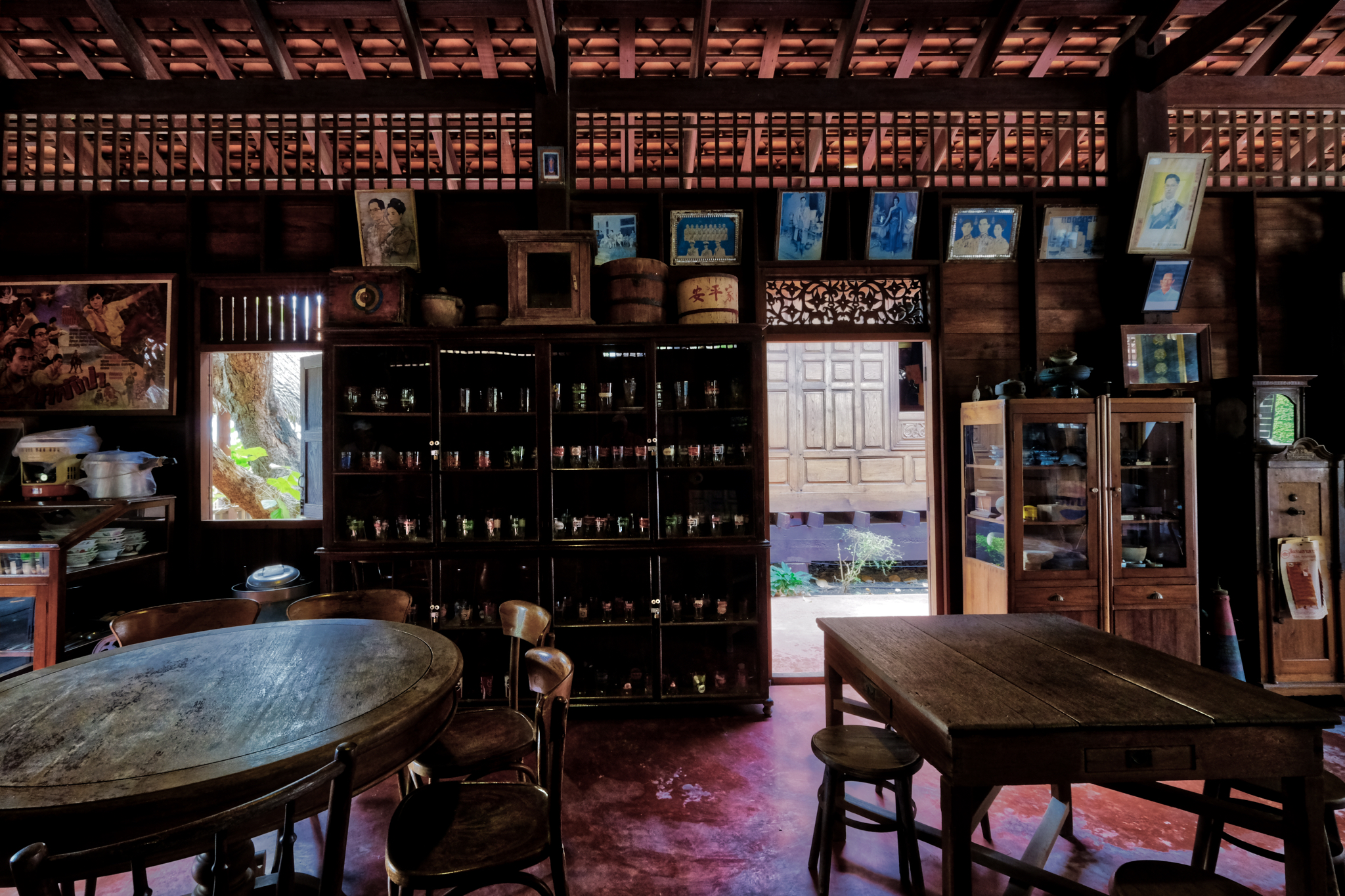 Strangely, not all the items on the display shelves were old and antique.
Strangely, not all the items on the display shelves were old and antique.
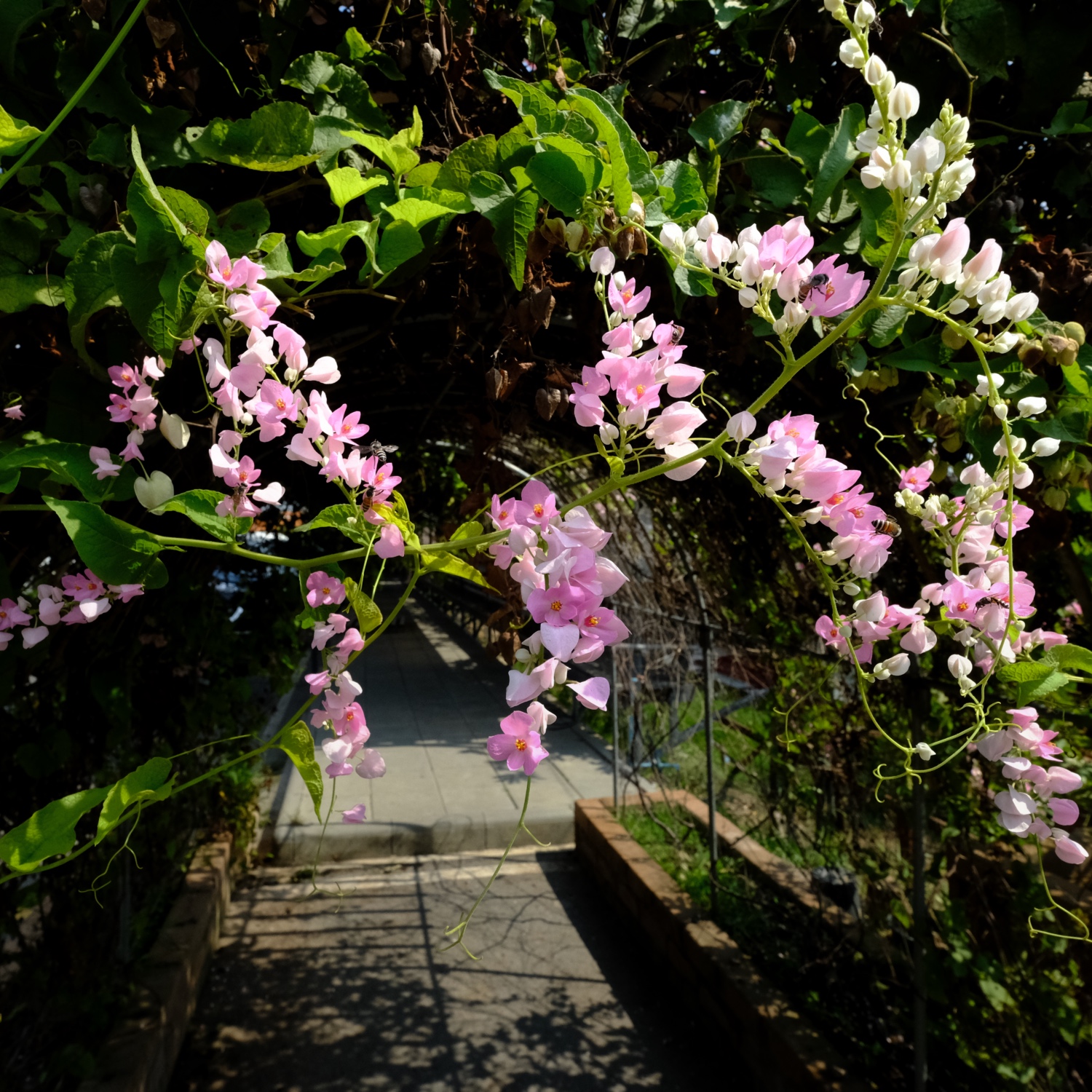 It was a very beautiful place with covered walkways.
It was a very beautiful place with covered walkways.
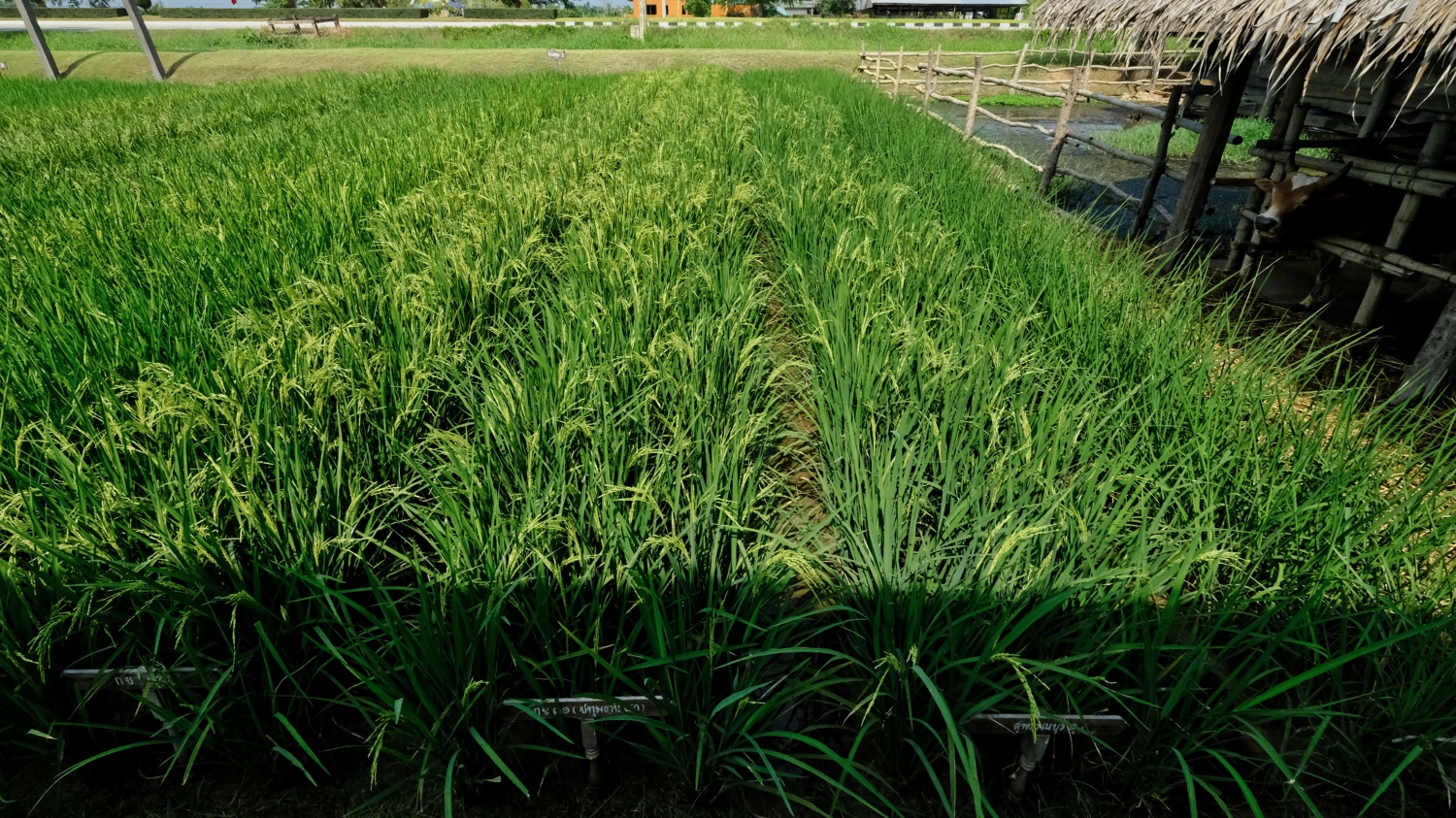 There were fields to show different types of rice.
There were fields to show different types of rice.
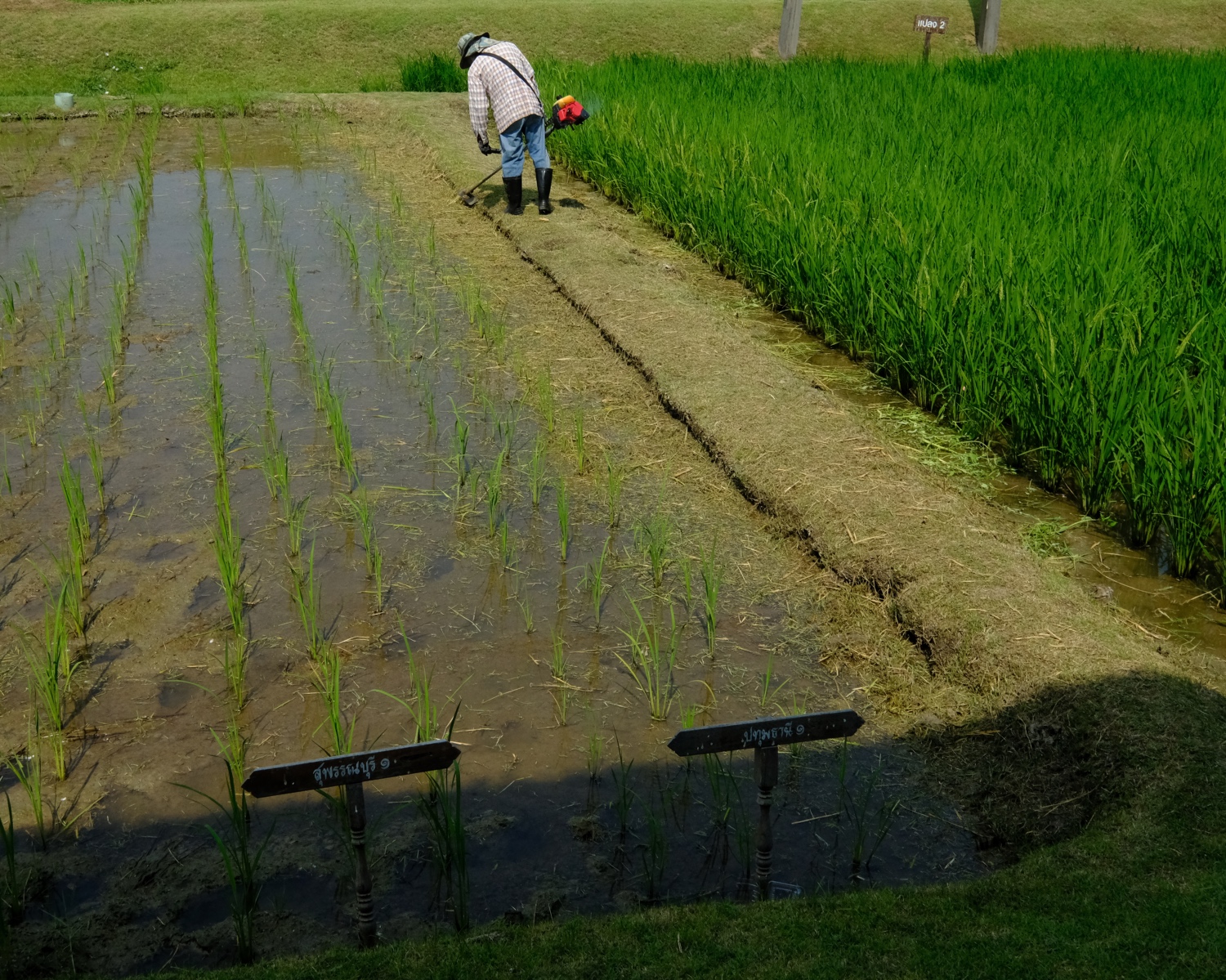 Trimming the rice fields . . . only at the museum.
Trimming the rice fields . . . only at the museum.
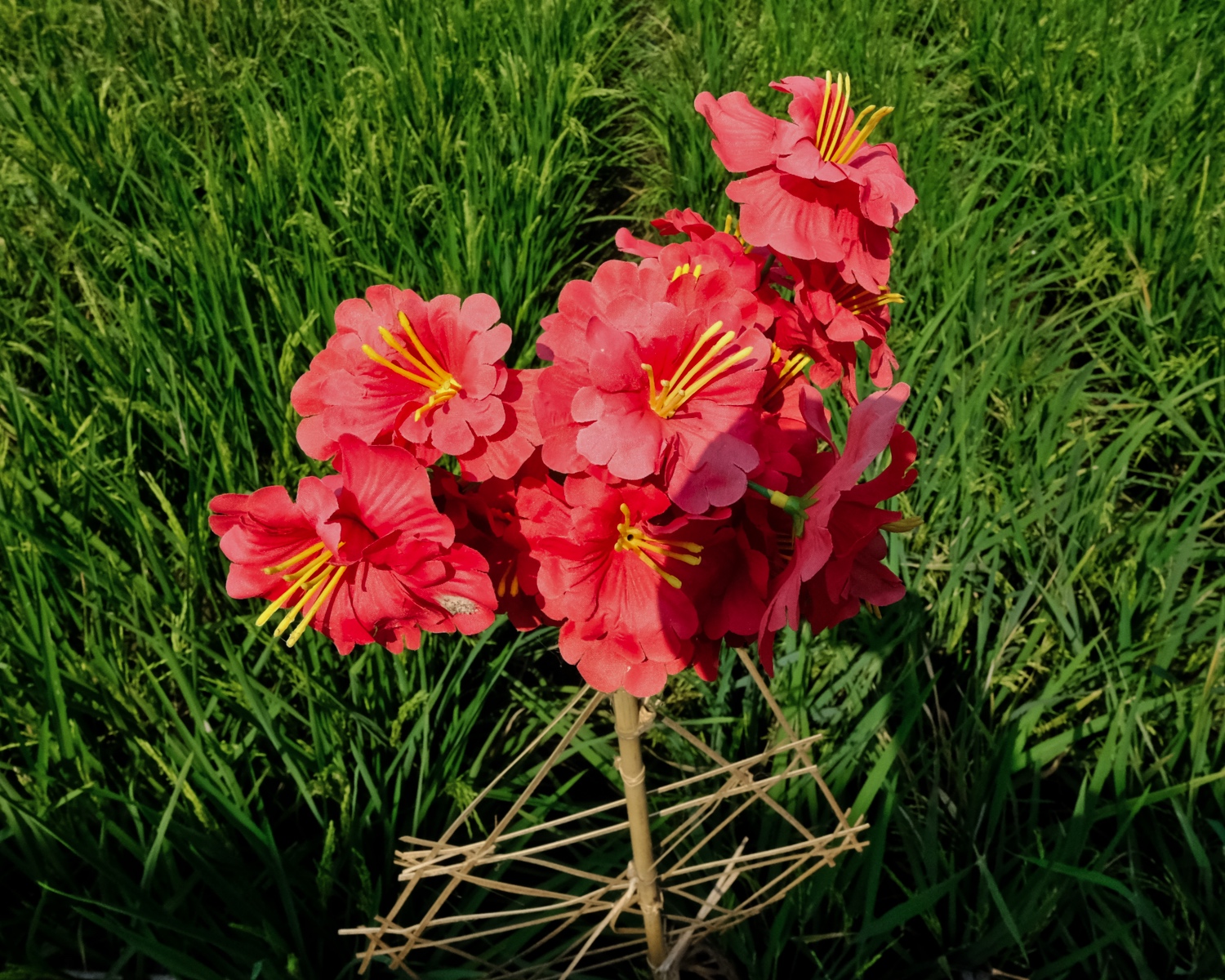 Flowers in the rice fields.
Flowers in the rice fields.
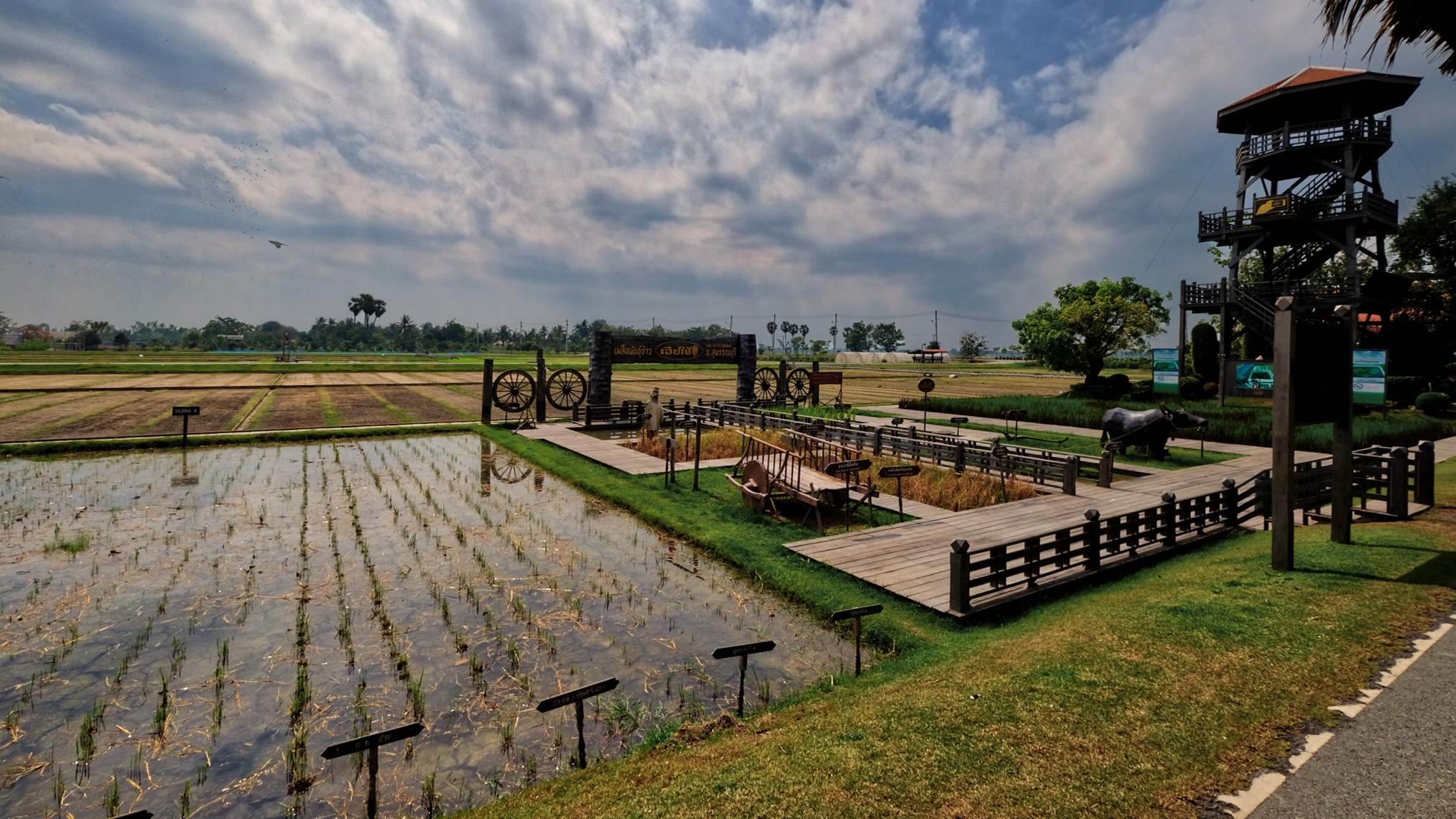 The center is designed to educate farmers about farming methods, and to educate the public about farming in general. None of the visitors we saw looked like farmers.
The center is designed to educate farmers about farming methods, and to educate the public about farming in general. None of the visitors we saw looked like farmers.
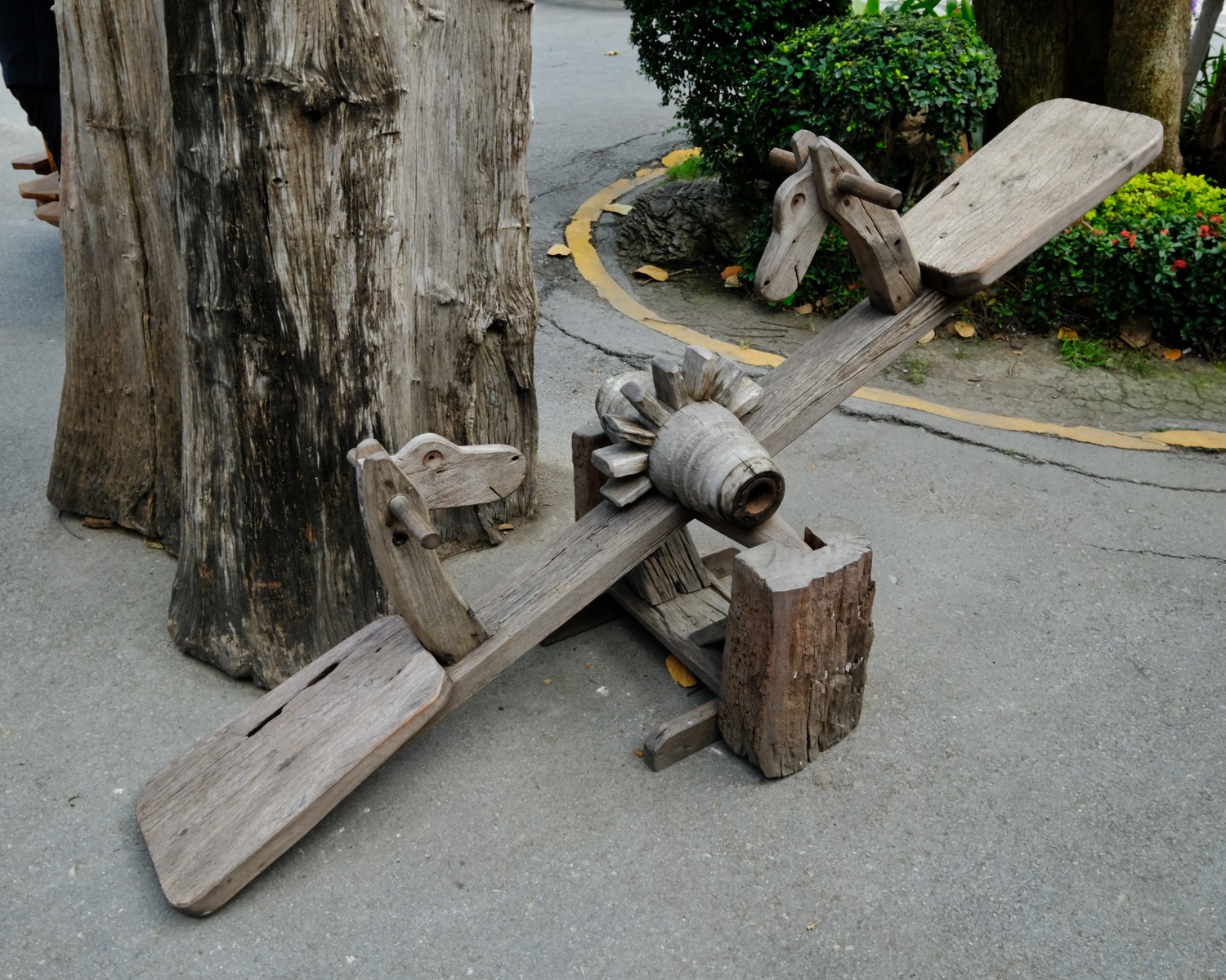 A child's teeter-totter made of parts from an old buffalo farm cart. You hate to see these old items repurposed this way.
A child's teeter-totter made of parts from an old buffalo farm cart. You hate to see these old items repurposed this way.
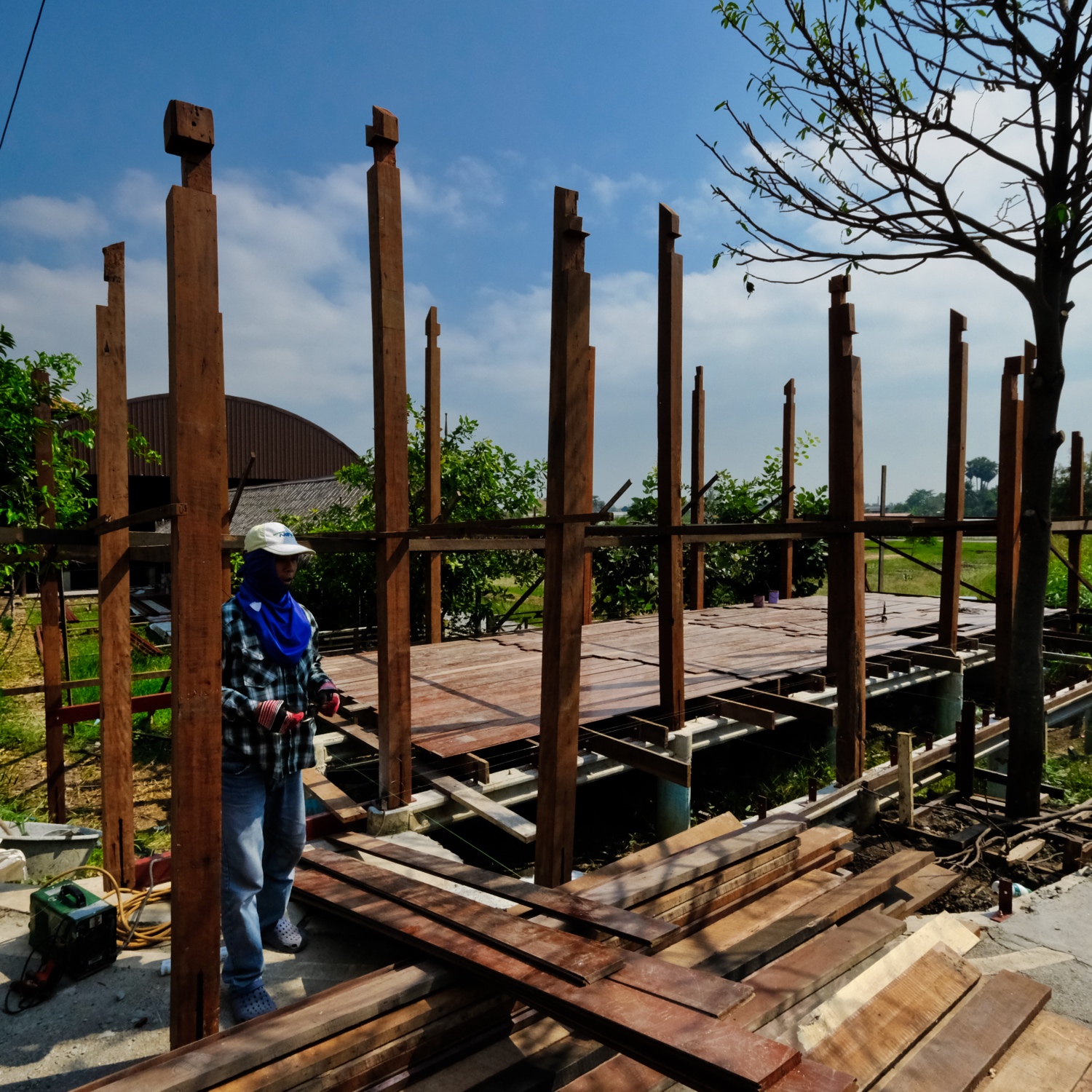 It was interesting to watch workers reassemble an old Thai style teak house.
It was interesting to watch workers reassemble an old Thai style teak house.
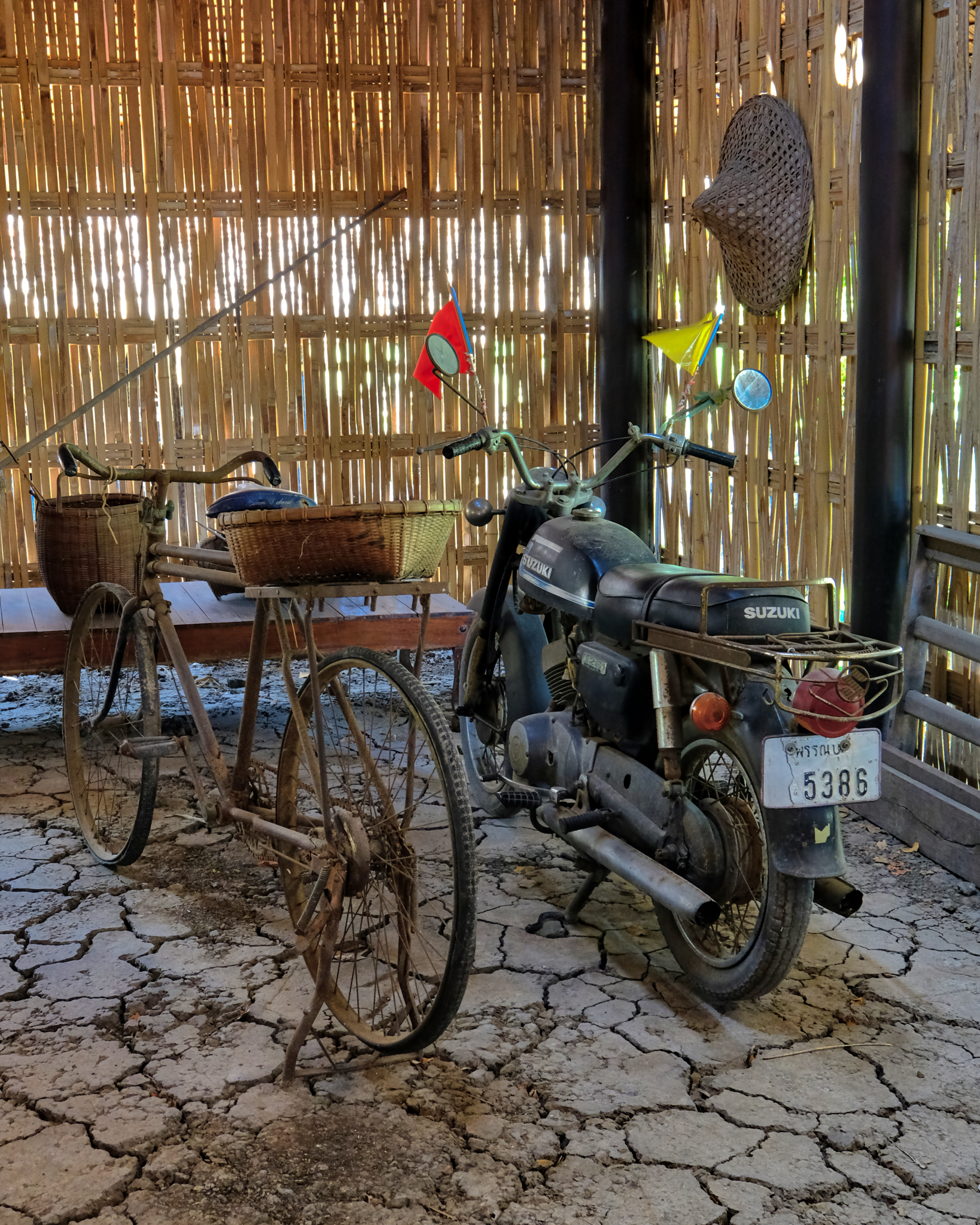 There were a few small exhibits of random 'old stuff.' This old Suzuki and bicycle in a grass shack was particularly beautiful. We headed on to our next destination: The Hell Garden (Wat Phai Rong Wua) of Suphanburi.
There were a few small exhibits of random 'old stuff.' This old Suzuki and bicycle in a grass shack was particularly beautiful. We headed on to our next destination: The Hell Garden (Wat Phai Rong Wua) of Suphanburi.
Suphanburi Province: A Day Trip Northwest Of Bangkok
 Tuesday, March 13, 2018 at 12:08PM
Tuesday, March 13, 2018 at 12:08PM A RAMBLE IN FOUR PARTS
Part Two: A Rural Suphanburi [Water] Buffalo Park
My friend John Stiles and I set off in my old truck up the road to the rural province of Suphanburi, to the northwest of Bangkok. As usual, we had a vague idea, from a tertiary Google search, of what we wanted to see, but no particular plan: we would ramble. We would eventually see several amazing Buddhist temple complexes, a Buffalo park, and a Farm Museum. We never 'found' the actual town of Suphanburi, but we didn't care: we had a grand adventure rambling about the rural Thai countryside.
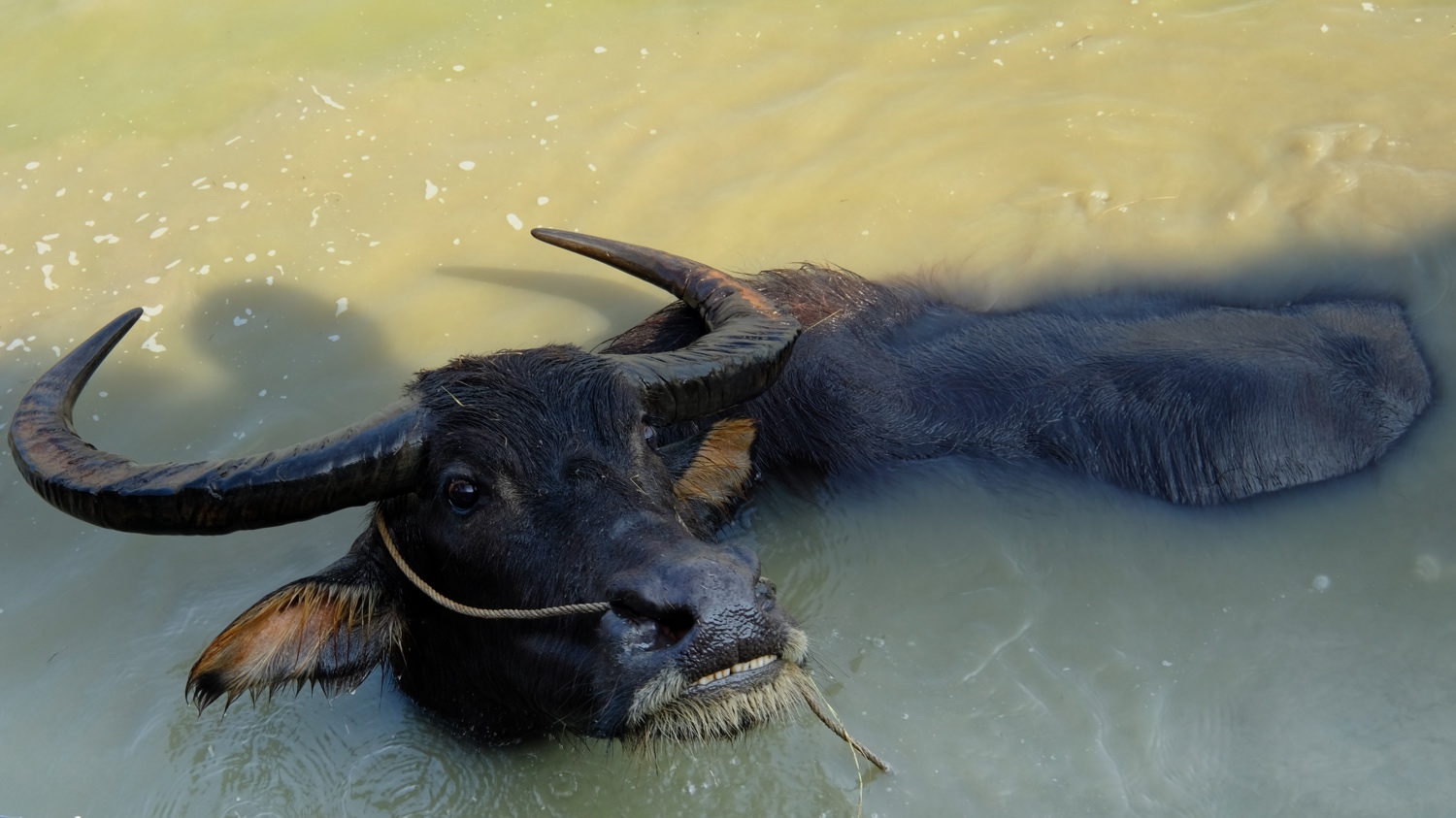 As there is only one kind of buffalo in Thailand, they are referred to as Buffalo . . . not Water Buffalo!
As there is only one kind of buffalo in Thailand, they are referred to as Buffalo . . . not Water Buffalo!
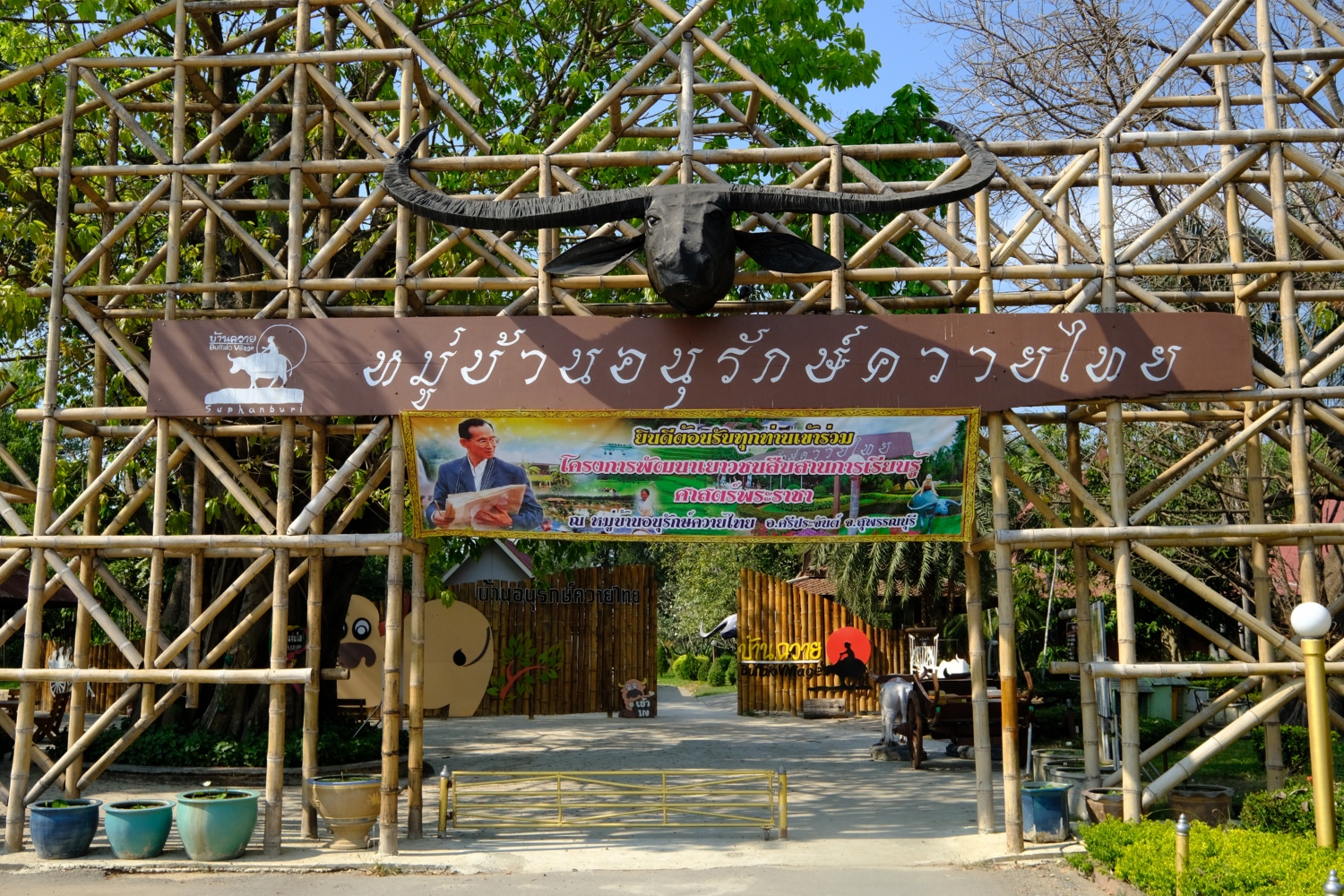 Baan Kwai (Buffalo Village) in rural Si Prachan, Suphanburi Province a delightful 17 acres of ponds, buffalos, old Thai houses reassembled in tidy gardens, buffalo, intended to educate the public about . . . buffalo.
Baan Kwai (Buffalo Village) in rural Si Prachan, Suphanburi Province a delightful 17 acres of ponds, buffalos, old Thai houses reassembled in tidy gardens, buffalo, intended to educate the public about . . . buffalo.
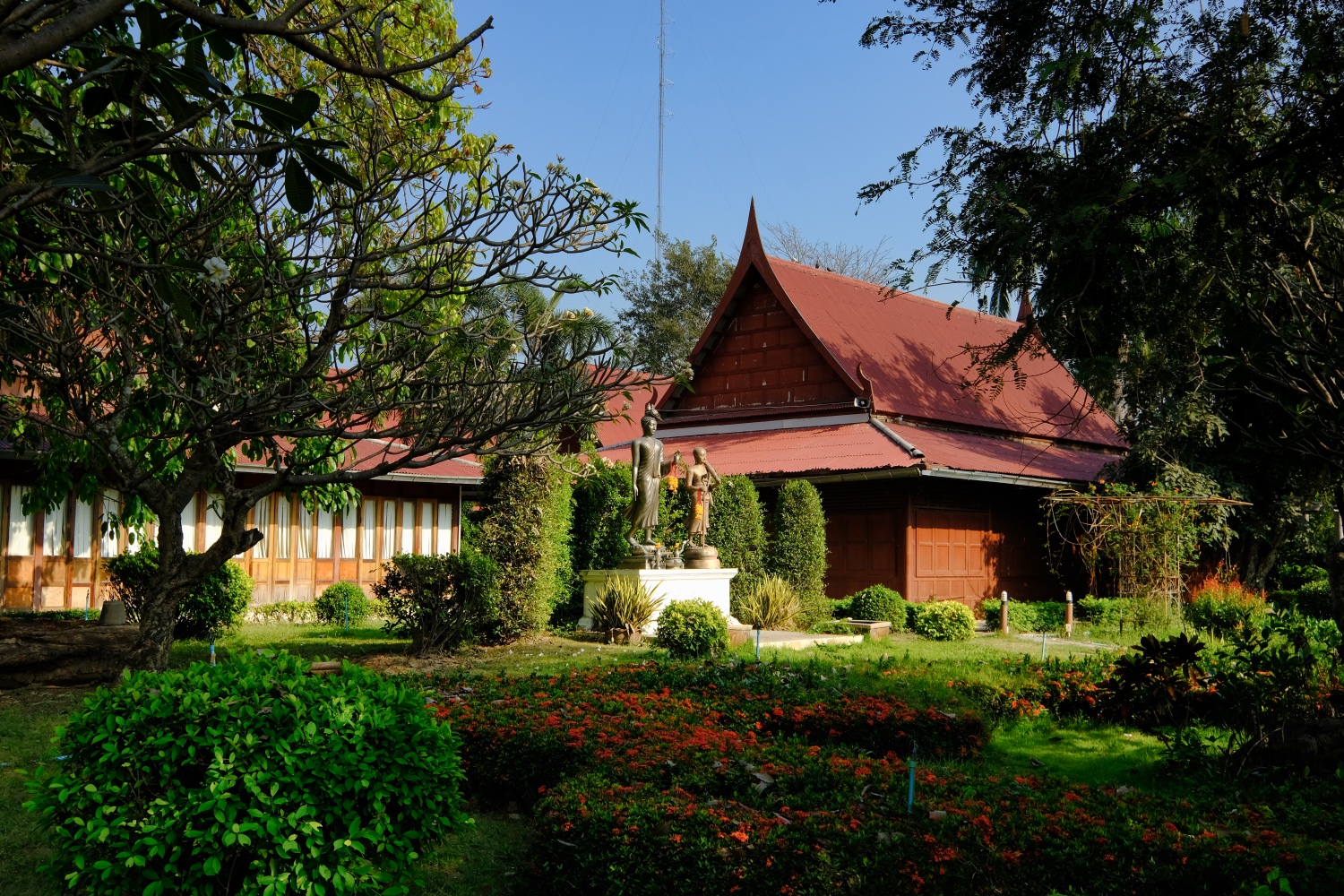 The grounds of Baan Kwai are very nicely tended and the old Thai houses are beautifully restored and maintained. This is the ideal of old Thai culture.
The grounds of Baan Kwai are very nicely tended and the old Thai houses are beautifully restored and maintained. This is the ideal of old Thai culture.
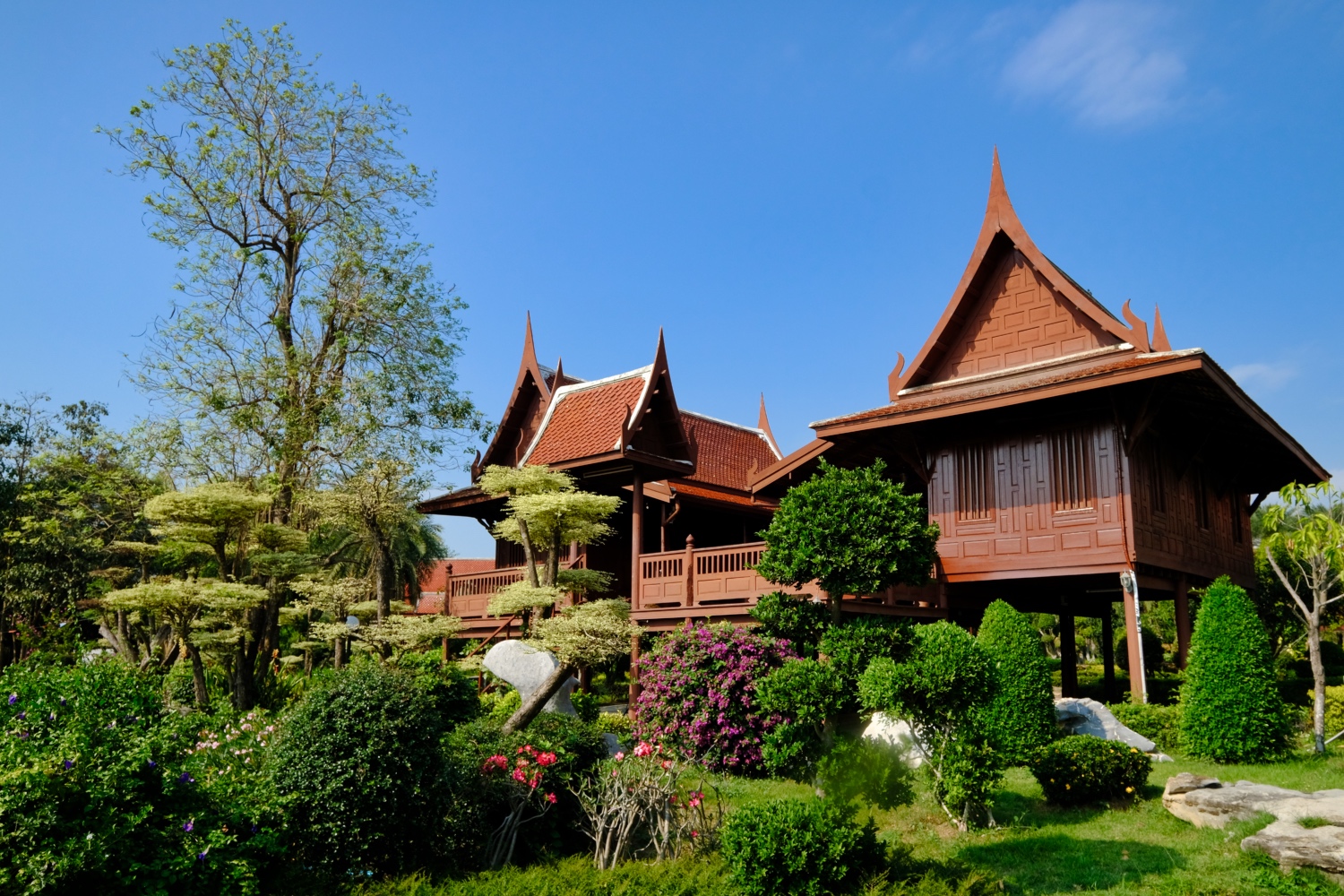 I love these old Thai style houses . . . normally made of teak wood.
I love these old Thai style houses . . . normally made of teak wood.
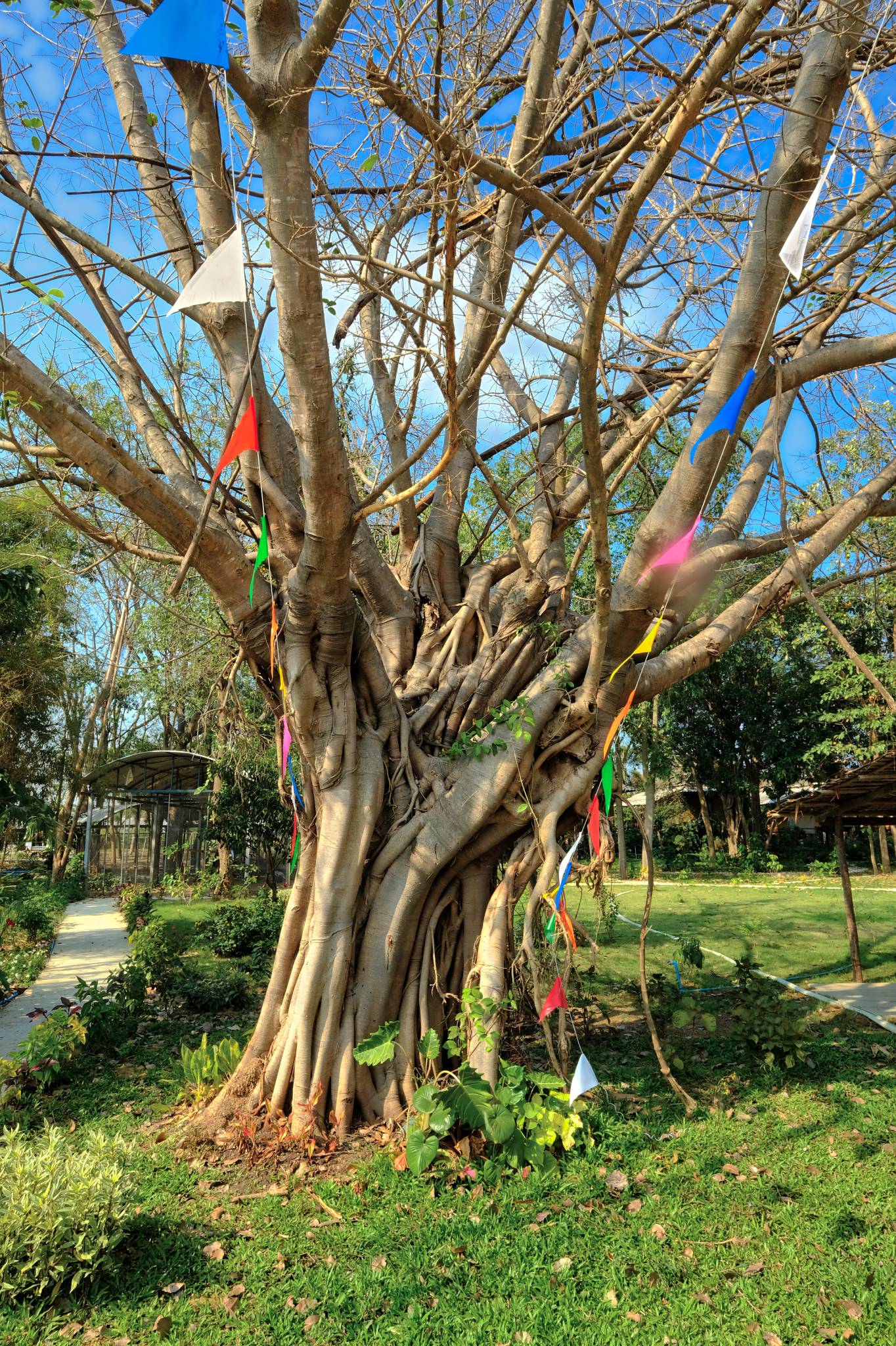 Beautiful old trees threw their shade throughout the park.
Beautiful old trees threw their shade throughout the park.
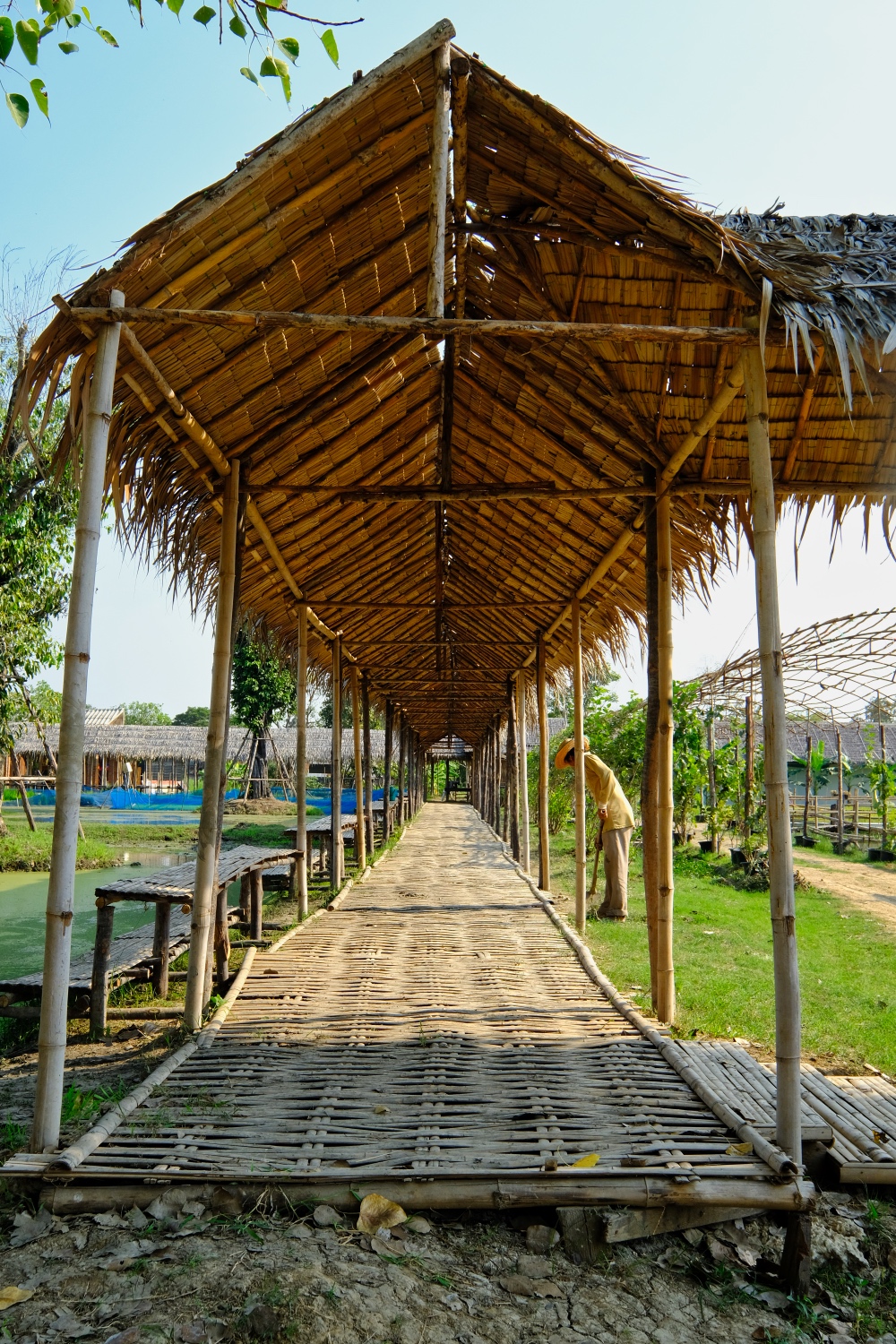 They made a nice effort to create an 'old time' rural feel to the place.
They made a nice effort to create an 'old time' rural feel to the place.
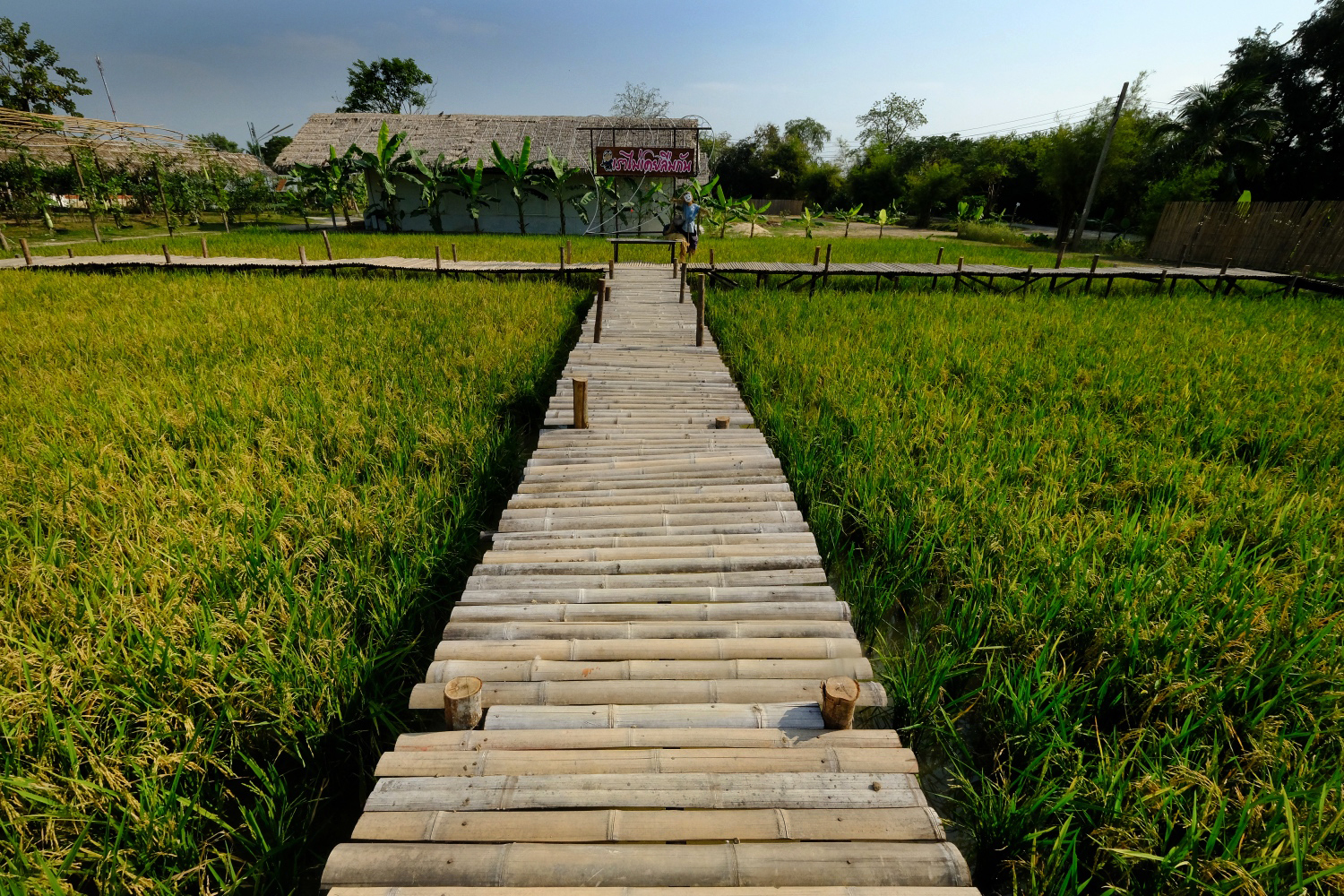 There was an area set aside for a exhibit of rice cultivation.
There was an area set aside for a exhibit of rice cultivation.
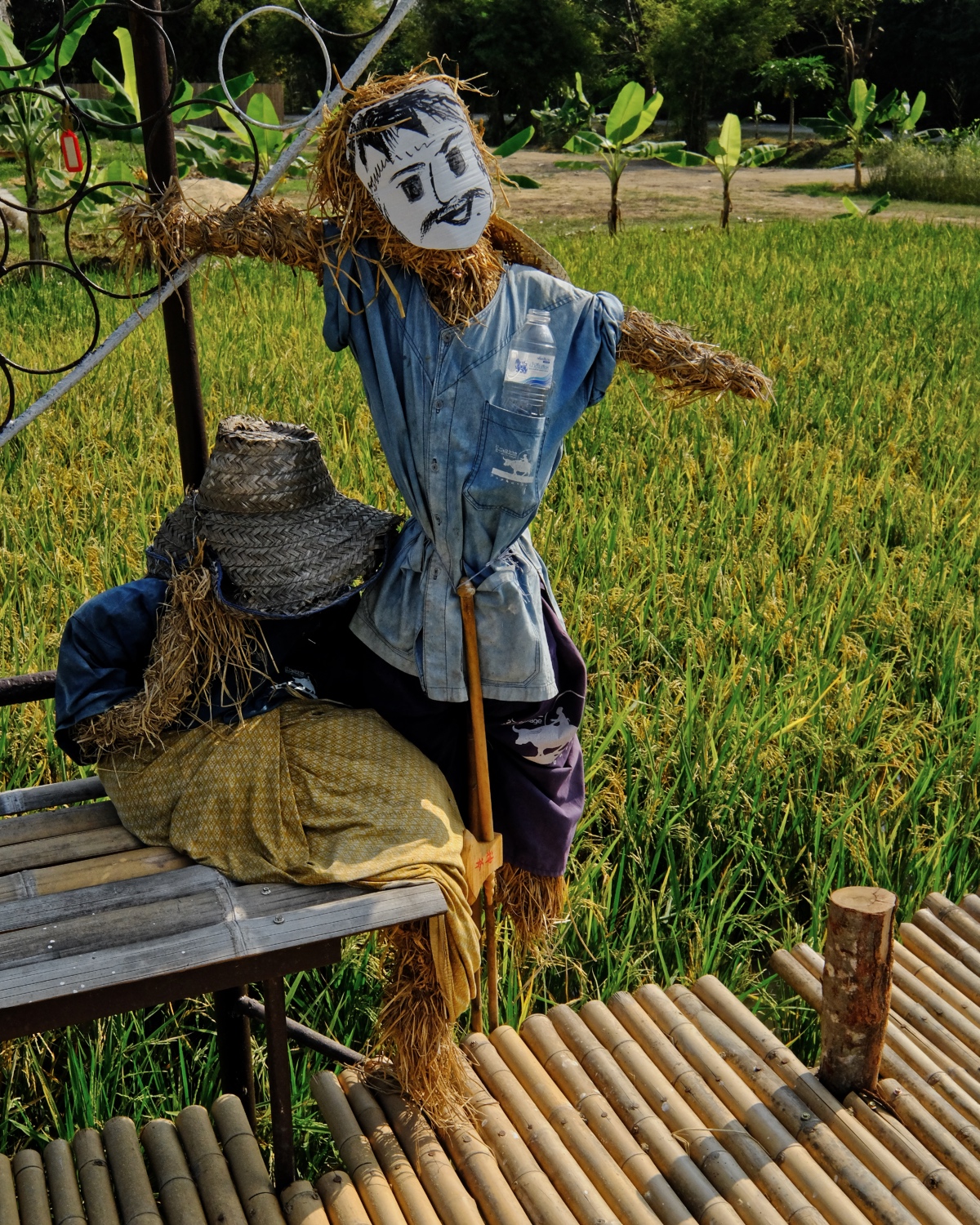 A Thai scarecrow. We saw many of these in the fields all across Suphanburi Province.
A Thai scarecrow. We saw many of these in the fields all across Suphanburi Province.
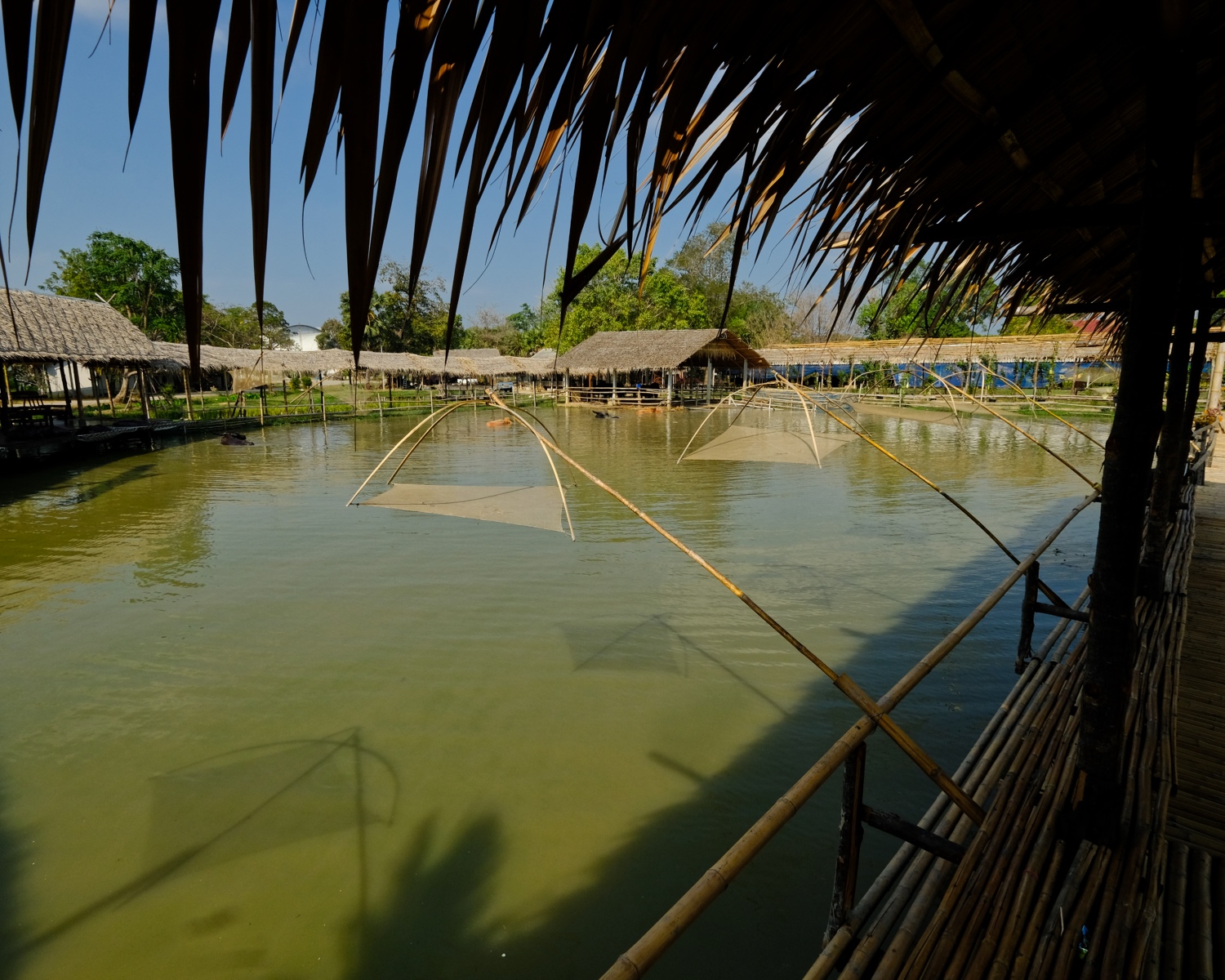 There were several ponds for the buffalo and ducks and geese. Those are fish traps . . . although I do not believe they used them . . . they are for the visitors to look at.
There were several ponds for the buffalo and ducks and geese. Those are fish traps . . . although I do not believe they used them . . . they are for the visitors to look at.
 The ducks came near . . . expecting a hand out.
The ducks came near . . . expecting a hand out.
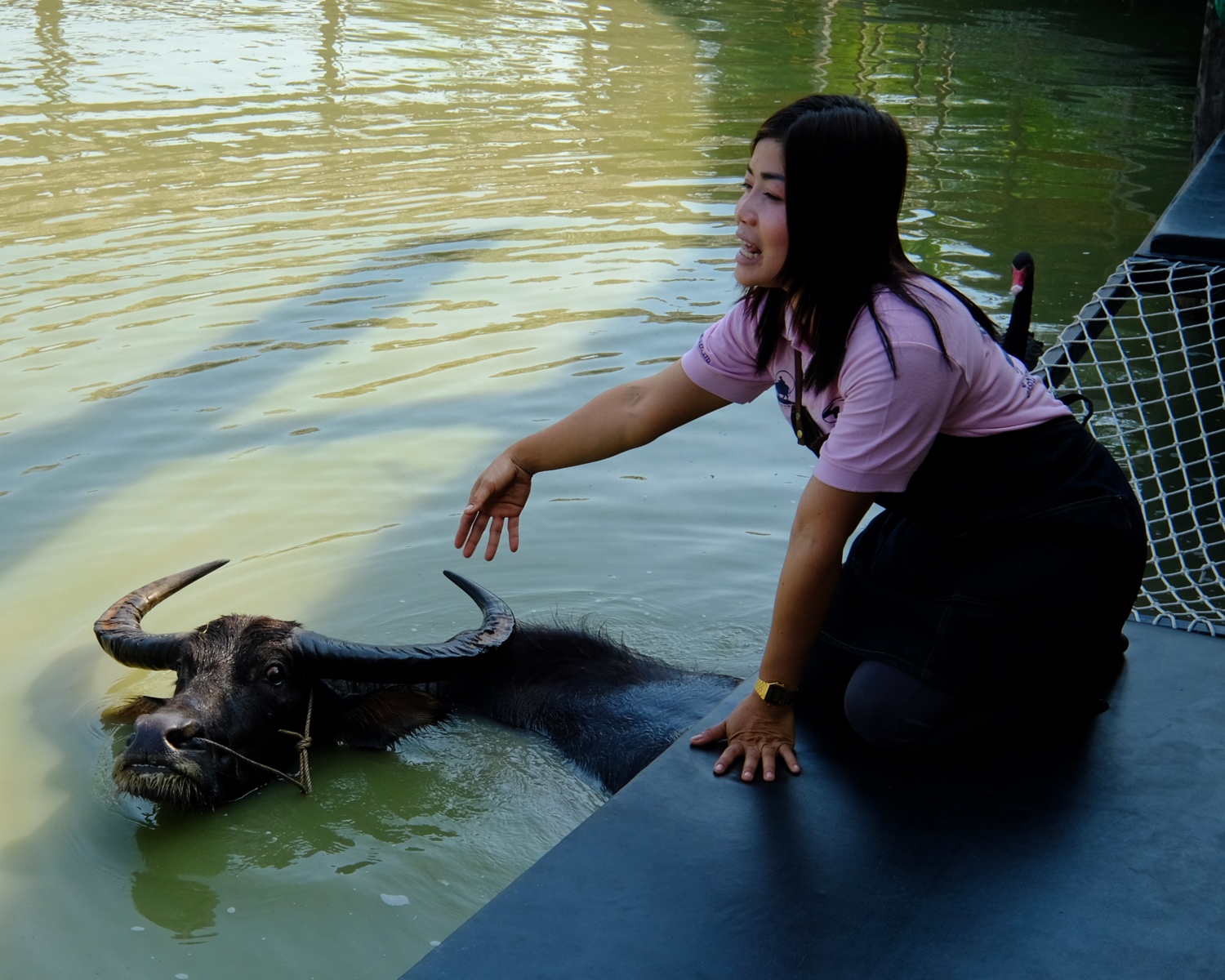 A park employee called the buffalo over . . . so she could sell us some buffalo feed to hand-feed them.
A park employee called the buffalo over . . . so she could sell us some buffalo feed to hand-feed them.
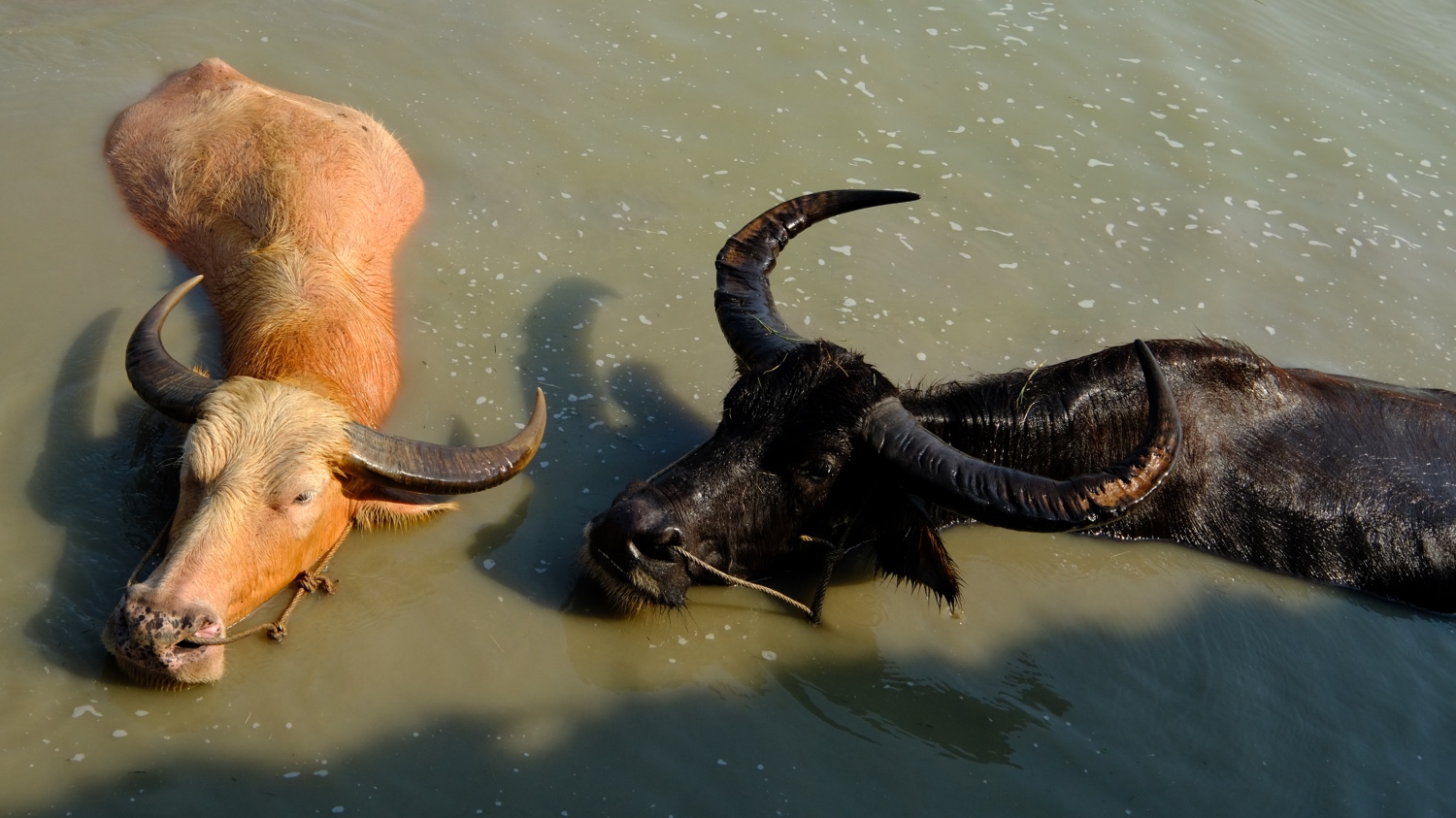 The buffalo in the water happily obliged and came over to be fed.
The buffalo in the water happily obliged and came over to be fed.
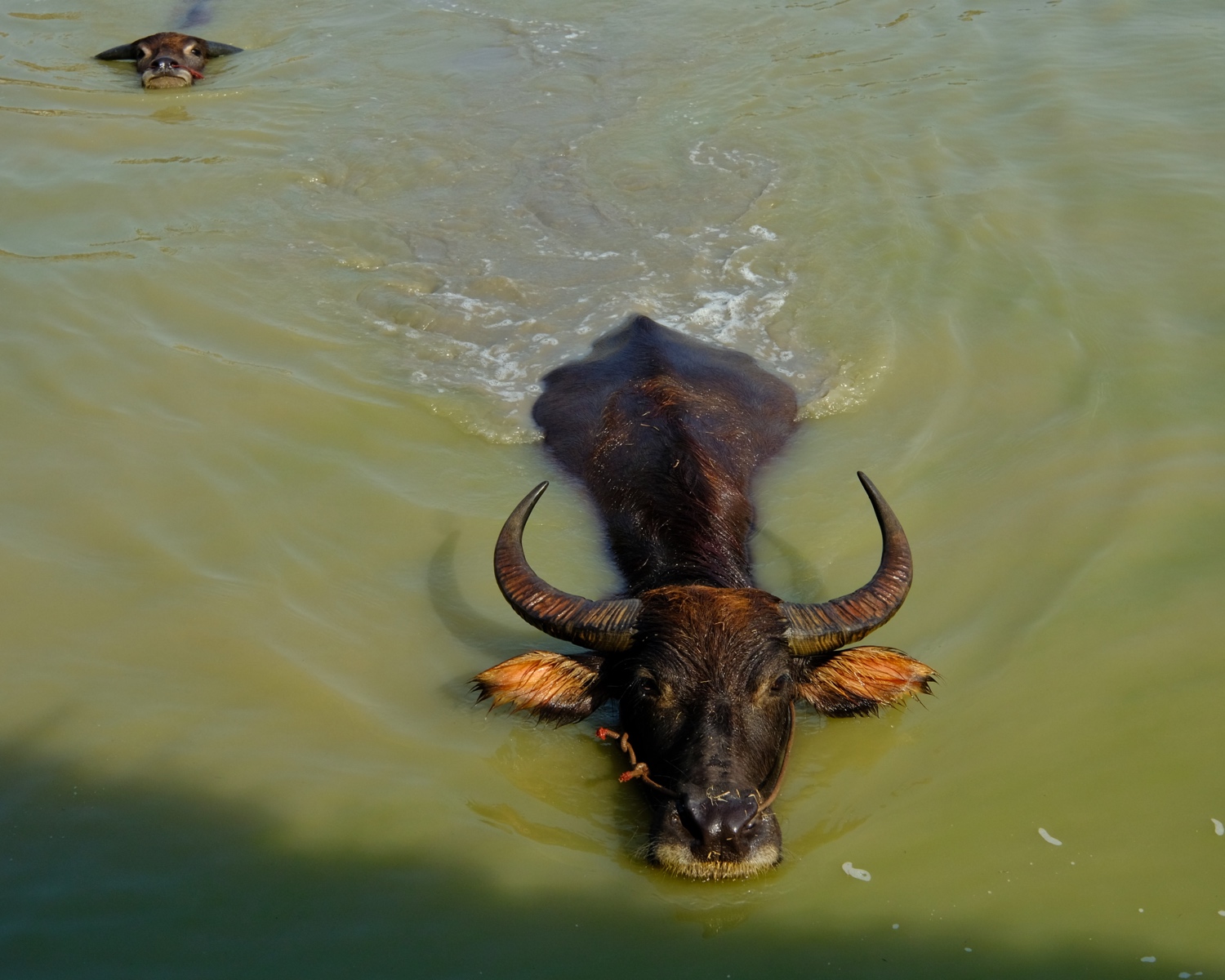 A mother buffalo and her baby swam over too.
A mother buffalo and her baby swam over too.
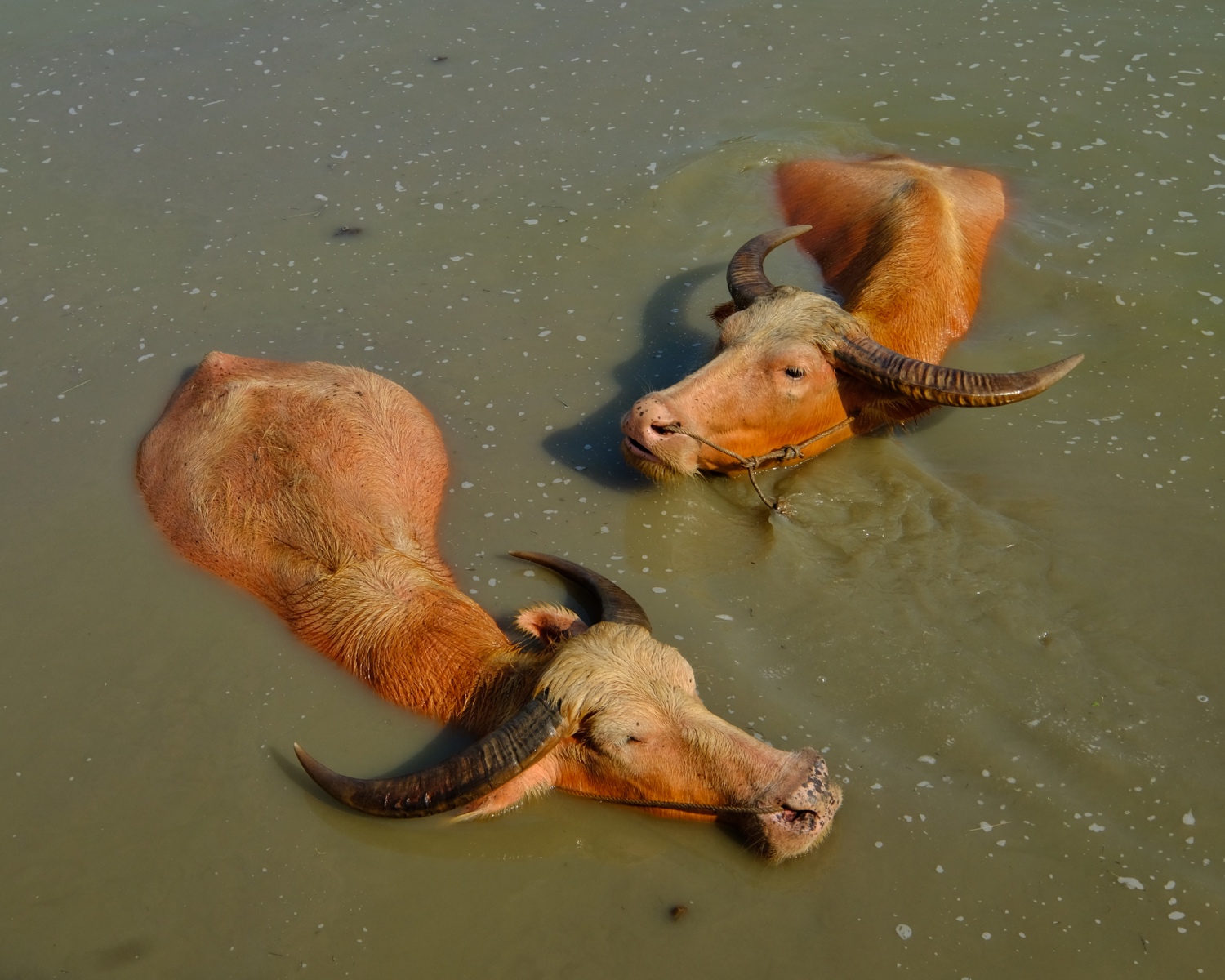 These buffalo were a pleasing color . . . and moved with such slow grace in the water.
These buffalo were a pleasing color . . . and moved with such slow grace in the water.
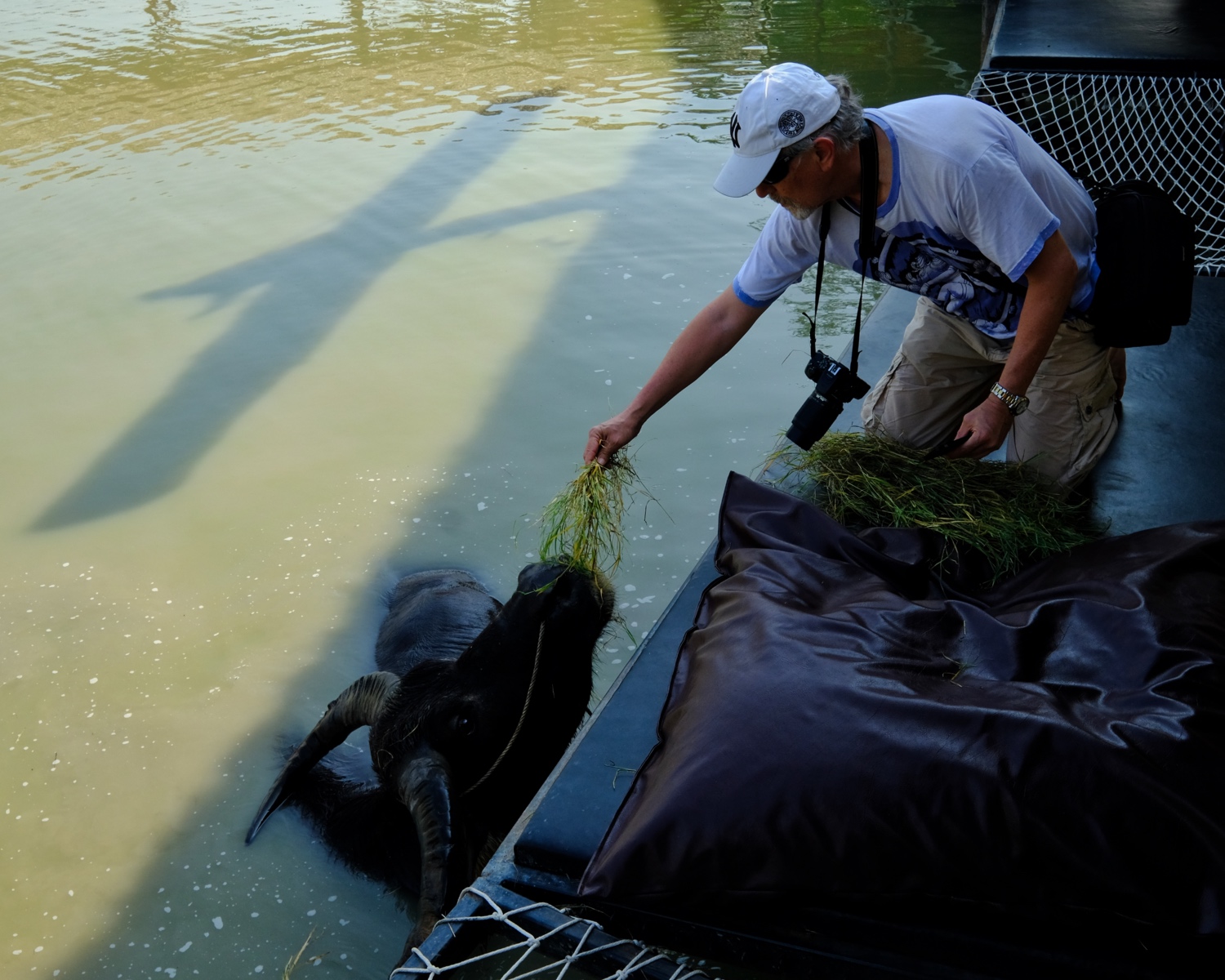 Feeding time!
Feeding time!
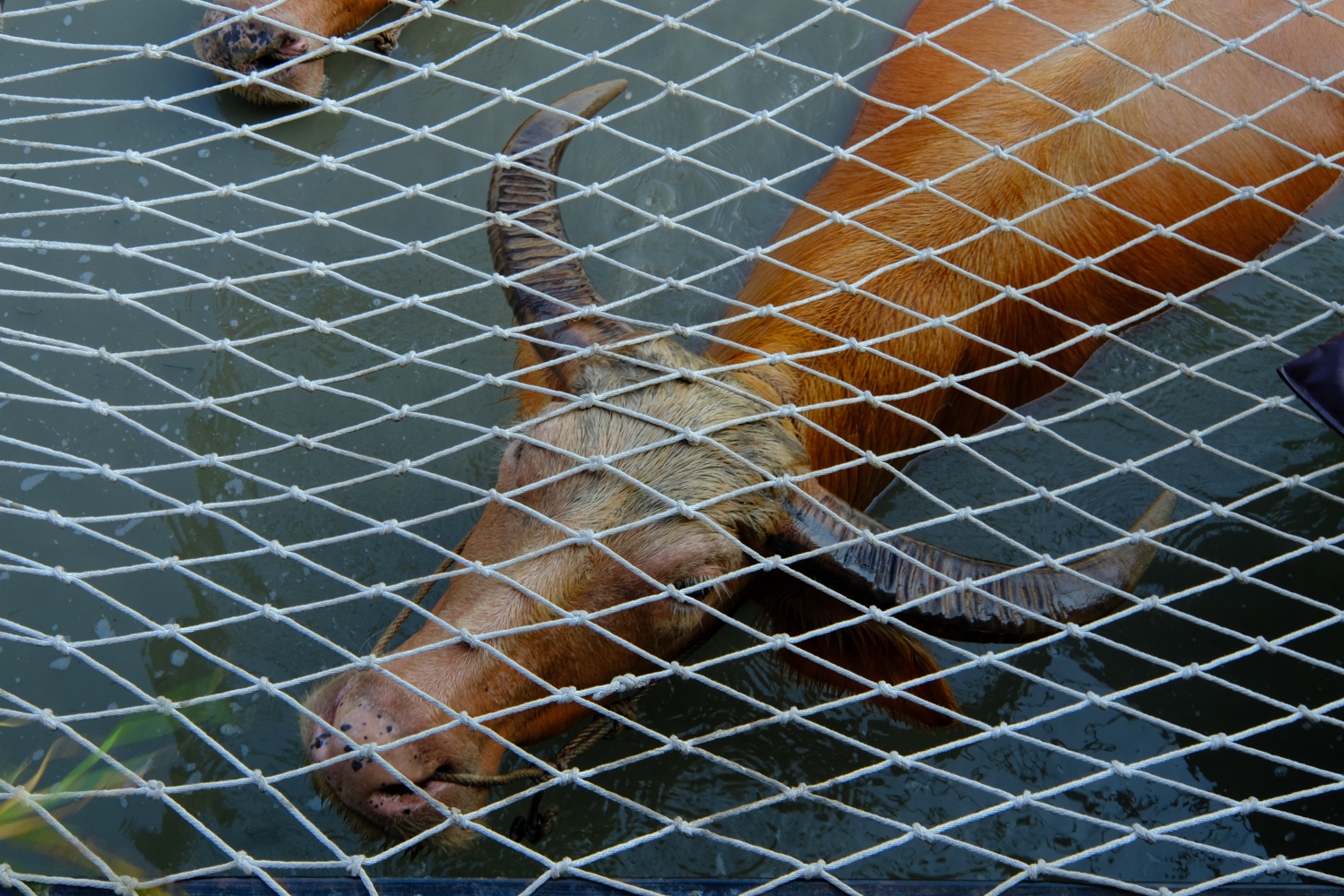 This one came right up and under the netting we were sitting on while feeding them . . . making for an interesting photo, no?
This one came right up and under the netting we were sitting on while feeding them . . . making for an interesting photo, no?
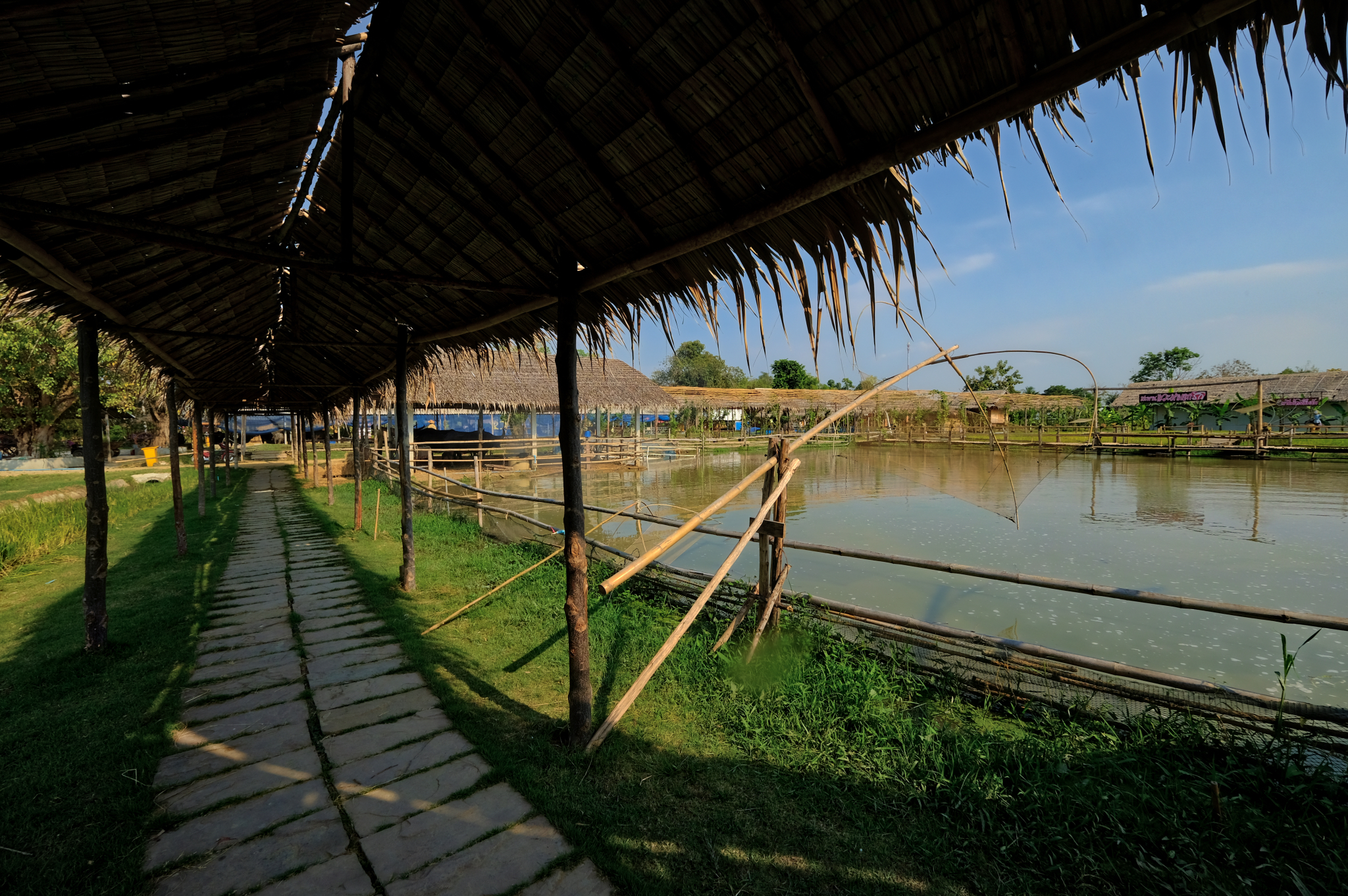 There was a lot more to see here than we anticipated.
There was a lot more to see here than we anticipated.
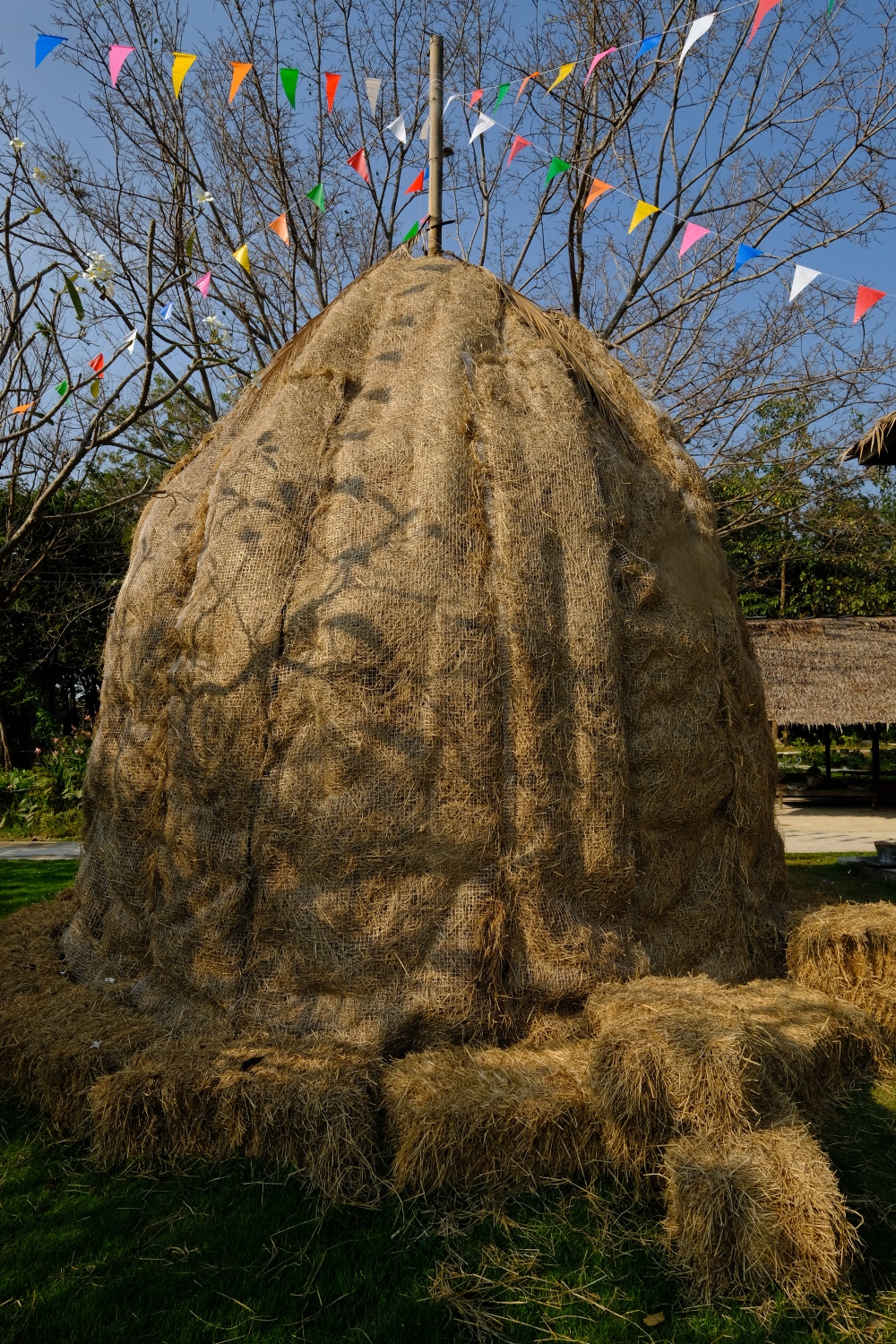 The buffalo village also served as a kind of agriculture museum as well. What a wonderful haystack!
The buffalo village also served as a kind of agriculture museum as well. What a wonderful haystack!
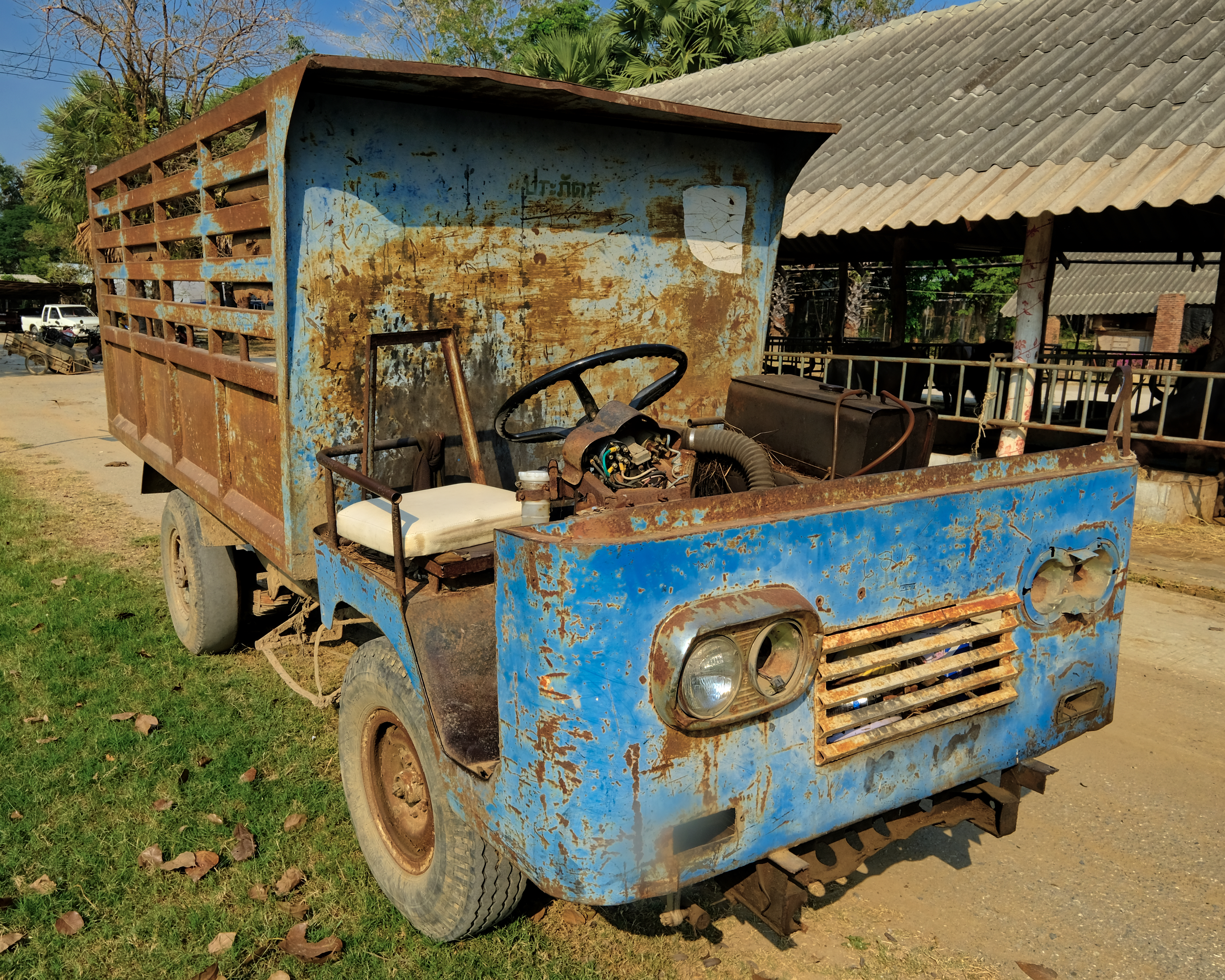 I fell in love with this old agricultural work truck. Each of those scratches and dents came with a story . . .
I fell in love with this old agricultural work truck. Each of those scratches and dents came with a story . . .
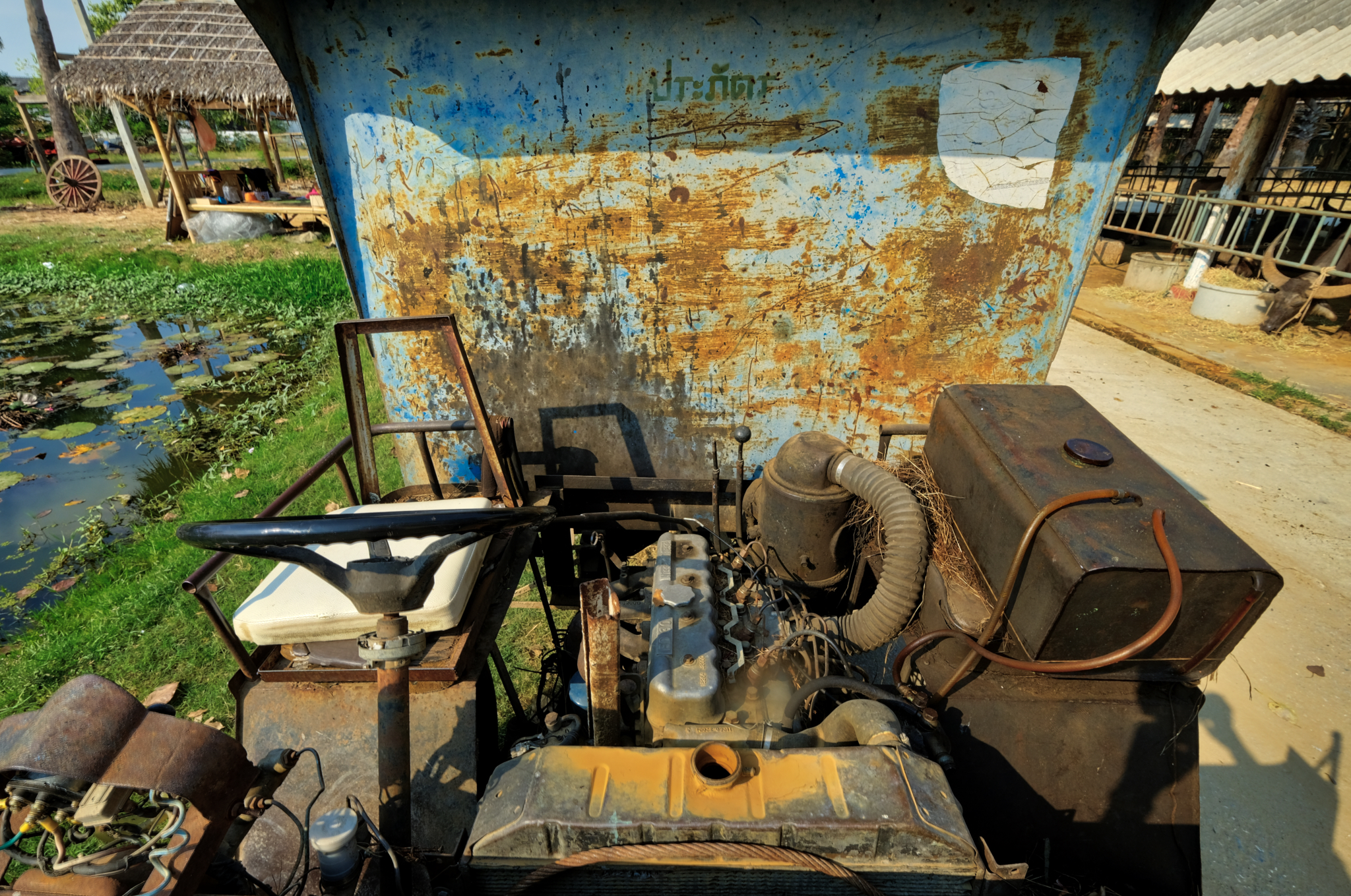 The extreme of utilitarian equipment.
The extreme of utilitarian equipment.
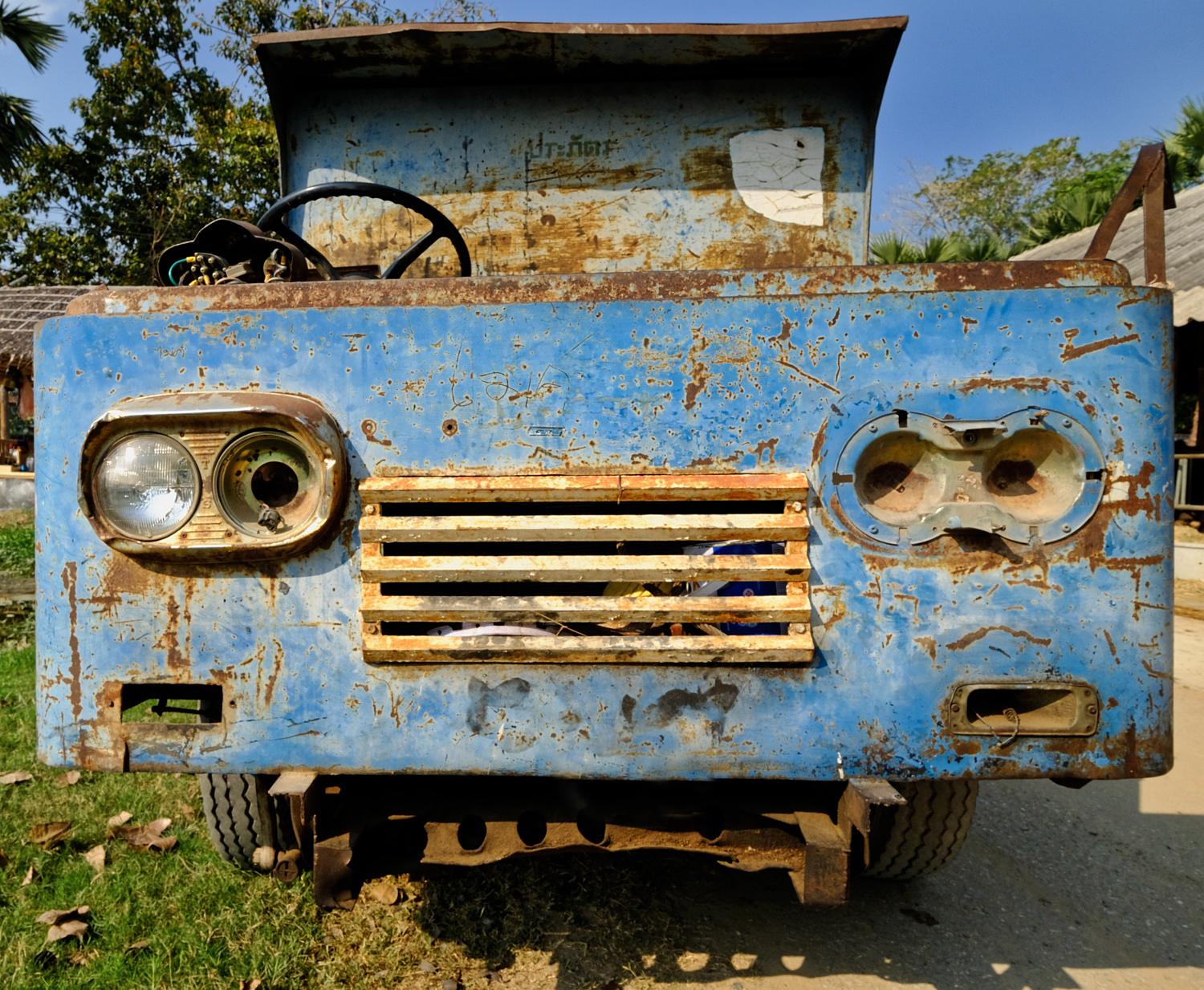 Classic.
Classic.
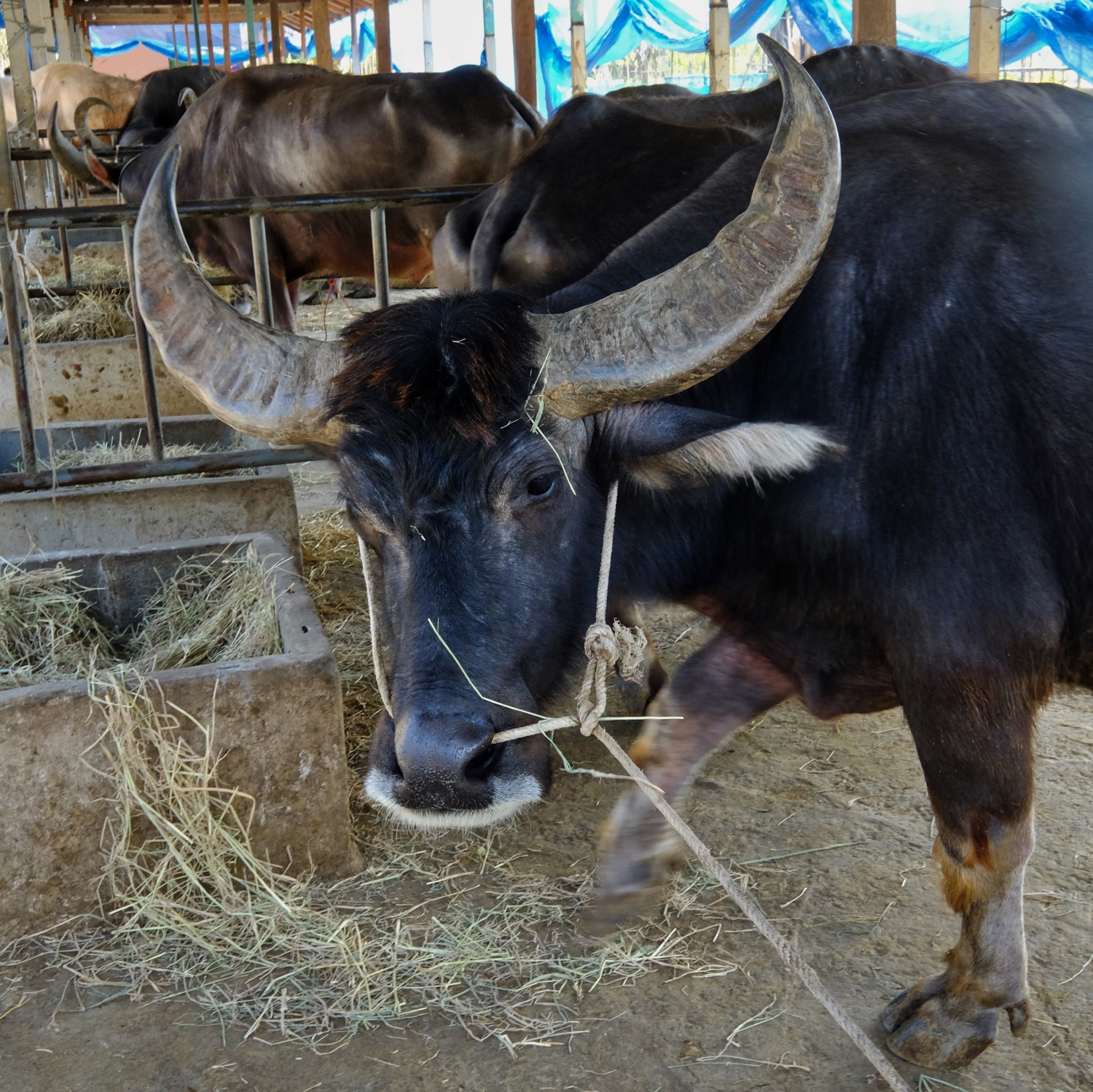 Some of the buffalo were brought into a shed for feeding.
Some of the buffalo were brought into a shed for feeding.
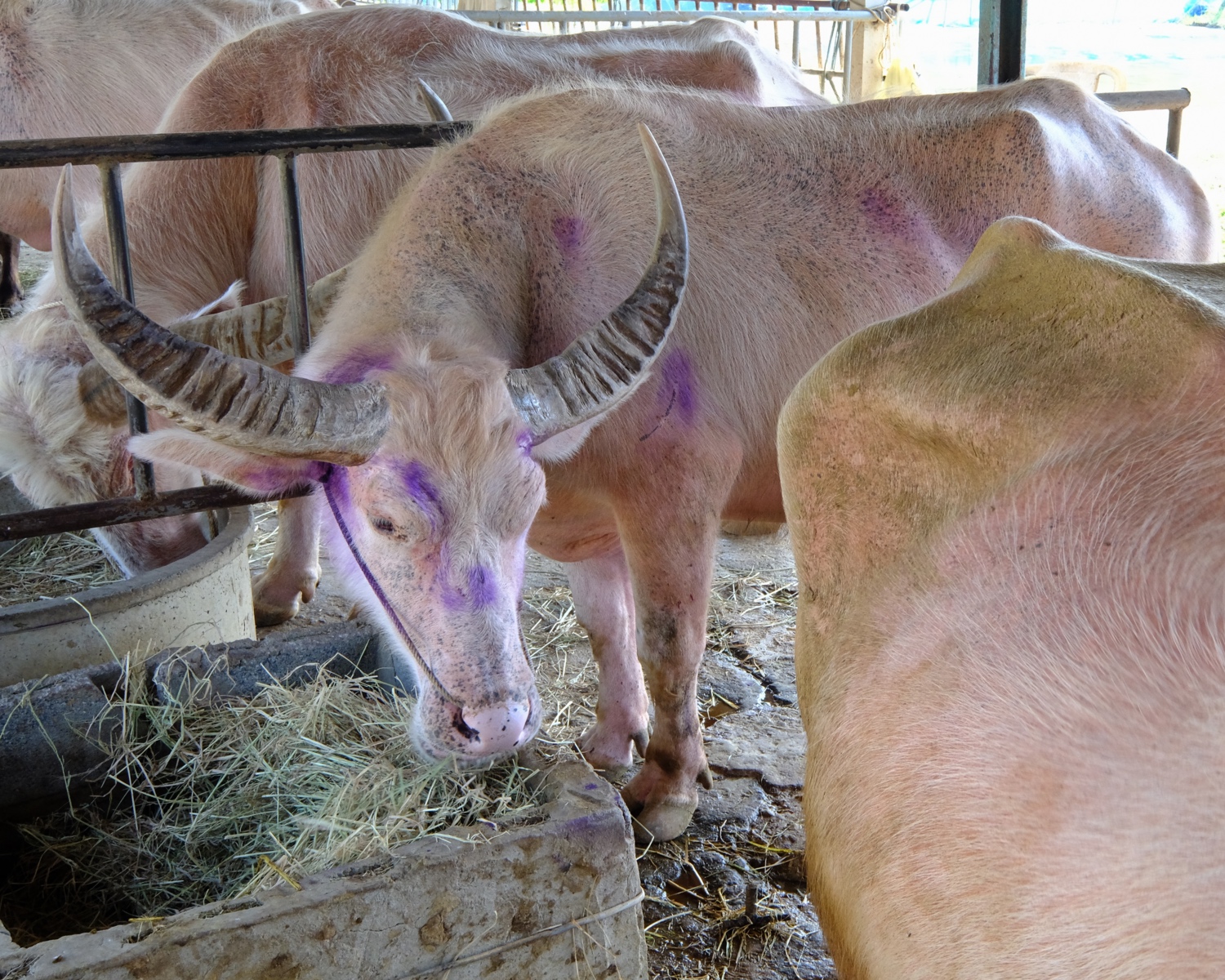 The purple . . . perhaps medical treatment of some kind.
The purple . . . perhaps medical treatment of some kind.
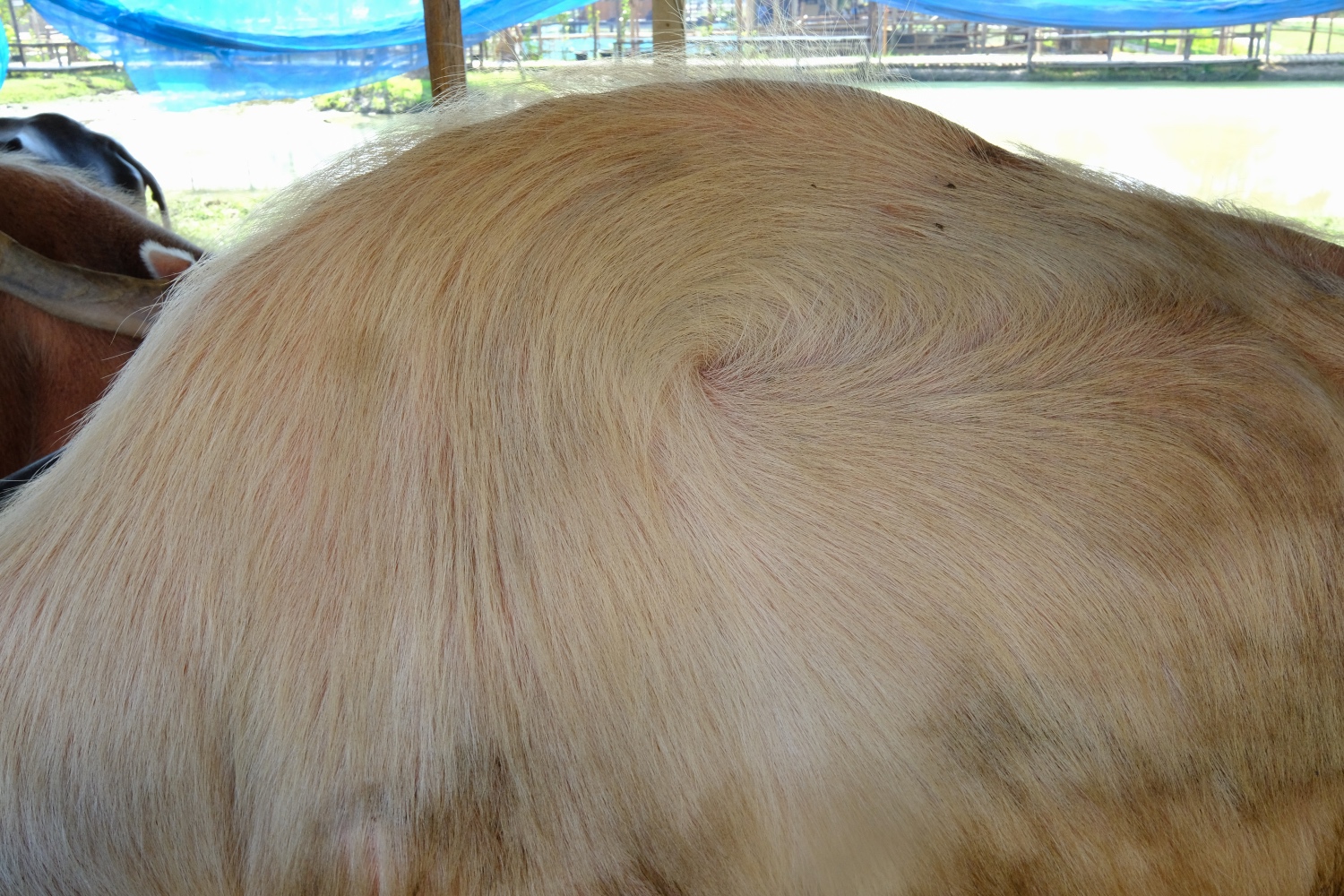 No: not a cowlick . . . a buffalolick!
No: not a cowlick . . . a buffalolick!
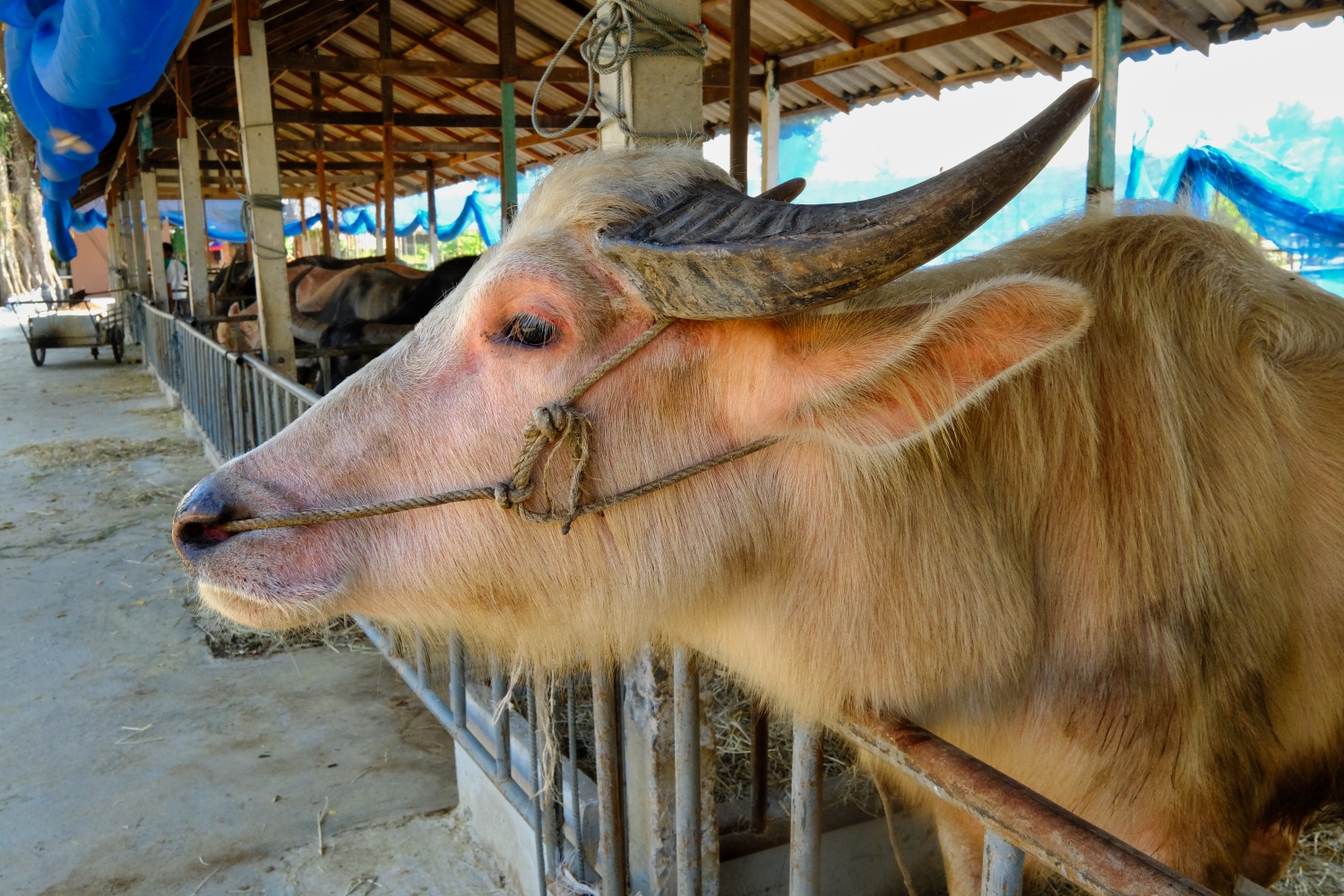 Buffalo are a noble creature . . .
Buffalo are a noble creature . . .
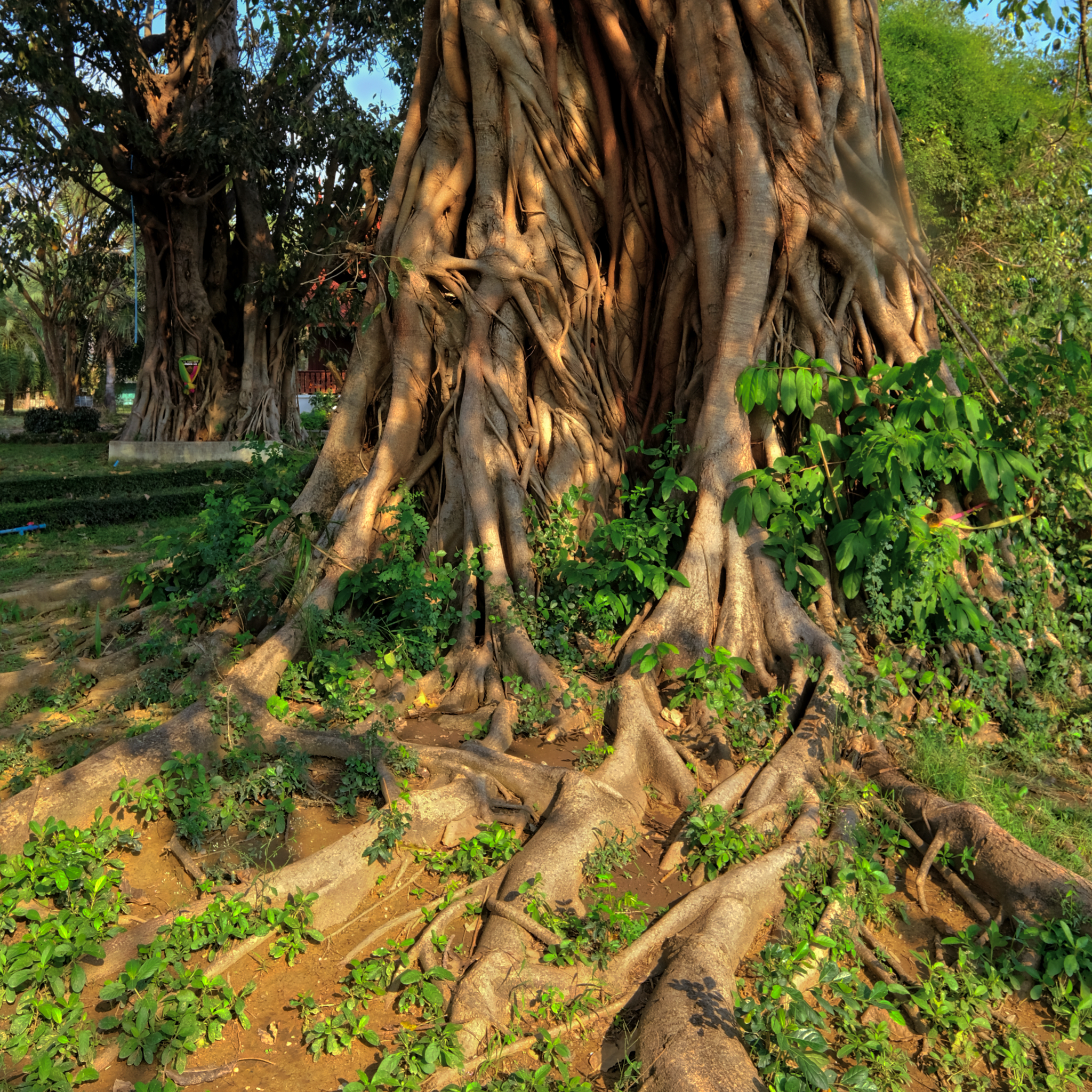 It was a pleasant day for just walking a round. There was always something of interest to see.
It was a pleasant day for just walking a round. There was always something of interest to see.
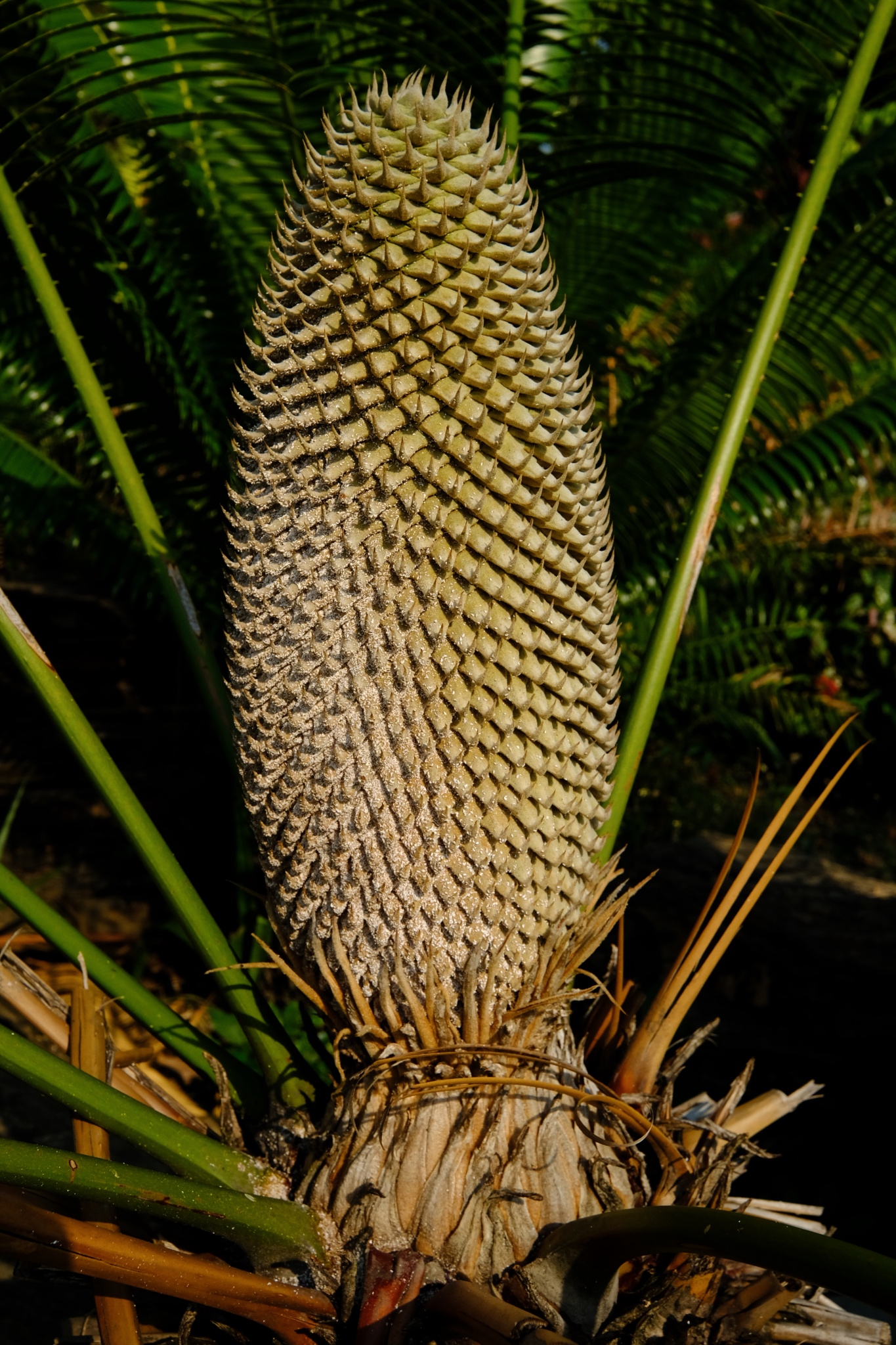 The large seed pod of a fern palm.
The large seed pod of a fern palm.
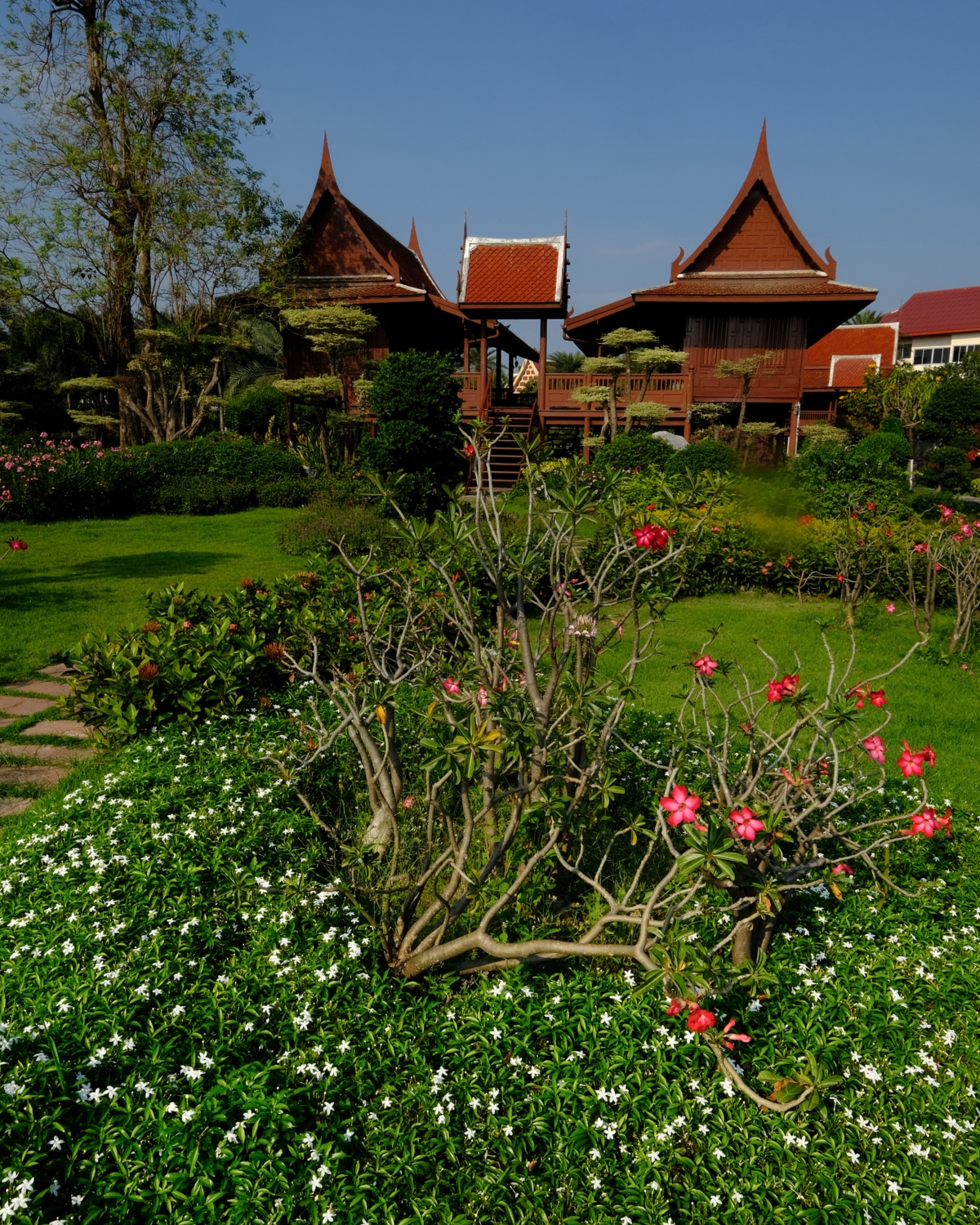 It was the end of the rainy season and everything was looking good.
It was the end of the rainy season and everything was looking good.
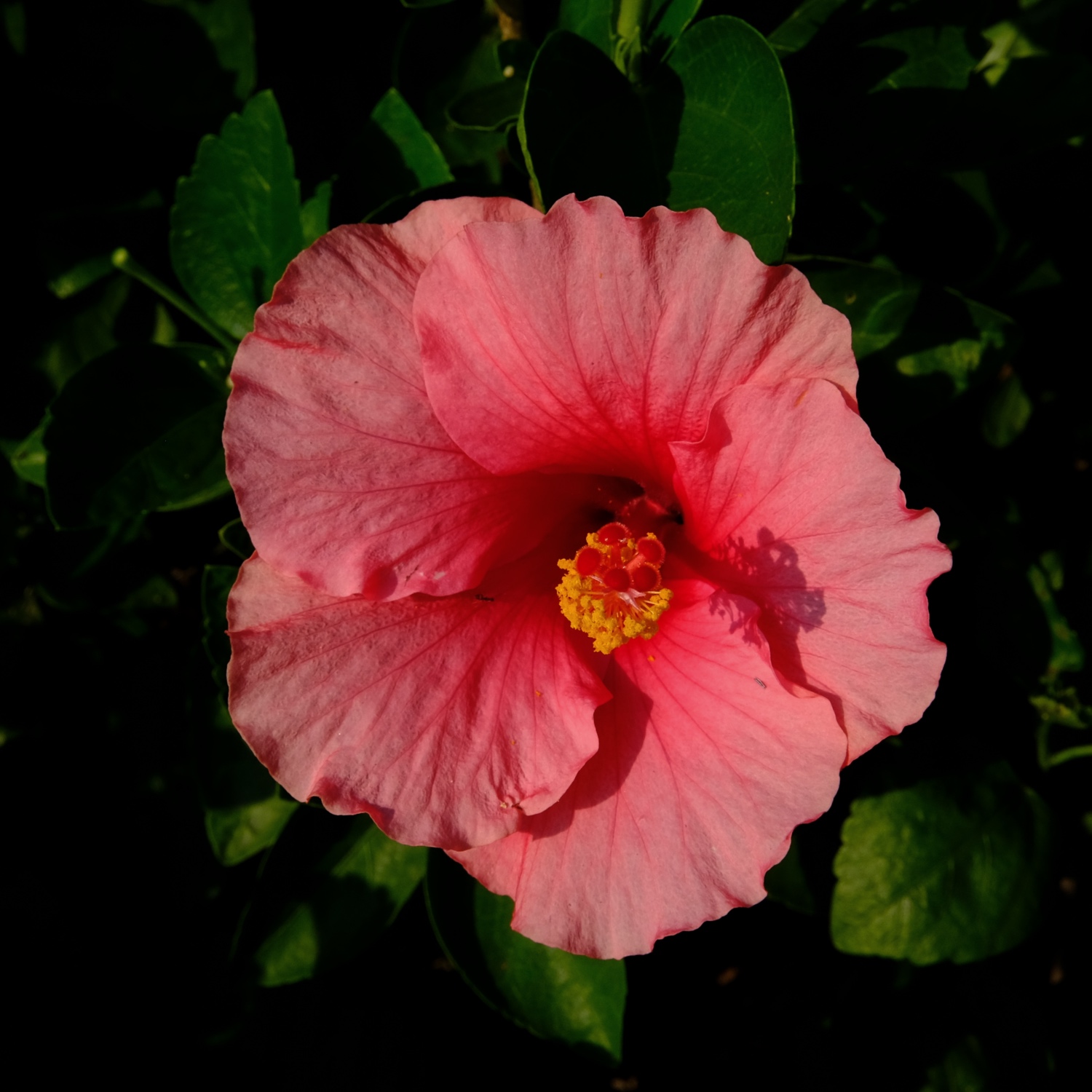 A lovely Hibiscus flower.
A lovely Hibiscus flower.
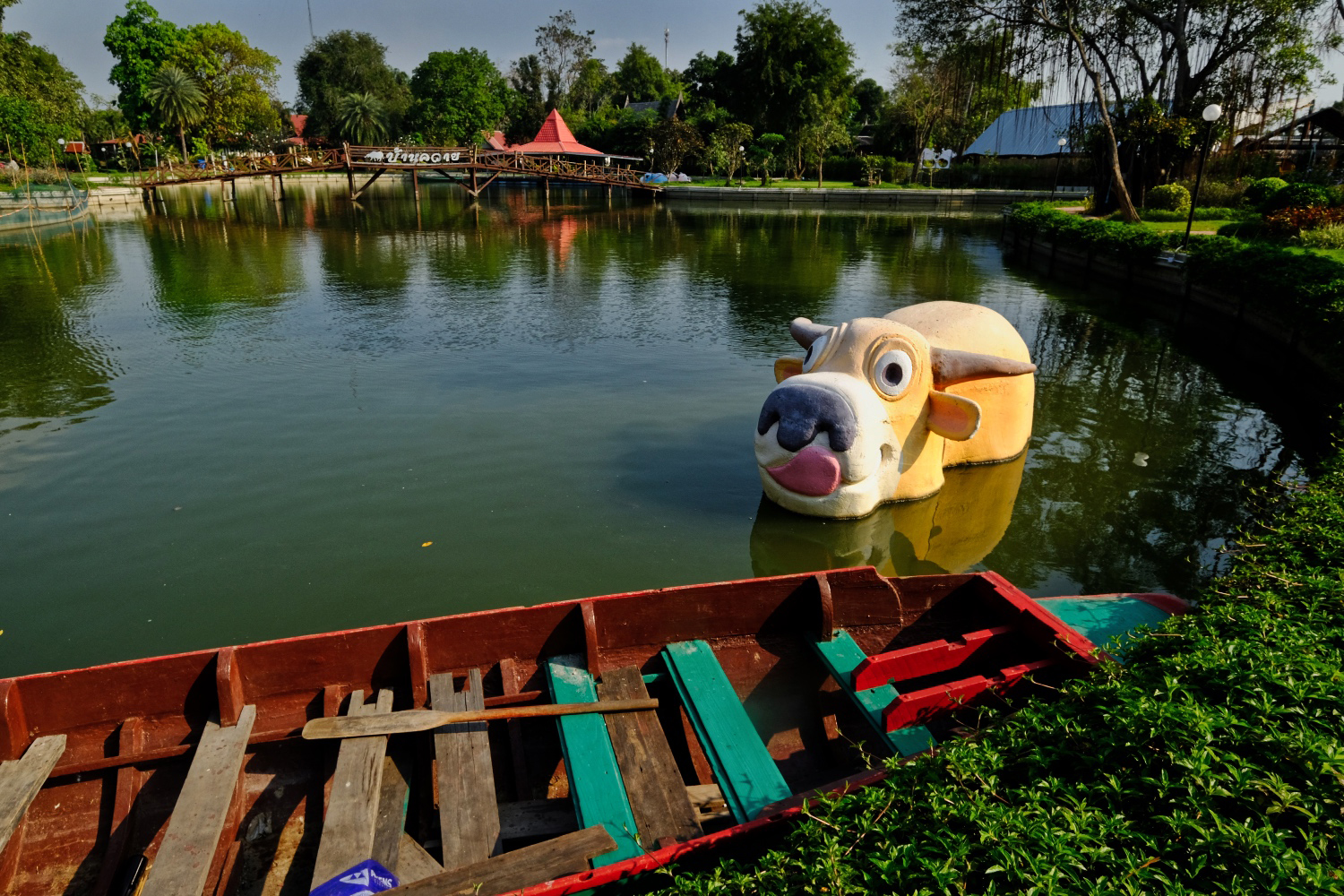 No buffalo park would be complete without a fiberglass replica of a buffalo cartoon character from Thai childrens' TV.
No buffalo park would be complete without a fiberglass replica of a buffalo cartoon character from Thai childrens' TV.
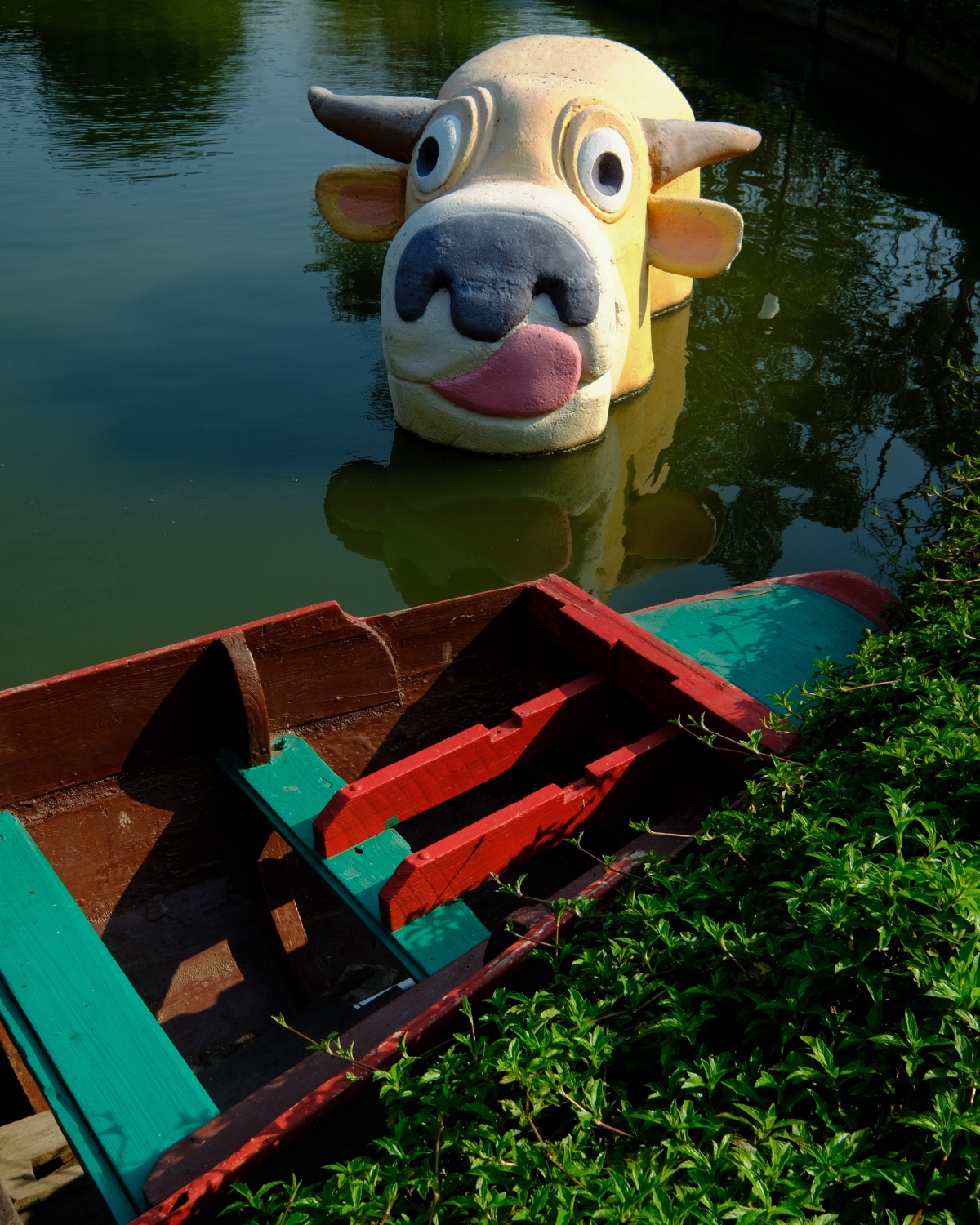 We saw only three other visitors during the hour we spent at the buffalo village. Granted, it was a Monday, but there must be a tourist season. A school teacher friend of mine said that his school takes elementary school kids here by bus once a year . . . .
We saw only three other visitors during the hour we spent at the buffalo village. Granted, it was a Monday, but there must be a tourist season. A school teacher friend of mine said that his school takes elementary school kids here by bus once a year . . . .
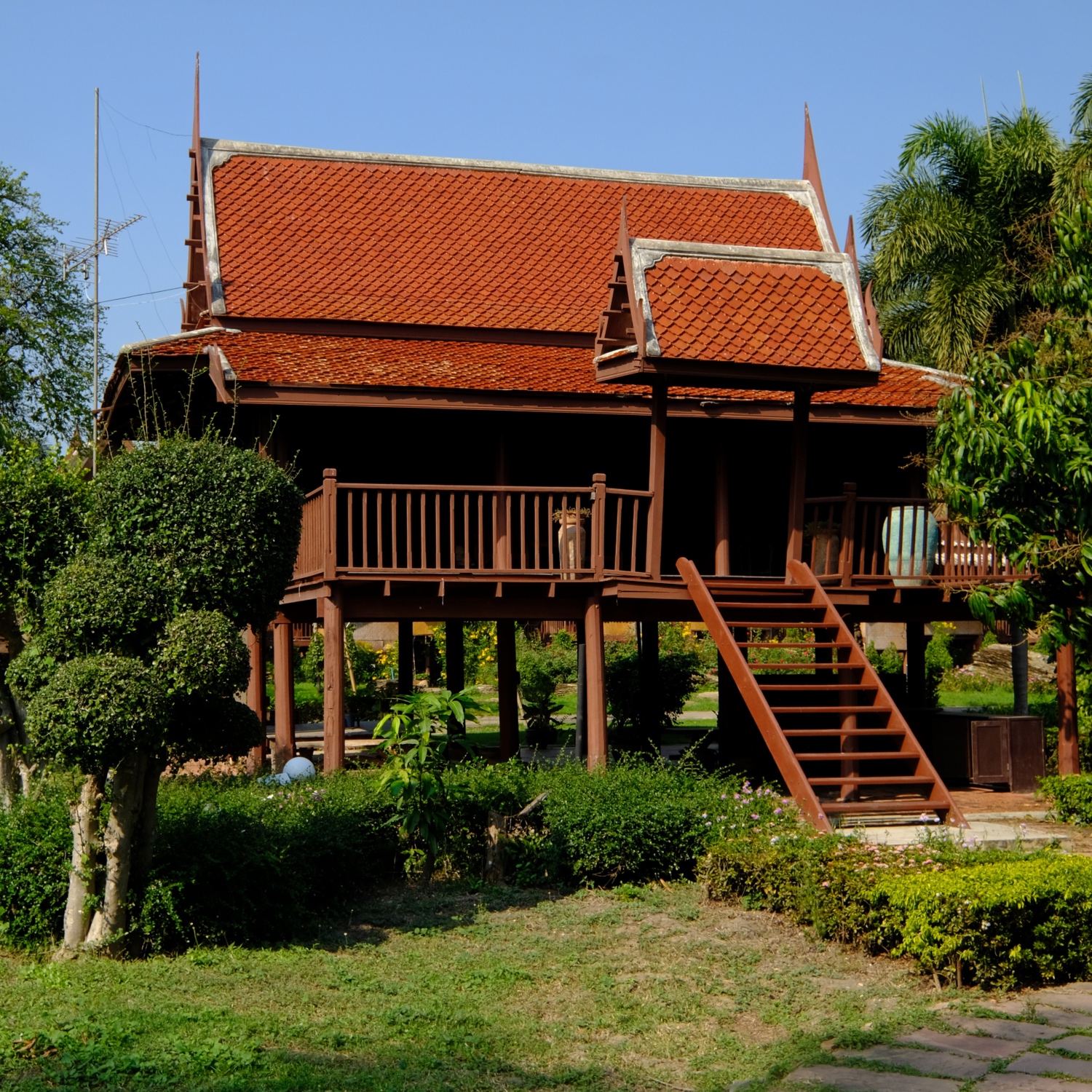 The whole buffalo village was dotted with the fine old Thai style houses. Beautiful.
The whole buffalo village was dotted with the fine old Thai style houses. Beautiful.
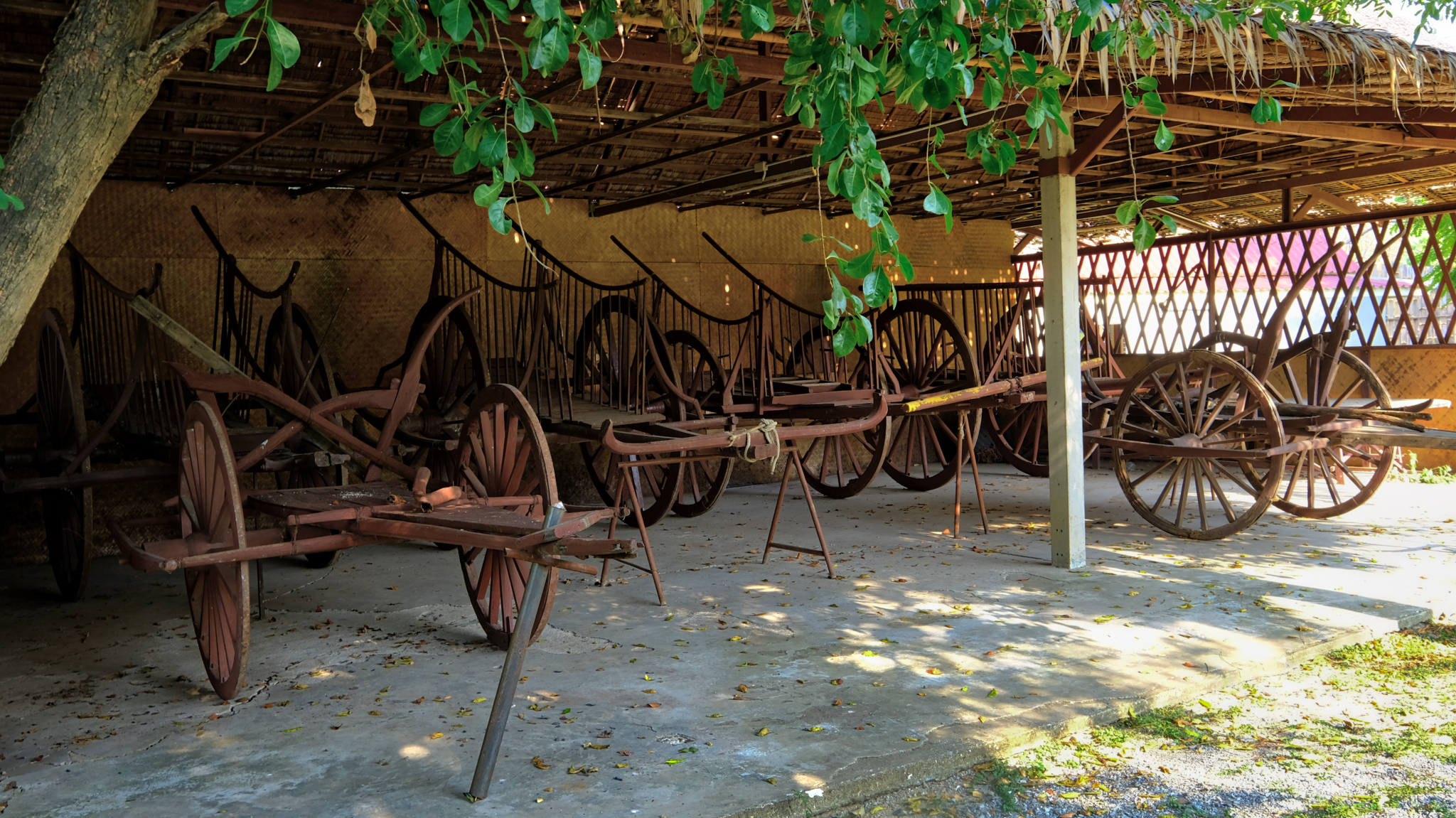 Buffalo pull buffalo carts . . . duh! I was glad to have found this shed containing many very old and restored carts.
Buffalo pull buffalo carts . . . duh! I was glad to have found this shed containing many very old and restored carts.
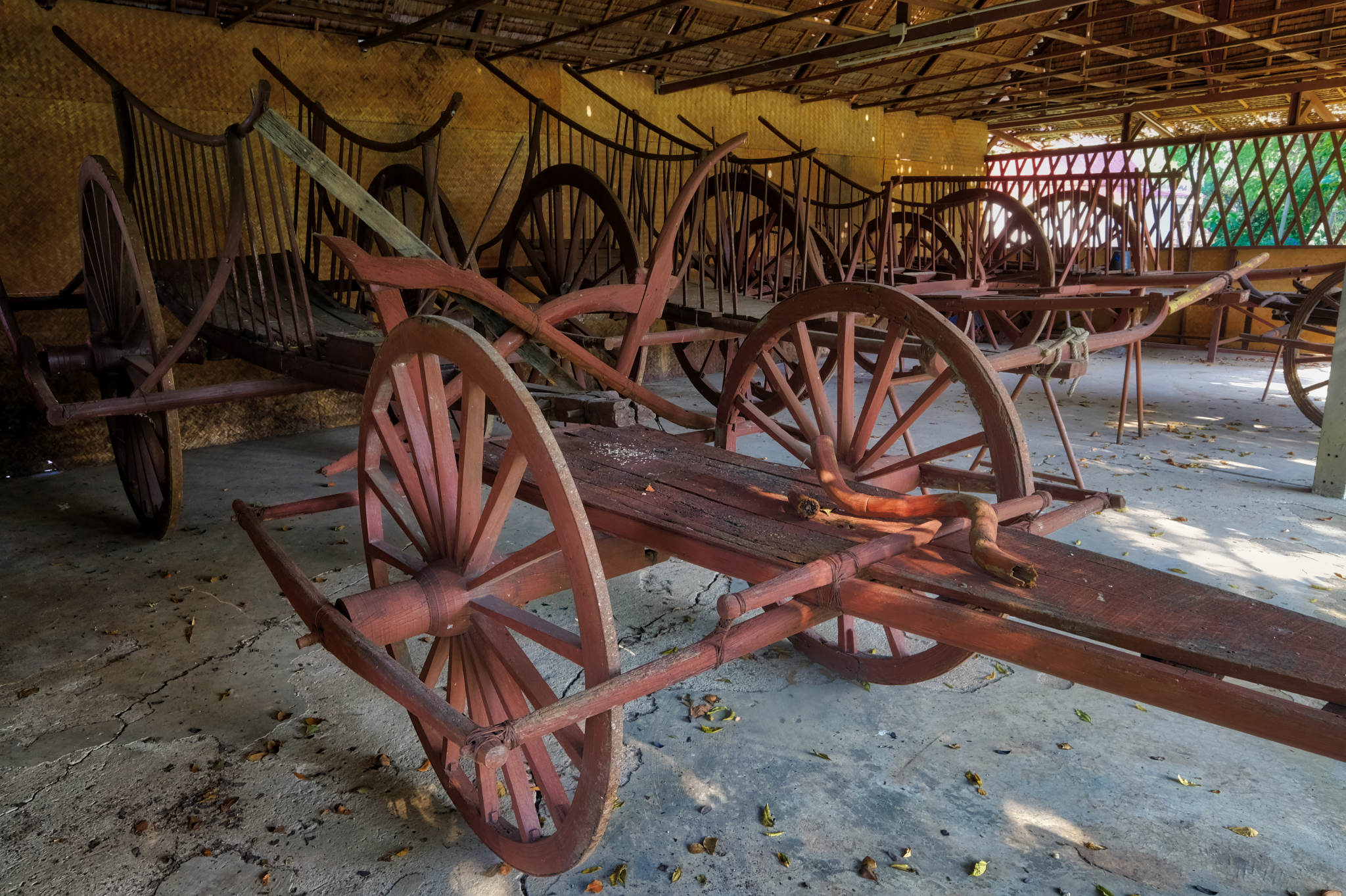 A cart for every purpose.
A cart for every purpose.
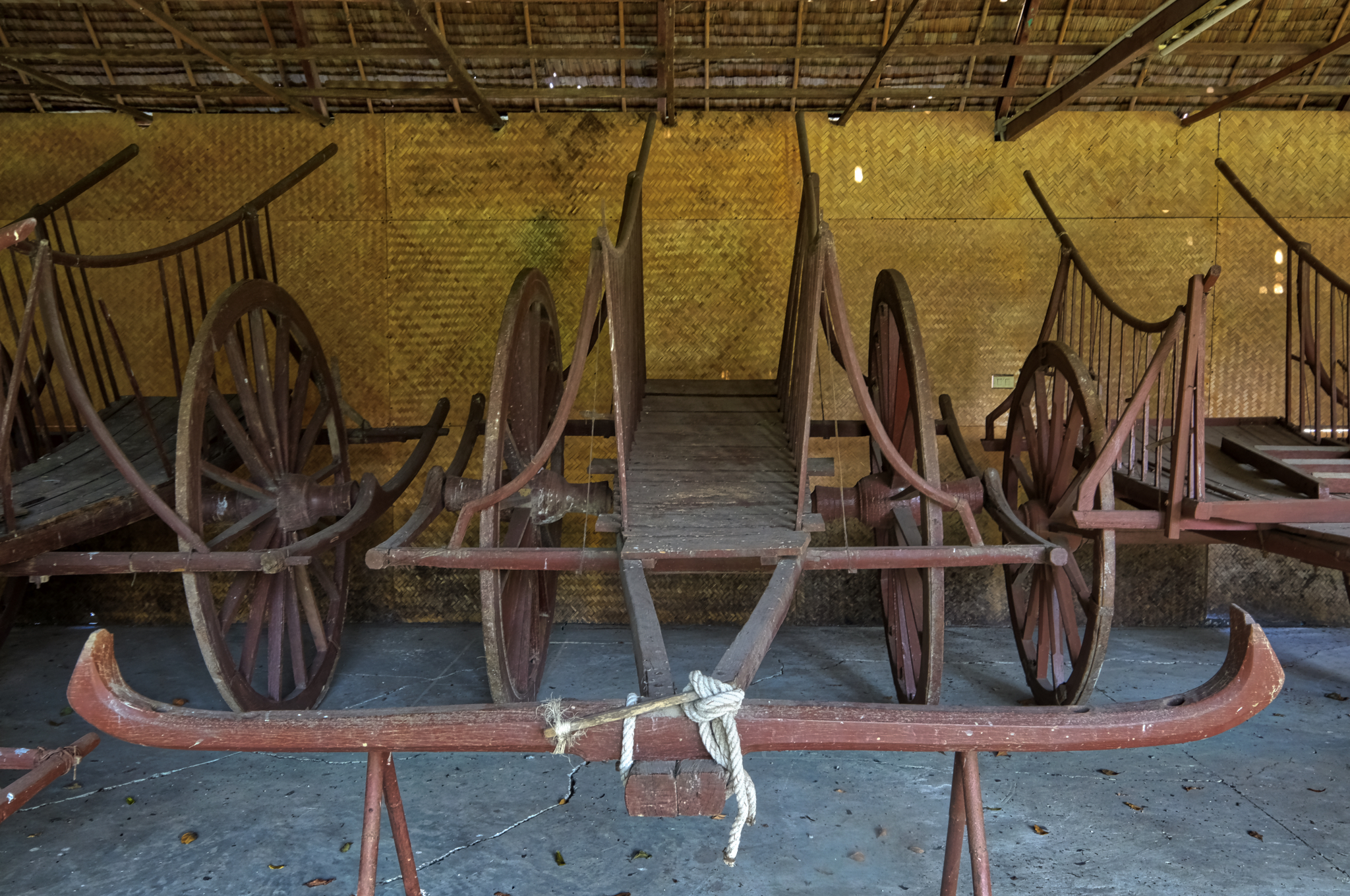 Very simple construction, but strong.
Very simple construction, but strong.
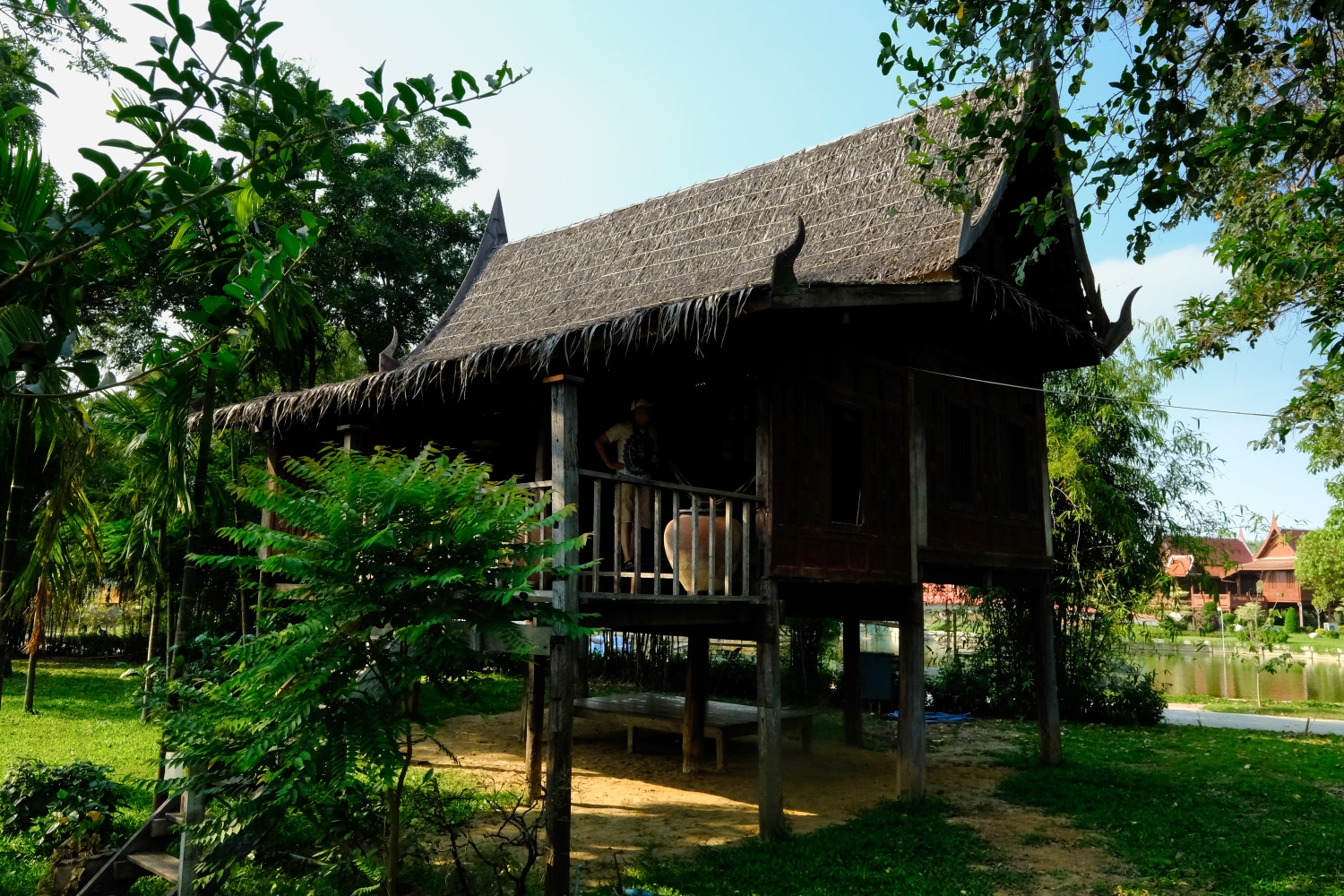 This was a very old Thai house that was open for inspection. We went in and were amazed at what we saw!
This was a very old Thai house that was open for inspection. We went in and were amazed at what we saw!
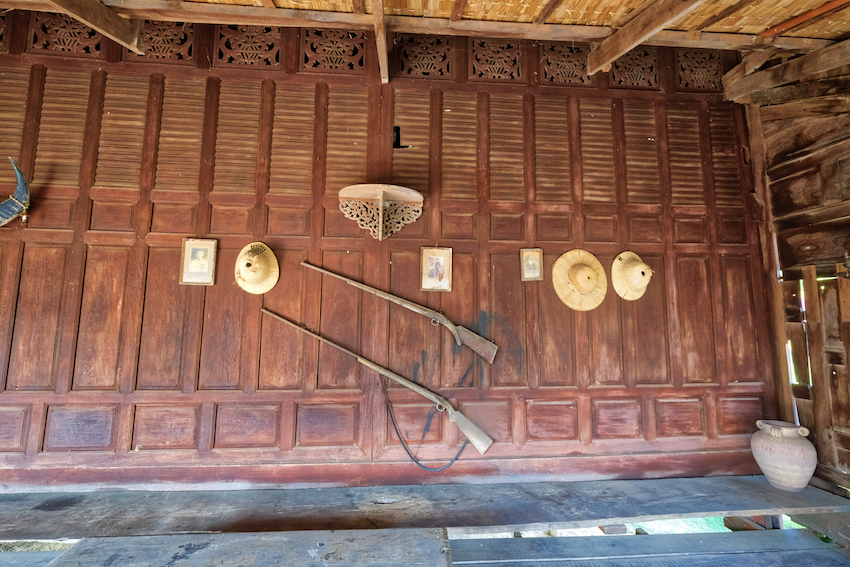 Many old antique items remained in the old farm house.
Many old antique items remained in the old farm house.
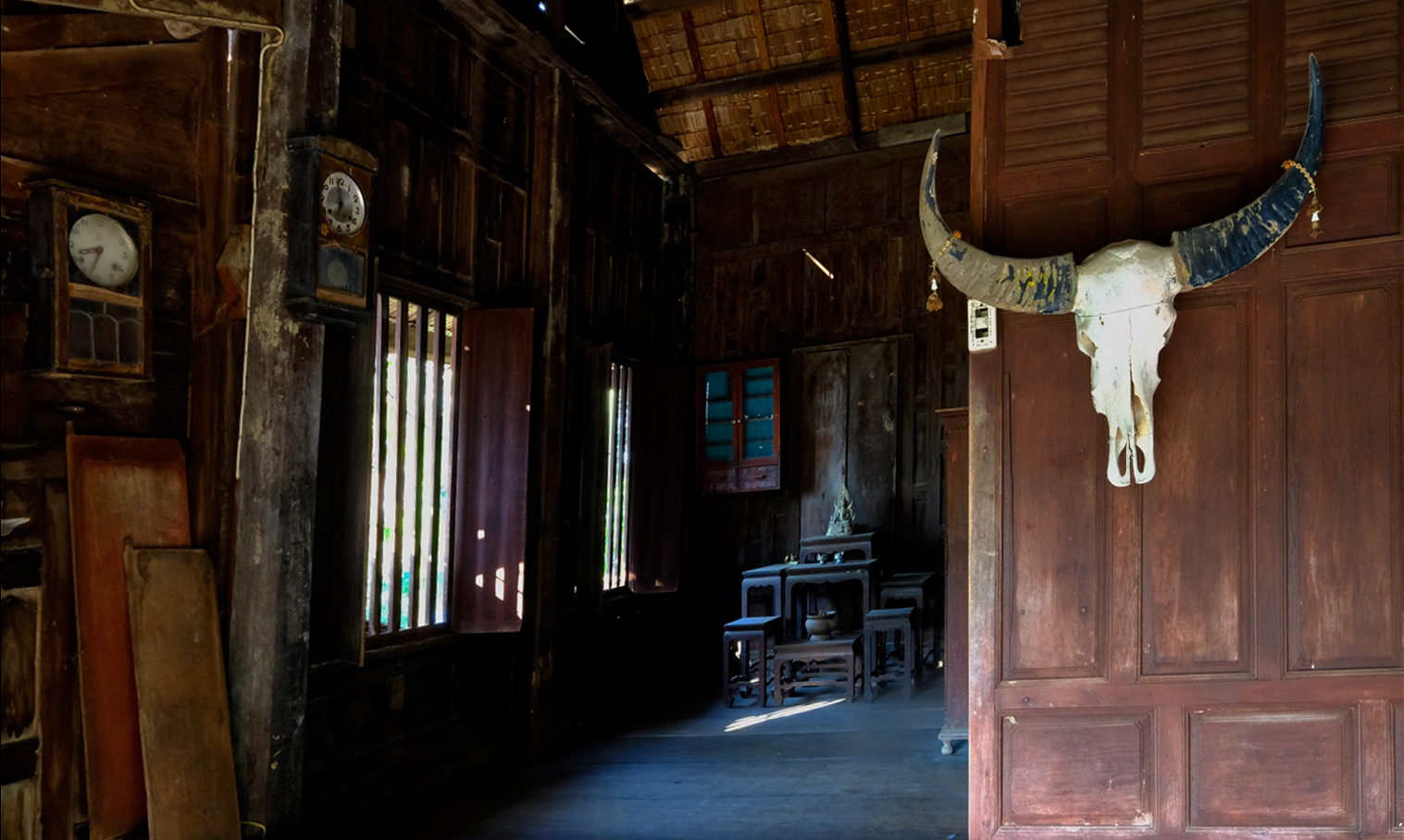 Fantastic light and color inside the old Thai farmhouse.
Fantastic light and color inside the old Thai farmhouse.
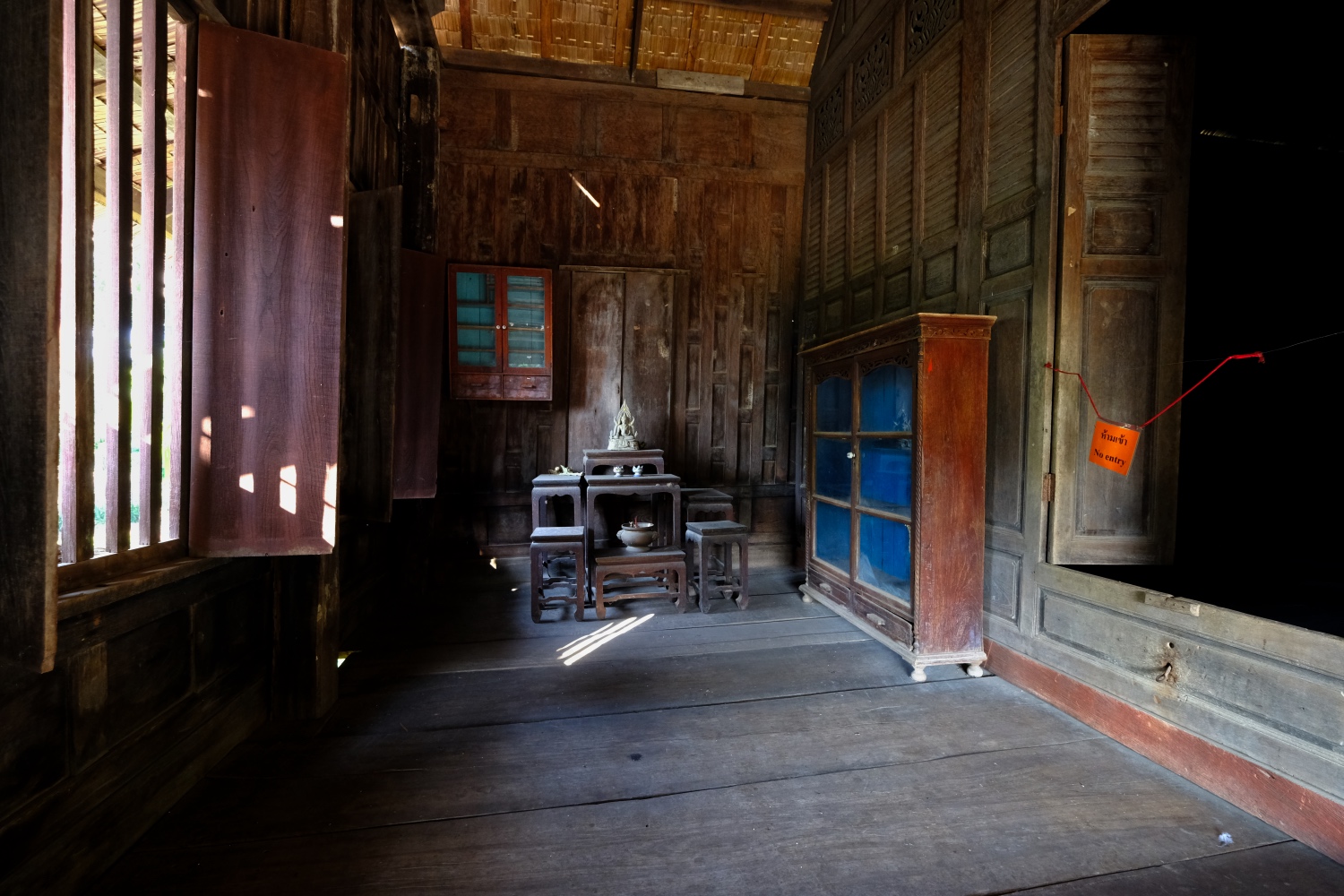 Huge teak planks made up the floor.
Huge teak planks made up the floor.
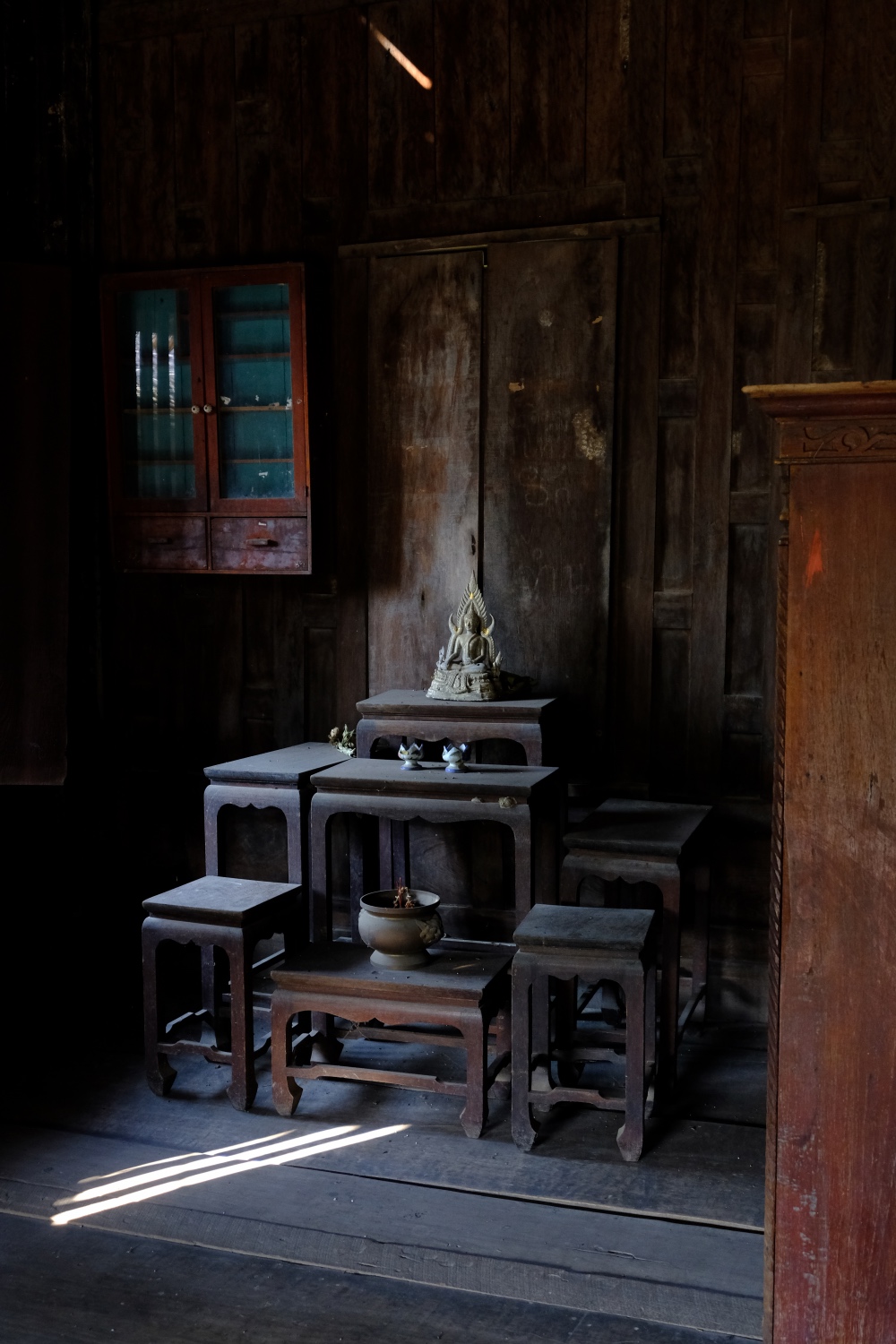 Such quiet spiritual beauty!
Such quiet spiritual beauty!
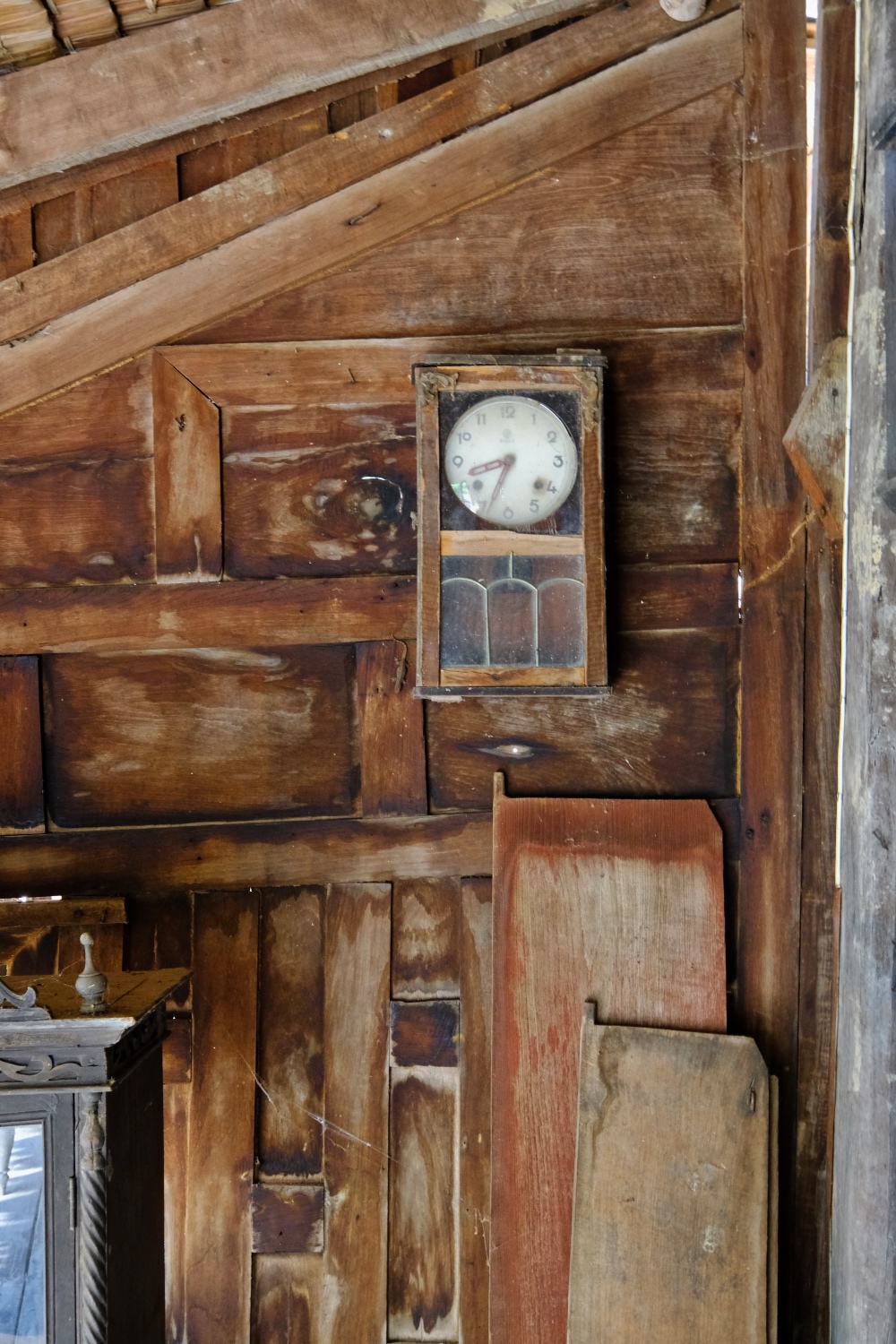 Marvelous light, color, shape, and texture.
Marvelous light, color, shape, and texture.
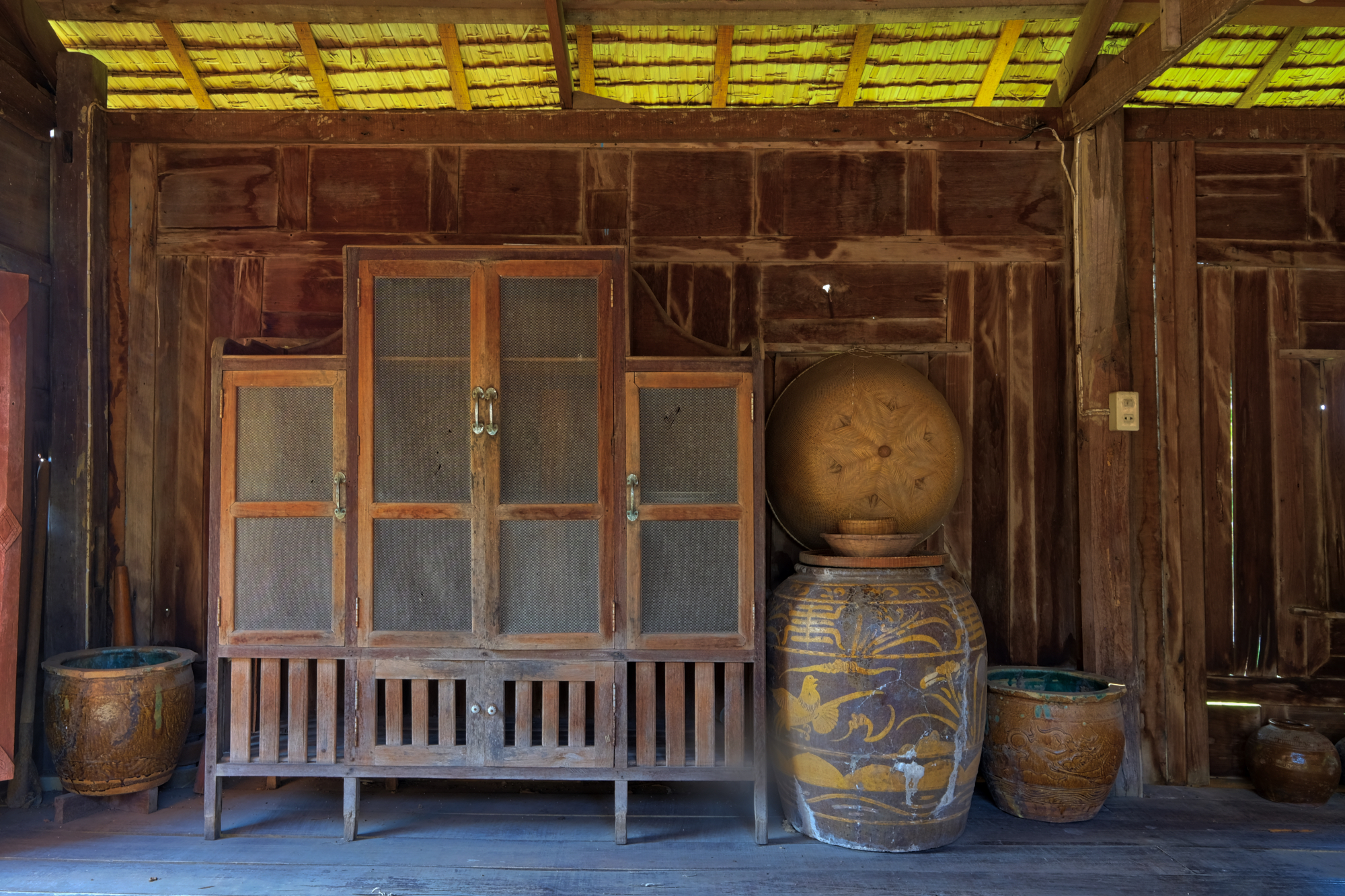 Every wall, every room . . . held visual marvels!
Every wall, every room . . . held visual marvels!
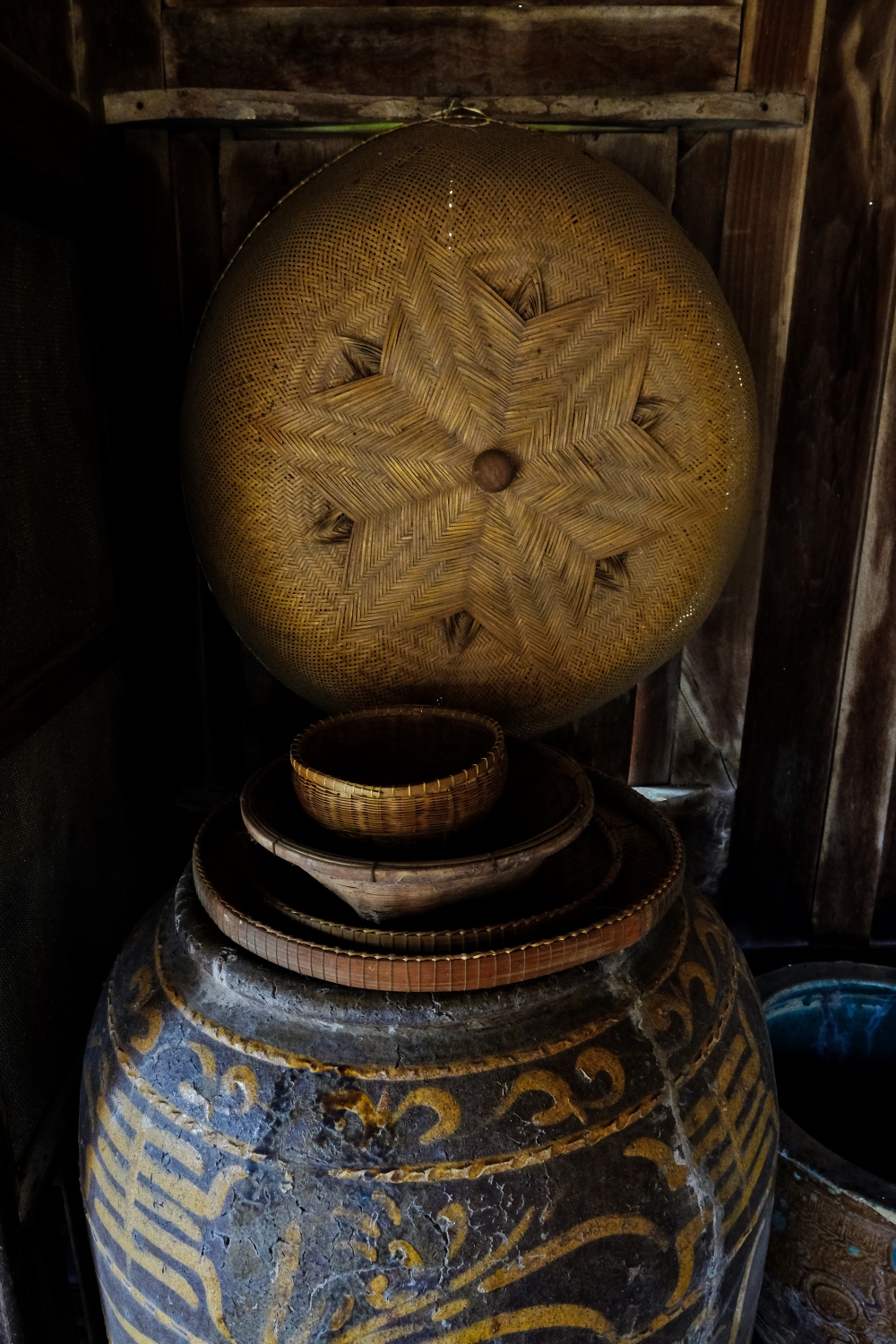 A perfect still life study wherever I looked.
A perfect still life study wherever I looked.
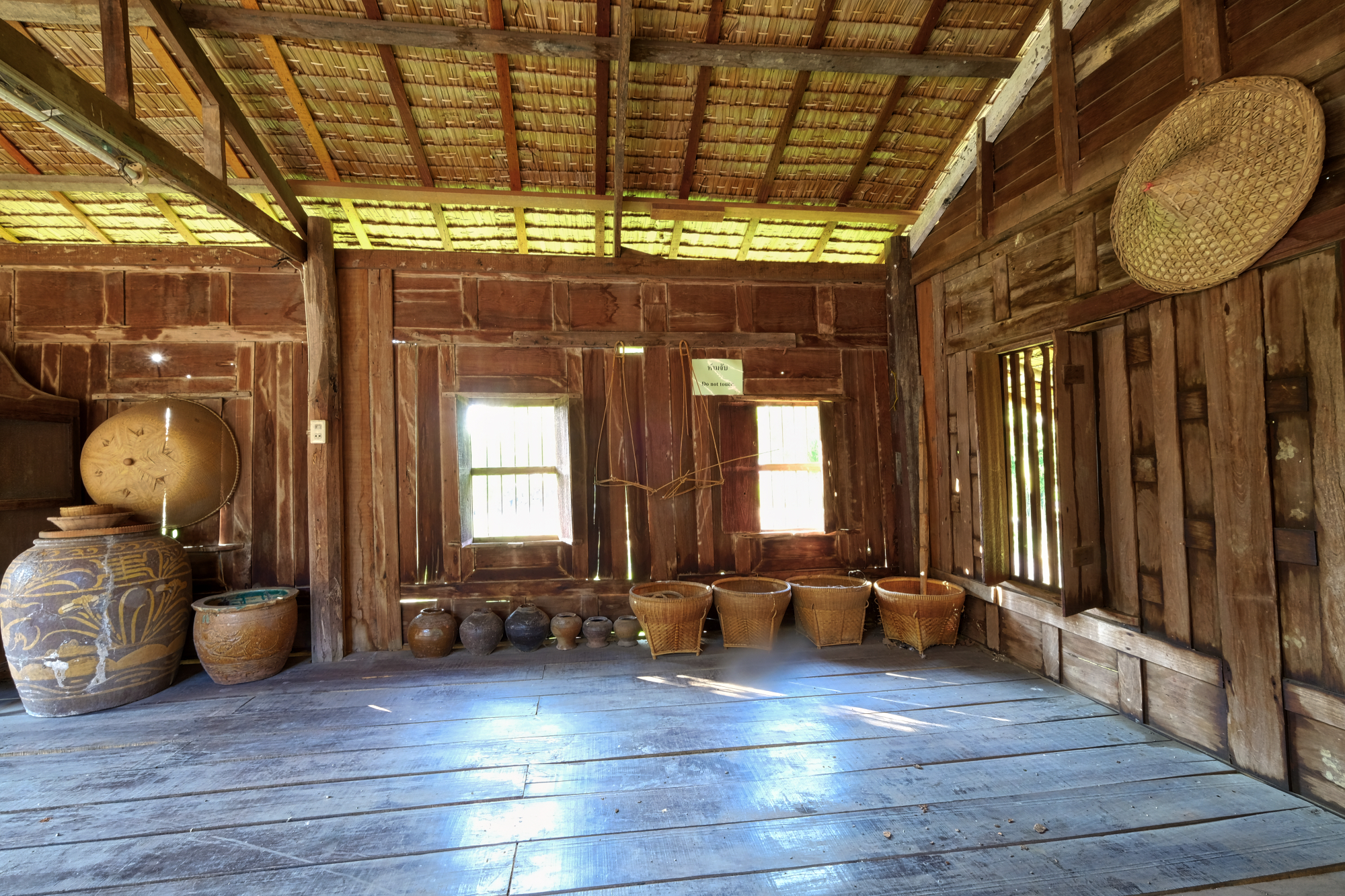 A collection of things one might find in an old Thai farmhouse.
A collection of things one might find in an old Thai farmhouse.
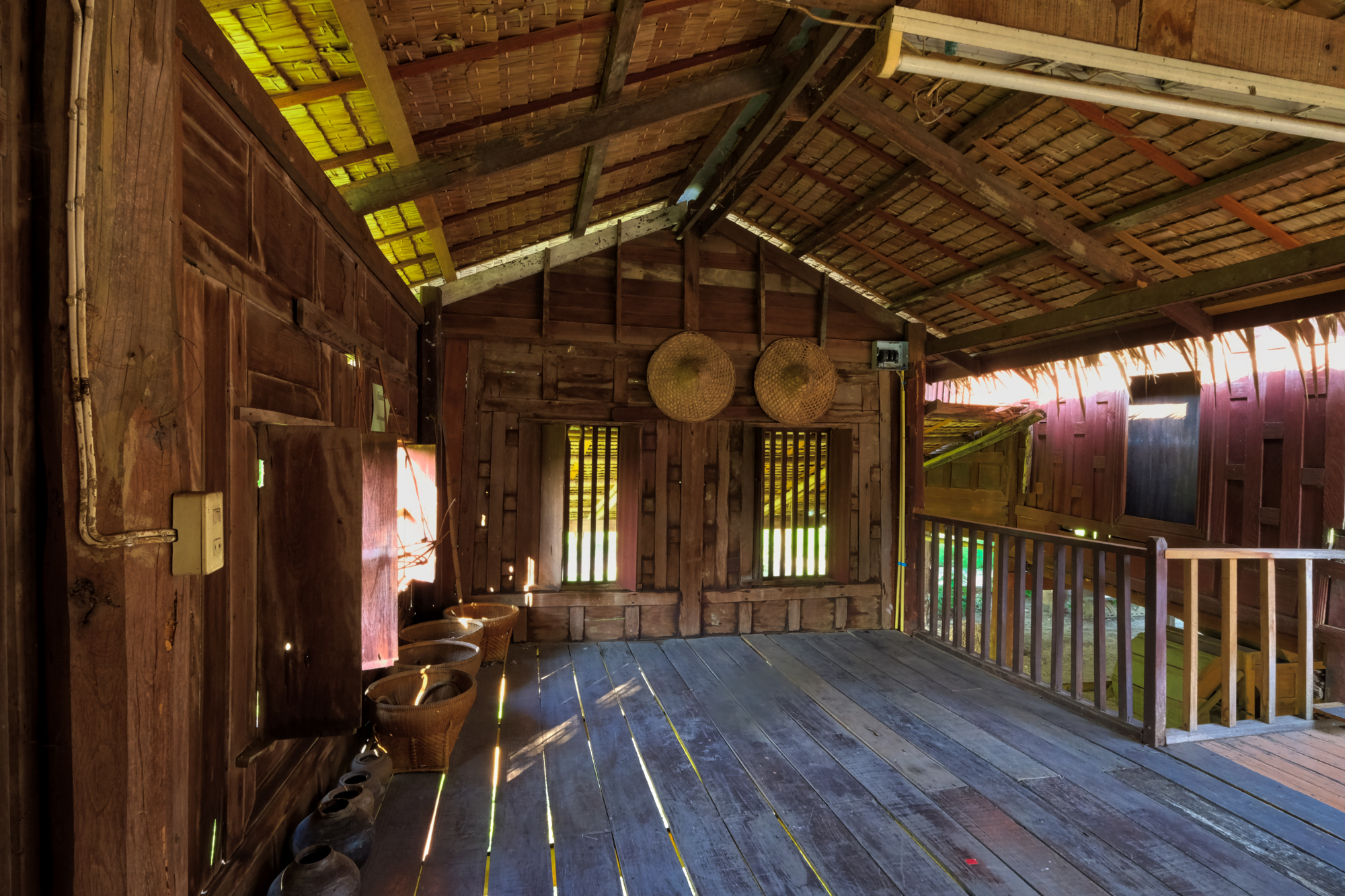 Parts of the old farmhouse were open to the outside . . . it is the tropics, so no need for heating . . . most likely the open kitchen area.
Parts of the old farmhouse were open to the outside . . . it is the tropics, so no need for heating . . . most likely the open kitchen area.
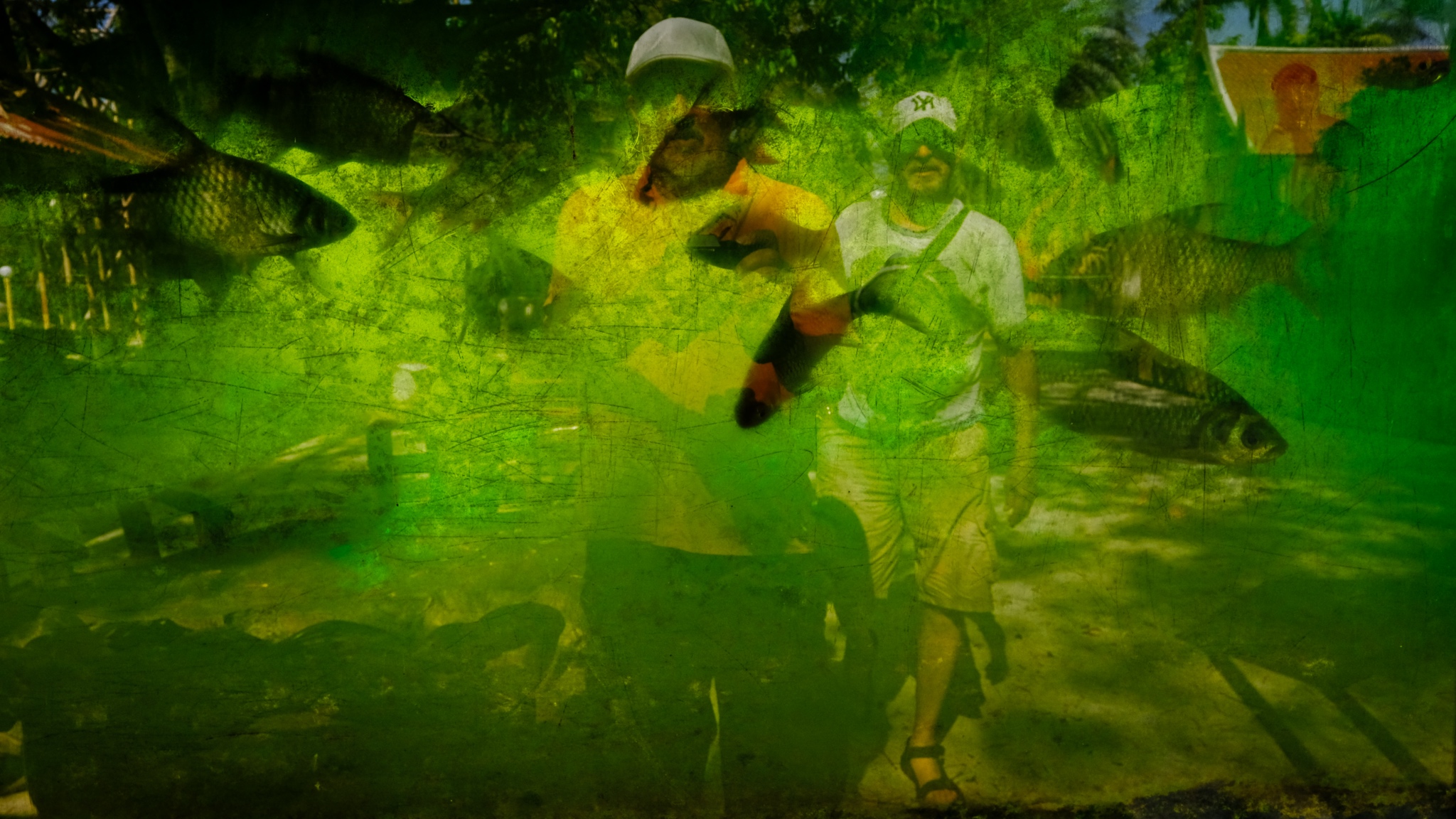 As we were leaving Baan Kwai, we couldn't help but notice a large fish tank . . . with fantastic reflections . . . of us! Bizarre selfie opportunities like this do not come along all that often.
As we were leaving Baan Kwai, we couldn't help but notice a large fish tank . . . with fantastic reflections . . . of us! Bizarre selfie opportunities like this do not come along all that often.
